Europe Travel by Car: How to Plan Your Europe Road Trip in 2023

Looking for a guide on how to plan your Europe travel by car? Our ultimate guide provides essential tips, must-visit destinations, and cross-border regulations for your travel needs.
Europe is a continent that is rich in history, culture, and natural beauty. It is a place that is best explored at your own pace, with the freedom to stop whenever you want to take in the breathtaking views and landmarks along the way. And what better way to do that than by planning a road trip across Europe?
Europe travel by car allows you to experience the charm of small towns, countryside landscapes, and other hidden gems often missed when traveling via public transport or plane. One of the key advantages of embarking on a Europe road trip is the ability to see more than one country during your travels.
You can explore different cultures and cuisines while driving from one country to another. The continent has an excellent network of roads and highways connecting major cities and smaller towns and villages.
With good planning and organization, you can cover several countries in a single trip or spend more time exploring one particular region in depth. Moreover, Europe travel by car offers flexibility in terms of timing – you can decide when to start your journey or make stops along the route without being bound by transportation schedules.
🛏️ Book your hotel ahead of time to get the best deals, click here to find the best hotels to stay !
🧳 One of the best way to explore a new destination stress-free is through guided tours! Check this out to find the best tours at affordable prices .
Follow me on Instagram and Tiktok for more Finland and Europe travel tips ! 🏕️🏕️🏕️
Do you need help planning your trips? Start here!
❗️Be insured before your trip and get a SafetyWing FREE insurance quote 📚 Read our post about why you should always have insurance ✈️ Find out how to find cheap flights using Skyscanner or find deals now 🛌🏻 Book your accommodation through Booking.com 🎭 Find awesome and hassle-free tours through GetYourGuide 🚘 Explore Europe on an epic road trip with Discover Cars
Table of Contents


A Guide on How to Plan Your Europe Travel by Car
The unparalleled joy of self-driving vacations in Europe cannot be overstated. The freedom of the open road, the ability to stop and explore at will, and the chance to take in breathtaking scenery are all key reasons why Europe travel by car is an experience unlike any other.
For adventurers who yearn for a unique and unforgettable way to experience the beauty of this fascinating continent, a road trip across Europe is a must. Key advantages of exploring Europe by car include giving travelers complete control over their itinerary.
You can choose your own pace, make impromptu stops, and even change your route as you go along. Road trips in Europe also allow travelers to immerse themselves in the local culture at their own leisurely pace; whether it’s sampling regional wines or indulging in local cuisine, there’s no better way to get a true sense of European life than by hitting the open road.
And with so many picturesque towns and hidden gems scattered throughout the continent, something new and exciting is always waiting to be discovered on a Europe road trip. Of course, planning a successful European road trip requires careful preparation.
One of the most critical aspects is thorough route planning. This means considering factors such as distance, driving hours per day (and taking breaks!), and ensuring you have time for stops at top European sights and off-the-beaten-path destinations.
Choosing the right vehicle for your adventure is important; do you want to rent or bring your own? Will you need something fuel-efficient or with all-wheel drive?
Getting proper documentation sorted out beforehand is also crucial – remember insurance! With so many things to consider before embarking on an epic tour across Europe by car, it’s essential to plan carefully but leave some room for spontaneity, too — after all, isn’t that what makes travel fun?
The unparalleled joy of self-driving vacations in Europe
The unparalleled joy of self-driving vacations in Europe is something that every traveler needs to experience at least once in their lifetime. There’s just something special about hitting the open road and exploring the stunning scenery, quaint villages, and vibrant cities that make up this incredible continent. With so much to see and do, it’s no wonder that Europe travel by car has become increasingly popular over the years.
One of the biggest advantages of embarking on a Europe road trip is its freedom and flexibility. Unlike other modes of transportation, you can decide where you go, how long you stay there, and what route you take.
This allows you to fully immerse yourself in each destination without feeling rushed or constrained by schedules or tour groups. Plus, with so many hidden gems and off-the-beaten-path locations waiting to be discovered all across Europe, having your own set of wheels gives you access to places that might otherwise be difficult (if possible) to reach via public transportation or walking tours.
Another major perk of Europe travel by car is the sense of adventure it provides. Whether navigating winding mountain roads or cruising along scenic coastal highways, every turn can bring a new surprise or breathtaking view.
Plus, there’s something undeniably satisfying about reaching a destination after tackling a challenging drive – it feels like an accomplishment in its own right! So if you’re looking for an unforgettable way to experience Europe, consider hitting the road on your next vacation – who knows what amazing sights (and memories) await!
Key advantages of exploring Europe by car
Exploring Europe by car is one of the most exhilarating experiences a traveler can undertake. There are several key advantages to a road trip in Europe, including the freedom to travel at your own pace, the ability to visit off-the-beaten-path destinations, and the flexibility to adjust your itinerary. With some planning, a European road trip can be an unforgettable adventure.
One of the biggest advantages of traveling by car in Europe is the freedom it allows. Unlike train or bus travel, driving gives you complete control over your schedule and allows you to stop and explore at your leisure.
Whether you want to detour through the picturesque countryside or spend an extra day in a charming small town, having your own vehicle means you can do so without worrying about missing connections or adhering to strict schedules. Additionally, European road trips offer unparalleled flexibility when deciding how long you want to stay in each destination; if you fall in love with a particular place along the way, there’s no need to rush off before you’re ready.
Another advantage of exploring Europe by car is that it allows visitors access to some truly exceptional destinations that might be challenging (or even possible) to reach via public transportation. From tiny hilltop villages in Tuscany and hidden beaches on Croatia’s coast, driving gives travelers access to hidden gems that other tourists may never see.
Not only does this make for a more immersive travel experience, but it also means that visitors have opportunities for unique and unforgettable experiences they might not otherwise get. And if adventure is what you seek – exploring remote roads across rugged mountain ranges or winding coastal highways – there’s no better way than taking an epic road trip across Europe.
Essential Tips for Planning a European Road Trip
Planning a European road trip requires careful preparation to maximize your adventure. Before starting your journey, consider the best times of year to visit Europe and key factors like distance, driving hours, and stopovers.
Best times of the year for a road trip across Europe
The best times of the year for a road trip across Europe vary depending on your preferences and priorities. If you’re looking for mild weather and fewer crowds, spring (March to May) and fall (September to November) are ideal. The landscapes are lush and colorful during these seasons, creating great photo opportunities.
The roads are less congested so you can enjoy your Europe road trip more leisurely. However, if you prefer long days of sunshine and warm temperatures that allow you to swim in the sea or visit outdoor attractions such as parks or beaches, then summer (June to August) is your best bet.
This is also peak season for European tourism, so expect higher prices and larger crowds on popular routes. Conversely, if you’re on a budget or want to avoid touristy areas altogether, winter (December to February) can be a good option — as long as you don’t mind driving in snow or rain.
Some regions may also have limited opening hours during this time of year due to weather conditions. Ultimately, the best time of year for a road trip in Europe depends on what type of experience you’re looking for.
Do you prioritize comfortable weather or empty roads? Are there any cultural festivals or events that interest you?
Plan around those factors while being open-minded enough to adapt your itinerary. Remember: flexibility is key when it comes to road trips across Europe!
The importance of thorough route planning
A Europe road trip can be the ultimate adventure for travelers looking to experience the continent’s rich history, stunning landscapes, and diverse cultures. To make the most of your journey, thorough route planning is essential.
1. Considering factors such as distance, driving hours, and stopovers
When planning a road trip through Europe, several factors must be considered. The first and most essential factor is the distance between your starting point and destination.
While it may be tempting to cover as many countries as possible in one trip, realistically, you must account for driving hours before making any concrete plans. In Europe, the roads are generally excellent, but traffic can be unpredictable.
Plan your route carefully to avoid traffic jams and other delays that could hinder your journey. Depending on how long you plan to travel each day, consider scheduling stopovers to rest or explore some of the beautiful towns in Europe.
This will help break up the long drives and make them more enjoyable for everyone involved in the trip. These small towns offer a glimpse into local culture; they have cafes with delicious food and drinks, cozy accommodations with comfortable beds, and breathtaking views of European landscapes.
Another aspect that you might overlook when planning a road trip in Europe is the duration of driving hours each day. Long drives can be tiresome for everyone involved; therefore, scheduling enough time for breaks during those days when you’re planning to drive long distances is crucial.
When driving around Europe by car, it’s best to aim for no more than four hours of driving per day for everyone’s safety and comfort level. All in all, when considering factors such as distance, driving hours, and stopovers during a European road trip, ensure that you strike a balance between exploring new places while still enjoying yourself without feeling stressed out or exhausted from extended periods on the road each day of your adventure through this fascinating continent!
2. Inclusion of top European sights and off-the-beaten-path destinations
When planning your road trip through Europe, you’ll want to include both the must-see destinations and some off-the-beaten-path gems. Of course, the top European sights are popular for a reason – stunning architecture, rich history, and breathtaking views.
But feel free to venture away from the tourist crowds and discover some of Europe’s hidden treasures. Among the top European sights that should be on every road trip itinerary are Paris ‘ Eiffel Tower, Rome’s Colosseum, Barcelona’s Park Güell, London’s Big Ben and the Tower Bridge, and Amsterdam’s canals.
These iconic landmarks offer a glimpse into Europe’s rich cultural heritage and are to be noticed. However, it is important to manage your time wisely to fit in other lesser-known destinations along your route.
Some off-the-beaten-path destinations worth considering include:
- Romania’s painted monasteries in Bucovina or visiting the Carpathian Mountains for some hiking.
- Slovenia’s Lake Bled and its surrounding Julian Alps provide ample opportunities for outdoor activities such as rafting.
- Liechtenstein’s quaint villages with their charming castles.
- Croatia’s stunning Plitvice Lakes National Park.
- Portugal’s Algarve region is famous for its beaches and seafood cuisine.
- Iceland’s famous Route 1 road trip offers vistas of glaciers, waterfalls, hot springs, and hiking opportunities.
These unique locations offer a different perspective on Europe travel by car – one that is less crowded with tourists but no less impressive.
Choosing the right vehicle for the journey
Choosing the right vehicle is crucial to planning a road trip in Europe. When deciding between rental and personal vehicles, assess the pros and cons of each option.
1. Car rental versus bringing your vehicle
When planning a Europe road trip, one of the first decisions is renting or bringing your vehicle. Both options have pros and cons, so carefully consider what will work best for you. If you rent a car, you can access various vehicles depending on your needs.
Rental companies typically offer cars in all sizes and models, from compact cars for solo travelers or couples with little luggage to larger SUVs or minivans for families or groups traveling with more gear. Additionally, rental cars come equipped with necessities such as insurance and GPS navigation systems.
However, renting a car can be expensive and additional fees can add up quickly, especially if you plan on crossing borders between countries during your Europe travel by car. Make sure you fully understand the rental agreement before signing any contracts.
On the other hand, bringing your vehicle can save money on rentals and give you more flexibility in selecting your route. This option is particularly appealing if you already own an appropriate, comfortable vehicle for long-distance drives.
Plus, having a familiar car can make navigating unfamiliar territory easier and less stressful during Europe road trips. However, driving long distances can cause wear and tear on the vehicle, which may require repairs.
Additionally, certain regulations, such as emissions standards, may prevent non-European vehicles from entering some European cities or countries. Be sure to research these regulations before planning your journey through Europe by car.
2. Selecting the right size, fuel efficiency, and comfort level
When planning your Europe road trip, selecting the right size, fuel efficiency, and comfort level for your vehicle is essential. The size of your car will depend on how many people you are traveling with and what kind of luggage you have.
It’s best to rent a car that is just the right size. You want a car that comfortably fits everyone and their luggage without feeling cramped or uncomfortable.
Additionally, smaller cars are more fuel-efficient than larger ones, saving you gas money during European road trips. Fuel efficiency is another important factor to consider when renting or bringing your car for an extended Europe travel by car journey.
Most rental companies offer cars with good gas mileage, but it’s always wise to double-check before signing on the dotted line. Furthermore, consider choosing a diesel-powered vehicle as they tend to have better fuel economy than gasoline-powered vehicles, which can help keep costs down if you drive long distances throughout your trip.
Comfort level should also be considered when selecting a European road trip vehicle. Consider how much time you’ll spend in the car each day and what amenities are important during those long drives.
Features like air conditioning, comfortable seats, and Bluetooth connectivity are all things that can make a big difference in making your road trips in Europe more enjoyable and less stressful. Pack some pillows or neck rests for added comfort during those extended journeys!
Preparing for long drives
Preparing for a long drive is crucial for a road trip in Europe. Adequate rest is important before hitting the road.
1. Adequate rest
One of the most important things to consider when planning your Europe road trip is ensuring enough rest. Driving for long hours can be exhausting, especially if you’re visiting multiple destinations in a short amount of time. While trying to cram as much sightseeing as possible into your itinerary is tempting, taking breaks and giving yourself time to unwind is crucial.
Invest enough time for rest stops and overnight stays when planning your road trip. It’s a good idea to plan out your driving routes carefully so that you can stop at interesting places along the way, such as scenic viewpoints or charming towns.
Avoid driving for more than 4-5 hours per day, and aim to arrive at your destination with plenty of time before sunset. This will allow you to explore each place and truly appreciate what makes it unique.
Another important aspect of getting enough rest on a Europe road trip is choosing comfortable accommodations. While it may be tempting to save money by staying in budget-friendly hotels or hostels, remember that getting a good night’s sleep is key to enjoying your travels.
Consider splurging on cozy bed-and-breakfasts or charming guesthouses with comfy beds and plush linens. This will ensure you feel rested and refreshed each day during your Europe travel by car and help create lasting memories of your journey across this fascinating continent.
2. Smartphone apps and navigation systems for seamless travel
One of the most critical aspects of planning road trips in Europe is ensuring that your navigation system is up-to-date and efficient. Whether you plan on using an app on your smartphone or a dedicated GPS device, having reliable directions can make or break your journey. Numerous options exist, from free apps like Google Maps to paid services like TomTom.
Google Maps is an excellent option for those who prefer to travel light and avoid carrying multiple devices. It offers real-time traffic updates, so you can reroute if needed, and has a wealth of information about restaurants, gas stations, and attractions.
You can also download maps in advance to use offline if you don’t have access to data while traveling. On the other hand, TomTom is designed specifically for driving and offers more advanced routing options than most mobile apps.
It also has voice-guided turn-by-turn directions that work even in areas with limited or no data coverage. When choosing which navigation system to use for your Europe road trip, consider cost, ease of use, the accuracy of maps and directions provided, and any extra features that may be important to you (e.g., traffic updates).
3. Ensuring proper vehicle documentation and insurance coverage
Before starting your Europe road trip, you must ensure proper vehicle documentation and insurance coverage. This can be especially important if you’re renting a car rather than bringing your vehicle. Check with the rental company to see what documentation they require for the car, such as a valid driver’s license and proof of insurance.
It’s also crucial to understand the rental agreement fully, including any restrictions or fees for cross-border travel. Regarding insurance coverage, you’ll want to ensure adequate protection in case of an accident or theft.
Most rental companies offer basic insurance coverage as part of the rental agreement, but more is needed, depending on your needs. Consider purchasing additional coverage, such as collision damage waiver (CDW) or theft protection, for added peace of mind during your Europe travel by car.
If you’re bringing your vehicle from home, ensuring all your documentation is up-to-date and valid for international travel is important. This includes valid driver’s licenses, registration documents, and proof of insurance covering international travel.
Check with your auto insurance provider before leaving home to verify that you have adequate coverage for European road trips. With proper vehicle documentation and insurance coverage, you can relax and enjoy Europe’s stunning scenery on your road trip adventure!
Advice on traveling with children and pets
Traveling with children and pets is an exciting way to create unforgettable memories on your Europe road trip. However, planning and making the necessary arrangements is essential to ensure a comfortable and stress-free journey for all. Here are some tips for traveling with children and pets on a Europe travel by car:
When traveling with kids, plan your itinerary accordingly. Make frequent stops along the way, as it can be challenging for young children to sit in a car for long periods.
Pack plenty of snacks, water, and entertainment options like books, games, or tablets to keep them occupied. Also, consider investing in a backseat organizer or tray table to hold items such as drinks, toys, or coloring supplies within reach.
Proper preparation is key for pets traveling with you on your Europe travel by car adventure. Prioritize their safety by securing them in a pet carrier or harness that attaches to the seat belt during transit.
Bring their bowls to ensure they can access fresh water and food during the trip. Additionally, stop frequently so they can take bathroom breaks and stretch their legs—remember to clean up after them each time.
Traveling with children and pets requires extra planning but can be incredibly rewarding. Take advantage of this unique opportunity to bond with loved ones while exploring new sights during European road trips!
Must-Visit European Destinations by Car
One of the best things about Europe travel by car is the ability to explore off-the-beaten-path destinations often missed by traditional tourists.
Scenic European Road Trips
You’ll be spoiled for choice if you dream of scenic European road trips. Europe’s enchanting landscapes, from the rugged coasts of Croatia to the vineyards of France’s Alsace region, provide picturesque backdrops that are perfect for a road trip. Here are some of our top picks for scenic European road trips that will take your breath away.
1. The Coastal Gems of Croatia: From Zagreb to Dubrovnik
The scenic coastal road trip from Zagreb to Dubrovnik is a must-do for anyone exploring Croatia by car. This picturesque route spans over 600 kilometers of beautiful coastline and stunning landscapes that will take your breath away.
The journey starts from the capital city of Zagreb, where you can visit the famous St. Mark’s Church, the Museum of Broken Relationships, and other charming spots before hitting the road. Traveling south towards Dubrovnik, you’ll be treated to some of Europe’s most beautiful coastal views.
One of the highlights of this road trip is the Plitvice Lakes National Park. This UNESCO World Heritage site boasts a collection of 16 turquoise-colored lakes that cascade into each other through a series of waterfalls and cascades.
Walking along wooden footbridges and trails, you’ll feel like you’re in an enchanted forest straight out of a fairy tale. Wear comfortable shoes and bring plenty of water, as this park can get crowded during peak season.
Along with Plitvice Lakes National Park, there are several charming towns worth stopping at, such as Split, Zadar , and Ston, where visitors can experience more than just natural beauty but also soak in Croatia’s rich culture and history. Overall, this road trip provides an unforgettable experience for lovers of nature and architecture on their Europe travel-by-car adventure.
The stunning coastal views and ancient architecture make it a must on any Europe road trip itinerary. So pack your bags, grab your camera, rent a car, or bring your vehicle – get ready for an amazing adventure through one of Europe’s most beautiful countries!
2. Navigating the Picture-Perfect Villages of Cotswolds, England
You must mention the Cotswolds in England to talk about Europe travel by car. This region boasts some of the most picturesque villages in the world, and it is a must-visit destination for anyone going on a Europe road trip.
Driving through the Cotswolds, you will be amazed by the scenic views of thatched-roof cottages, rolling hills, and historic market towns. One notable village in the Cotswolds is Bourton-on-the-Water.
This quaint village is often called “the Venice of the Cotswolds” due to its lovely low bridges that cross over River Windrush. Visitors can stroll along its idyllic streets, take a boat ride down River Windrush, or visit one of its many tea rooms for some classic English scones and tea.
Another village worth visiting is Bibury, which was once described as “the most beautiful village in England” by William Morris. Here, you can explore Arlington Row – a cluster of 14th-century weavers’ cottages preserved over time.
One thing to note while exploring the Cotswolds on your Europe road trip is that some roads are narrow and winding – typical of English country lanes – so it’s important to take caution while driving. However, these roads allow drivers to experience quintessential British countryside driving firsthand!
3. Italian Romance: Tuscany’s Sun-Kissed Tuscan Roads
When planning your Europe road trip, no itinerary is complete without a stop in Tuscany. The region’s sun-kissed Tuscan roads are a quintessential part of any Italian road trip and offer an unbeatable combination of stunning scenery, delicious food, and rich culture.
From the rolling hills of Chianti to charming hilltop towns such as San Gimignano and Montepulciano, driving in Tuscany is an unforgettable experience. One must-visit spot along Tuscany’s sun-kissed Tuscan roads is the medieval city of Siena.
This enchanting town is home to some of the best-preserved architecture in Italy and has a rich cultural heritage that dates back centuries. The main square, or Piazza del Campo, hosts the famous Palio horse race yearly and is a must-see attraction in Siena.
Drive through the heart of town before stopping at one of its many cafes for an authentic Italian coffee experience. Take time to explore Siena’s narrow winding streets lined with boutique shops selling local goods like olive oils and wines from vineyards across Tuscany while enjoying Italian culinary delights such as tagliatelle al ragù or bistecca alla Fiorentina along with your favorite glass of Chianti wine!
4. Chasing Waterfalls and Fjords in Norway: The Atlantic Ocean Road
If you want to make your Europe travel by car even more spectacular, Norway’s Atlantic Ocean Road is a must-visit destination. This stunning 8.3 km road is built on an archipelago of small islands, bridges, and causeways, offering breathtaking views of the ocean and the surrounding fjords.
One of the highlights of this route is the Storseisundet Bridge, which curves dramatically over the water and gives the impression that you’re driving straight into the sea. It’s an unforgettable sight that’s sure to leave you awestruck.
As you drive along this road, stop at one of the many viewpoints to fully appreciate all its beauty. Be prepared for sudden weather changes as well – it can go from sunny skies to foggy conditions in minutes here!
So watch your surroundings as you experience one of Europe’s most iconic road trips. But it’s not just about scenic views – plenty of outdoor activities and adventures are in store for Europe travel by car enthusiasts.
Take a hike at one of Norway’s national parks nearby or go fishing and kayaking in the fjords. You might even spot some seals or whales if you’re lucky!
If traveling during winter, snowmobiling across snow-covered trails with stunning mountain views is popular among tourists visiting Norway during winter months; however, be aware that conditions can be harsh and dangerous at times due to strong winds and heavy snowfall. All said and done, if breathtaking natural beauty coupled with thrilling adventures is what you seek on your next Europe travel by-car adventure, Norway’s Atlantic Ocean Road should be on your bucket list!
5. Fairy Tale Castles and Vineyards in Germany’s Romantic Road
The Romantic Road is the quintessential Europe road trip, showcasing the very best of Bavaria. This route spans 350 kilometers from Würzburg to Füssen and passes through picturesque towns, scenic routes, and amazing landscapes. This is a must-visit location if you are looking for a fairytale experience on your Europe travel by car.
One of the highlights of this route is the Neuschwanstein Castle in Hohenschwangau. This castle has inspired many Disney movies, and its architecture will awaken you.
Another stunning stop on your Europe road trip is Würzburg’s Residenz Palace, which was built in the baroque style in 1744 by Prince-Bishop Johann Philipp Franz von Schönborn. The palace has 360 rooms and beautiful gardens as perfect picnic spots.
Additionally, you’ll find vineyards lining the hillsides along this route which produce famous German wines such as Riesling or Müller-Thurgau. Take a break from driving to sample local wines at one of their vineyards, or visit Rothenburg ob der Tauber, where they offer an excellent wine-tasting experience and medieval charm.
Pro tip: When visiting Germany’s Romantic Road during your Europe travel by car, drive through it slowly so you can take in all its beauty at a leisurely pace. You’ll also get to interact with locals who are always eager to share their stories about their town’s history and culture with visitors on road trips in Europe!
Lesser-Known European Treasures
Looking for some lesser-known European destinations to explore on your next Europe road trip? Look no further! Here are some hidden gems that you absolutely can’t miss.
1. Traversing the Transfagarasan Road in Romania
Traversing the Transfagarasan Road in Romania is a dream come true for many lovers of Europe who travel by car. This 56-mile-long road is perched high in the Carpathian Mountains and offers stunning views of the surrounding landscape. The twisting and turning road was built as a military route in the 1970s, but today it’s considered one of the most beautiful roads in Europe.
The journey along Transfagarasan Road starts at either Cartisoara or Curtea de Arges, accessible from Romania’s capital, Bucharest . Once you’ve started driving, you’ll soon find yourself immersed in nature, with rolling hills on one side and steep drops on the other.
You’ll enjoy breathtaking views of waterfalls cascading down mountainsides and alpine meadows brimming with wildflowers. There are various lookout points along the way where you can pause to take stunning photos or soak up the beauty around you.
Plenty of hiking trails will take you further into nature if you’re feeling adventurous. But be warned – this road requires good driving skills due to its winding nature and frequent hairpin turns!
2. Exploring Spain’s Wild North: Costa de la Muerte
Regarding European road trips, Spain may not be the first country to come to mind. However, exploring Spain’s wild north is worth considering if you want a less touristy and more authentic experience.
One of the hidden gems of this region is Costa de la Muerte, which translates to “Coast of Death.” Don’t let the name fool you, though – this coastal route boasts stunning views and historic towns that are well worth a visit. Located in the province of A Coruña in Galicia, Costa de la Muerte stretches about 200 kilometers along the Atlantic Ocean.
Driving along this scenic route will take you through quaint fishing villages like Muxía and Fisterra (Finisterre in Spanish), which ancient Romans believed to be the end of the world. You can also explore charming towns like Camariñas, where traditional lace-making is still practiced today.
One of the most memorable sights on this Europe road trip is the impressive lighthouse at Cape Finisterre, which marks the westernmost point of mainland Europe. Standing atop its cliffs at sunset is an experience you will remember sometime soon!
3. Discovering Ireland’s Ancient East on the Boyne Valley Drive
The Boyne Valley Drive is a must-visit destination for anyone embarking on a road trip in Ireland. Follow the 225 km route, starting from Dublin and heading north to the rural hinterlands of Meath and Louth counties.
The drive will take you through breathtaking landscapes encapsulating Ireland’s rich heritage, including ancient ruins, prehistoric tombs, monasteries, and castles. One of the highlights of this beautiful drive is the Newgrange passage tomb which dates back to 3200 BC. This impressive site is older than both Stonehenge and Egypt’s pyramids!
As you approach Newgrange, you’ll be greeted by an imposing grass-covered mound that houses underground chambers. Book a guided tour well in advance during your visit, as it can get busy during the peak season.
Your guide will take you through the narrow passageway leading into the heart of Newgrange, where you’ll marvel at its impressive structure while learning about its fascinating history. The site also features an informative visitor center that details the intricacies of Neolithic life in Ireland.
Another road trip highlight is Trim Castle – one of Ireland’s most impressive medieval fortresses in County Meath. This imposing castle was built by Hugh de Lacy in 1173 and served as a strategic stronghold during numerous battles throughout Irish history.
Upon arrival at Trim Castle, stop by its visitor center and pick up an audio guide for context on its tumultuous past before embarking on your self-guided tour. You’ll stroll around its grounds while exploring its many towers, walls, and fortifications that offer stunning views across much of County Meath.
4. Unlocking the Secrets of Switzerland’s Klausen Pass
The Klausen Pass in Switzerland is a hidden gem that should be on every intrepid traveler’s Europe road trip itinerary. With its winding roads, stunning vistas, and awe-inspiring mountain views, the Klausen Pass is a must-see destination for anyone who wants to experience the best of what Switzerland offers.
Driving along the Klausen Pass is like driving through an Alpine postcard. The road snakes through a mountainous landscape filled with towering peaks, lush green valleys, and sparkling lakes.
Along the way, you’ll pass charming Swiss villages straight out of a storybook. Some notable stops on this stretch include the town of Linthal and Lake Klöntal.
Be sure to take plenty of breaks to soak in the stunning scenery and snap some photos along the way! One of the highlights of driving along Klausen Pass is witnessing hairpin turns as you snake your way up and across mountains.
It’s not for faint-hearted drivers; however, it’s worth it for those who love an adventurous drive while on their Europe travel by car journey! The road surface is excellent but narrow at certain points where two cars can barely pass each other (and sometimes not at all).
There are plenty of lookout points where you can stop to catch your breath or have a picnic lunch while admiring the jaw-dropping views. This destination might be an off-the-beaten path, but it’s worth every effort to get there because it offers an unforgettable Europe road trip experience.
5. Savoring French Gastronomy and Nature in Alsace’s Wine Route
If you enjoy French cuisine and wine, a visit to Alsace’s Wine Route is a must-do during your Europe road trip. Located in eastern France, the region boasts more than 170 km of beautiful vineyards that produce some of the world’s most renowned white wines, including Riesling, Gewürztraminer, and Pinot Gris.
The route begins in Marlenheim and winds through picturesque villages such as Obernai, Ribeauville, and Colmar. In addition to tasting delicious wines at local cellars and vineyards along the way, you can also indulge in plenty of traditional Alsatian dishes such as tarte flambée (a thin-crust pizza-like dish with onions, cream, and bacon), choucroute (a hearty plate of sauerkraut with various types of meat) and backoff (a slow-cooked casserole with lamb, beef, and potatoes).
The charming towns on the route are dotted with cozy restaurants serving up these local specialties alongside glasses of crisp white wines – perfect for taking a break from driving during your Europe travel by car adventure. Make sure to save some room for dessert, too – try kugelhopf (an almond cake) or Bretzel d’Alsace (soft pretzels coated in coarse salt).
Navigating Cross-Border Rules and Regulations
Navigating Cross-Border Rules and Regulations If you plan to take your car on a European road trip, it’s important to understand the cross-border rules and regulations of driving through multiple countries.
Understanding European rental car agreements and restrictions
Understanding European Rental Car Agreements and Restrictions When planning your Europe road trip, knowing what you’re getting into with rental car agreements and restrictions is essential.
First, choose a reputable rental car company that offers transparent agreements without hidden fees. Before signing, you should read the entire contract to understand the terms and conditions, including the rental period, pickup and drop-off locations, fuel policy, insurance coverage, and mileage limits.
Many rental car companies have age restrictions for drivers. In most European countries, the minimum age for renting a car is 21-25 years old.
Some companies may charge additional fees for younger drivers or require them to hold a valid driver’s license for at least two years. Also, if there are multiple drivers in your group, ensure that each person is listed in the agreement to avoid any issues if you get stopped by police or involved in an accident.
Additionally, be aware of any cross-border restrictions when traveling between countries during your Europe travel by car. Some rental car companies may not allow their vehicles to cross specific borders or charge extra fees.
It’s best to check beforehand to plan your route accordingly and avoid any surprises along the way. With adequate preparation and research into rental agreements and restrictions across Europe, travel by car can be an enjoyable, stress-free experience!
Cross-border fees and insurance coverage
Cross-border fees and insurance coverage are important for planning a Europe road trip. When renting a car, many companies impose restrictions on which countries the vehicle can be driven to and what fees apply when crossing borders. Some rental companies might not allow their vehicles to be driven to certain countries, while others will charge an additional fee for the privilege.
Before embarking on your road trip in Europe, it is crucial to read carefully through the rental agreement and consult with the rental company about any cross-border requirements. Another important consideration is ensuring that you have adequate insurance coverage in case of an accident or damage to the vehicle.
Most rental companies offer basic insurance coverage as part of their package, but this may only cover some things. Additional protection can be purchased during booking or pickup time, including collision damage waiver (CDW) or theft protection (TP).
However, it is important to carefully read through all additional coverage options, as some items, like personal liability, may already be included in your regular travel insurance policies. You must also understand what documentation is required regarding proof of insurance when driving across borders in Europe.
Necessary driving permits, including the International Driving Permit (IDP)
When planning a Europe road trip, having the necessary driving permits for each country you plan to visit is essential. The International Driving Permit (IDP) is a document that validates your driver’s license and allows you to drive in over 150 countries worldwide legally.
In Europe, an IDP, along with your original driver’s license from your home country, is often required by law. It’s important to note that the IDP does not replace your driver’s license but rather complements it.
To obtain an IDP, you must contact the authorized organization in your home country that issues them. In most cases, this is the automobile association or club.
You must provide proof of identity and residency and two passport-sized photos. There is also usually a small fee for processing the application.
Once issued, an IDP typically lasts one year from the issue date. It’s important to check if an IDP is required in each country you plan to visit during your Europe travel by car adventure before departing on your road trip.
Some countries may also require additional permits or paperwork, such as proof of insurance or vehicle registration documents. It’s always better to be prepared beforehand than face unnecessary complications or fines on the road!
Adhering to local traffic laws and speed limits
Driving laws and speed limits vary depending on the country you visit in Europe, so it is essential to familiarize yourself with the rules before starting your road trip. Most European countries have similar traffic laws, but there are some differences to be aware of.
For instance, driving on the right side of the road is standard in most European countries, except for the United Kingdom and Ireland, where drivers operate on the left. You must also pay attention to speed limits, which can change frequently in certain areas.
Lower speed limits are enforced in some cities, like Paris and Barcelona . Therefore it’s important to watch for any posted speed limit signs or check beforehand what a particular area’s speed limit is.
Also, many European roads have automated cameras installed to monitor drivers’ speeds and issue fines automatically if you exceed the limit. This means that staying within the legal driving norms while on your Europe road trip will help you avoid getting into trouble with local police or receiving hefty fines that could ruin your travel budget.
Tips for handling road tolls and transportation fees
Handling road tolls and transportation fees can be a hassle on a Europe road trip. However, you can save time and money with some preparation and knowledge.
Here are some tips to help you navigate the different fees you might encounter while driving in Europe. Firstly, it’s important to know that different countries have different systems of charging tolls.
For example, you might come across toll booths and electronic tags that automatically charge your account in France. In Italy , there are often tickets issued at the entrance that must be paid upon exit.
Do your research before entering a country to know what to expect and plan accordingly. Also, remember that some areas may require permits or special passes for certain vehicles, such as buses or campervans.
Another tip is to use technology to your advantage. Many GPS systems have features that alert drivers when they’re approaching a toll plaza or even provide alternate routes to avoid them altogether.
Furthermore, apps like TollGuru or Toll Collect (depending on the country) allow you to calculate your journey’s cost and plan accordingly. Keep track of your expenses by keeping receipts and noting any charges incurred during your drive.
This way, when it comes time to settle up at the end of your Europe travel by-car adventure, you’ll have all the information needed for accurate accounting. These tips make handling road tolls and transportation fees easy on your next European road trip!
So, why should you plan a Europe travel by car?
As we end our ultimate guide to Europe travel by car, it’s worth reflecting on the importance of good planning. Careful preparation can make all the difference, whether embarking on a weeks-long road trip or just a weekend getaway. Spending extra time mapping out your route, researching destinations and attractions, and ensuring that you have all the necessary documentation can help ensure smooth sailing (or driving!) throughout your trip.
Of course, one of the most important aspects of planning a successful Europe road trip is maintaining an open mind. While it’s wise to have some basic plans ahead of time – such as a rough itinerary and lodging reservations – it’s also important to remain flexible and adaptable.
After all, some of the most memorable experiences can happen when you least expect them! So while it’s okay to have a general idea of where you want to go and what you want to see while on your road trips in Europe, feel free to stray from your planned path if something piques your interest.
Who knows? You may discover hidden gems that are even more amazing than what was on your original itinerary!
Plan your trip to Europe: Monthly breakdown
- Europe in January
- Europe in February
- Europe in March
- Europe in April
- Europe in May
- Europe in June
- Europe in July
- Europe in August
- Europe in September
- Europe in October
- Europe in November
- Europe in December
Plan your trip to Europe by season
- Winter in Europe: Top 21 Winter Destinations in Europe
- Spring in Europe: Top 15 Spring Destinations in Europe
- Summer in Europe: Top 14 Best Summer Destinations in Europe
- Autumn in Europe: Top 15 Fall Destinations in Europe
Europe by Experience
- Northern Lights Holiday: Top 10 Destinations to Spot Aurora Borealis
- Where to See the Midnight Sun: Top 8 Places Where the Sun Never Sets
- 25 Beautiful Castles in Europe That Would Inspire Your Wanderlust
- 30 BEST Fairytale like Towns in Europe (That Will Tickle Your Wanderlust)
- Top 20 Cheapest Countries in Europe to Visit for Budget Travelers
- Top 10 BEST Destinations for New Year’s Eve in Europe
- Christmas in Europe: Top 15 MAGICAL Ideas for Christmas
- 26+ Best National Parks in Europe You Must Check Out!
- Top 25 Best European Foods You Must Try!
- Top 15 Best Road Trips in Europe
- 30 BEST Places to Visit in Europe
- 26 Most Romantic Destinations in Europe
- Top 10 Party Destinations in Europe to Experience
Are you on Pinterest? Pin this for later reading!

- Pinterest 4

Evan Kristine a.k.a Pretty Wild World is a professional travel blogger with over 10 years of experience in content creation. Originally from the Philippines, she's been living in Finland for 15+ years working as a chef and entrepreneur in Tampere, Finland.
She's an expert in Finland travel and explores the country often sharing her insights and tips in this blog and social medias. She also splits her free time either going for weekend getaways in Europe or galavanting to different European destinations on her holidays. All her useful Europe travel guides are also in this blog!
Evan Kristine is also the food blogger behind at The Kitchen Abroad and on her free time, she enjoys decorating her 75m2 apartment and shares her experience over at Solía Avenue .
A true master of her own life and despite her busy schedule juggling life as a chef, blogger, and entrepreneur, she still finds time to read 50+ books a year and indulge in several hobbies like hiking, working out, yoga, and painting.
Sharing is Caring
Help spread the word. You're awesome for doing it!
- Countries visited: 115
- Currently in : Singapore 🇸🇬
- Partner with us
- SOLO FEMALE TRAVELERS COMMUNITY
Disclaimer: This page may contain affiliate links. Please see our disclaimer policy here . Never leave without travel insurance .
Epic Europe road trip across 47 countries
Have you ever wondered what is the most efficient way to visit all the countries in Europe by road? The answer is this epic European road trip that takes you to 47 countries in geographical Europe , and almost all of the European Union, whoa!
Unfortunately, it skips the Faroe Islands, Greenland and Iceland which you can easily do on a roadtrip either on a group tour , or independently.
If you were to drive this amazing road trip across Europe in one go, without stopping and without sleeping, it would take about 364 hours or 16 days to cover the route, and you would drive almost 27,000 kilometers.
But you wouldn’t go on this once in a lifetime European road trip and just drive through, you would want to stop, probably several times every day, to explore some of the most beautiful, heritage-rich, fascinating and delicious parts of the continent. You may even consider hiring a motorhome for your journey so that you can really take your time.
Realistically, we would recommend completing this epic European road trip in probably a year, but 6 months would be enough to do justice to most of the key highlights.
We planned this road trip with a very cool and addictive app (yep, we stayed up till 2am playing with it!) called Roadtrippers which not only lets you plan a road trip but also shows you all the points of interest, accommodation & restaurants, photo spots, attractions, and more on the map. Use our bonus coupon code BTR5QTP for $5 off. Check out this list of gifts for road trippers to get all the gadgets you need.
Epic European road trip by the numbers
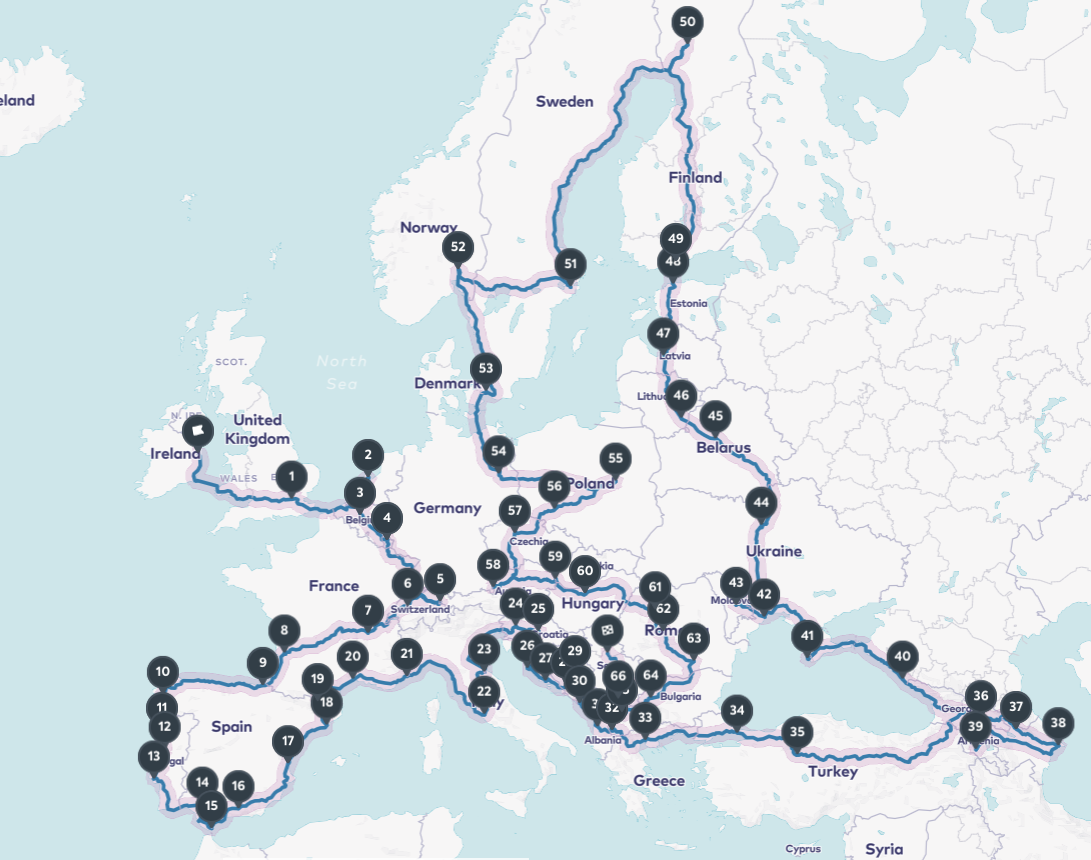
- Almost 27,000km of roads.
- Approximately 364h of driving time without stops.
- Over $1,600 in fuel spent.
- 47 countries, including 25 European Union members, Kosovo (which we count as an independent country despite the lack of recognition by the UN), the 3 countries in the Caucasus, Turkey and Russia, both of which are partially in Europe and mostly in Asia. Only 3 island countries would be missing, Malta, Cyprus and Iceland.
- More than 200 UNESCO sites would be within 50km of the itinerary.
In this unforgettable European road trip you will explore well-known but no less amazing cities such as Barcelona , Prague, London and Rome , and other up and coming ones such as Ljubljana, Bruges, Girona , Kiev, Tirana or Tbilisi.
Of the 400 UNESCO listed sites in Europe , this road trip will get you within 50km to more than half of the continent’s most fascinating heritage, from Gaudi’s La Sagrada Familia to Switzerland’s stunning mountain train journeys such as the Glacier Express or lesser known spots in tiny countries such as Andorra .
More standouts include medieval Kotor , Salzburg and Dubrovnik, the Vatican City, Santiago de Compostela’s Cathedral, Brussels’ Grand Place, Budapest Castle, Mostar Old City, Casa Batllo , Lake Ohrid, and many more.
You could add about 100 more UNESCO sites if you take a detour to explore southern Italy and Sicily , central Spain or Germany , a country that is only bordered on this itinerary.
It is also a great road trip for foodie lovers with stops in San Sebastian for pinchos and tapas, in Bologna for parmesan cheese and mortadella, in Lyon for refined French food, Copenhagen for forward-looking Nordic food and in Porto for seafood and codfish.
The route does not just cover mainstream destinations but will also take you to the lesser known parts of the continent such as the tiny country of Liechtenstein (one of the least visited countries in the world despite being located in the middle of Europe), Croatia’s Istria, Romania’s Transilvannia, and historical sites such as Chernobyl.
European road trip essentials 1. Roadtrippers : Create the itinerary and navigate with points of interest marked along the way with Roadtrippers , such a cool app. Get it, it’s a no brainer. 2. Visas : We highly recommend iVisa , they are prompt and professional and offer lots of services. A Schengen visa gives you access to 25 countries, others have their own system, Russia will be the trickiest. 3. Car rental : Our choice is Rentalcars.com which aggregates car rental companies across the world. Make sure you can take the car across the border and check additional insurance and permits. Or buy a car and sell it at the end. 4. Travel insurance : Do not leave the house without, really, don’t. We recommend World Nomads or SafetyWing who include coverage for COVID-19 since August 2020. 5. Accommodation : Use Booking.com they offer free cancellation charge if your plans change. 6. Tours : An efficient way to see cities in a short period of time is to get a day tour. We love and use Getyourguide which allows you to cancel tours up to 24h in advance.
So where does this incredible road trip across all of Europe and the Caucasus take you? Let’s explore the main stops.
1. Dublin, Ireland
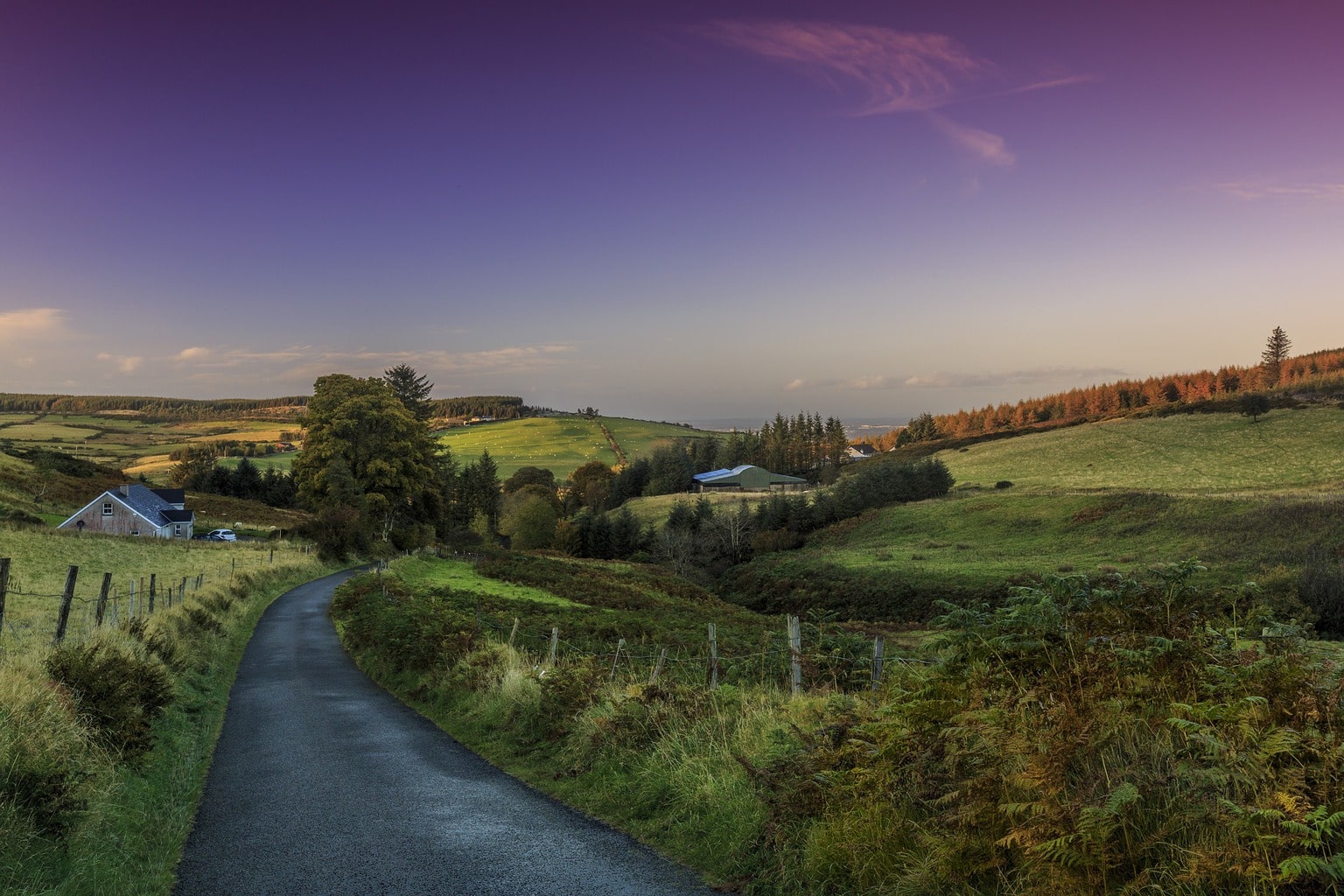
Your journey starts in the capital of Ireland, beautiful Dublin. Being the birthplace of Guinness beer, you’ll definitely need to taste the dark stout in one of Dublin’s 1,000 pubs like Temple Bar or The Brazen Head , Ireland’s oldest pub.
If you plan on driving after your visit, just go to the Guinness Storehouse where you can dive into the 250+ year history and have a bite to eat. Jameson Whiskey also has its home in Dublin.
Peer into Ireland’s Emigration history at World Travel Awards winner EPIC to see what it means to be Irish beyond the border. If you have some time left over pop into Dublin Castle which dates back to 1204 and has guided tours. Ireland is also home to many great thinkers such as Oscar Wilde, Bram Stoker and Samuel Beckett and is even one of UNESCO’s Cities of Literature . Visit Trinity College where they all got their start.
2. London, United Kingdom
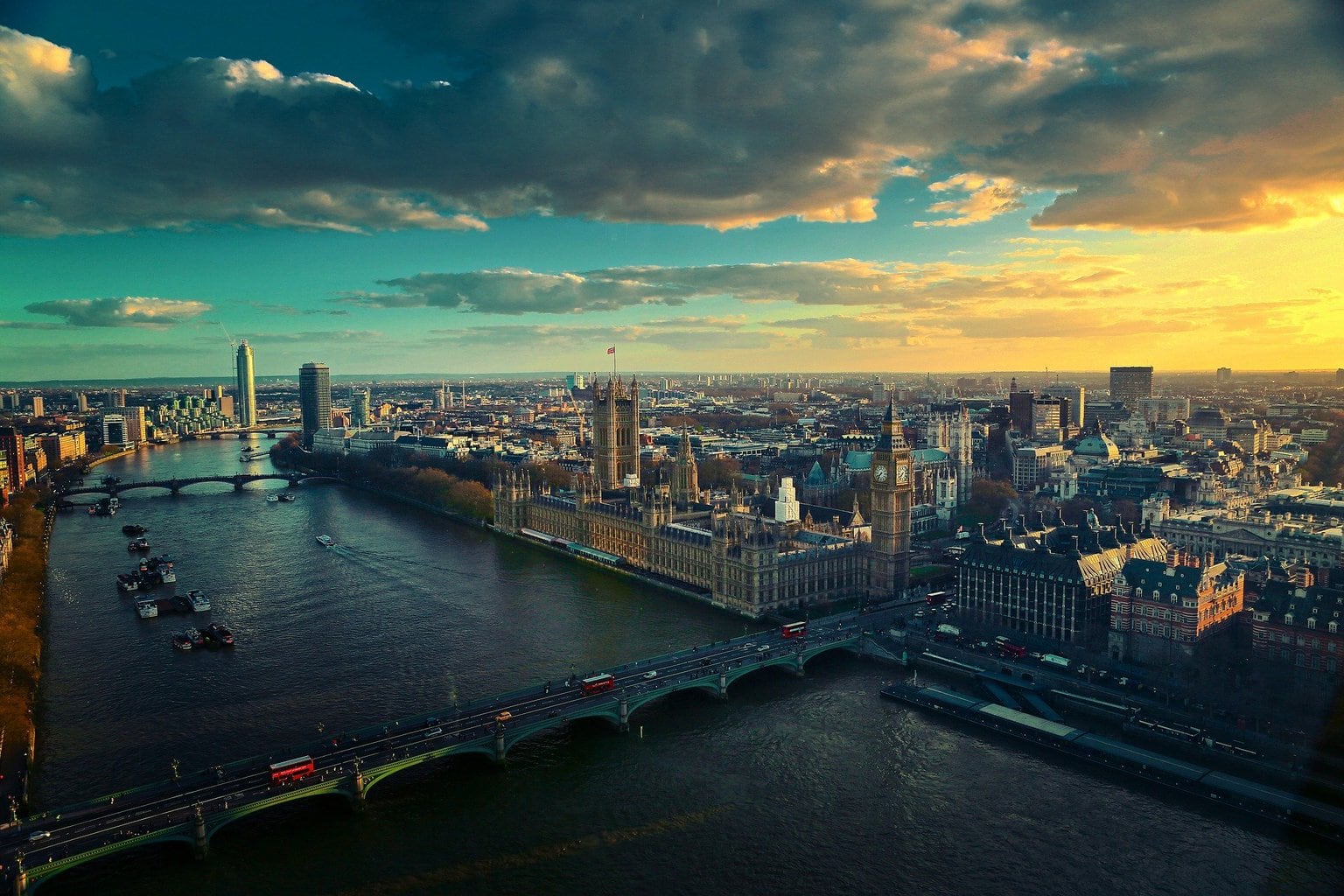
Next on your European road trip is the capital of the UK, London! With a rich history and loads of activities to take part in, you can experience art at museums like the Tate Modern or The National Gallery , have fun on the London Eye , learn something new at Speaker’s Corner in Hyde Park , have a pub lunch overlooking the river Thames, or try and see the Queen at Buckingham Palace .
If you aren’t for visiting tourist sites like Big Ben , the Tower of London , Westminster Abbey or the bohemian Soho district, you can always try something a little different and experience one of these unique things to do in London like eating jellied eel or take a somber stroll around Highgate Cemetery. Make sure to make a stop at Borough Market for a super good vibe with loads of fresh produce and delicious meals!
3. Amsterdam, Netherlands
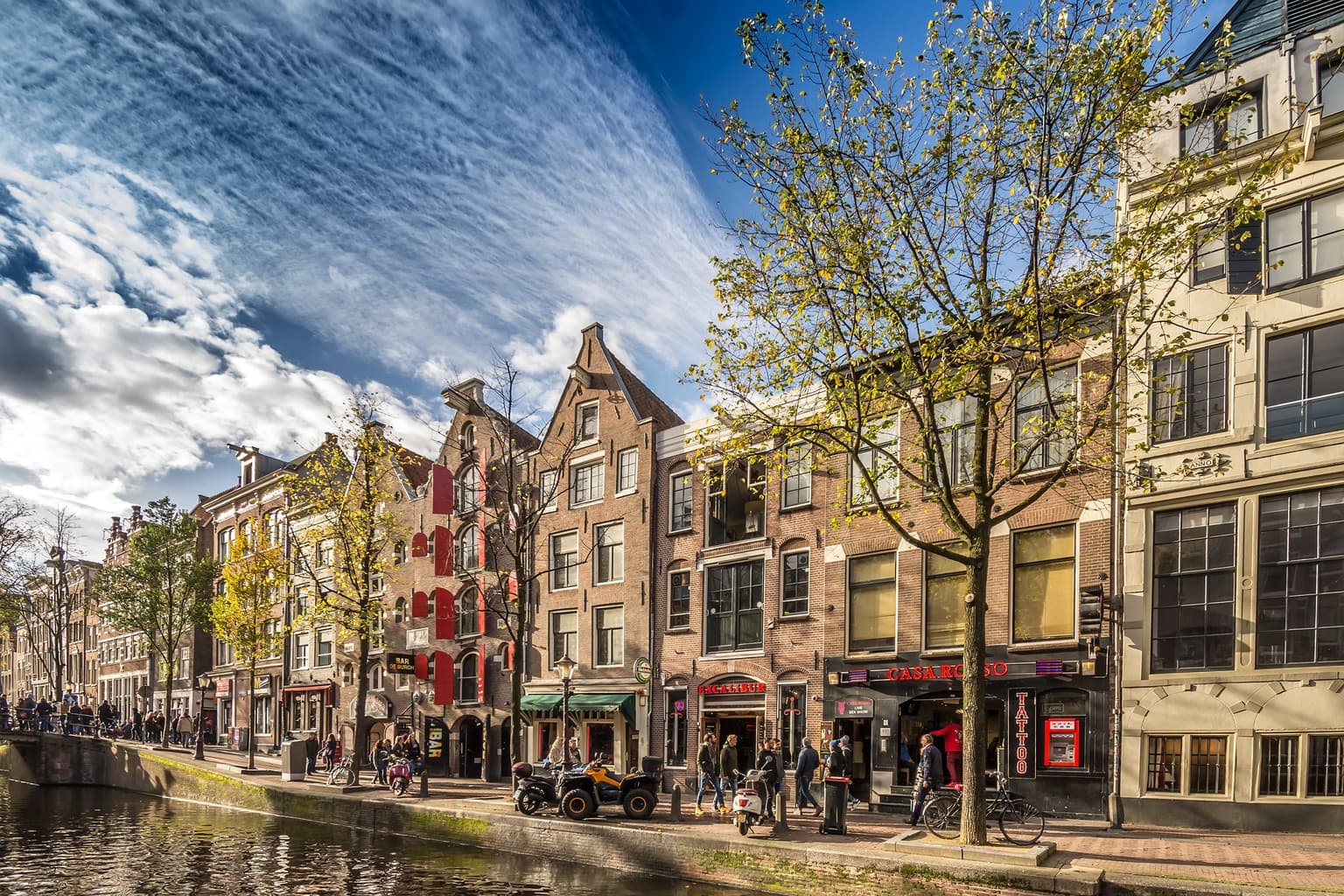
Leaving the island and riding north-east, you’ll soon get to friendly Amsterdan in the Netherlands. This bustling city is so much more than hash brownies, tulips and windmills as you’ll experience on a bike after parking your car.
Cruise along the canals at your own pace and visit the best tourist attractions in Amsterdam like Rijksmuseum , Van Gogh Museum , the artsy district of Jordaan, or dine way up high at A’dam Lookout .
A must-visit is Ann Frank’s House , where you will learn how this brave soul lived through a treacherous time. Apart from the multitude of historic sights, Amsterdam is also home to hip and up-and-coming neighbourhoods like gentrified Westergas and creative Zaandam’s Hembrugterrein. Walk the cobbled streets of De Negen Straatjes (‘The Nine Streets’) for some boutique retail therapy.
4. Brussels, Belgium
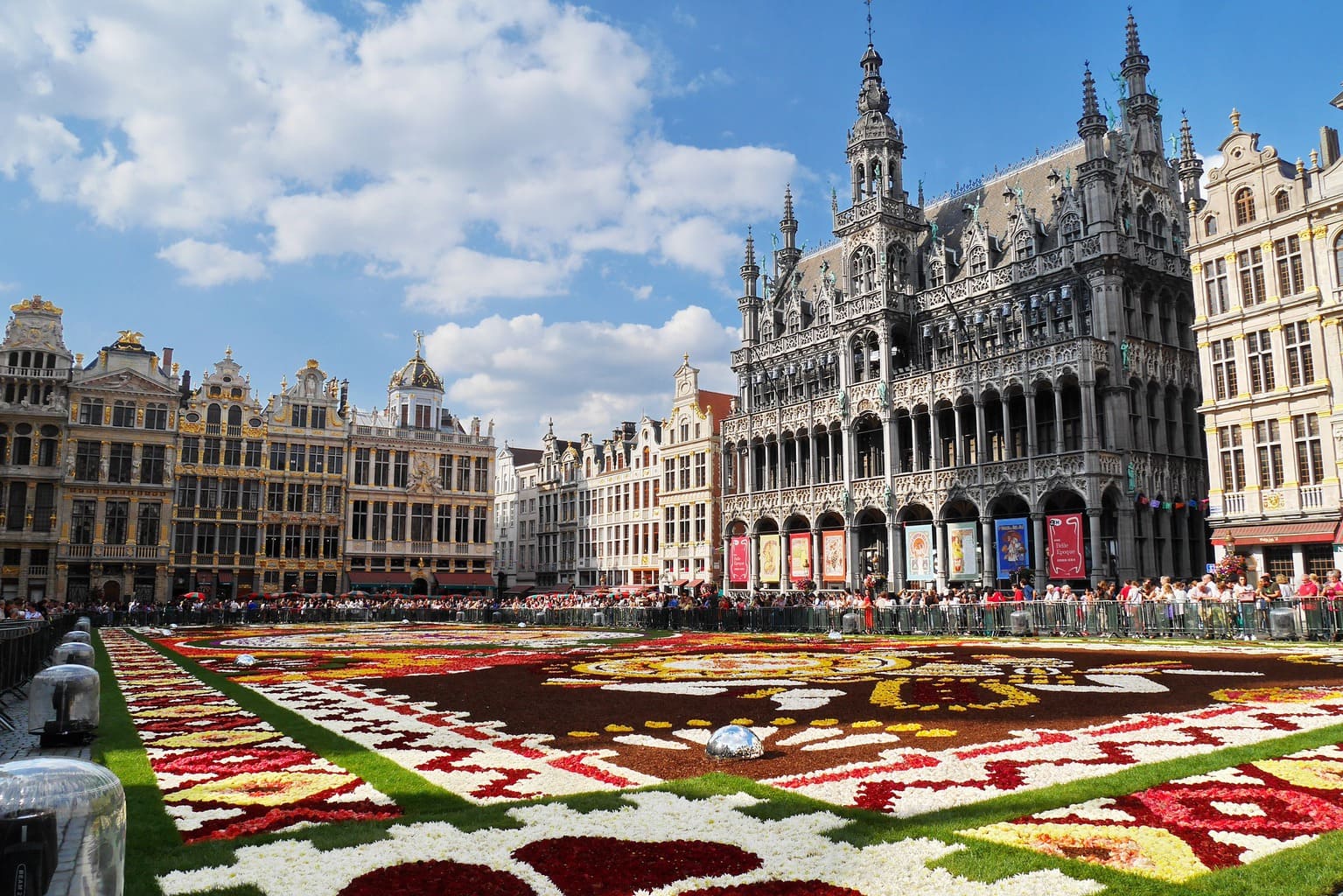
As the administerial centre of the EU, Belgium’s capital can be viewed as quite a stringent place. Yet when you pass the iconic little boy peeing into the fountain at the Manneken Pis, you get a sense for the city’s lightheartedness. It’s this mix that makes it a fascinating place for all types of tourists.
There is spectacular architecture like the Grand Place , Notre Dame Du Sablon , or the Instagrammable Atomium . See arts and culture at the Musee des Beaux-Arts d’Ixelles or Musee Constantin Meunier and gorgeous nature at Park Malou, Parc Georges Henri or Parc Du Cinquantenaire.
But you cannot leave Brussels without going on a beer tasting tour while diving mouth-first into their famous fries and mussels.
5. Luxembourg
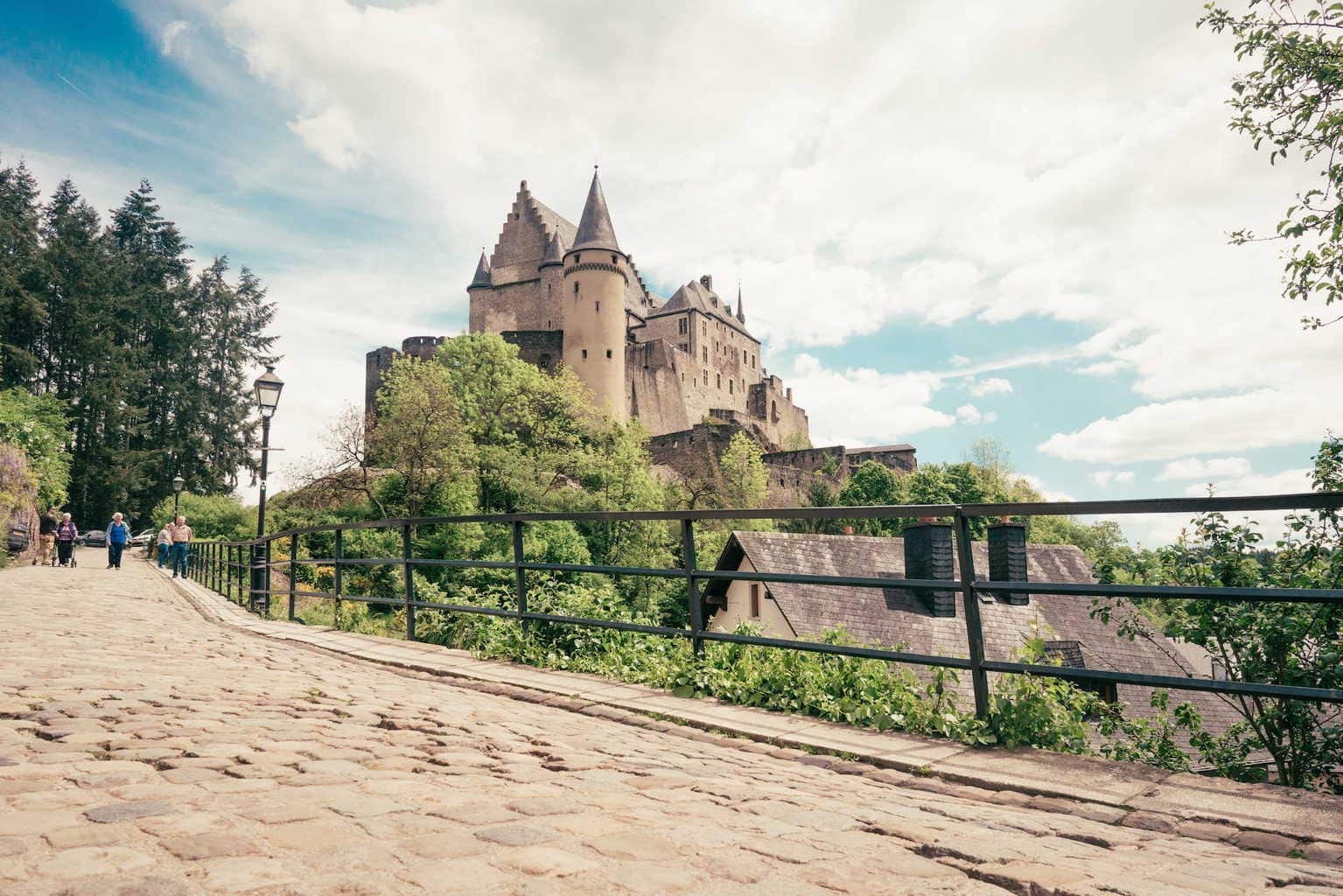
Luxembourg is one of the smallest countries in the world and most of the top places to visit in Luxembourg are all concentrated in the city center. This makes it a great day stop for your European road trip. Start slow by perusing the Old Quarter in Luxembourg City which is also a UNESCO World Heritage Site , as the night nears, take in a show at the legendary Philharmonic of Luxembourg .
Then make your way to any of the multitude of castles in the country (there are 130 in total) from Luxembourg Fortress to Vianden Castle . The castles you choose to explore will depend on the amount of time you have and whether you’d like to include a bit of nature on your visit or not.
For nature we suggest the Mullerthal region where you’ll find Schiessentümpel Waterfall. You can even camp there for the night along the river Sûre in your car or spa at Mondorf-les-Bains if that’s more your style.
6. Liechtenstein
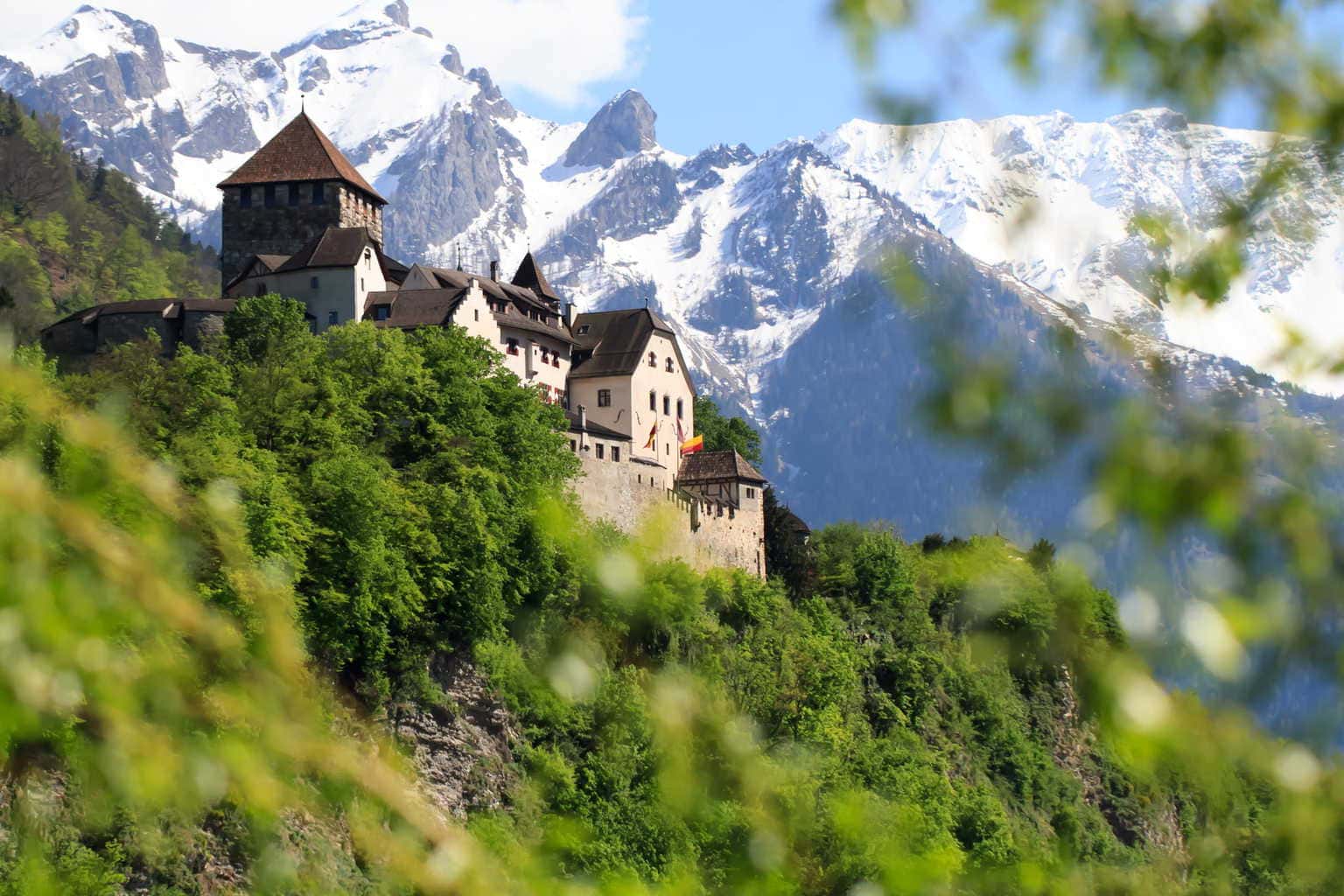
While an unlikely candidate, Liechtenstein is actually one of the least visited countries in the world . The main reason is because it’s a landlocked country, sandwiched between Switzerland and Austria, without an airport. This means it’s perfectly reachable by car, great for your European road trip!
A fun fact about Liechtenstein is that it hasn’t had a murder since 2014 and is therefore one of the safest countries in the world. As it’s so small, you can see the entire country in a day from castles like Vaduz , Burg Gutenberg or Obere Burg to jaw-dropping nature (400km network of hiking trails!) and even eat at a Michelin-awarded traditional Restaurant Torkel . This is a popular winter Europe road trip pit stop for ski fanatics.
7. Bern, Switzerland
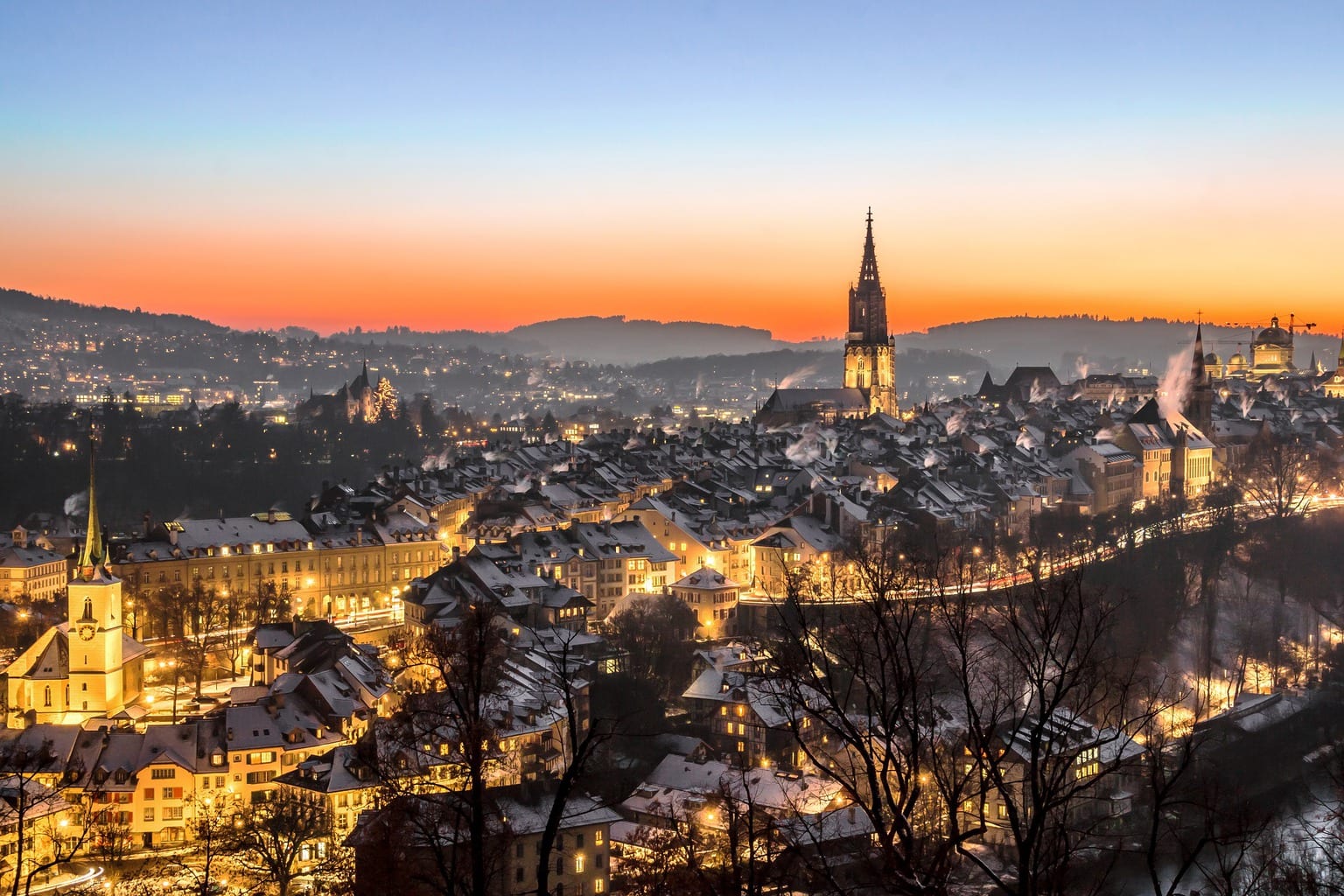
The city where Einstein started dabbling in physics and the older enclave being awarded UNESCO World Heritage status in 1983, Bern is a thriving city with a deep history and stunning sites. In fact you can visit Einstein’s former residence or the museum constructed in his name .
If you’re a fan of treasure hunts, you could try to find all 11 Renaissance fountains in the centre of Old Bern. Saunter around the Rosengarten , take in the views at Gurten mountain, or see the symbol of Bern (and Toblerone ) at Bärengraben (Bear Pit) or BärenPark (Bear Park).
With a rich culture, Bern has loads of great artsy festivals to take part in year round from the Summer and Winter Jazz Festivals to the Buskers Festival to July’s Gurtenfestival . If you miss the festivals, don’t worry, there’s more art at the Kunstmuseum (Museum of Art) which contains 51,000 pieces! The fascinating Zytglogge , a medieval clock tower with moving puppets, is always a fun stop over.
If you’d like to go beyond the capital and are a fan of skiing or being pampered, I would suggest making a stop at either Andermatt or St. Moritz (stay for the night at Chedi, Andermatt ). Or change your mode of transportation and hop on the Glacier Express which connects St. Moritz with Zermatt and is a truly once in a lifetime experience.
8. Central France
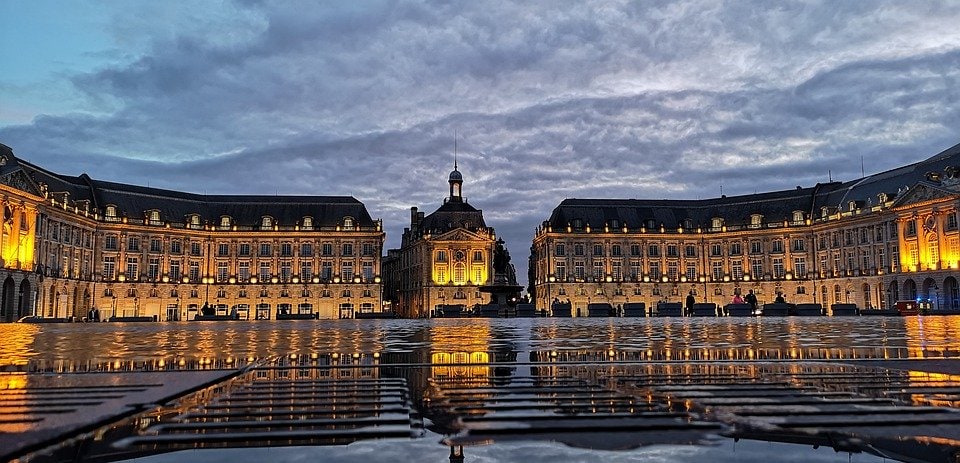
Traveling south from Switzerland (with a possible stop in Geneva before crossing the border), you’ll be cruising the central part of France passing by two exquisite regions: Lyon and Bordeaux.
Lyon is steeped in a 2,000 year history and is the capital of the Auvergne-Rhône-Alpes region. It is also considered the foodie capital of France so you should make sure to eat your way around the city.
Witness the Roman Amphithéâtre des Trois Gaules and venture into Vieux (Old) Lyon with the largest renaissance old quarters in Europe. But don’t miss the modern Confluence district on the Presqu’île peninsula with its elegant bistros and upscale apartments.
There are museums of all kinds from fine art at Musée des Beaux-Arts de Lyon to the Institut Lumière , an ode to the famed brothers who spearheaded the modern cinema. The architecture will leave your jaw agape, so be sure to pass by the Fourvière Basilica and Lyon Cathedral.
Making your way toward the Bay of Biscay you’ll end up in one of the most praised wine regions in the world, Bordeaux. Wine enthusiasts better get a designated driver, because this stretch of your Europe road trip is bound to be the most fueled by alcohol.

The choices of wineries to visit can be a bit overwhelming, so it’s best to first visit the spectacular ode to wine, La Cité du Vin. This is a mammoth 3,000sqm building with a 55m tower that looks like a giant decanter. It has around 10 hours of audiovisual info all about the history and future of the grape. You’ll also be able to get help picking which wineries to visit.
Beyond wine, there are open spaces (Quais de Bordeaux, Jardin Public), shopping streets (Rue Sainte-Catherine), ancient architecture (La Grosse Cloche, Porte Cailhau, Bordeaux Cathedral) and so much more!
Those wanting to stop by Paris should do so after Luxembourg, as this is the quickest route to the capital and you will only be venturing further south from here. Read our Parisian articles to get more insight about the City of Love:
- Best Paris Bistros
- Autumn In Paris, A Perfect Weekend For Two
- Rooftop Bars In Paris With The Ultimate Best Views Of The City
- 5 Markets In Paris To Bargain-hunt
- Adorable Places For A Beautiful Picnic In Paris From Rivers To Gardens
- Secret Gardens In Paris To Find Romance And Nature
9. Northern Spain
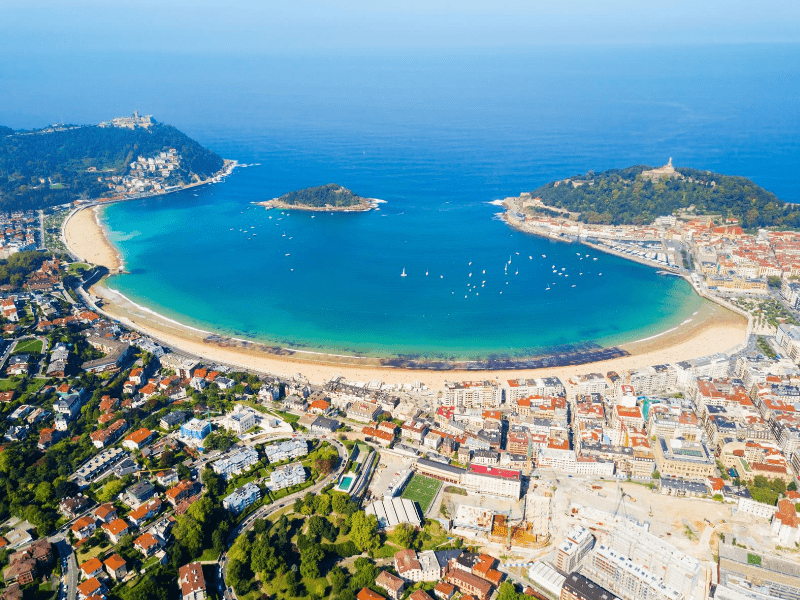
Reaching the Bay of Biscay with a possible hangover, you’ll surely just want to take it easy on the beach. This is where San Sebastián comes in. Also known as Donostia, San Sebastián is a resort town hidden in Spain’s mountainous Basque Country and is known for Playa de la Concha and Playa de Ondarreta.
Playa means beach, and beach is what you will get, although not the kind of warm beach you find on the Mediteranean! Bring a sweater, even in the summer months San Sebastian can be pretty chilly.
Not only will you find beautifully soft sand, but also picturesque bayfront promenades, cobblestone roads of old town (Parte Vieja), upscale shopping, vibrant pintxo bars and world-class restaurants.
San Sebastian is one of Spain’s foodie capitals along with Barcelona and Madrid and the Basque Country where it is located, has more Michelin-starred restaurants than any other part of the country.
Think three-starred Arzak and Akelarre , one-starred Kokotxa and Mirador de Ulía or famous Nerua in the Guggenheim Bilbao. Or just have a picnic at Miramar Royal Palace ( Palacio de Miramar ) if your wallet is feeling a bit light.
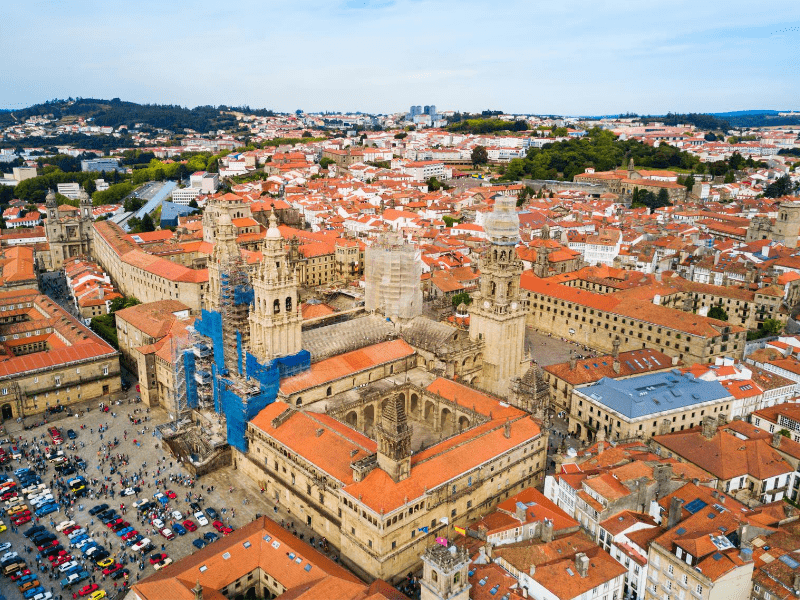
Taking the most epic coastal drive, you’ll enter one of Spain’s most spiritual centres at Santiago de Compostela. This is the end of the famed Camino de Santiago pilgrimage route as well as the capital of northwest Spain’s Galicia region. Legend has it that the apostle St. James was buried in what is today the UNESCO-listed old town.
Even if you aren’t religious, you’ll find a spiritual resonance in the idyllic Romanesque, Gothic and Baroque buildings, particularly the remarkable Pórtico de la Gloria . The Cathedral of Santiago de Compostela , Praza do Obradoiro and Monastery of San Martiño Pinario are all epic and within walking distance.
10. Coastal Portugal
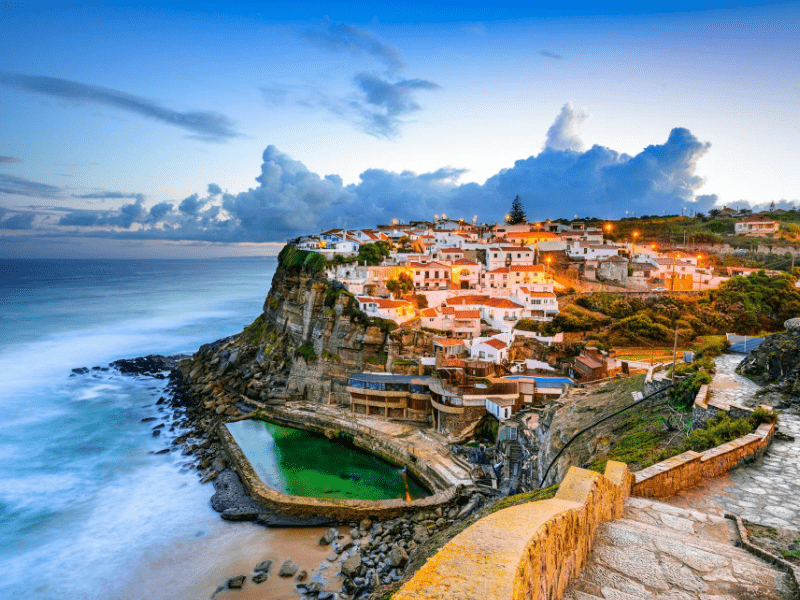
Grab your surfboards because you are entering a country with some of the best waves in the world. Even if you don’t know how, Portugal is a great place to learn how to surf. It’s also a burgeoning place for digital nomads so you’re sure to bump into other European road trippers here on your journey.
The three standout places you’re going to pass on the coastal route are Porto in the north, Coimbra in the center and Lisbon at the south. Porto is known for its dessert wine which you will know as Port. But beyond the sweet aperitif Porto offers stately bridges, the medieval Ribeira (riverside) district with cobbled streets and cafes, and grand designs from baroque São Francisco Church to the palatial Palácio de Bolsa .
Travel down to the coast and you’ll end up at the riverfront city of Coimbra. It is famous for its historic University of Coimbra that houses a baroque library, the Biblioteca Joanina with a gorgeous 18th-century bell tower. You can set foot around the city’s old town to take in the calm atmosphere and visit the 12th-century Romanesque cathedral Sé Velha.
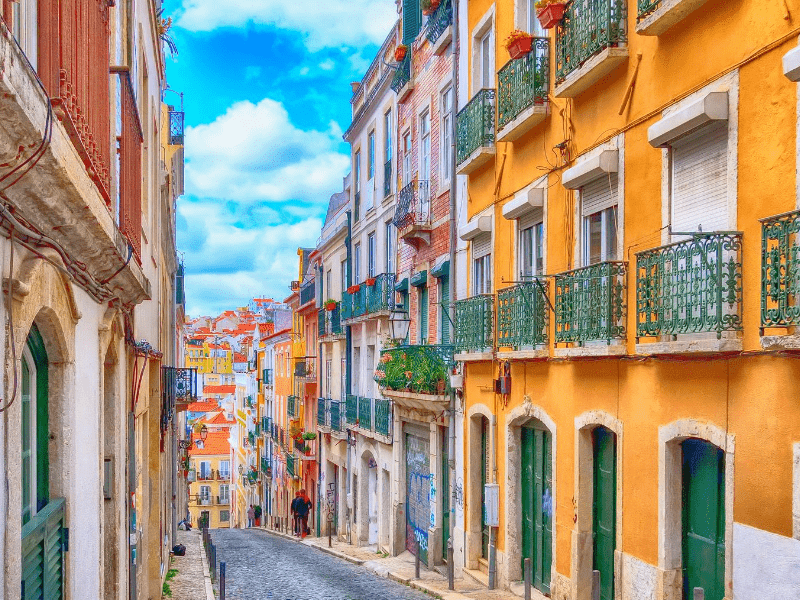
Drive south from the old capital (Coimbra) to the new one, Lisbon. This hilly coastal city has some spectacularly romantic views, particularly at sunset from São Jorge Castle where the pastel-colored buildings blend with the pink and purple hues of the setting sun.
Nature blends seamlessly with historic buildings in Lisbon, so make sure to pass along the Torre de Belém , the Golden Gate-like Ponte 25 de Abril suspension bridge, and the Padrão dos Descobrimentos . Try to take a day trip to the protected Tagus Estuary. You can ride trams throughout the city and then relax on the beaches of Cascais, Costa da Caparica, or Estoril.
11. Southern Spain
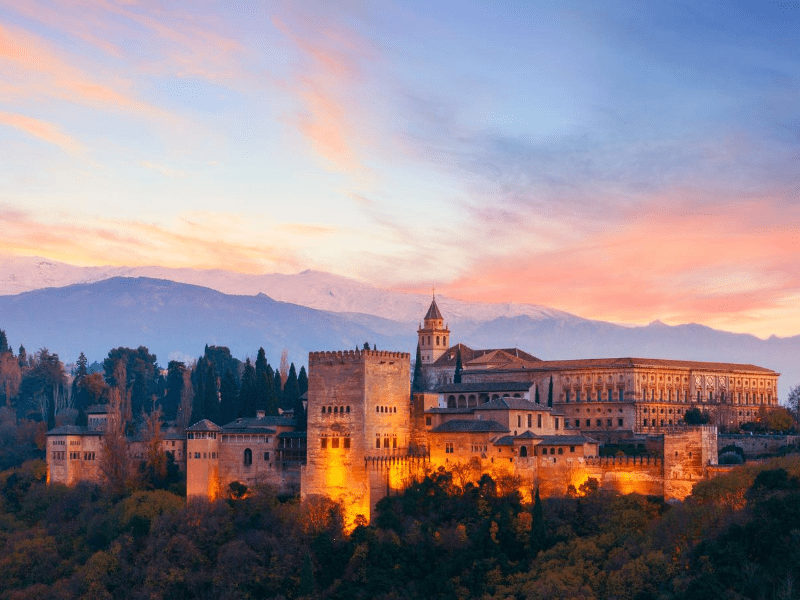
Now it’s back into Spain where you’ll witness a very different vibe and even peer over into Africa. The south of Spain is spectacular as you travel through Seville, Gibraltar, Granada, Valencia and finishing in Barcelona.
Seville is the capital of Andalusia and has a rich Moorish heritage which is evident in the colourful tiles, the lobed arches and the iconic Giralda tower .
This is the place to experience the stereotypically Spanish cultural activities – flamenco, tapas and toros (although we strongly oppose bullfighting and you should too). Spring is a particularly festive time to visit with Semana Santa (Holy Week) and the lively Feria de Abril ( Seville Fair ). Or just to stroll along the banks of the Guadalquivir.
Before you leave the area, consider a day trip to Morocco which you can take from Tarifa . Go on a guided tour which is usually cheaper than buying a ferry ticket, and add a new continent, just for the day.
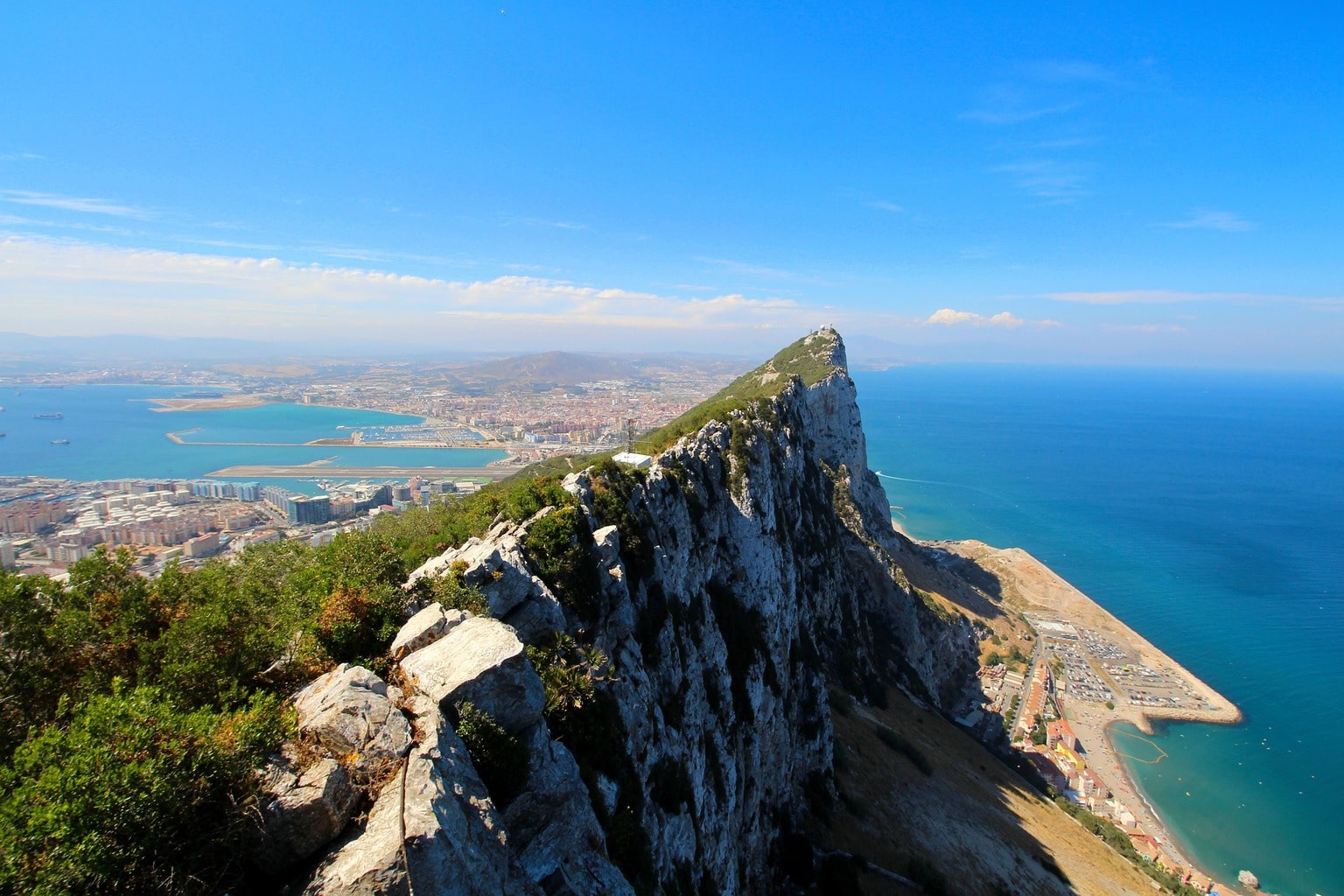
Gibraltar may be geographically located in Spain, but it was actually ceded to Britain in 1713 and remains a British Overseas Territory. This means that while Euros are accepted, the main currency is the British Sterling.
Moorish architecture and the Rock of Gibraltar are the two most famous sites. Europa Point at the most southern tip of Gibraltar is where you can glance into Morocco, an entirely different continent. Try not to visit on a Sunday as most places on Main Street will be closed.
Laying at the foothills of the Sierra Nevada mountains is Granada, best known for its pristine examples of medieval architecture, particularly the Alhambra from the Nasrid dynasty . UNESCO-listed La Alhambra is massive and needs a full day to explore properly, especially to see the Generalife gardens .

From past to future, you’ll then venture forth to Valencia, known for its City of Arts and Sciences . This futuristic structure, reminiscent of Zaha Hadid’s Heydar Aliyev Center in Azerbaijan or Dongdaemun Design Plaza in Seoul , Contains a planetarium, oceanarium and interactive museum.
As Valencia is a coastal city, you can also set your towel down in one of its beaches including those in the Albufera Park, which is actually a wetlands reserve with a lake and walking trails. This is also a fantastic place to try out authentic paella.
Your last stop over in Spain will be the capital of Catalunya, Barcelona. There is too much to do in Barcelona and we have written about it extensively as it is our Editor-in-Chief’s home.
If you’re looking for things to do in Barcelona on this leg of your European road trip, here is a massive list of articles you can save, from the best of Gaudi to the top wineries to some brilliant ideas for day trips…
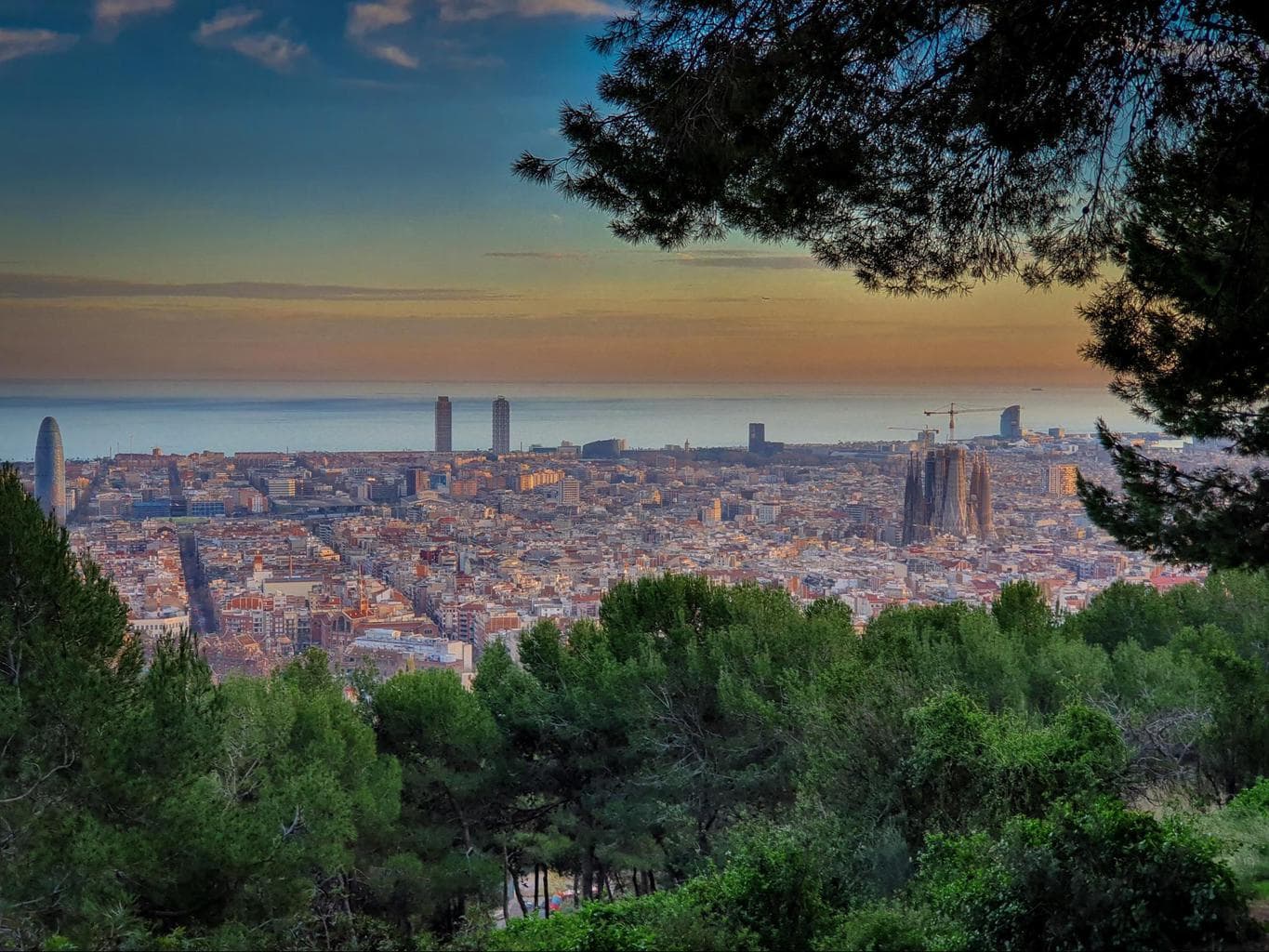
Barcelona guides:
- A local’s guide to one day in Barcelona
- Barcelona itinerary – Where a Barcelonian would take you in 4 days
- Epic and fabulous, the best things to do in Barcelona
- The most unusual things to do in Barcelona – unique activities to cool places
- Where to stay in Barcelona – Best areas and luxury boutique hotels
- The Best Rooftop Terraces in Barcelona to watch the sunset
- Gaudi Barcelona most incredible sights
- Guide with Sagrada Familia tickets, sights, history and other info
- A local’s guide to seeing Casa Batlló inside and out
- A local’s guide to La Casa de les Punxes
- Tips to Prepare for your Camp Nou Tour
- A local’s tips for visiting Barcelona Bunkers del Carmel
Wineries near Barcelona & Food:
- Weekend wine escape from Barcelona – includes full itinerary
- Top wineries near Barcelona to visit – Best wine and cava tours
- Poblet Monastery in Conca de Barbera: How the church brought back wine
- How to make the most of your Familia Torres Winery visit
- Visiting Cava Codorniu Spain’s oldest family-run business
- Albet i Noya – the pioneer in organic winemaking in Spain
- A day out of Barcelona taking the Cava Llopart 1887 Gran Reserva Tour
- Learning about Kosher wines at Celler de Capcanes
- Disfrutar Restaurant, elBulli’s legacy freshly carried on
- Review of Lasarte, Barcelona’s first 3 Michelin star restaurant
- Review of ABaC Restaurant Barcelona
- Gaig Restaurant Barcelona: Traditional Catalan fine-dining since 1869
- The Proximity Food Movement in Barcelona – Beyond Organic
Day trips from Barcelona:
- Perfect day trips from Barcelona for everyone as told by a local
- Things to do in Sitges where to eat and best beaches
- How to get from Barcelona Airport to Sitges? (and from Sitges to Barcelona Airport)
- Guide to Siurana, a legendary village on Priorat’s mountains
- Day trip to Montserrat from Barcelona by a local
- Things to do in Girona + 1 day itinerary
12. Andorra
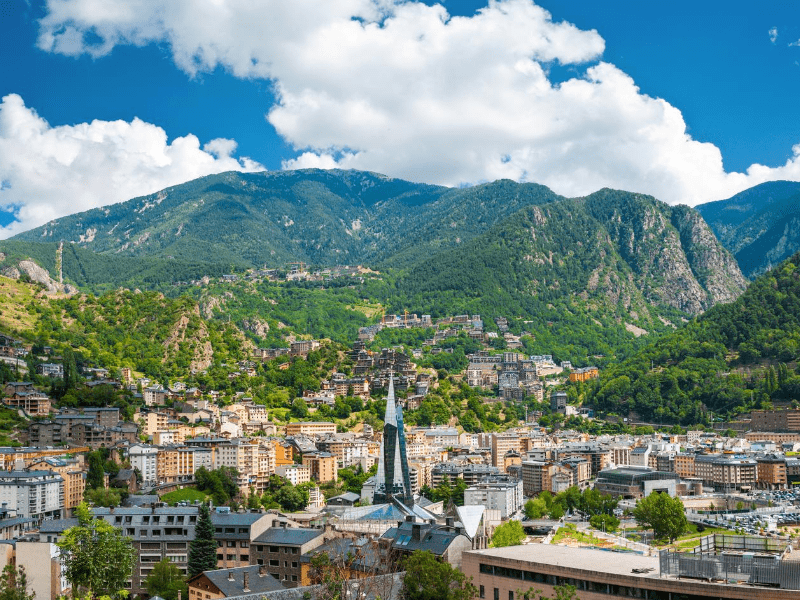
Just like Luxembourg and Liechtenstein, Andorra is another one of the smallest countries on the planet. Landlocked between Spain and France, it’s a hidden secret that will add some spice to your Europe road trip. The “country in the Pyrenees mountains” is all about beautiful nature in any season.
There are ski slopes to hit in winter, gorgeous hiking trails in summer and a variety of activities for everything in between. Topping the list is the Caldea spa complex that leverages the natural hot springs in the area to provide an entertainment destination with hydrotherapy and wellness in mind.
We have written a complete guide to Andorra where you can explore all of the best things to do from savoring rustic food to a list of all the museums to the best places to go shopping and the top hotels to stay at.
13. Southern France
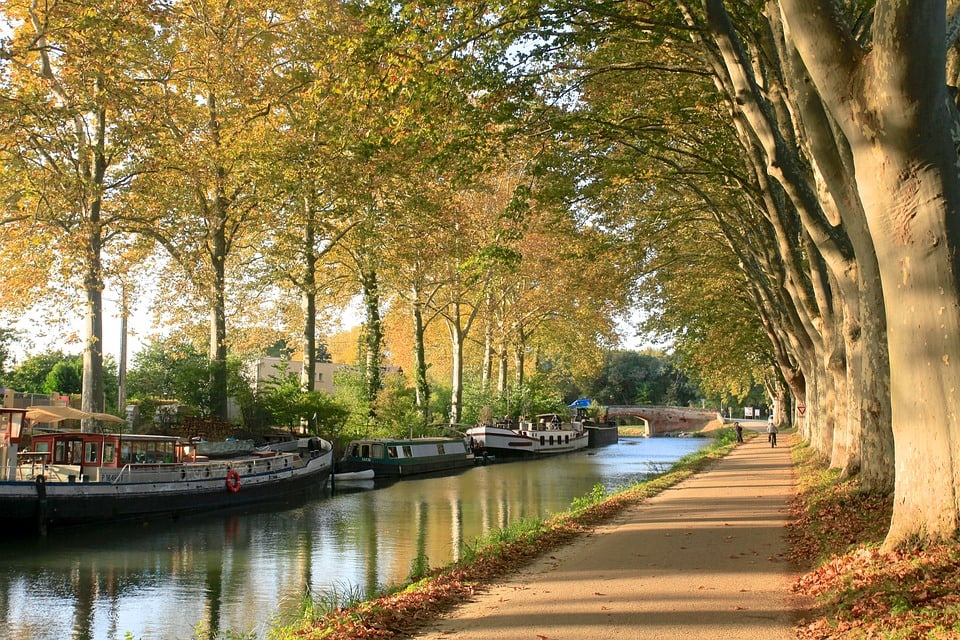
Crossing the border, you’ll again venture into France, this time exploring the coastal cities along the Gulf of Lion from Languedoc to Provence all the way into Italy.
Start at Montpellier, an underrated city with a rich history, beautiful architecture and bustling boutiques and sidewalk cafés among magnificent squares. It even has its own Arc de Triomphe .
Montpellier’s lively vibe is attributed to some 60,000 students that call it home. Sip some Languedoc-Roussillon wines with delicious Mediterranean-inspired cuisine or climb the 658m Pic Saint-Loup. You may want to explore Toulouse, known as “The Pink City” due to its terra-cotta bricks, as it is another lively and gorgeous destination for a European road trip.
After Montpellier, you can choose to explore the more popular port city of Marseille and Nice along the French Riviera, both in the Provence region, if you like more touristy and cosmopolitan destinations. The former is hailed for the epic Basilique Notre-Dame de la Garde and the latter pays homage to native artists Henri Matisse and Marc Chagall .
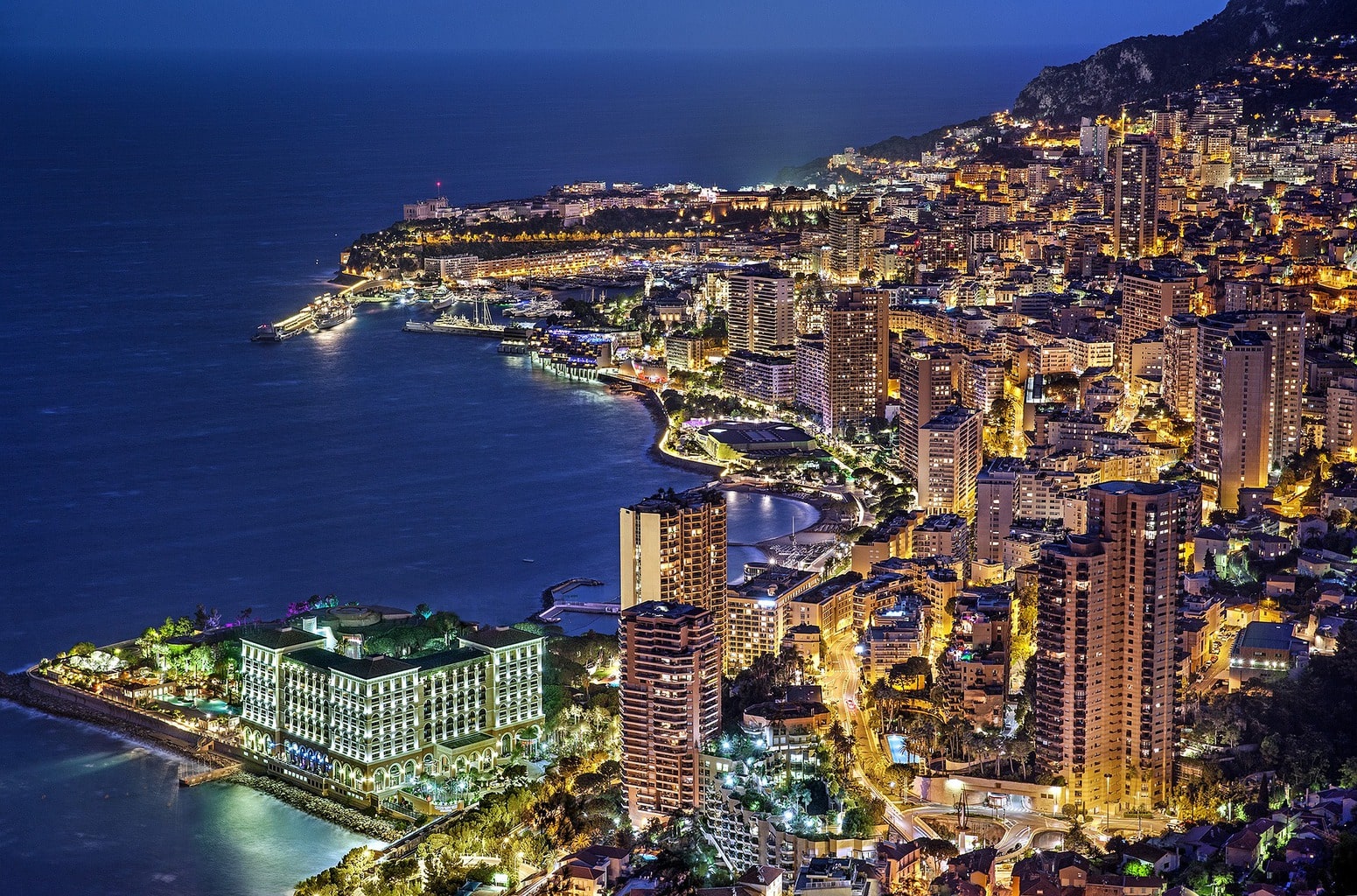
It’s time to join the rich and famous in another one of the smallest countries in the world, Monaco. In fact, Monaco is the second smallest country after the Vatican and is only 2sqkm. Like Andorra and Liechtenstein, Monaco is a principality, meaning that a monarchy governs, currently ruled by Prince Albert II of the Grimaldi family.
The most well-known area in Monaco is its capital city, Monte-Carlo, synonymous with James Bond, Casinos, F1 and the rich and famous (because of its tax status). Expect a multitude of yachts docked at the ports along this country in the French Riviera housing all the beautiful people of the world.
For more, check out our guide to Monaco .
15. The Vatican
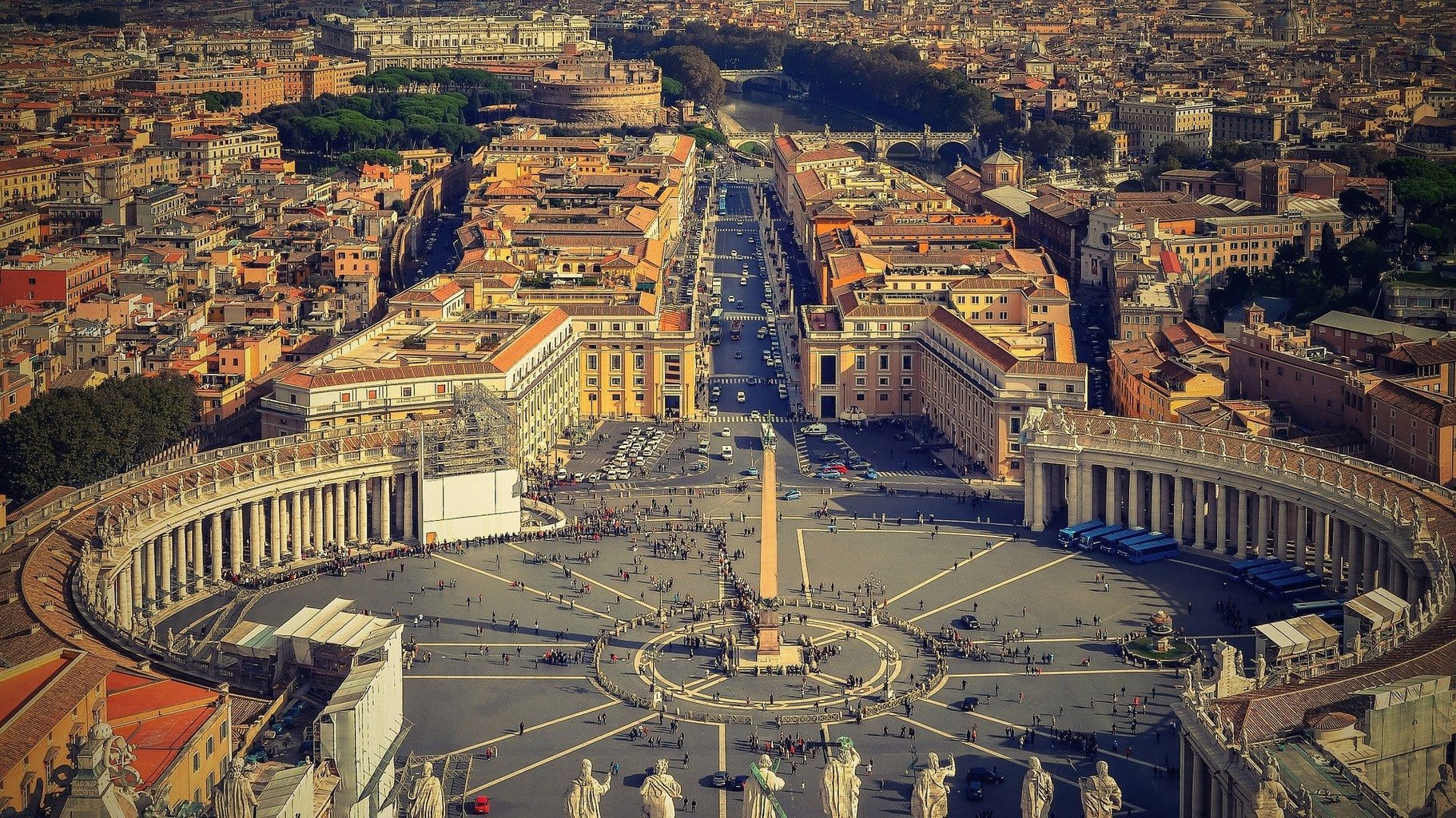
From the second smallest to indeed the smallest country in the world and the headquarters of the Roman Catholic Church which is home to the Pope.
Like Lesotho in South Africa , the Vatican is surrounded by the Italian capital, Rome. So if you’re visiting Rome, the Vatican is a must. Your time at the Vatican will be spent viewing ancient buildings, seeing historic art pieces and taking in the spirituality of Catholicism.
Standouts include Michelangelo’s work on the ceiling of the Sistine Chapel , St. Peter’s Basilica which is the world’s largest basilica of Christianity, Renaissance art treasures at the Vatican Museums , Castel Sant’Angelo , Saint Peter’s Square and Gardens of Vatican City .
16. Rome, Italy
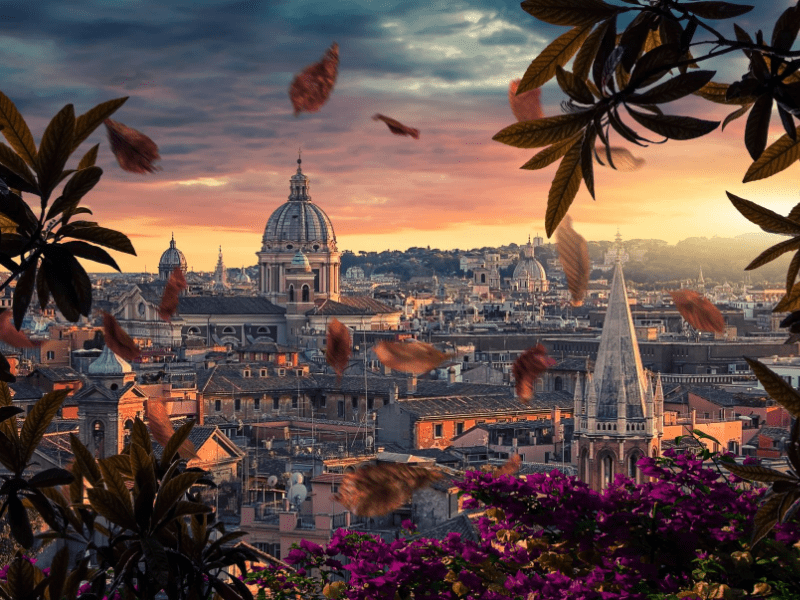
Buongiorno, you’ve reached the “beautiful country”! You’ve explored the Vatican and had your spiritual fix, so now it’s time to venture into the capital of Italy, Rome. While it wasn’t built in a day, you can try to see it all in 24 hours but we recommend spending much longer, Rome needs to be enjoyed not rushed.
Ancient landmarks like the Colosseum , the Pantheon , the Roman Forum and the Arch of Constantine should all leave you speechless.
Gaze at the famed Trevi Fountain as you pay homage to Federico Fellini’s La Dolce Vita or “take a little time for yourself…live dangerously” at the Spanish Steps like Audrey Hepburn and Gregory Peck did in Roman Holiday . Then support the local artists and street vendors at Piazza Navona.
What next?
Eat, eat and eat some more by exploring all the Michelin-starred restaurants of Rome (there are around 20!).
You can then ride directly up into San Marino, which we explore next, or you have the option for going south into Naples and then Sicily to take a detour around the Italian coast and see some of the most famous parts of the country which have recently reached Instagram stardom (Amalfi Coast, Capri, etc.).
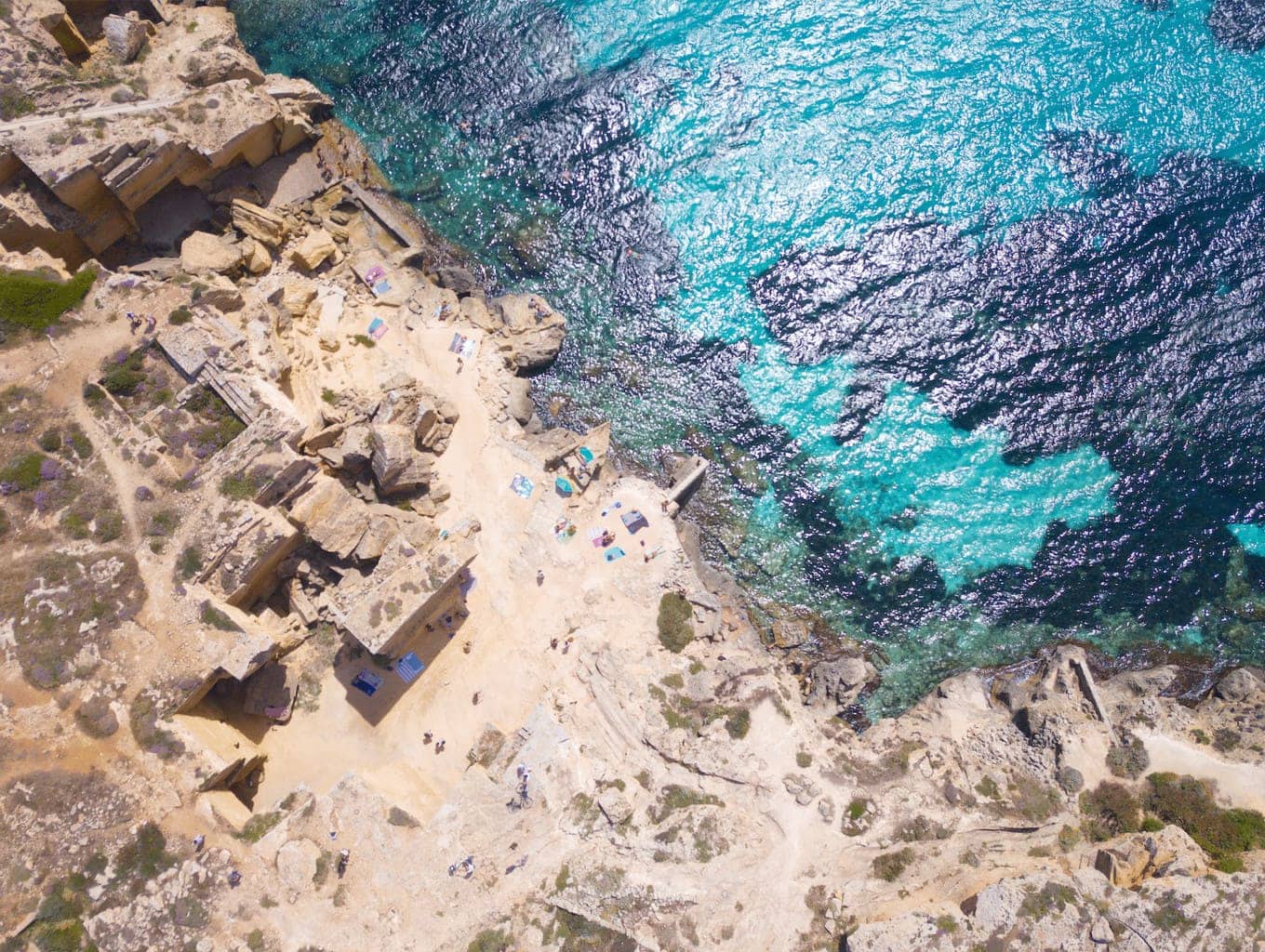
The beaches in Favignana, off Sicily
In Sicily you can hike up an active volcano at Mount Etna , explore the best Sicilian food , visit the Godfather filming locations like Savoca , or relax in the quaint towns of Syracuse or Taormina and its Ancient Greek Theater . Here’s an extensive travel guide to Sicily for those who want to set out into the island.
17. San Marino
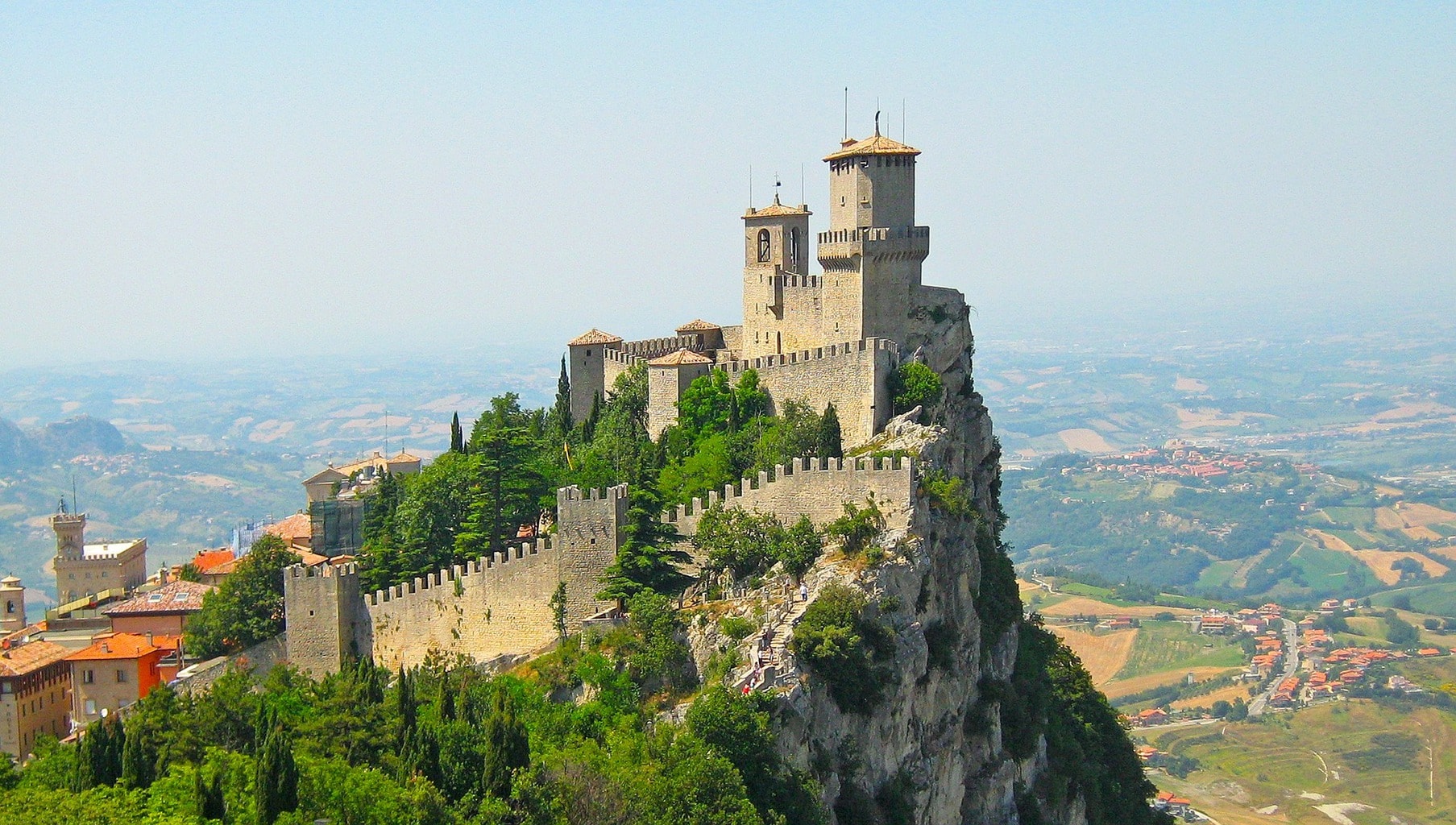
San Marino is a hilly microstate on and around Mount Titano that’s completely surrounded by north-central Italy. It’s as if time has stood still in this ancient republic, with much of its historic architecture still intact.
The capital, sharing the same name as the microstate, is most well known for its medieval walled old town and narrow cobblestone streets. Once a year in July there’s even a Medieval Days festival which is a spectacle as the entire town dresses up and celebrates their history.
At the top of Titano’s peaks sits The Three Towers which date back to the 11th century and are great viewpoints. If you have a drone, this would be the place to fly it!
You may want to pop into foodie heaven Emilia-Romagna or Venice to see the iconic canals and the colorful glass island of Murano before moving onto Slovenia.
18. Ljubljana, Slovenia
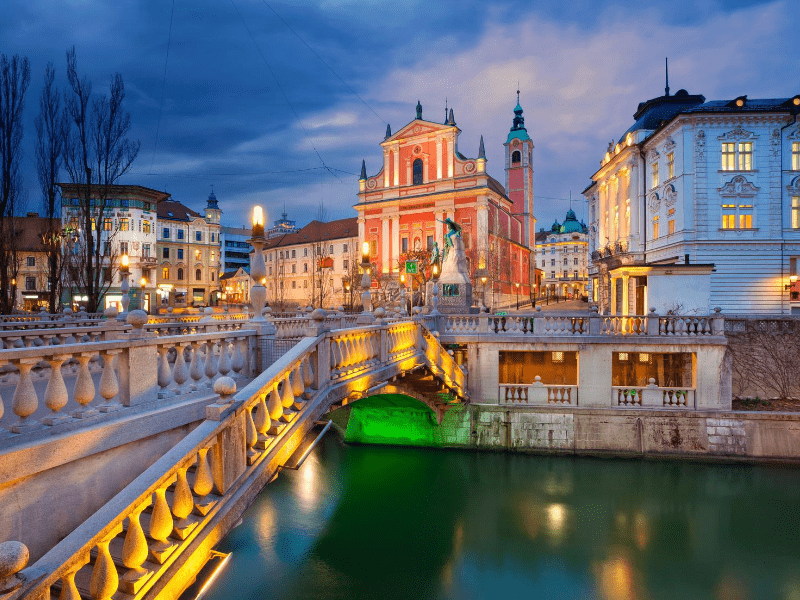
Well done, you’ve made it into central Europe!
Start in Slovenia, a really beautiful country known for its mountains, ski resorts and lakes. Slovenia’s capital Ljubljana (say “loo-blee-ana”) is a university city with epic green spaces. Tivoli Park is the first of these spaces that you’ll want to explore. It’s a well manicured park where you can take a break and wander to your heart’s content.
Cross over the iconic Tromostovje (Triple Bridge) and visit a few of the outdoor cafes that dot the Ljubljanica River. Then get cultured at one of the many museums like the National Museum of Slovenia or the Museum of Modern Art .
55km north-west from the capital is the epic Lake Bled, the iconic blue lake with Bled island at its center that houses the Pilgrimage Church of the Assumption of Mary (Cerkev Marijinega vnebovzetja). This is closer to the Austrian border though, so you may want to visit it later in your journey as you’re now going down to Croatia.
19. Zagreb & Split, Croatia
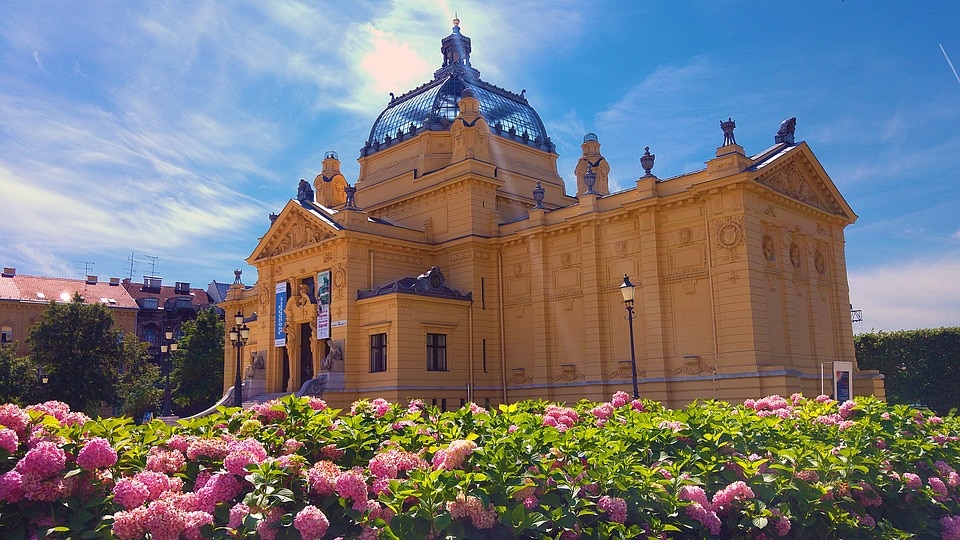
While Croatia is quite large, you’ll be sticking to the south-west so that you can easily make it into Bosnia & Herzegovina and then Montenegro. This area is also the most well-catered for tourists due to its gorgeous beaches.
Starting in the capital of Zagreb, you’ll get to stretch your feet as you explore the quaint Tkalčićeva Street with its outdoor cafes and car-free Jelačić Square in Lower Town which also has museums, shops and parks. Upper Town is more focused on Austro-Hungarian architecture like Zagreb Cathedral and St. Mark’s Church.
Quirkier travelers can visit the Museum of Broken Relationships which is dedicated to breakups. Make sure to get a licitar, a traditional honey dough cookie in the shape of a heart and is Zagreb’s symbol. There’s no real to-do in Zagreb so let your feet guide you.
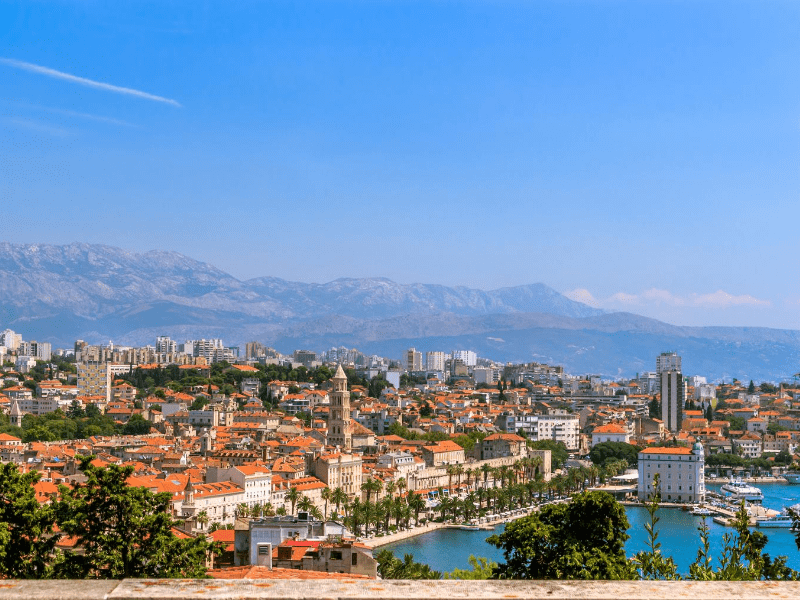
Moving onto the more touristy sites, you’ll venture on down to the coastal cities of Zadar and Split. Zadar, on the Dalmatian coast, is most well known for its Roman and Venetian ruins such as St. Anastasia’s Cathedral and the Church of St. Donatus.
Split on the eastern shore of the Adriatic Sea has some really beautiful beaches that get super packed in summer. The entire city center is like visiting a giant Roman palace, still going strong after 1700 years with additions and restorations. Game of Thrones fans will know all about Diocletian’s Palace, which is also UNESCO listed .
20. Mostar & Sarajevo, Bosnia & Herzegovina
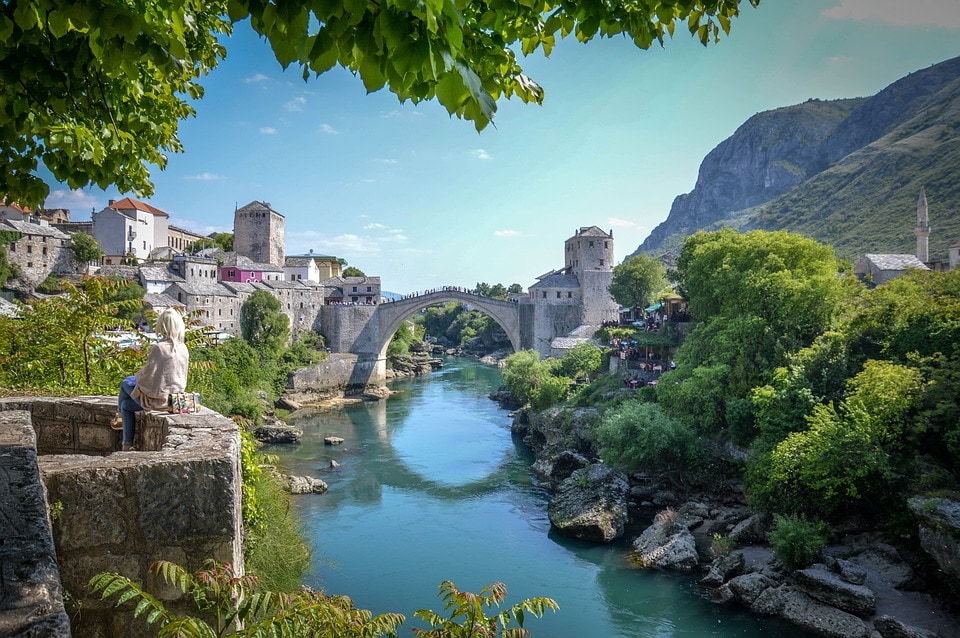
Moving onto your next country in the Balkans, Bosnia & Herzegovina came into the public eye in the 90s due to the Bosnian War. Today it’s a lively off-the-beaten track destination that is safe for visitors to soak in the diverse culture.
Unlike tourist-heavy Croatia, Bosnia & Herzegovina is yet to have a tourist boom and therefore makes for a great destination for those who like a more intimate experience.
You can start your journey in Mostar before heading into the capital of Sarajevo. Mostar is a quaint city that’s known for its iconic UNESCO-listed Stari Most (Old Bridge) surrounded by mountains and greenery. Explore the alleyways on foot and find some hidden gems before walking up the hills for some panoramic views.
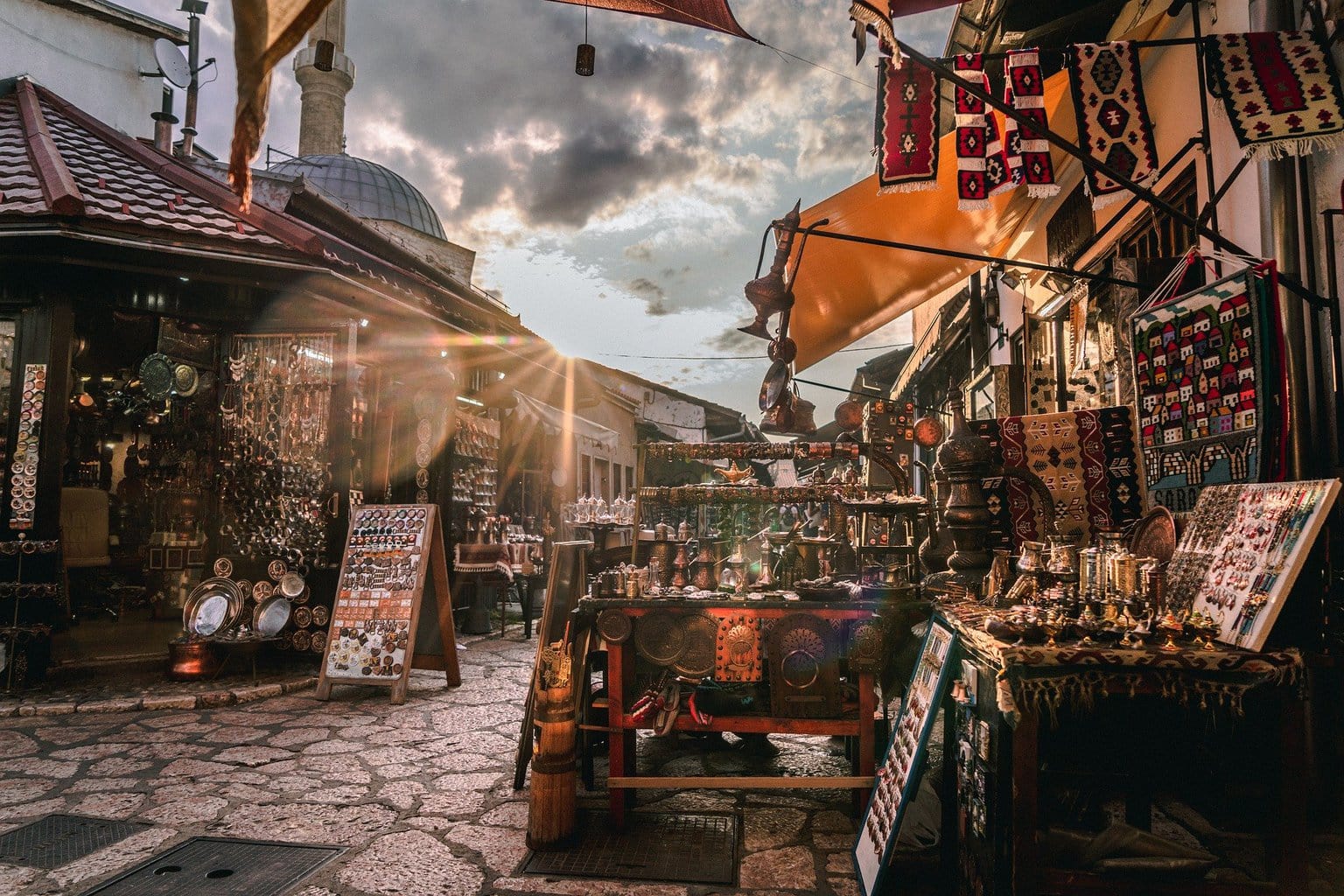
Previously war-torn Sarajevo is now completely restored to its former glory where east meets west – think Vienna paired up with Istanbul. While not too touristy, it still caters for foreigners with information booths and guides to the many churches, mosques, museums, amazing cafes and vibrant nightlife.
Stroll through the cobbled streets of Baščaršija and look out for the 100 “Sarajevo Roses” which commemorate those who lost their lives in the war. A walking tour is a must! And you should definitely educate yourself on the Bosnian War before heading into the country. Read up more about it here .
21. Kotor, Montenegro
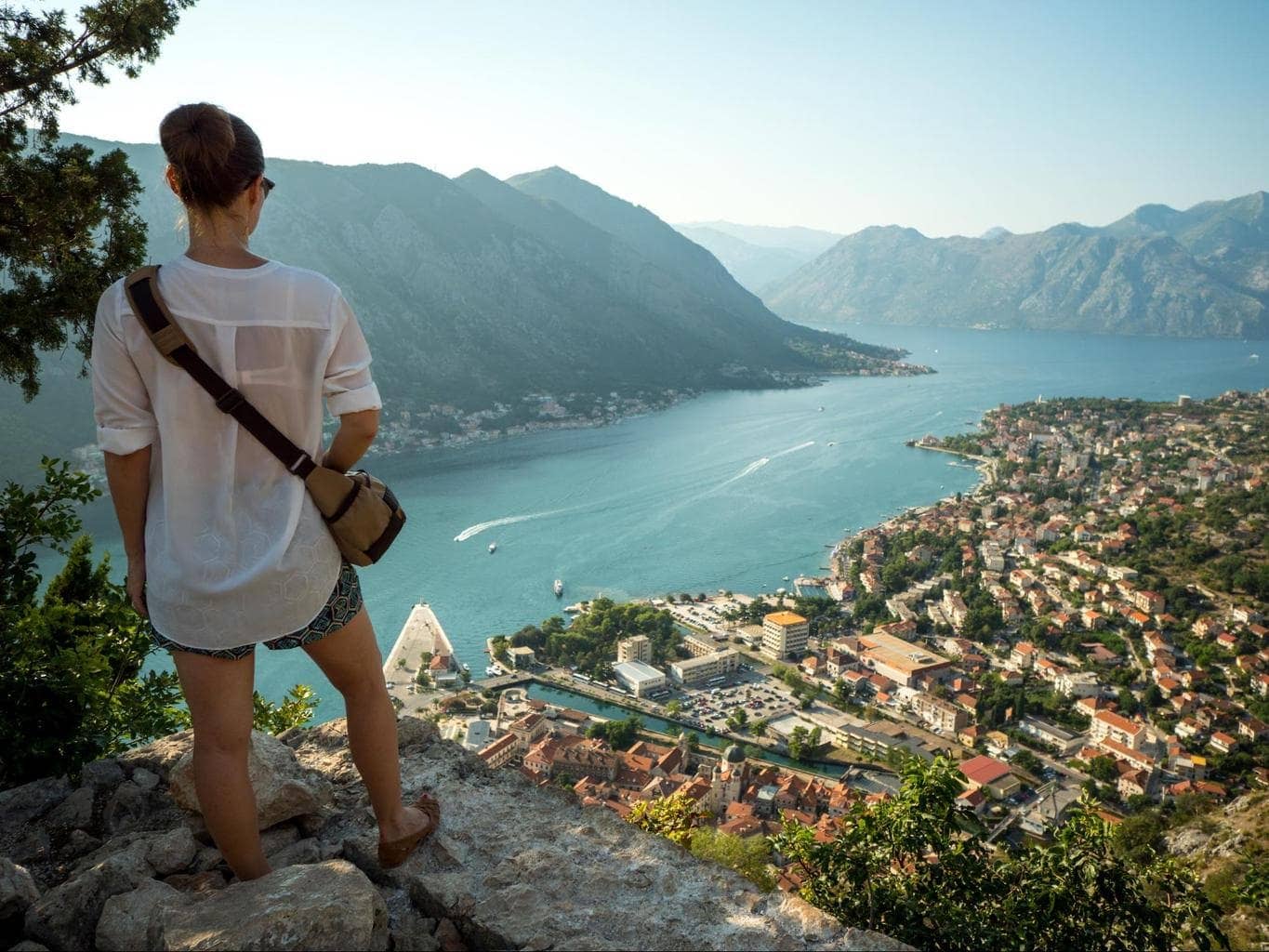
Back to the coast, you’ll head to the south of gorgeous Montenegro . This is the best place to go in the Balkans for sun, sand and sea as it’s way less packed than neighbouring Croatia.
The quaint UNESCO-listed fortified city of Kotor is a great place to have a moment of respite as you wander through the cobblestone roads or perhaps walk up to St. George Fortress for a spectacular view of the idyllic bay below.
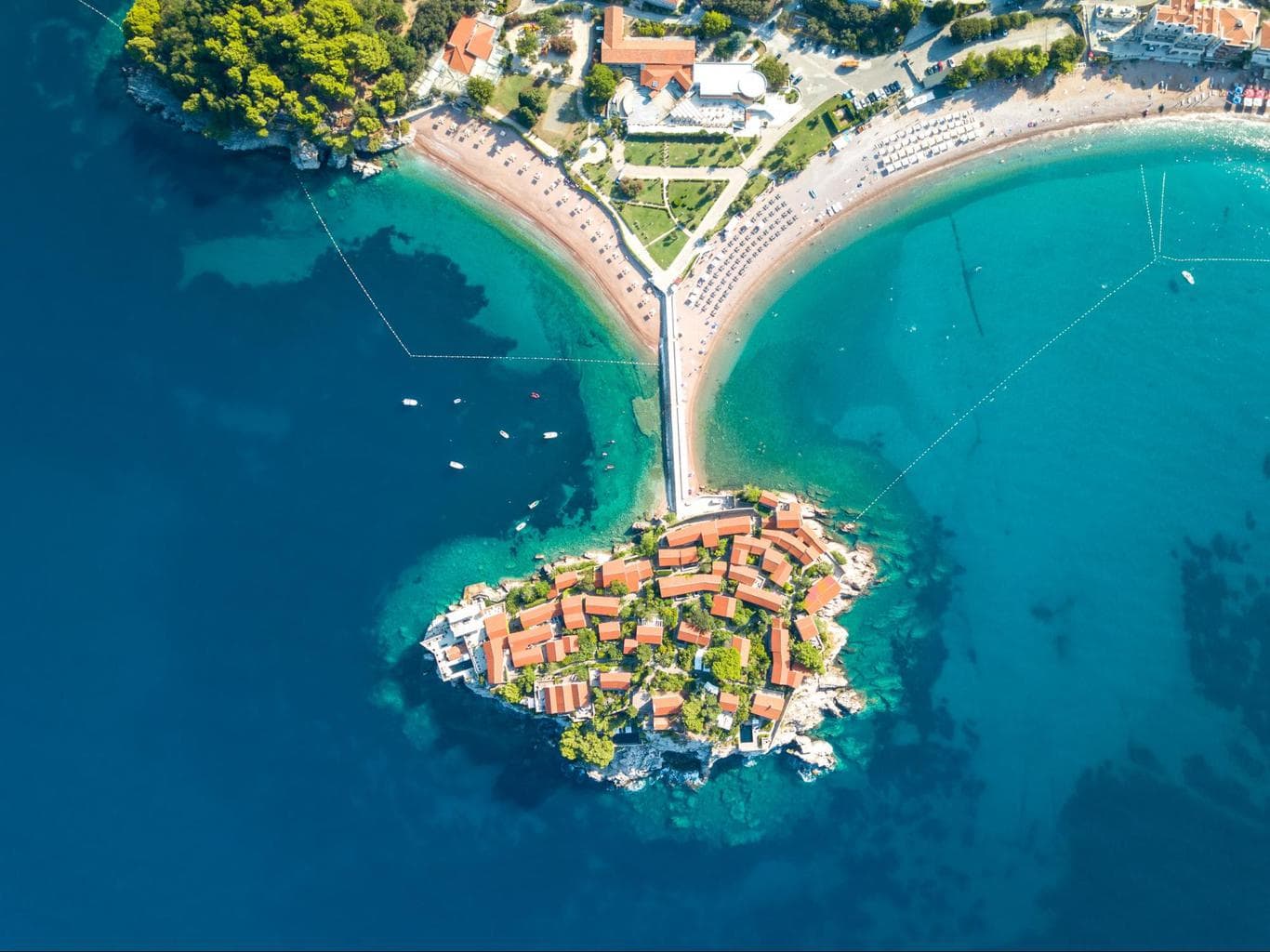
You could also choose to explore some of the many picture perfect beaches of Montenegro , take a day trip to the uber luxurious and iconic Aman Sveti Stefan , or make your way to the humble oceanside towns of Rose, Perast or Ulcinj. Montenegro also has a very unique local cuisine which is always fresh and super delicious.
22. Tirana, Albania

Similar to Bosnia and Herzegovina, Albania has a difficult and tumultuous past. After the fall of long term and extremely paranoid dictator, Enver Hoxha, the country has tried to rebuild itself as a center for arts and the freedom of expression.
You’ll see graffiti all around the country, particularly in the capital of Tirana, where it is encouraged to turn the dreary blocklike buildings into a sign of hope for the future.
The Bunk’Art museums in Tirana are a perfect example of this change, where underground bunkers built by the Hoxha regime were converted into exhibition and learning spaces.
Beyond the beautiful Tirana, there is so much to see in Albania, from idyllic Albanian beaches to gorgeous castles (look for Rozafa, Prezë and Kruje Castles), or ancient architecture in Berat , Durres and the Greek ruins at Archeological Park of Apollonia – a UNESCO heritage site .
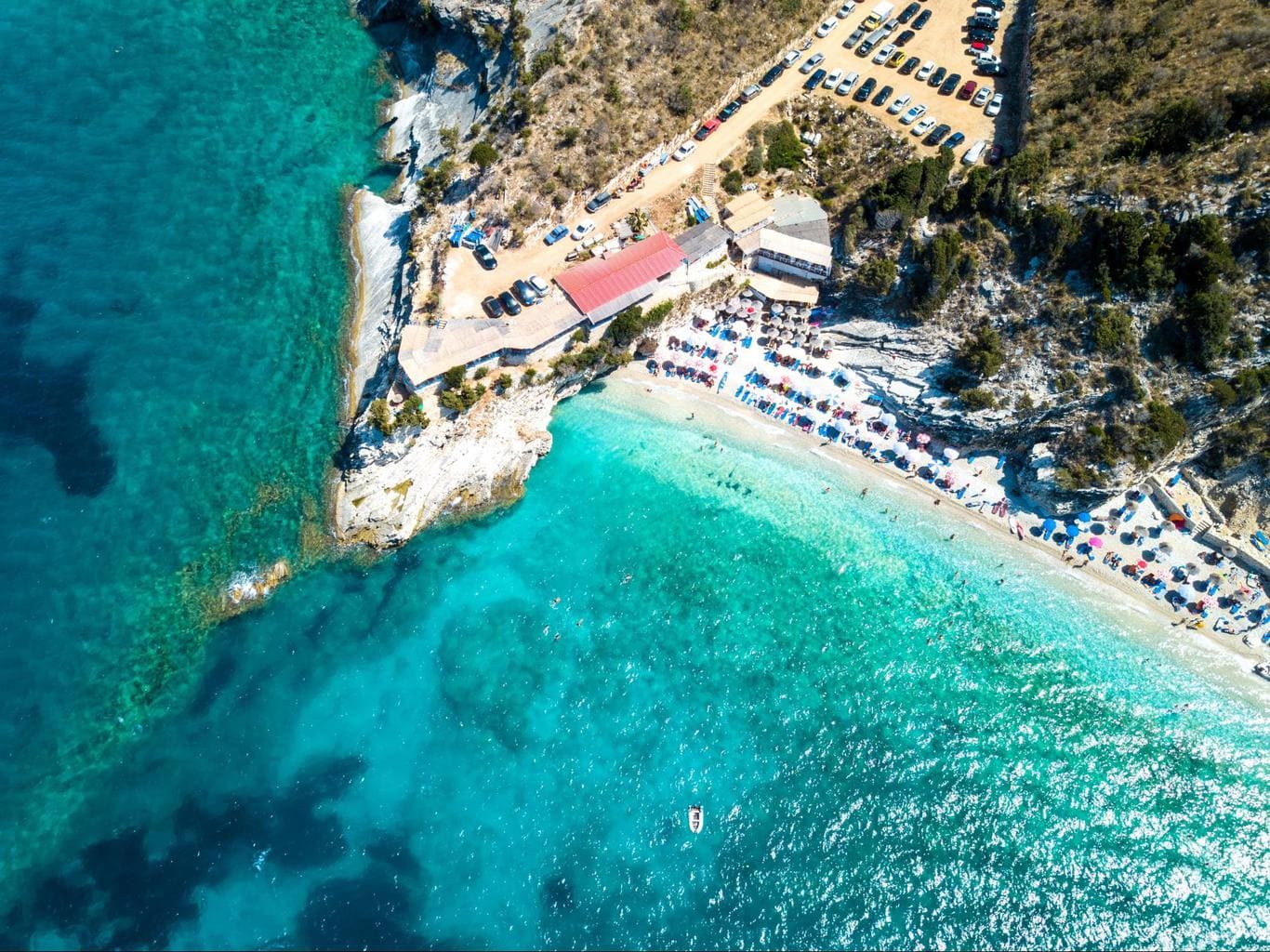
Need some more help? I have written articles on fun facts about Albania , the best food in Albania , as well as a complete travel guide to Albania and things to do in Tirana .
23. Ohrid, North Macedonia
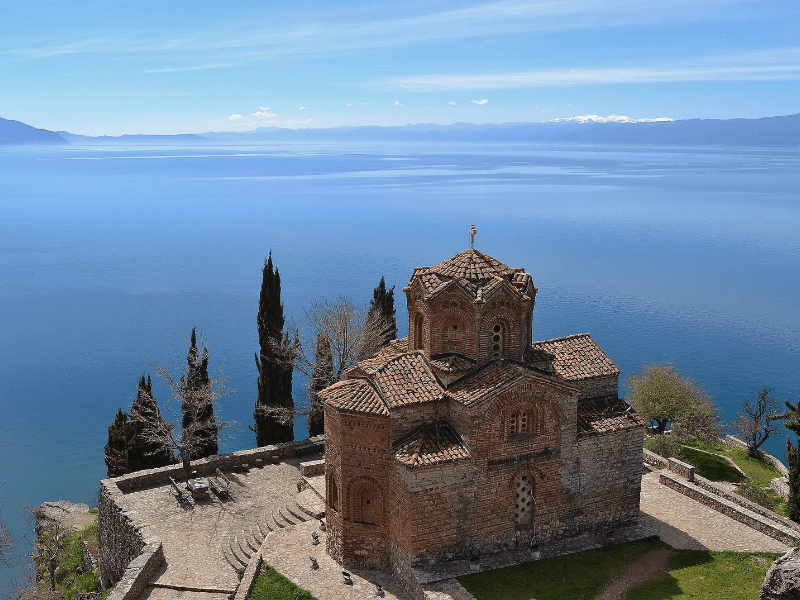
Before venturing into the Land of the Gods, you’ll be making a stop at the sleepy resort city of Ohrid, Macedonia. You’ll come back to the capital of Macedonia, Skopje, a bit later in the journey.
This is your chance to completely relax from the frantic sightseeing and driving – wine glass in hand, platter of cheese and cold cuts in front of you, while gazing deep into the vast expanse of UNESCO-listed Lake Ohrid .
If you can get off the view, take a stroll in Old Town, a boat tour around the lake or walk along the ancient Somoil’s Fortress and picturesque St. John the Theologian Church for more epic views.
24. Thessaloniki, Greece

Cruising into Greece, you’re going to stay in the north, stopping halfway at Thessaloniki. This port city, straddling the Thermaic Gulf of the Aegean Sea, is a glimpse into the country’s past.
You can see Roman, Byzantine and Ottoman remains, particularly if you venture into the upper town of Ano Poli . While parts of the city were destroyed in the Great Fire of 1917 , some ruins remain like Roman Emperor Galerius’ 4th-century palace. Munch on local street food koulouri Thessalonikis and pop open a local wine from the nearby Naousa appellation .
25. Istanbul & Ankara, Turkey
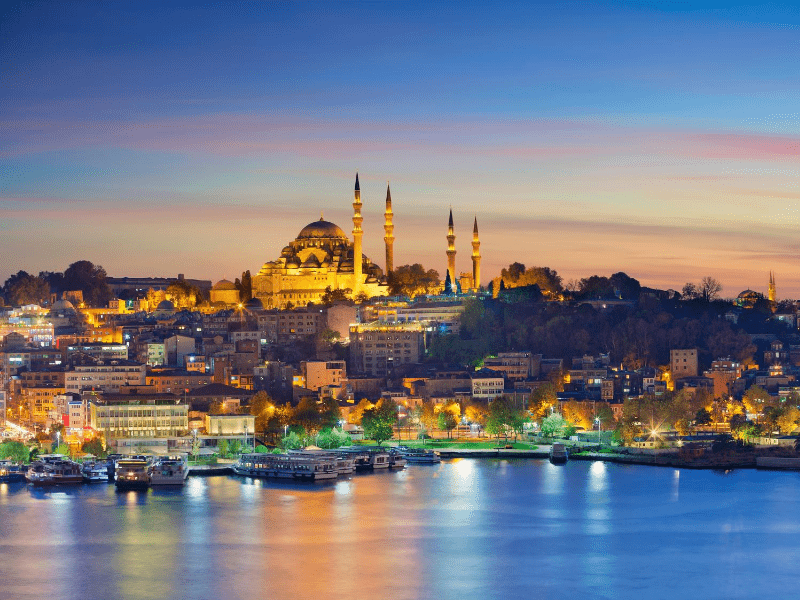
You’re now on one of the longest stretches on your trip which is from Greece through Turkey and onto Georgia. You can space out your long drive by stopping first at energetic Istanbul and then in Ankara, the cosmopolitan capital.
Istanbul is the confluence of East meets West, of Europe and Asia, all in one. The fantastically fascinating Old City will give you a glimpse into the past.
Explore the Sultanahmet district which houses the Roman-era Hippodrome (think chariot races), Egyptian obelisks, the epic Blue Mosque and the jaw-droppingly beautiful Byzantine Hagia Sophia . Don’t miss the Grand Bazar for some local delights.
Ankara is more about the present and has a thriving performing arts scene. This is your chance to dress up and go to the Opera, Ballet or see a show at the Presidential Symphony Orchestra . Before the show make sure to visit the grand Anıtkabir , the mausoleum of Mustafa Kemal Atatürk, the first President of the Republic of Turkey.
26. Tbilisi, Georgia
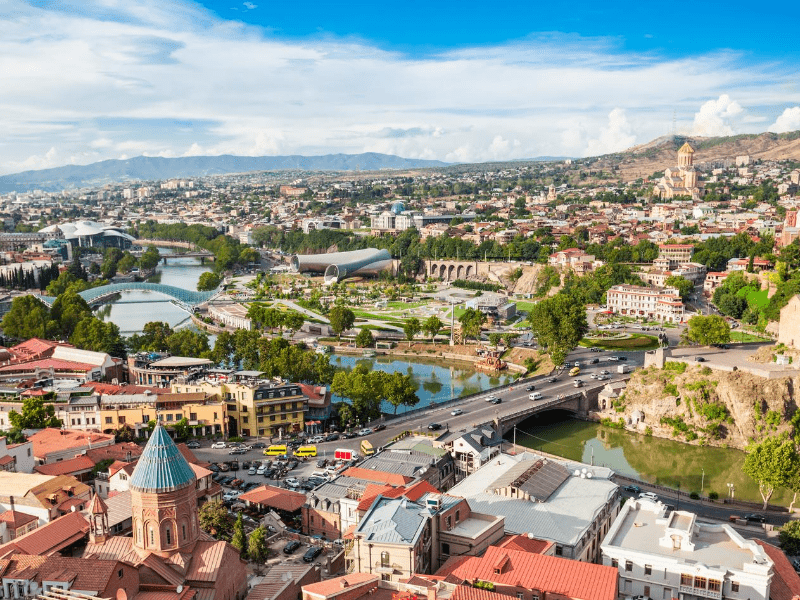
After a very long drive through the Turkish countryside, you’ll finally cross the border to Georgia, which was once part of the Soviet republic. Today, due to providing 365-day visas on arrival, Georgia has become a digital nomad hotspot if you need to get some work done or meet like-minded travelers.
Georgia is famous for its black sand beaches, the quaint Caucasus Mountain villages and Vardzia, a sprawling cave monastery dating to the 12th century.
Yet you’ll be stopping in the capital landlocked city of Tbilisi where you can wander through the maze-like cobblestoned roads of old town or hike up the scenic Narikala Fortress to see the blend of art nouveau buildings, Soviet Modernist structures and Eastern Orthodox churches.
27. Sheki & Baku, Azerbaijan
Azerbaijan, known as the Land of Fire and the birthplace of crude oil, is a place where East meets West, where Asia and Europe are both present but do not dominate, at once modern and a well-preserved history.

Make a culinary pitstop in Sheki, a small but gorgeous historic town on the ancient Silk Road route. You can taste some of the best local Azerbaijani food like piti and halva in a Caravanserai before moving onto the capital.
In Baku you will experience some of the most luxurious hotels in Azerbaijan like the Fairmont Baku Flame Towers , modern architecture like Zaha Hadid’s Heydar Aliyev Center , and ancient natural wonders like the volcanoes.
Little known fact about Azerbaijan , it has 45% of the world’s mud volcanoes! For a closer look, read my article on the top things to do in Baku and Azerbaijan .
28. Yerevan, Armenia
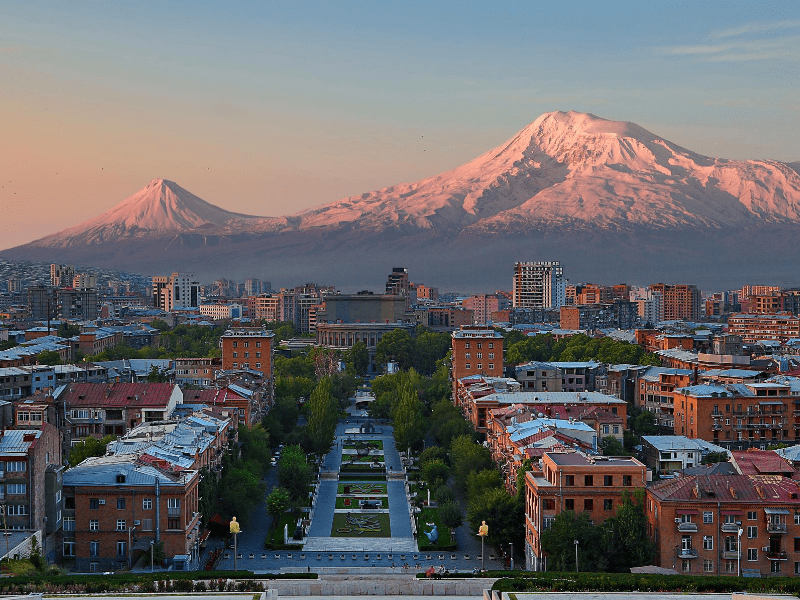
Yerevan, Armenia’s capital, is your next stop on this epic European road trip. The imposing Soviet-era architecture will astound you and its history will amaze. Make a stop at the Matenadaran library , where you will find thousands of ancient Greek and Armenian manuscripts.
Then head over to the vibrant Republic Square to watch the musical water fountains. Learn a bit more about Armenia’s past at the History Museum of Armenia with artefacts dating back to 3500 BC.
Note on feasibility : The itinerary considers that you return to Georgia from Armenia and then enter Russia by crossing the disputed territory of Abkhazia, however, at the time of writing, that is not possible. Instead, you should leave Georgia to the north at Kazbegi and enter Russia at Vladikavkaz and then retake the route. Thank you to Alastair Gill for pointing this out.
29. Sochi, Russia
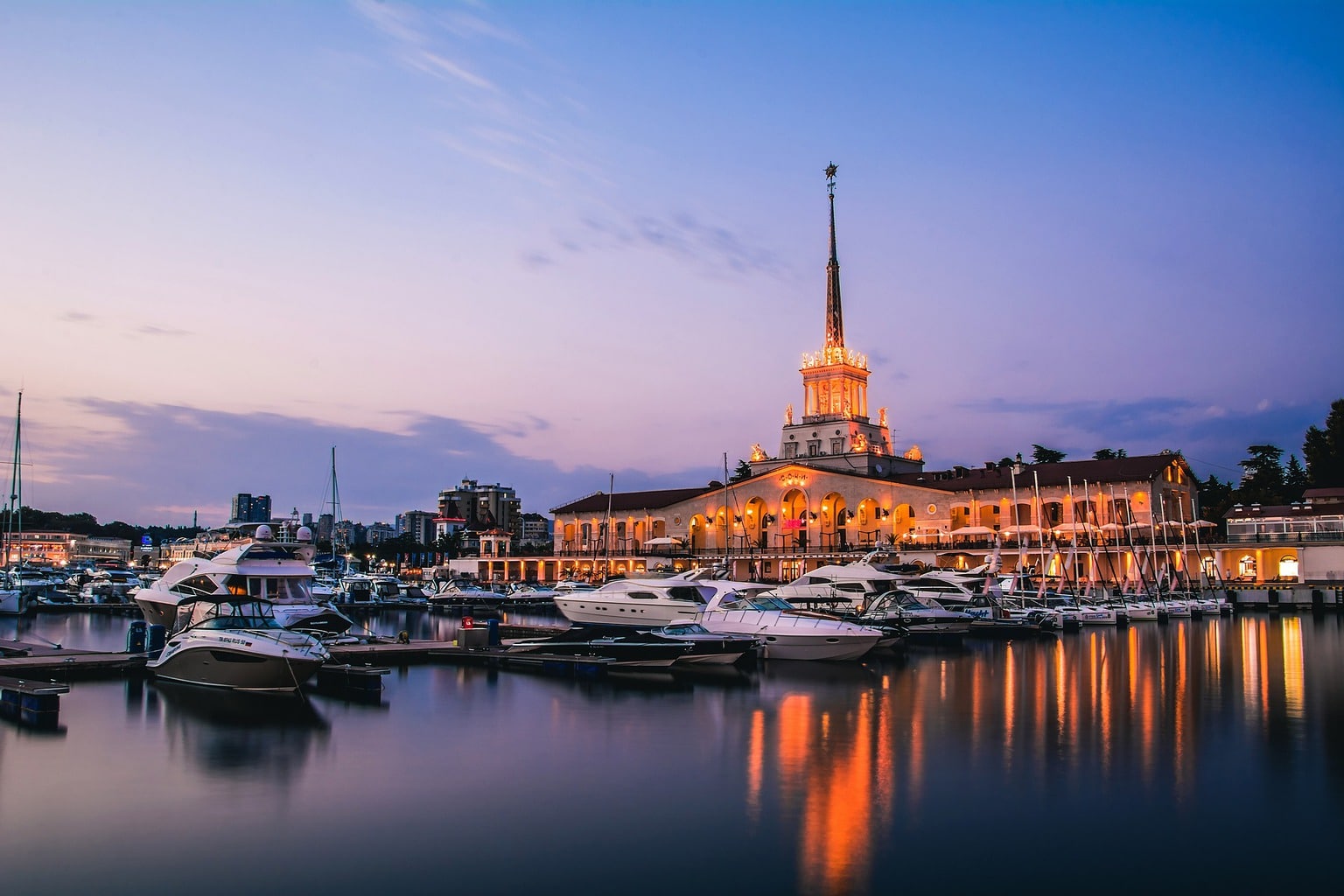
As you may know, Russia is absolutely massive. In fact, at 17 million sqkm it’s the largest country in the world , by far.
To put it in perspective, the 2nd largest country, Canada, stands at just under 10 million sqkm. In order to fit Russia into your road trip of Europe, you can travel to Sochi, along the Black Sea and far from the capital Moscow . Sochi is around the same distance between Armenia and the Ukraine.
You may know Sochi best as the home to the 2014 Winter Olympics, but in summer it’s also a popular beach resort destination. The 1,937sqkm Forested Sochi National Park is a must for nature lovers. Interested in ditching the car and catching the train? I’d definitely recommend either the Golden Eagle on a once in a lifetime trans-Siberian journey .
Note on safety and feasibility of this portion : At the time of writing, the itinerary passes through the disputed territory of Crimea. Entering Crimea from Russia is possible but, if you plan to continue driving into Ukraine, as shown in this itinerary, you would be entering Ukraine illegally. Likewise, crossing from Russia into Ukraine is currently difficult given the security situation. The safest and easiest way to drive from Russia into Ukraine involves driving farther north on the border between the two, possibly near Kharkiv or Sunny and then driving down to Odessa to continue with the itinerary. Thank you to Alastair Gill, Igor Gakalo and Justin Golden for share their experience.
30. Odessa & Kiev, Ukraine
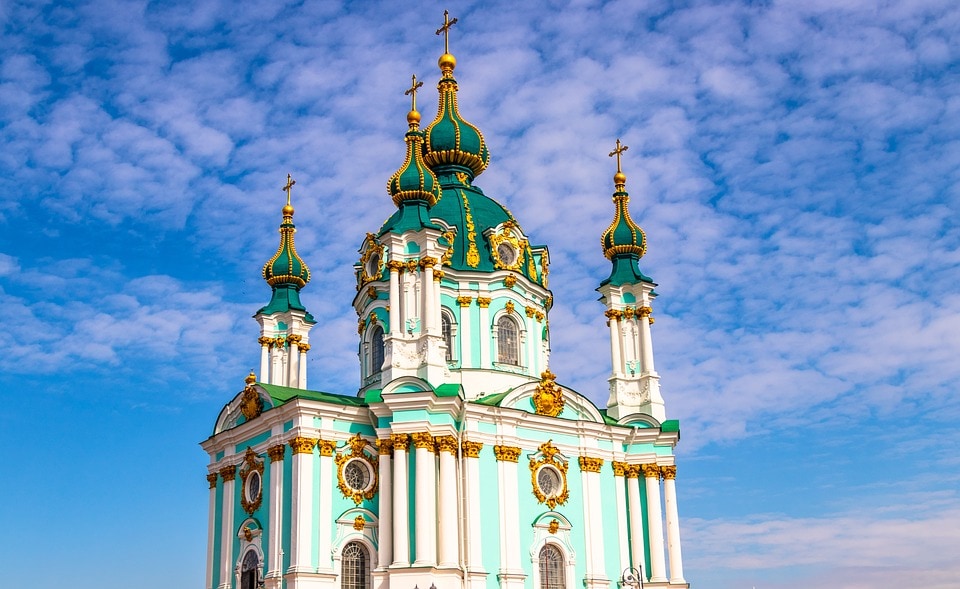
Traveling along the Black Sea, you’ll cross the border over into the port city of Odessa. You’ll get to relax on one of the many beaches or watch a performance at the Odessa Opera and Ballet Theater.
Film fanatics will tick an activity off their bucket list as they climb the iconic Potemkin Stairs, immortalized in The Battleship Potemkin . Saunter along Primorsky Boulevard with monuments and mansions.
Next up is Kiev, an important industrial, scientific, educational and cultural center of Eastern Europe. It’s a pedestrian-friendly city with amazing public transport and a metro. So you can visit all the most beautiful monuments quite easily.
Marvel at Eastern Orthodox Christianity’s most important landmark Pechersk Lavra , which is a complex of churches, bell towers and subterranean caves and contains a host of UNESCO heritage sites . Look up to see notable monuments like Maidan Nezalezhnosti or The Motherland Monument and then finish with a stroll in Hryshko National Botanical Garden .

Before crossing the border to Minsk, you should make a stop in Chernobyl, an historical destination where you can learn about humanity’s flaws, particularly the nuclear power plant accident from 1986 .
You will need to go on a tour of the abandoned city in a hazmat suit, but it is safe due to stringent precautions. It is a sobering experience and definitely one that will stay with you. Learn more about Chernobyl from the recent HBO docuseries.
31. Chișinău, Moldova
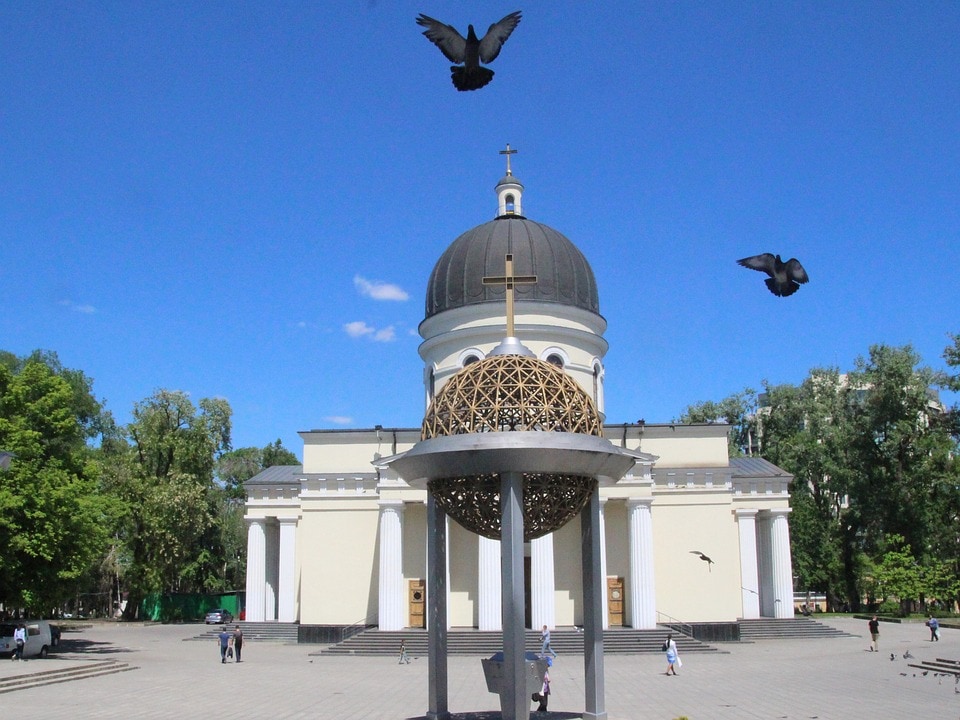
Adding Moldova to your European road trip will have you taking a bit of a detour. Instead of going straight from Odessa in the south to Kiev up north, you can make a pit stop in Chișinău between the two.
The capital of Moldova is an up and coming destination, but still one of the least visited in Europe . It’s a pedestrian-friendly city where you can soak up the local culture at Piata Centrala, Stephan the Great Central Park or Valea Morilor Park. There are also a few landmarks to spot like the neoclassical Nativity Cathedral or the dome-topped Chișinău’s Cathedral Park.
32. Minsk, Belarus
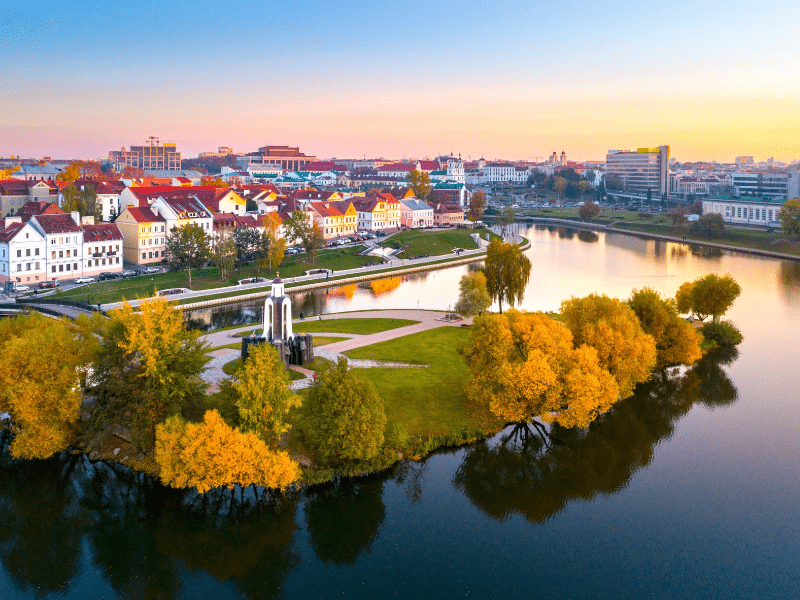
Belarus is definitely not one of the most sought after European road trip destinations, but it surely has its own charm. At first it may seem like there is not much to do in the capital city of Minsk, but the attractions could keep you busy for about 2-3 days.
Like most post Soviet Union countries, one of the top things to do in Minsk is to admire the Soviet architecture, particularly walking along Independence Avenue.
Main structures include the Central Post Office , Palace of the Republic , Nyamiha Shopping Center, the National Academic Bolshoi Opera and Ballet Theatre and even an incredible Soviet bas-relief above a KFC.
There’s also a quaint Old Town, shopping at a GUM (department) store, visiting Mir and Nesvizh Castles , and checking out the hip cafes and street art near trendy Kastrychnitskaya street.
33. Vilnius, Lithuania
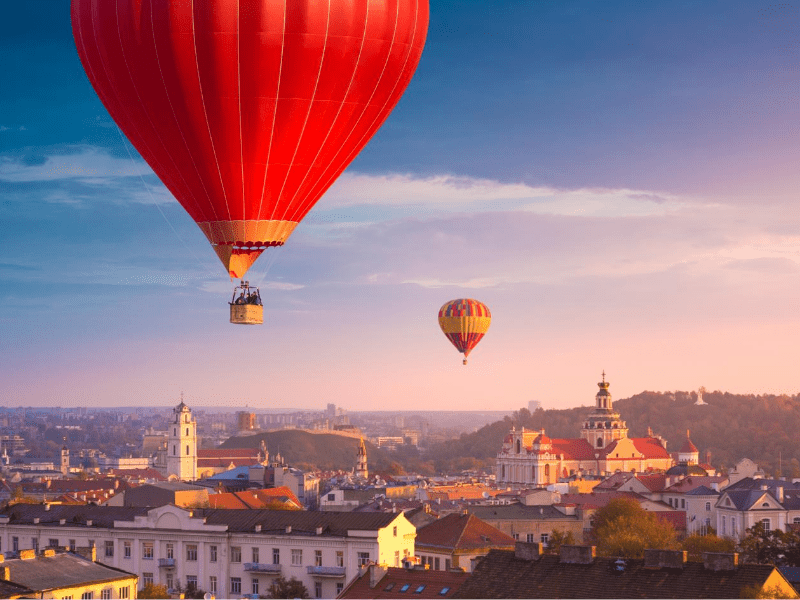
Another city where you can find astounding architecture is Lithuania’s capital Vilnius , a UNESCO heritage center . Architectural styles from all periods can be found here. And did you know you can go on a hot air balloon ride over the city? Amazing.
Strolling along the cobblestoned streets of Old Town you’ll come across the beautiful baroque Gate of Dawn and Basilian Monastery, neoclassical Vilnius Cathedral and Gothic St. Anne’s Church (and so so much more!).
Get your green fix at Bernardine Park , open air museum Europos Parkas or atop the Hill of Three Crosses for panoramic views. Shop local at Hall Market and explore the multitude of museums.
34. Riga, Latvia
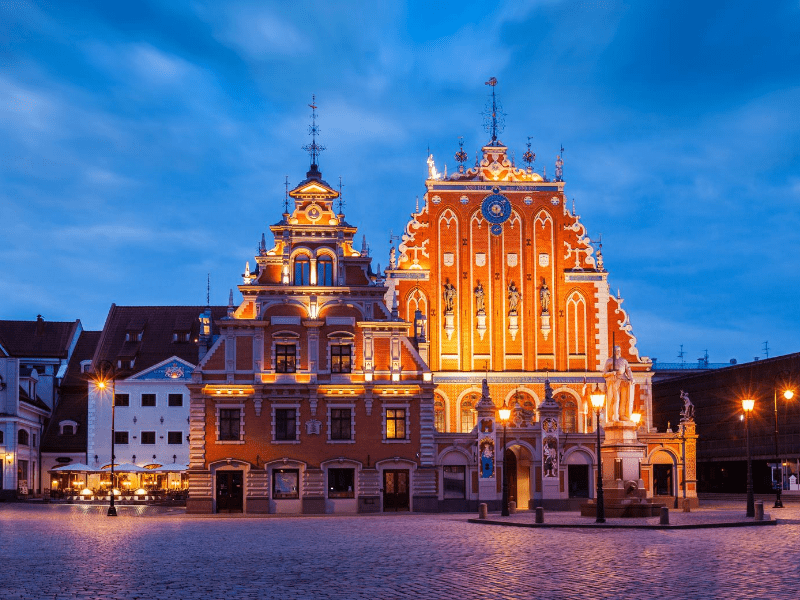
From one capital to the next, this time you’ll be visiting Latvia’s Riga, the largest city in the three Baltic states.
You may be a bit tired of perusing all the amazing buildings of Vilnius, and Riga is just the right place as it’s a youthful city with a pumping nightlife, hipster eateries and thriving alternative scene. Maybe you’ll take home a bottle of Riga Black Balsam , a bitter but slightly sweet liqueur made in oak barrels.
Before partying it up, take in the old centre of Vecrīga, with its maze-like streets filled with restaurants, museums and nightspots, Medieval churches and is also a UNESCO World Heritage Site .
But of course, there is more than enough architecture too to keep you happy from the vibrant House of the Blackheads to the world’s largest collection of Art Nouveau buildings, particularly those by “Riga’s Gaudí”, Mikhail Eisenstein .
35. Tallinn, Estonia
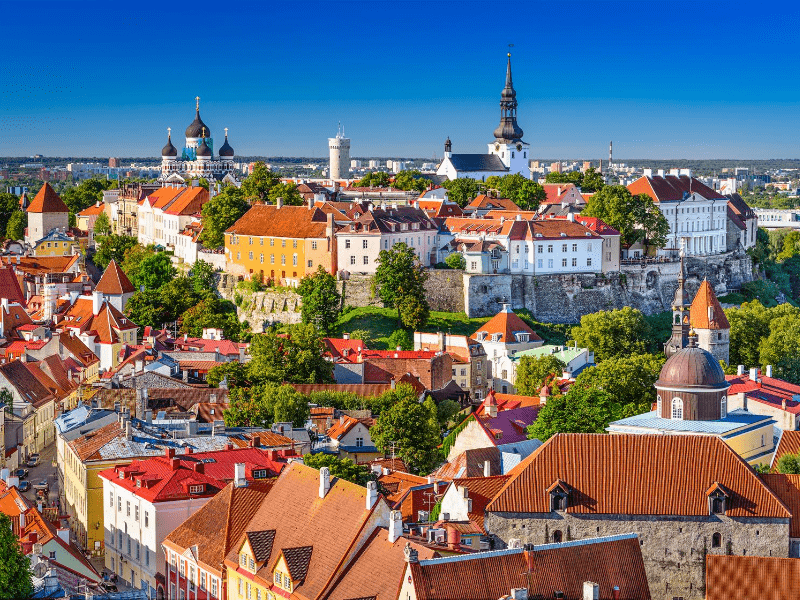
Your final Baltic State before crossing over to Northern Europe is another cultural hub right on the Black Sea. Tallinn is for creatives.
Starting at Telliskivi Loomelinnak (Creative City) where you’ll find Fotografiska (home to fine-art photography), venture onto PROTO Invention Factory for a look into the history of inventions and then end off at Kumu Art Museum which won European Museum of the Year in 2008.
Cafe hop as you pass ancient monuments like Kiek in de Kök , Gothic-structured Town Hall or 13th-century St. Nicholas Church.
36. Helsinki & Rovaniemi, Finland
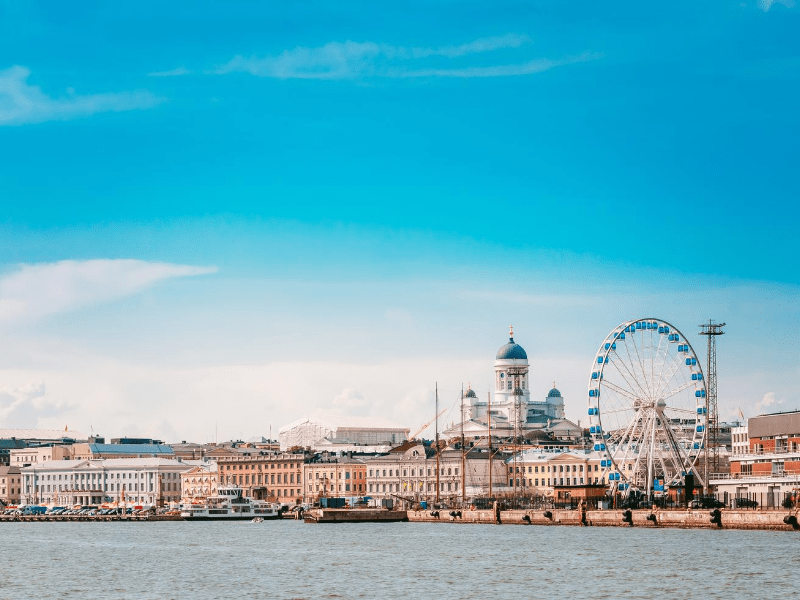
Take the 2 hour ferry ride across the Gulf of Finland where you’ll end up in its capital, Helsinki. You can continue your cultural adventure by taking a walk along the Mannerheimintie, with its multitude of institutions like the National Museum , grand Parliament House and Kiasma contemporary art museum.
Temppeliaukio Church is out of this world (think Auroville in Pondicherry or Iglesia El Rosario in El Salvador ) and Suomenlinna , a giant maritime fortress spread across seven islands, is man-made marvel. Red-bricked Uspenski Cathedral is also stunning.
In Helsinki, take the option of a ferry ride to St. Petersburg and avail of the 3 day free visa option to explore Russia’s grandest city.
You wouldn’t want to leave Finland without making a trip to Rovaniemi. Why? Because it’s the official home of Santa Claus!

That’s right, the capital of Lapland is also home to one of the most beloved figures. There’s Santa Claus Village , SantaPark , Santa Claus Office and even Santa Claus Reindeer where you can meet the friendly helpers. Beyond all things Santa there is also lots to do from Arktikum Science Museum , Rovaniemi Art Museum , and of course Angry Birds Park !
Rovaniemi is also your chance to experience an authentic Finnish sauna, munch of some pulla (Finnish cardamom bread), and glimpse the Northern Lights.
37. Stockholm, Sweden
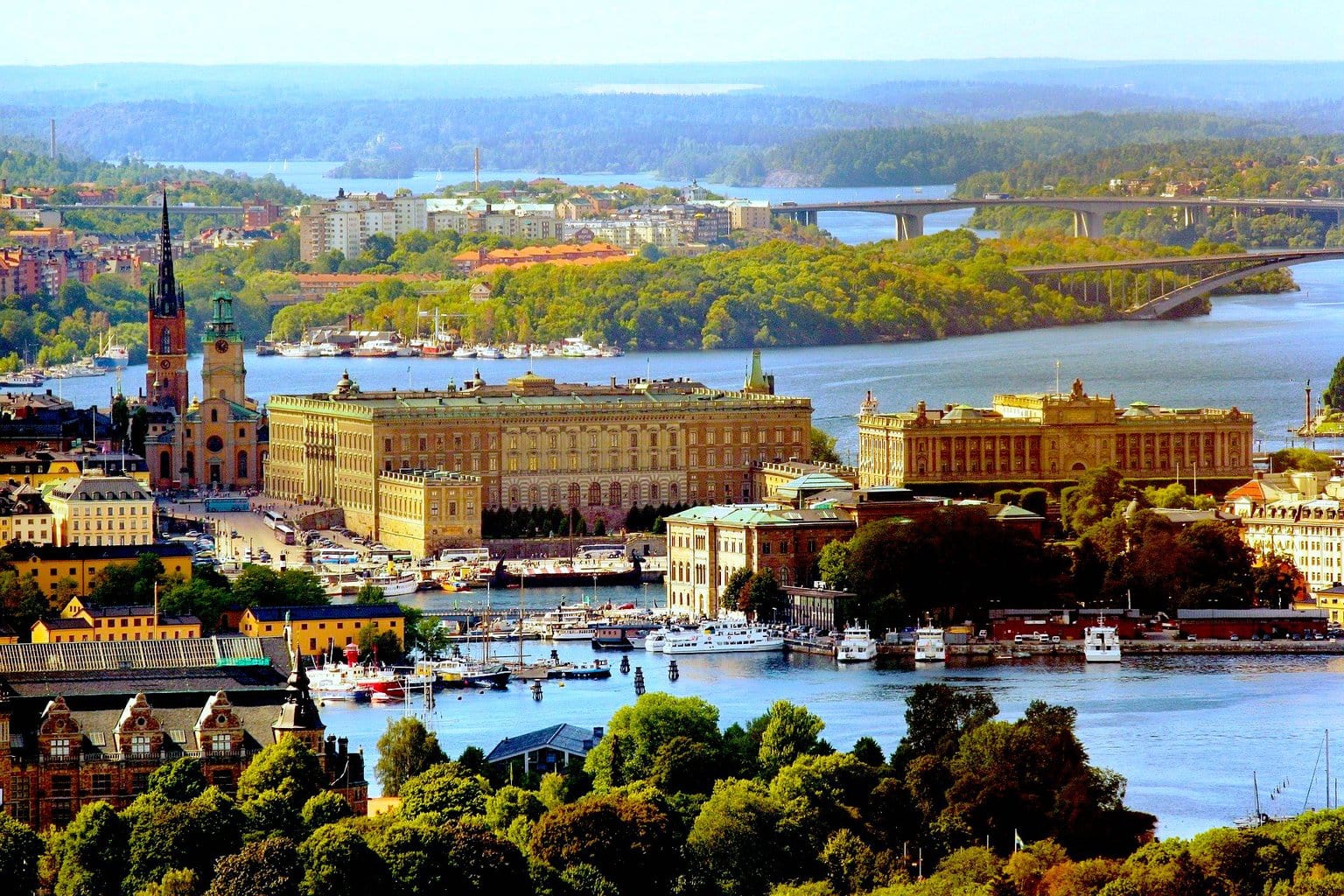
Journey down the coast of Sweden along the Gulf of Bothnia all the way down to the Baltic Sea where you’ll find the capital, Stockholm. What many travelers to Stockholm might not know is that the capital city actually encompasses 14 islands with over 50 bridges. So the best way to see it all is to hop on the various ferries or sightseeing boats between the islands.
Like most large European cities, Stockholm has its own old town called Gamla Stan which stands out for its cobblestone streets and ochre-colored buildings.
Notable sites here include the 13th-century Storkyrkan Cathedral (make sure to go inside), the Swedish monarch abode Kungliga Slottet Royal Palace and the Nobel Museum (about the history of the Nobel Prize ).
Get your Mama Mia on at the ABBA Museum , learn about all things nautical at the acclaimed Vasa Museum , or be more contemporary at Moderna Museet . Fashionista’s shouldn’t miss a visit to Södermalm (home to Greta Garbo) for “fika” (Swedish coffee break), boutique shopping, and massive photography gallery, Fotografiska .
38. Oslo, Norway
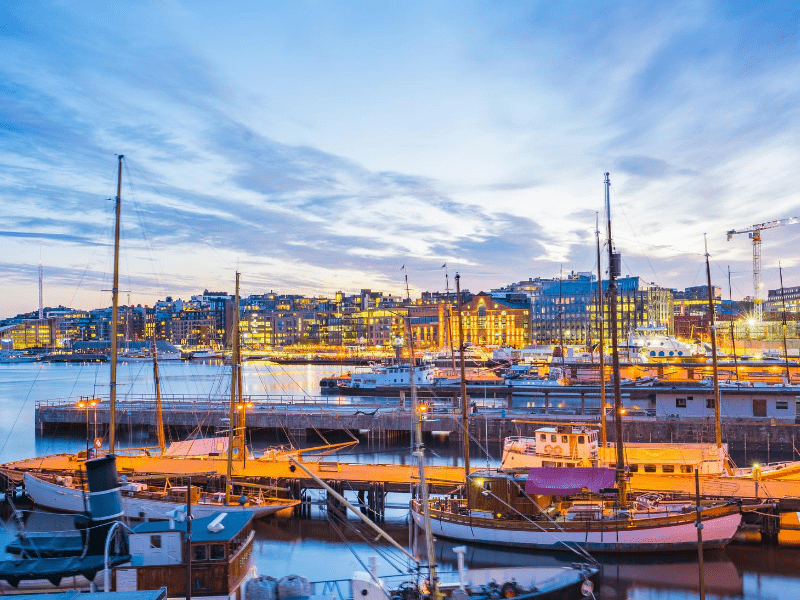
Take in the gorgeous scenic landscapes of Swedish as you travel across the country into Norway. Shortly after crossing the border, you’ll arrive at the capital of Oslo.
Here you’ll find vast green spaces and plenty of museums to explore. Nature is a key part of life in Oslo, so this is a great chance to get out and moving as you won’t want to miss the epic scenery of the forests, walking trails and mountains – all easily accessible by public transport if you want to take a break from driving.
Take a coastal stroll on the Bygdøy Peninsula which has, apart from astounding natural scenery, 5 national museums including the Viking Museum . Saunter around Frogner Park which has some 212 sculptures from artist Gustav Vigeland (as well as an eponymous museum ).
Another major artist with a dedicated museum is Edvard Munch . Learn all about sliding down snow at the Holmenkollen Ski Museum & Tower or see a show at Oslo Opera House . Make your journey complete with a tranquil trip around the Oslofjord.
We would also recommend you add 3 more weeks to your trip and explore the rest of Norway. Check out this website with 18 scenic routes in Norway .
39. Copenhagen, Denmark
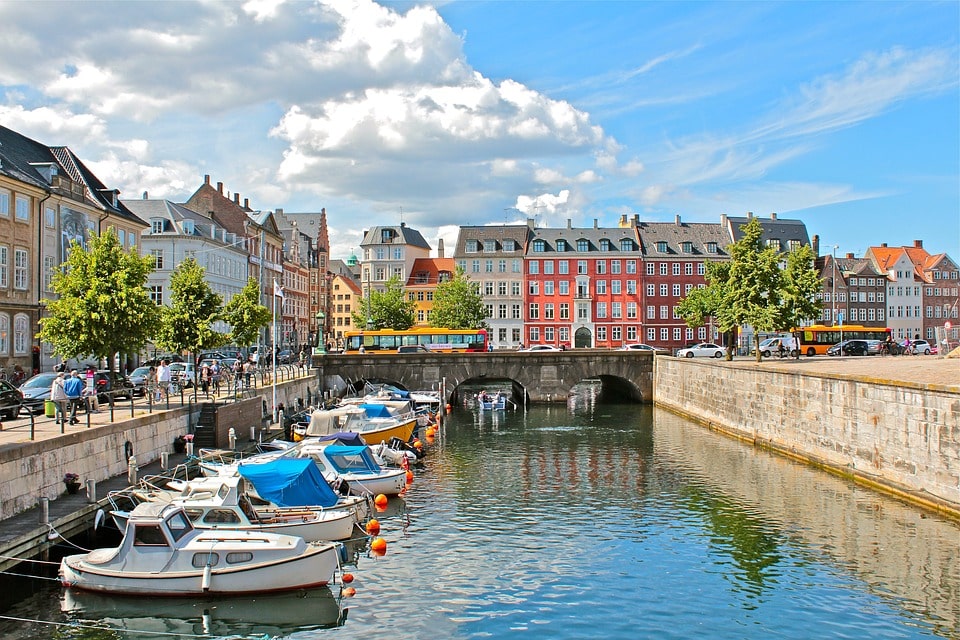
Your epic European road trip continues back into Sweden with an extensive leg of the journey down into Malmö (where you should try their famed kebabs), crossing the epic Øresund Bridge and ending up in Denmark’s capital of Copenhagen. One glimpse at this beautiful city and you’ll see where famed fairytale author Hans Christian Andersen got his inspiration.
Copenhagen has something for literally anyone from amusement parks ( Tivoli Gardens ) to trendy pedestrian streets (Strøget) to Michelin-starred cuisine (23 stars to 16 restaurants in 2020) to arts and culture galore. A short 10km ride to Lyngby-Taarbæk Kommune you’ll find the oldest amusement park in the world called Dyrehavsbakken (“The Deer Pasture’s Hill”), also known as Bakken (“The Hill”).
Rent a bike and do as locals do, explore different areas from Christiania, an old commune, the historic waterfront of Nyhavn and of course the Little Mermaid statue.
If you can, leave your car in Copenhagen and traverse the waters into the tiny island territory of the Faroe Islands – where the roofs are covered in grass , the sheep outnumber the people and the views are epic. This might inspire you to take a trip…
40. North and East Germany
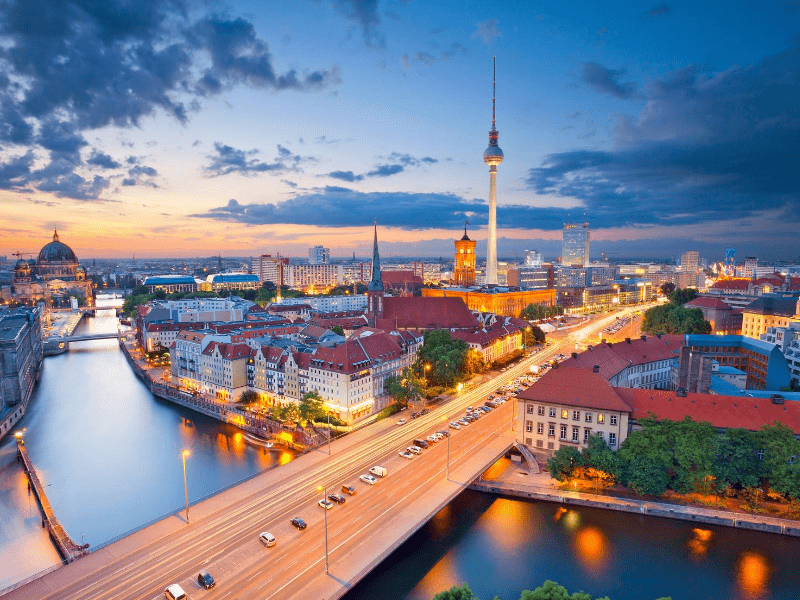
Catch another ferry from Lolland in Denmark to Fehmarn in Germany. The Fehmarn Belt connecting these two destinations through an 18km underwater tunnel has also been approved , so keep on the lookout for its opening.
You will be traveling the North of Germany through such cities as Hamberg, Bremen, Münster, Dortmund, down to the tip of the Rhine, then onward through several states from Lower Saxony, Saxony-Anhalt and Brandenburg which encompasses the capital of Berlin.
Here is where startup owners mingle with vegans, artists and hipsters, Berlin is the center of art and creativity in Germany and well worth a couple of days.
While we only border Germany, you can feel free to venture into the country and explore as much or as little as you would like. Cruise straight through as fast as you can on the Autobahn blaring Kraftwerk ,enjoy sausages and beer and just take it all in.
41. Warsaw & Wrocław, Poland
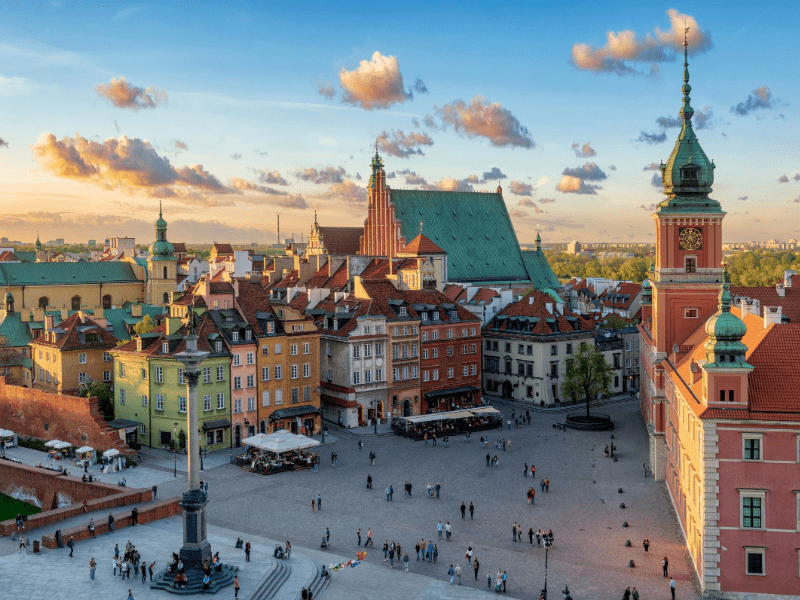
After speeding on the Autobahn and living it up in hedonistic Berlin, it’s time to take it a bit slow as you enter Poland’s capital of Warsaw.
Warsaw is a city to reflect on the atrocities of the Nazi invasion and the aftermath of World War II by visiting the many monuments dedicated to the mass destruction of the city and the people in it. Yet, like a flower through the cracks, the city has been restored to its former glory – a far cry from the rubble of the 1940s.
Old Town and Łazienki Park are particularly beautiful and the many museums will keep you intrigued, like POLIN , Warsaw Uprising Museum or the Copernicus Science Centre (Poland is the birthplace of the famed mathematician who found the sun to be the centre of our universe). Make a pit stop at Wrocław on the Oder River, particularly the Market Square for some more culture, art and elegant architecture.
42. Prague, Czech Republic
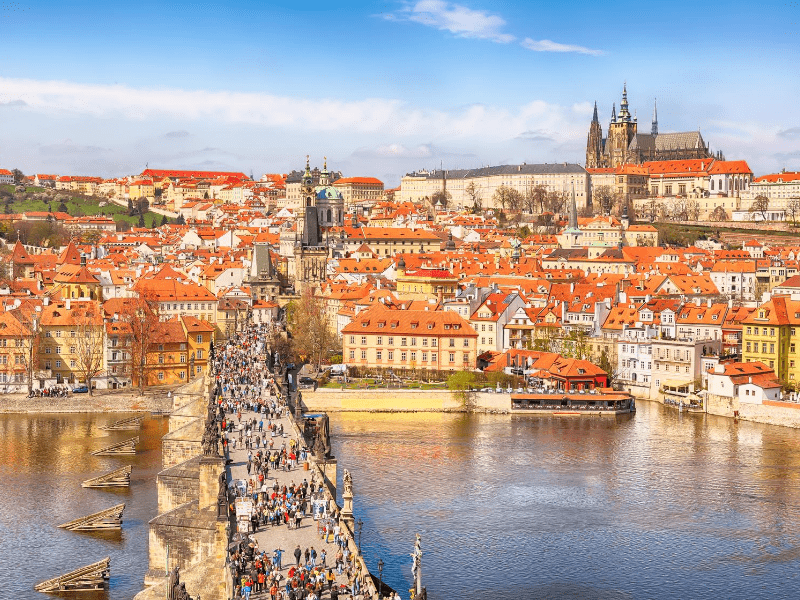
Crossing over to the center of the Czech Republic, Prague is a beautiful city to go around on foot while exploring the unique baroque buildings, Gothic churches and the stunning medieval Astronomical Clock.
It’s a place where art and creativity is thriving from puppetry to jazz, and was also home to writer Franz Kafka (he used to live in Golden Lane) and father of modern psychoanalysis Sigmund Freud . There’s even a statue of him hanging from a pole in Old Town.
Sip some world famous Czech pivo (beer) while gazing at the Vltava river or go the full nine yards by taking a tour of the Czech Beer Museum Tour where you can bottle your own beer. Don’t forget to taste some pork knuckle and pickled cheese before exploring the thriving nightlife.
43. Salzburg & Vienna, Austria
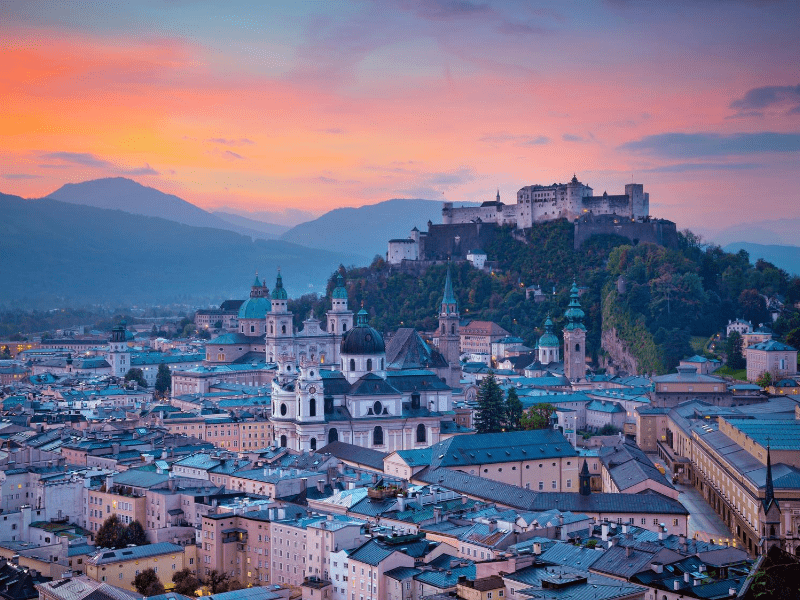
Cross yet another border and you’ll be in the birthplace of Mozart , Salzburg. It is known for having the best-preserved baroque architecture in the old town centre in Europe, which is also a UNESCO World Heritage Site . If you have time visit The Eagles Nest in nearby Berchtesgaden, Germany for an amazing hike and epic views of the Bavarian Alps.
Vienna is the next stop on your epic road trip of Europe, home to the United Nations and the cultural, economic and political center of Austria. It’s known as one of the most livable cities in the world and has a rich history of artists, intellectuals, culture and music. So there will be more than enough to keep you busy for a few days.
44. Bratislava, Slovakia
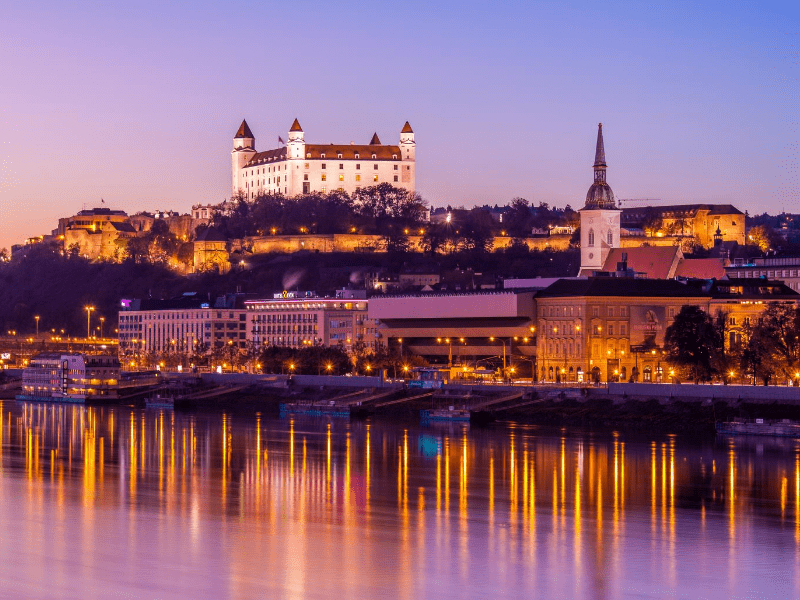
Right on the border of both Austria and Hungary is Slovakia’s capital, Bratislava. So it’s an easy choice to stop here between the two countries.
Get your hiking shoes because this beautiful city has many nature trails on offer through vineyards, the Little Carpathian mountains, and overlooking the breathtaking Danube river. From fairytale castles ( Bratislava & Devin) to sky blue cathedrals to the revitalised Eurovea district , there is surprisingly a lot to take in when visiting Bratislava.
45. Budapest, Hungary
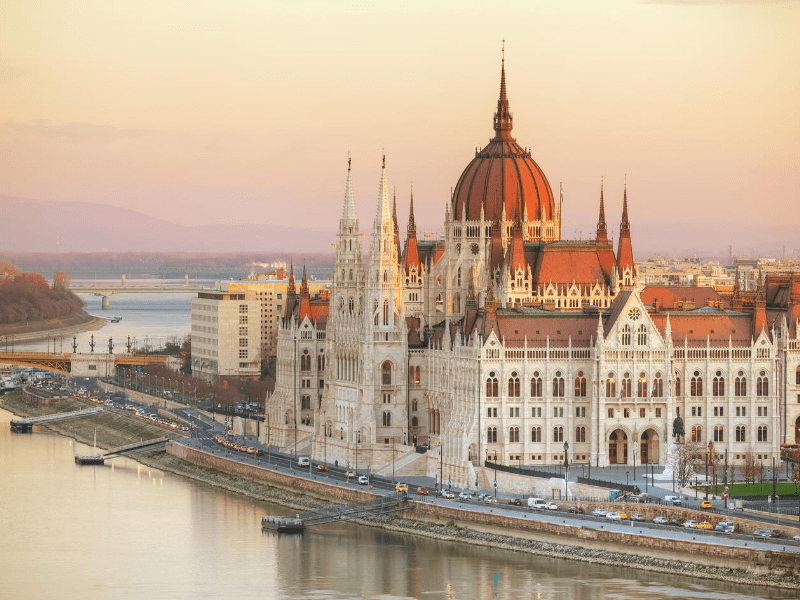
Roll along the north of Hungary until you reach the Danube, which bisects Hungary’s capital Budapest. Interesting fact about Budapest is that it’s actually not one, but rather 3 unified cities.
They are Buda and Óbuda on the west bank of the Danube and Pest on the east bank. Many consider Budapest to be one of the most beautiful cities in Europe and will be a surprising standout of your Europe road trip.
If you don’t know where to start in this gem, try the UNESCO World Heritage Sites like Buda Castle Quarter and Andrássy Avenue. Peruse the gorgeous Parliament Building along the banks of the Danube, or Heroes’ Square and St. Stephen’s Basilica before descending into the infamous Faust Wine Cellars under Buda Castle. Then relax your muscles with a dip in the Széchenyi Thermal Baths or the Gellért Baths .
46. Transylvania and Bucharest, Romania
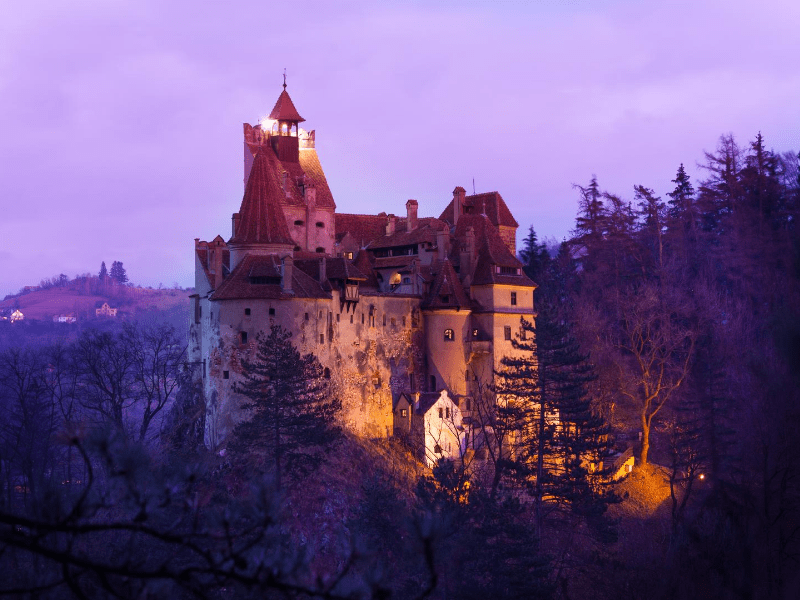
While Transylvania is usually associated with Dracula, Gothic fortresses and churches and baroque buildings, it’s not as spooky as Bram Stoker makes it out to be.
Most of your Transylvania itinerary will be centred around the castles like Bran , Peleș and Corvin , the UNESCO World Heritage Site of colorful Sighișoara and exploring the Turda Salt Mine are equally impressive.
But it is a rather large region of around 102,834 sqkm, so there’s a lot to cover. Hop over to the trendy student area of Cluj-Napoca for a taste of Romanian cool, explore the medieval walls and towers of Sibiu on foot or ski at Poiană Brașov.
Keep going south-east until you reach the capital of Bucharest. Once home to Vlad the Impaler and communist despot Nicolae Ceaușescu , it’s now in a boom with highrise towers and sleek glass facades.
There is still a glimpse of the past among the newer lofty towers. Bucharest has the world’s biggest parliamentary building Palace of Parliament standing at 365,000 sqm and 1,100 rooms. Take a romantic stroll at Cișmigiu Gardens, the cobblestone streets of Lipscani (Old Town) and glimpse a replica of Paris’s Arcul de Triumf, an ode to its former nickname “Paris of the East”.
47. Sofia, Bulgaria
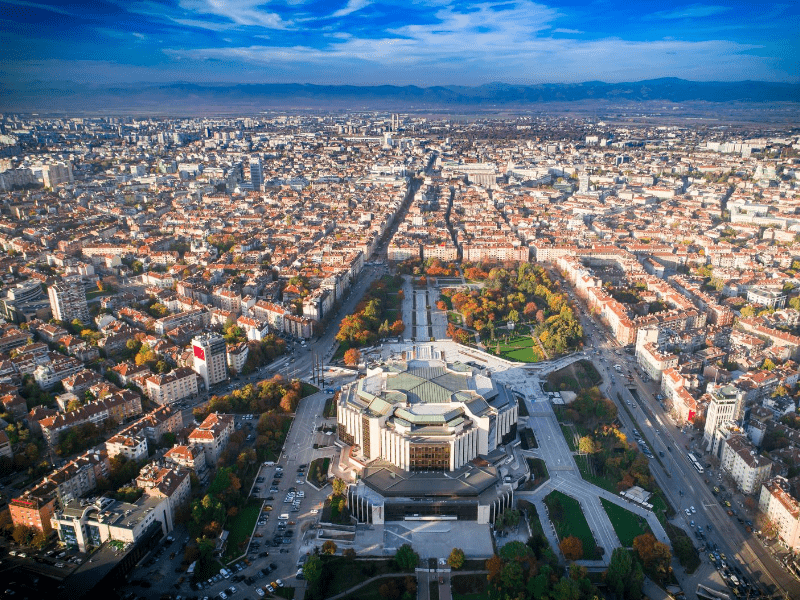
Walking through the capital of the Balkan nation of Bulgaria is like taking a time machine back to almost 2,000 years ago.
Witness Sofia’s history of outside occupation through the Greek, Roman, Ottoman and Soviet landmarks. The city’s history is deep and complicated where mosques have been converted into churches and monolithic soviet structures overshadow newly formed boulevards.
While you can’t dip in, the Central Mineral Baths is a very photogenic spot with an informative museum. Adventurous travelers can ascend the 2,200m Vitosha Mountain.
48. Skopje, North Macedonia
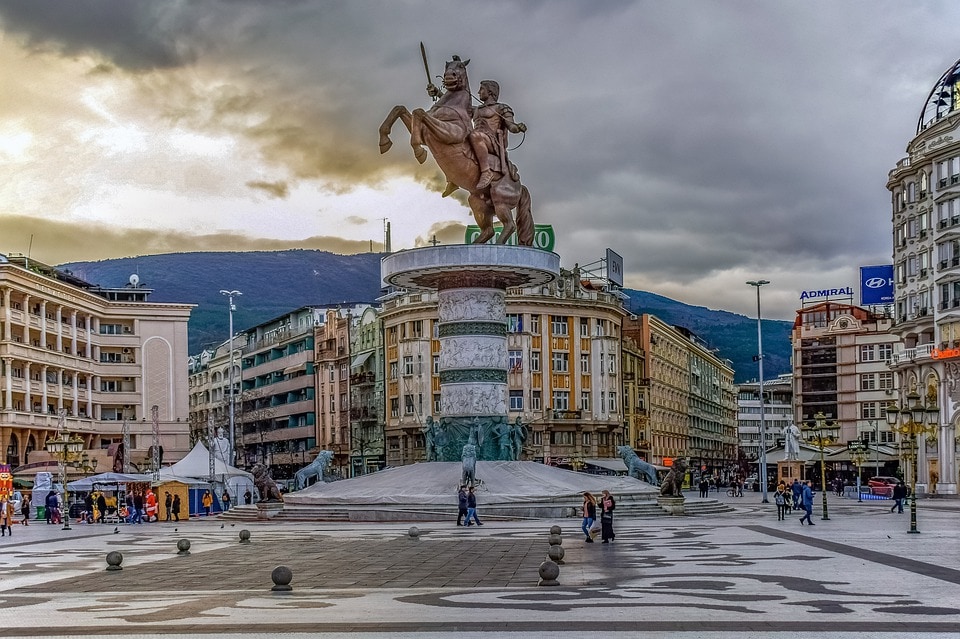
Coming back into North Macedonia, this time you’ll be visiting Skopje, the country’s capital and largest city.
While being the center of politics, culture, economics, and academics, it is an ancient city dating back to 4000 BC with Neolithic remains at the old Kale Fortress. Probably the best thing to do in Skopje is to stroll along the Vardar river and do some quirky architecture and statue spotting (trust us there is a lot of that!).
After all the walking, get some fuel at the old bazaar where you can also delve more into the culture of Skopje and visit the fort at the top of the hill. Then continue on to find some really quirky brutalist architecture and sip some thick coffee at the hipster Debar Maalo area.
49. Pristina, Kosovo

Pristina might not be the most popular or well-known city in Europe, but once you start strategizing a trip here, you’ll notice that there is indeed a lot to do.
One unique fact about Albania concerns Kosovo where 92.9% of the population is actually ethnic Albanian and Muslim.
This ethnic differentiation between Muslim Kosovar people and the rest of Orthodox Serbia, the official UN country Kosovo belongs to has been the focus of tension for decades and tragically ended in the terrible Kosovo War .
Sadly, because Kosovo has not been recognised as an independent country by the UN, these tensions continue and mean that parts of the country are under the supervision of the United Nations Peacekeeping Forces . But fret not, traveling in Kosovo is very safe and attacks are rare.
Back to pristina, many of the things to do in the capital are interlinked with Albanian culture. For example, you can taste some Albanian Rakia , see sculptures of Skanderbeg like the ones in Tirana , and pay homage to the devout spiritual leader at the Cathedral of Saint Mother Teresa (who was ethnically Albanian).
You can socialise over a thick Turkish coffee, witness the medieval UNESCO Site in Gračanica or see one of the world’s ugliest buildings – the Kosovo National Library .
To truly enjoy the most beautiful parts of Kosovo, take a detour to Peje and Prizren, two beautiful mountain villages where traditional architecture and rich Ottoman heritage have been preserved, they are real gems.
50. Belgrade, Serbia
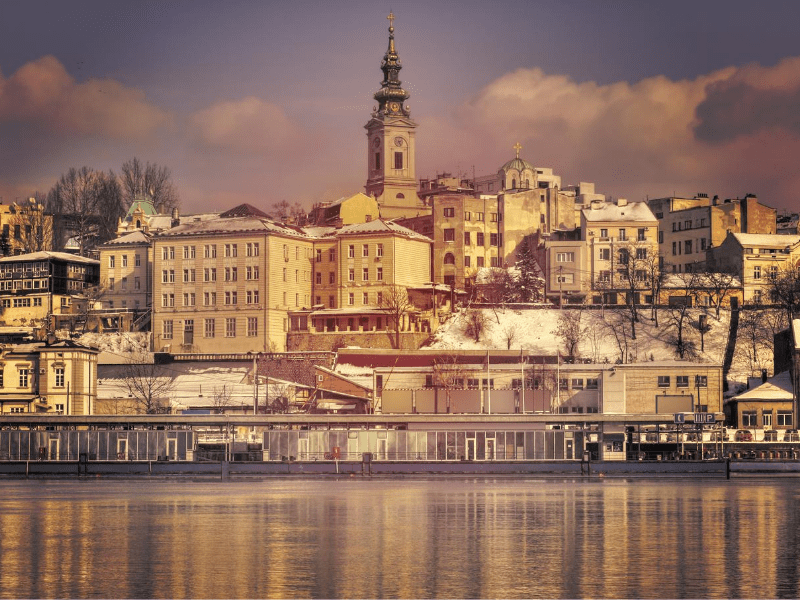
You’ve been around the continent and visited almost every country and your final epic European road trip destination is Serbia’s capital, Belgrade.
Belgrade is one of the oldest cities in Europe and has a tumultuous past of war and upheaval. It’s possibly this turbulent past that’s created it’s free-spirited present, particularly on the Bohemian avenue of Skardarlija and in the frequent splavovi (party boats) along the Danube and Sava. You can end your monumental road trip of Europe with a bang in Belgrade by partying the night away. After sobering up, take in your final views from the Beogradska Tvrđava fortress , stroll around in deep thought at what you’ve accomplished at Kalemegdan Park and then jump into the water at Ada Ciganlija island.
- Check if you need a visa, get help processing it at iVisa .
- Never ever leave without travel insurance. Get affordable coverage from World Nomads or long term insurance from Safety Wing .
- I find all of my flights on KAYAK . Check their Deals section too.
- Search for all your transportation between destinations on the trusted travel booking platform Bookaway .
- I book all my day trips and tours via GetYourGuide , they are the best and their tours are refundable up to 24h in advance.
- Get USD35 off your first booking with Airbnb .
- Compare hotels EVERYWHERE at HotelsCombined and book with Booking.com .
- Compare car rental prices at Rentalcars.com
You may also like
Your ultimate guide to the best things to..., where to stay in the faroe islands, where to stay in barcelona – best areas..., weekend wine escape from barcelona – includes full..., visiting cava cordoniu spain’s oldest family-run business, travel in albania: best things to do &..., top-3 unesco countries: china, spain and italy –..., top wineries near barcelona to visit in 2020..., top things to do in monaco – luxury..., top 5 reasons you should visit moscow now.
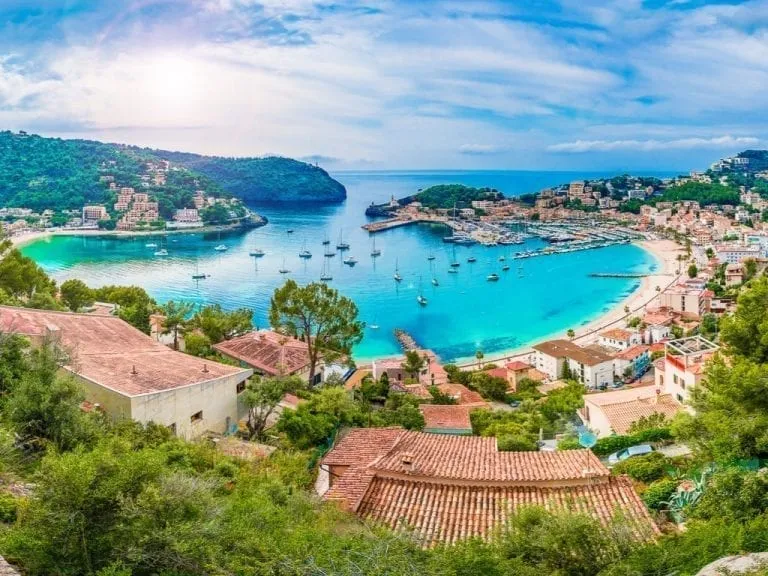
55 Epic Road Trips in Europe (Itinerary Ideas + Tips!)
Whether you’re looking for coastal views, mountain villages, castles, wine country, or all of the above, one thing is for sure: there is absolutely no shortage of epic road trips in Europe.
Over the past several years, we have absolutely fallen in love with sampling the best road trips in Europe, and have explored parts of more than a dozen European countries by car, including driving from Portugal to Italy and back a few times!
Driving in Europe provides the freedom to find uncrowded corners and offbeat delights, while also ensuring you have a chance to hit up some of the biggest bucket list destinations on the continent.
In the beginning stages of planning a European road trip and not sure where you want to go?
With the help of many other travel bloggers, we have you covered–more than 50 times over!–in this giant guide to the best road trips in Europe.
Table of Contents
Once You Pick Your Perfect European Road Trip…
Tips for for planning to take a road trip in europe, best northern europe road trips, best southern europe road trips, best road trips in the balkans, best western european road trips, best central and eastern european road trips.
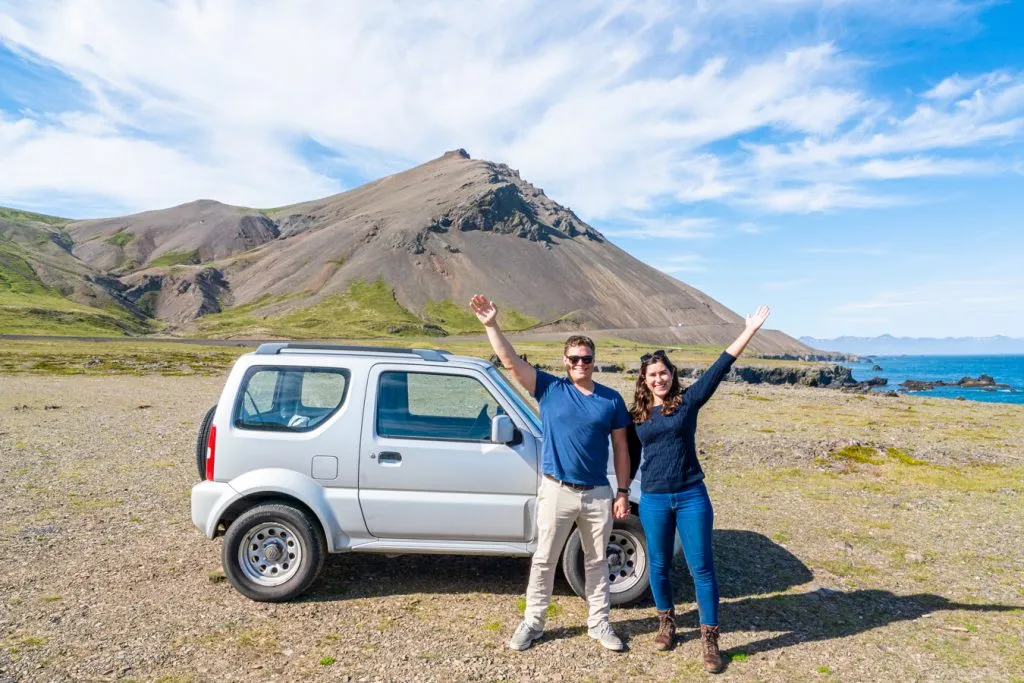
Some links in this post may be affiliate links. If you make a purchase through one of these links, we may earn a small commission at no extra cost to you. Please see our disclosure policy for more detail.
… We’d love to help you plan your trip in more detail!
Here on Our Escape Clause, we’ve written detailed, step-by-step road trip guides for many of the destinations covered in this giant bucket list, based on our personal travels around the continent.
We’ll link them where relevant below, but to see them in one place, you can scroll through all of our road trip guides here .
We also have hundreds of travel guides on specific European destinations on our website.
To peruse by country, you can use our destinations page or the search bar on the top right of the page (on desktop) or at the top of the pop-out menu (on mobile) to find what we’ve written about the places you’re most interested in!
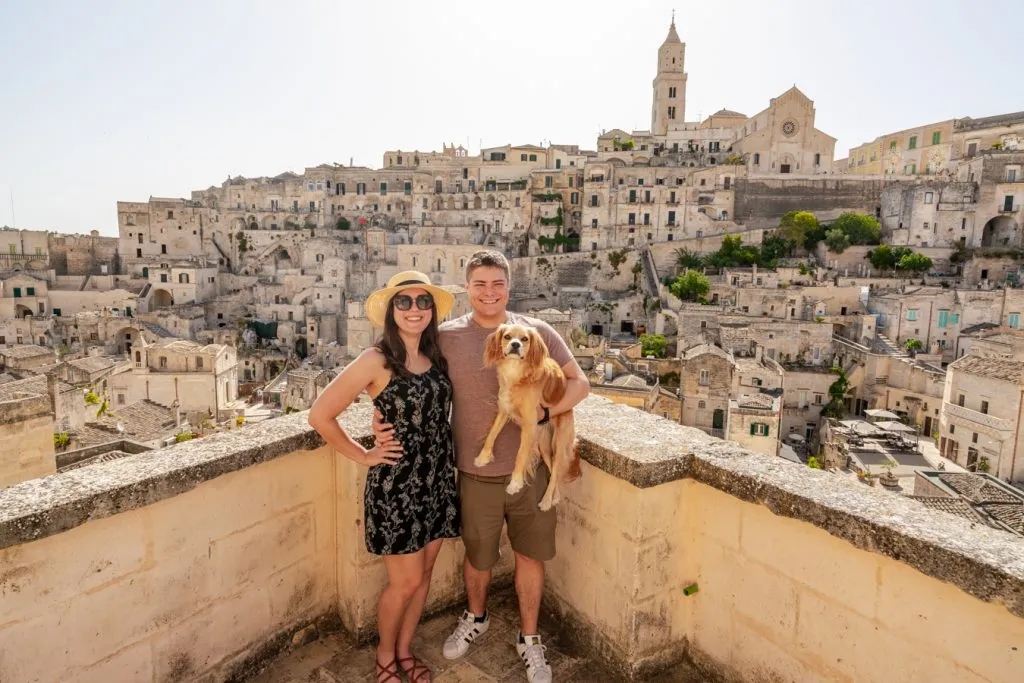
This travel guide to the best European road trips is already giant, so I’ll keep these brief, but here are a few essential tips for planning a European road trip!
Shop around for your rental car.
The best company to rent a car for your road trip in Europe from will likely vary dramatically depending on where and when you’re traveling.
Sometimes large international carriers offer the best prices, sometimes local outfits. Sometimes one company has an excellent base price, but terrible rental requirements.
The best way to find your rental car is to search through Discover Cars , which will sift through dozens of companies to find the best combination of low prices and reasonable rental terms for your European road trip.
Browse rental cars for your European road trip today!
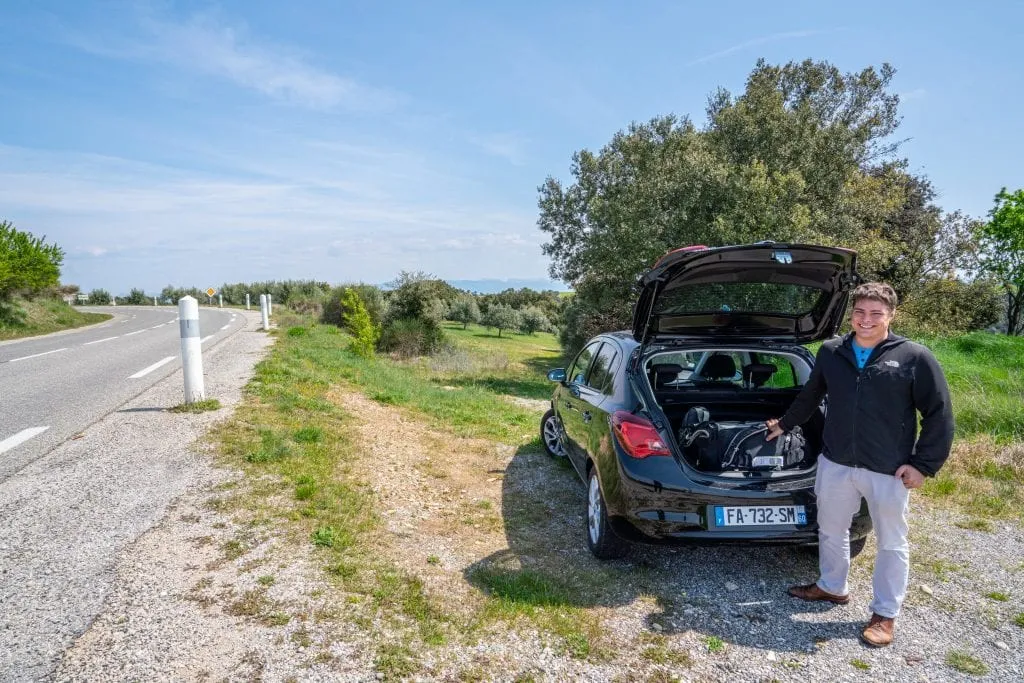
Read the rental requirements carefully.
Especially make sure you know how many kilometers you’ve been allotted (or ideally, if they’re unlimited)!
You’ll also want to note whether you need to return the car empty or full of fuel, what to do if the car breaks down, and what damages you’re liable for in the event of an accident.

Manuals are cheaper and easier to rent than automatics.
Ideally, you’ll want to know how to drive a manual before taking any road trips in Europe.
While most companies carry a few automatic cars for non-European visitors, manuals are standard on the continent and are both far cheaper and much less likely to sell out.
Don’t focus on big cities.
Generally speaking, Europe’s legendary trains , plus plentiful bus and flight routes, can get you between major cities easier than a rental car.
Plan your European road trips around small towns, natural highlights, and countryside beauty instead.
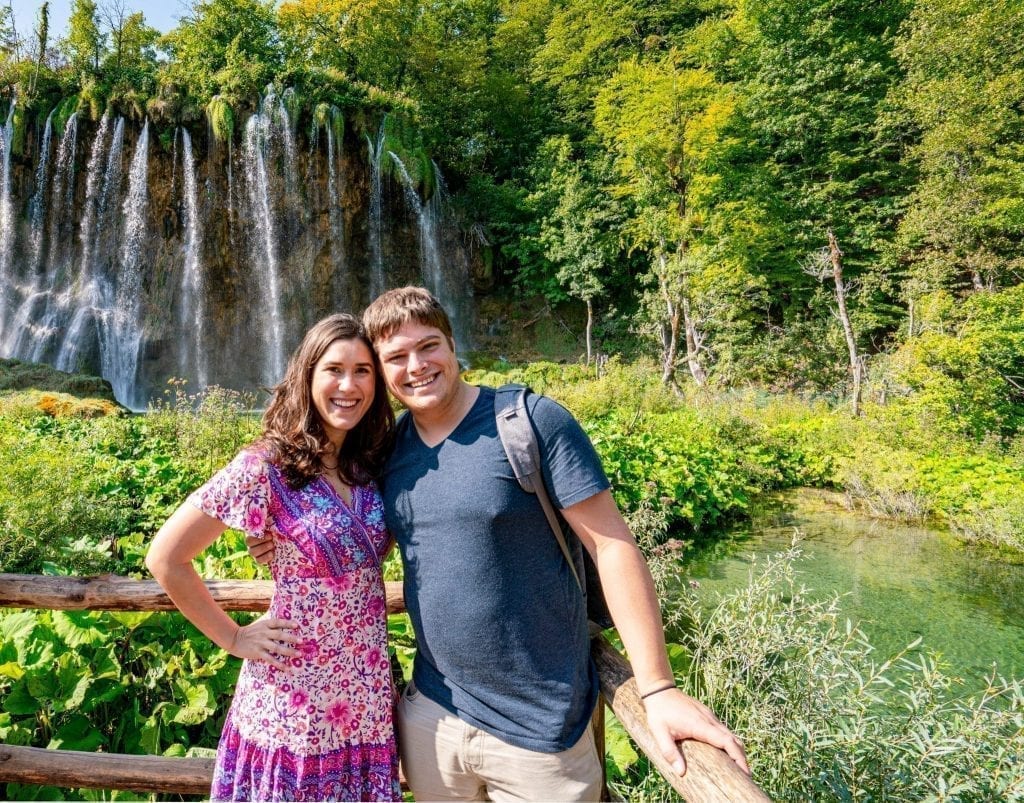
Plan ahead if you want to rent a car in a competitive area.
Want to road trip Iceland in the height of summer?
If so, be sure to plan ahead: rental cars have been known to sell out!
Booking your rental car in advance is most important in places at a crossroads of extreme popularity and limited availability–like islands, for example.

Lofoten Islands, Norway
From Michele of The Intrepid Guide
Located in Northern Northern, the Lofoten Islands are a quiet and almost untouched corner of Norway.
Connected to mainland Norway in the north by road, this beautiful archipelago extends out into the Norwegian Sea.
The long highway connects most of the islands by bridges or ferries, making it super easy to get around.
There are countless things to do in Lofoten which range from easy roadside stops to hiking the mountain tops for stunning panoramic views.
Lofoten highlights include seeing the brave arctic surfers ride the waves at Unstad Beach, seeing the bright yellow Fisherman cabins at Nusfjord, watching the Northern Lights reflect in the wet sand at Skagsanden Beach, and seeing the iconic red cabins and cod drying racks on Hamnøy Island.
If you only do one hike, make the Reinebringen Trail.
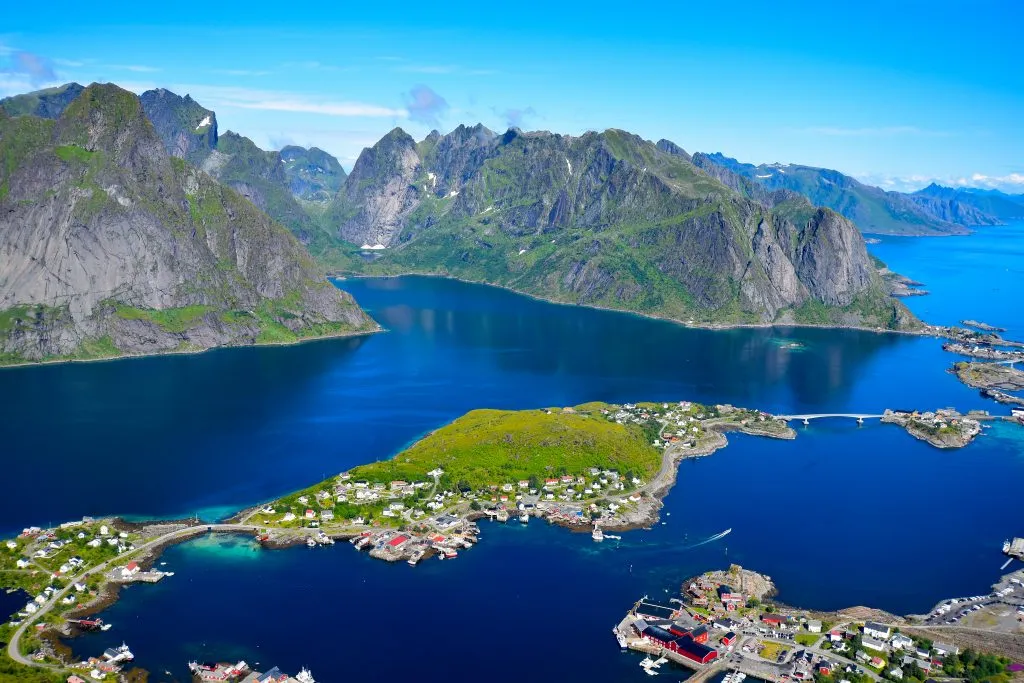
This popular hike leads you to some of the best views you’ll ever see and the elevation will make you feel like you’re on top of the world.
Start your trip in Svolvær, the region’s capital, and work your way down to Å – the most southerly town connected by road.
For the ultimate Lofoten experience, be sure to stay in a traditional fishermen’s cabin ( rorbuer ) and get hygge (Norwegian for ‘cozy’).
Recommended Road Trip Length
Allow at least 5 days to gently explore Lofoten and take it all in. This is not a place you want to rush!
From Svolvær to Å, it’s just 80 miles (129km), so you’ll be able to cover a lot of ground during your road trip.
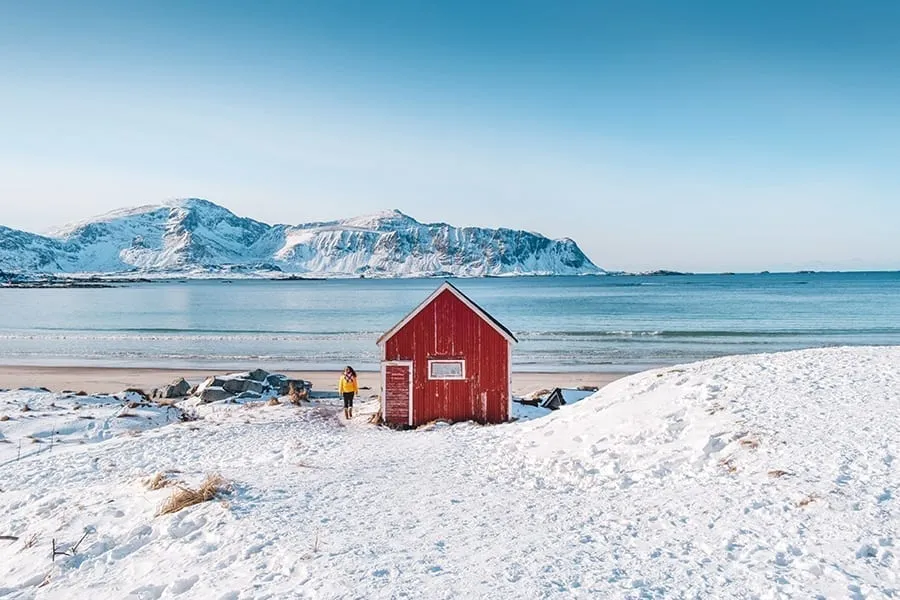
Westfjords, Iceland
From James of Where You’re Between
Home to some of the world’s most breathtaking landscapes, Iceland, in general, is one of the best countries for road trips in Europe.
Iceland’s second city of Akureyri is a fairly easy drive from Reykjavik, though one way to stretch out the journey is to take a multi-day detour through the Westfjords .
Being one of the most remote areas in Iceland means that the Westfjords is also one of the least visited.
Despite this, the Westfjords is one of the most dramatic and spectacular corners of Iceland.
As an added bonus, a detour via the Westfjords also passes through the equally beautiful regions of Western Iceland and Northern Iceland.
Before reaching the Westfjords take a further detour to Snæfellsjökull National Park, wherein true Icelandic style a glacier sits on top of a volcano.
There are countless waterfalls all along the route, including Kirkjufellsfoss, underneath the jagged shard of Kirkjufell Mountain.
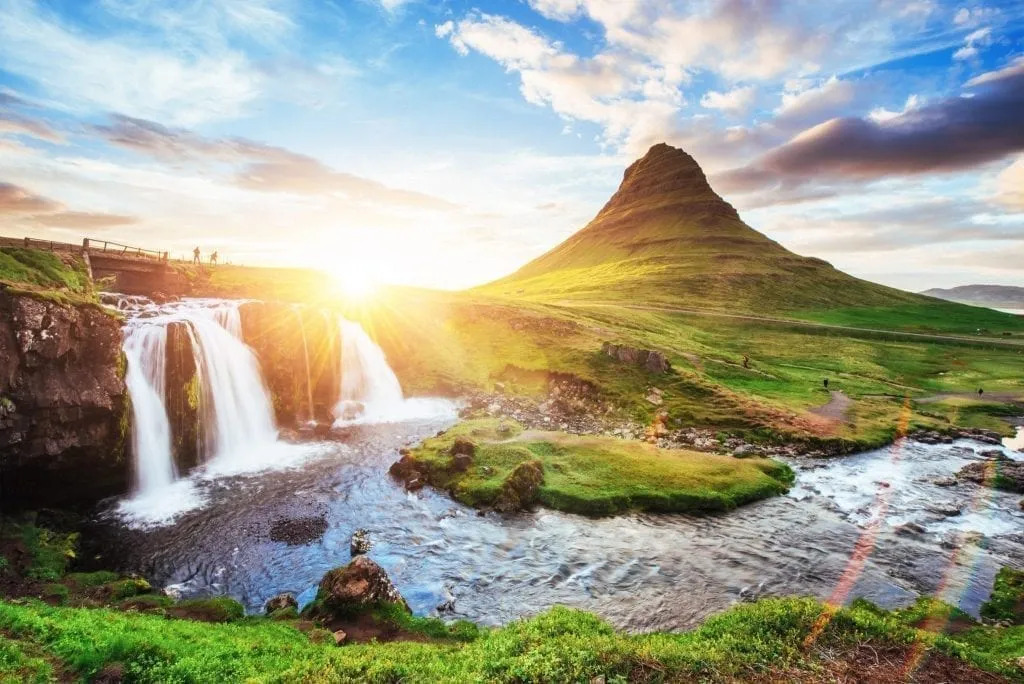
Just inside the Westfjords region is Dynjandi, the largest in the whole region at over 100 meters tall.
Much of the Westfjords is made up of mile after mile of sensational landscapes.
The roads often cling to the craggy mountainsides as they peak and trough around the jutting fjords.
Dotted throughout the Westfjord’s dramatic landscape are a number of beautiful idyllic towns, such as Flateyri and Ísafjörður.
Sat beneath the sloping mountains and facing the fjords these picturesque towns feel as though they’re a million miles away from anywhere.
Iceland’s second city of Akureyri also sits on the rim of a huge fjord in the far north of the country.
The nearby town of Husavik is one of the best places in Iceland to go whale-watching, and don’t miss the other-worldly landscapes of Dimmuborgir lava fields before you make your way back to Reykjavik.
3-5 days will give you a great introduction to the Westfjords.
From there, you can either explore the region more deeply or combine it with time in the rest of Iceland!
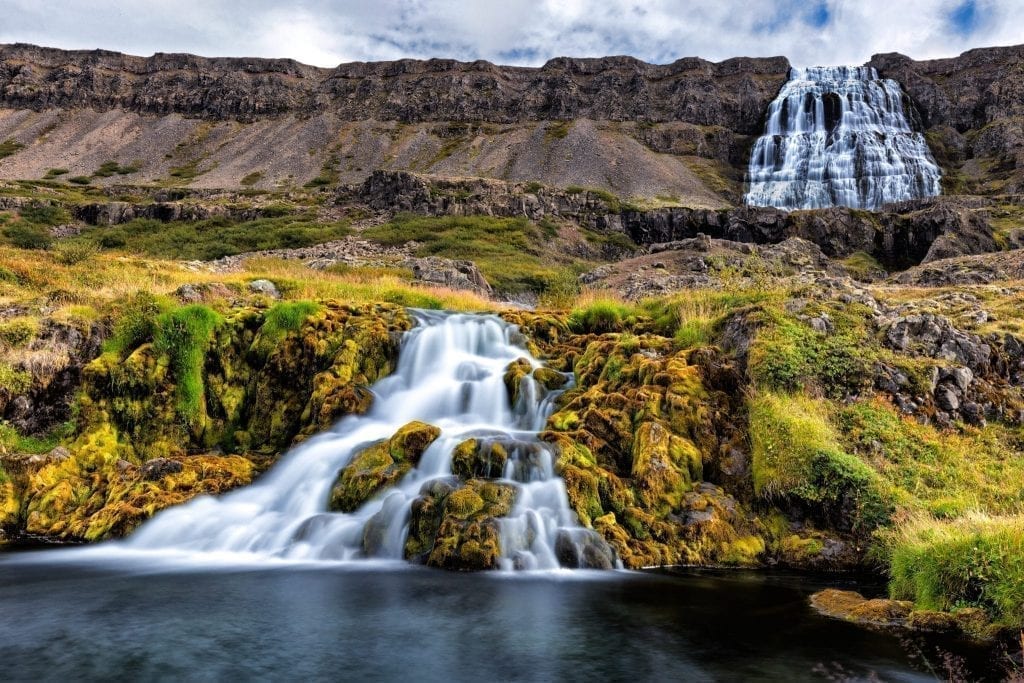
Algarve, Portugal
From Nina of Where in the World is Nina
We’re not sure what the best part of road-tripping Portugal’s Algarve is… the beauty, the cheap car rentals, or the ease of getting everywhere.
Perhaps it’s all three that make it one of the best European road trips!
If you fly into Lisbon or Faro, get your rental car booked ahead of time.
If you visit in the off-season, you can get a steal of a price for your car rental and lodging.
On your Algarve road trip, you can work from east to west or vice versa.
An ideal route would start in Lisbon, drive south, and then end in Faro.
You may pay just a bit more to drop the car off in another city but it’s well worth not having to backtrack.
The Algarve is known for its incredible beaches, cliffs, coves, and surf.
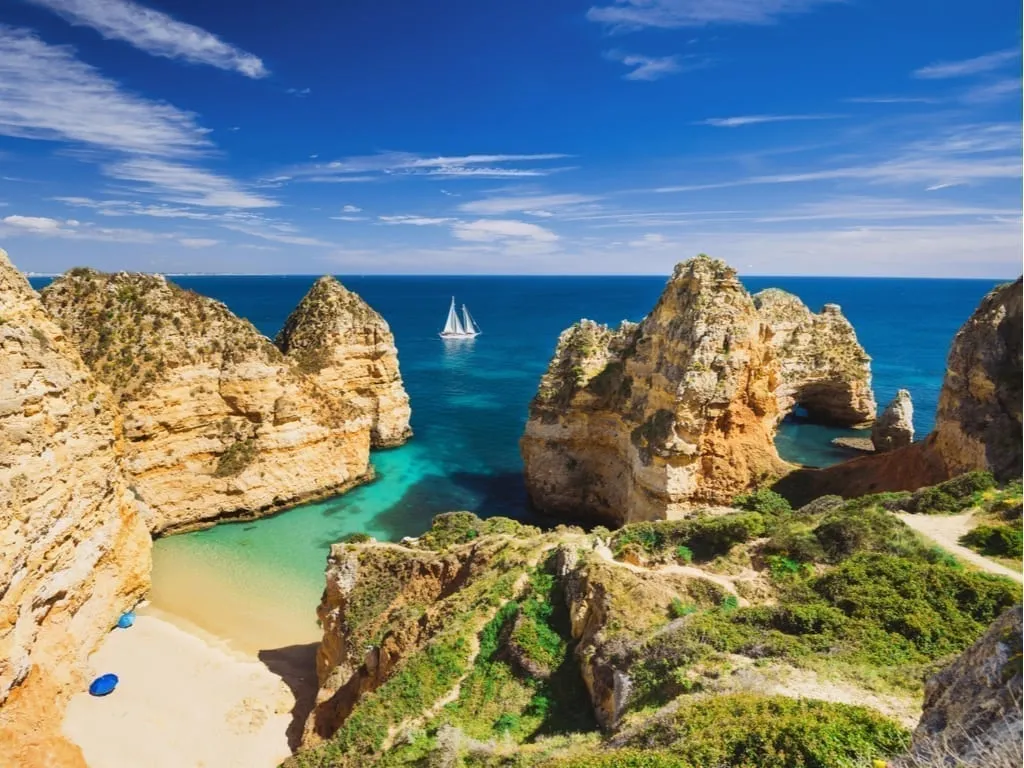
Some highlights you must check out include the sleepy surf town of Sagres featuring three nearby beaches (Amado is the furthest but best for beginner surfers).
Just thirty minutes east is Lagos , known for its headland views, watchtowers, and perhaps the prettiest view you’ll lay your eyes on at Ponta da Piedade.
Take a boat tour to Benagil Cave, or anywhere along the coast, exploring its sandy rock towers that sprinkle the shores.
There are also numerous coastal hikes that are really easy and provide great views. A favorite coastal hike is the Seven Hanging Valleys Trail.
One of the best parts of this Europe road trip is that you don’t have to pack up every day!
There’s no reason why you can’t choose where to stay in the Algarve once, and then not worry about it again since everything is pretty close and you’ll have a car.
Suggested Road Trip Length
Your trip should be nothing under three days, otherwise, it would be too rushed!
Five days is a good number and a week would be extremely ideal and you’d probably get to see everything you want and more without being too busy.
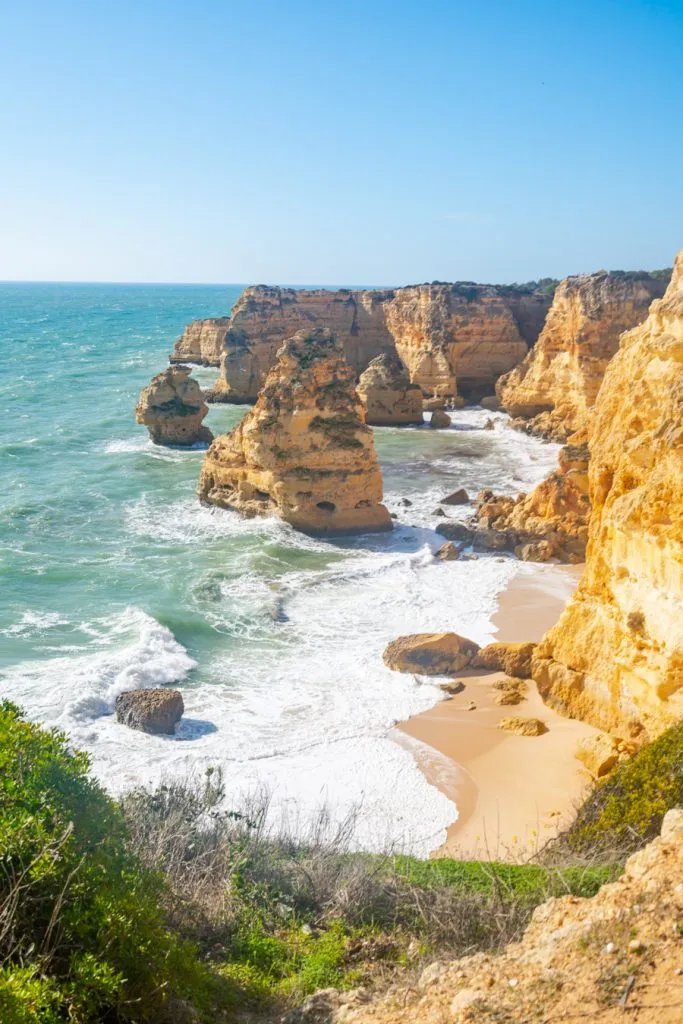
Andalucia, Spain
From Tom of The Travelling Tom
A road trip around Andalucia is the best way to see this beautiful part of Spain.
There is no shortage of beautiful places to stop, such as popular Seville , Granada, and Malaga, and lesser-known spots such as Cadiz and Ronda .
Andalucia is full of history and interesting sights. From the towering Puente Nuevo in Ronda to the Moorish palace La Alhambra, the region is arguably the most interesting part of Spain to visit.
History is everywhere you look. Buildings from the Moorish rule of Spain, to Roman baths and amphitheaters. Andalucia is the place to visit if you’re a culture vulture!
You will also find loads of activities along the way. One of these is the Caminito del Rey outside of Malaga. It once had the reputation of being the world’s most dangerous hike.

However, the hike on boardwalks overlooking a gorge is a lot safer than it used to be.
Now, you can admire the views instead of worrying whether you’ll fall off or not!
Starting from Malaga and passing through Seville, Granada, Cordoba , and Huelva is one of the best routes to take. A detour to Gibraltar is possible as well.
This road trip in Spain can be done in 7 to 10 days depending on how fast you want to go.
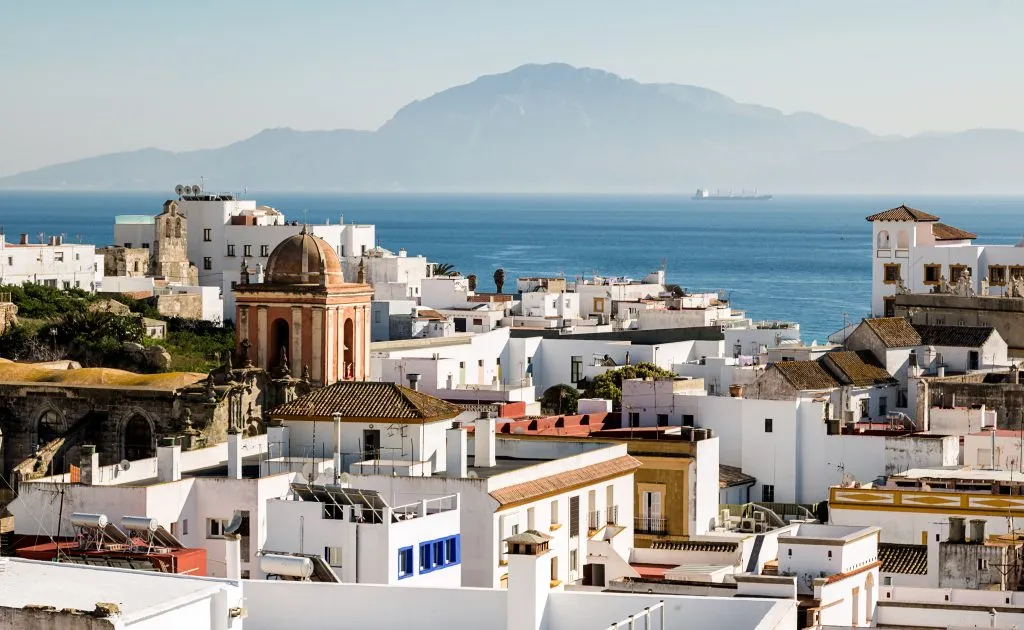
Amalfi Coast, Italy
From Chrysoula of Travel Passionate
Italy’s stunning Amalfi Coast is a memorable destination for a road trip as the colorful coastal towns are linked together with wonderful winding roads that meander along the hillside with spectacular sea views along the way.
Not only this, but the beaches, restaurants, markets, and museums en route make the Amalfi Coast ideal for travelers of any age.
Keep in mind, though, that driving on the Amalfi Coast in summer is not for the faint of heart: only undertake this road trip if you’re a confident driver!
The whole of the Amalfi Coast has been recognized as a UNESCO World Heritage Site which just goes to show what an incredible destination it is.
Start your Amalfi Coast road trip from Sorrento or Salerno, and work your way down the coast to towns like Ravello, Positano, and Praiano.
The panoramic views you witness as you drive along these coastal roads are absolutely breathtaking so make sure you pull over to take in the views on regular occasions throughout the drive!
While the joy of taking a road trip along the Amalfi Coast is that each journey can be totally unique as you have complete flexibility, there are certain stops that you’ll probably want to add to the list to ensure you see some of the highlights.
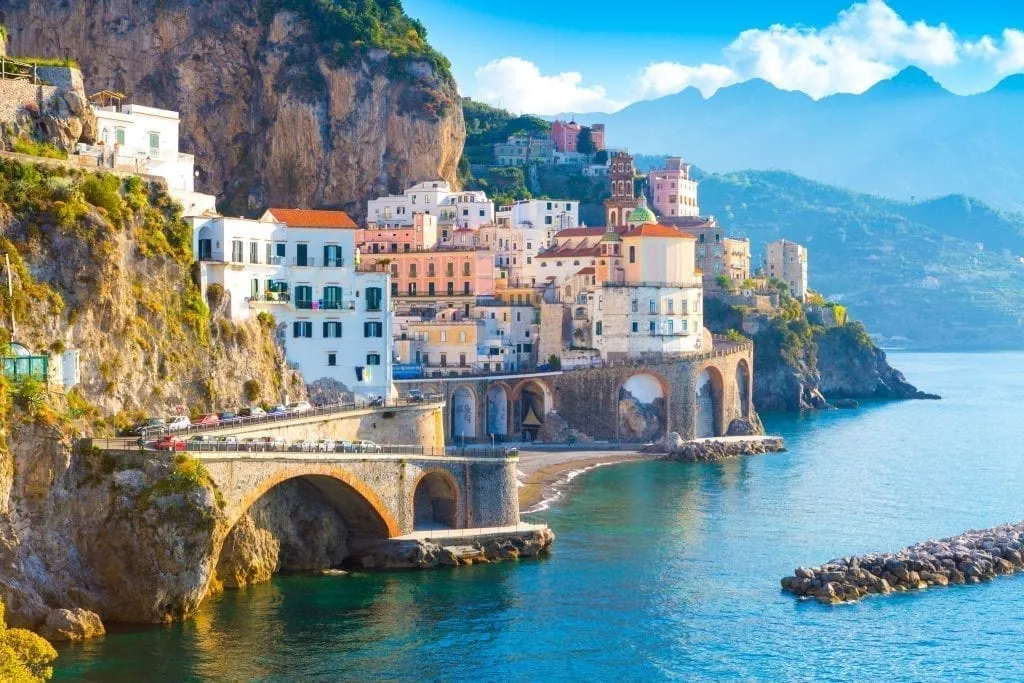
These include Positano (the official starting point of the Amalfi Coast), Furore (the only fjord in Italy), the quaint village of Atrani, and, of course, the port of Amalfi itself.
The Amalfi Coast runs as far as Vietri sul Mare and you can take in as many or as few towns and villages as you wish.
The larger, more northern towns are the busiest and therefore most expensive, so if you’d prefer something a little more relaxing head to one of the smaller villages further down the coast.
You could spend absolutely anywhere from a few days to a few months exploring the Amalfi Coast, but the sweet spot is probably somewhere between one and two weeks.
If you have longer to spend in southern Italy, consider visiting Sorrento, Pompeii , and Capri too as these all have tons of character, culture, and history to explore.
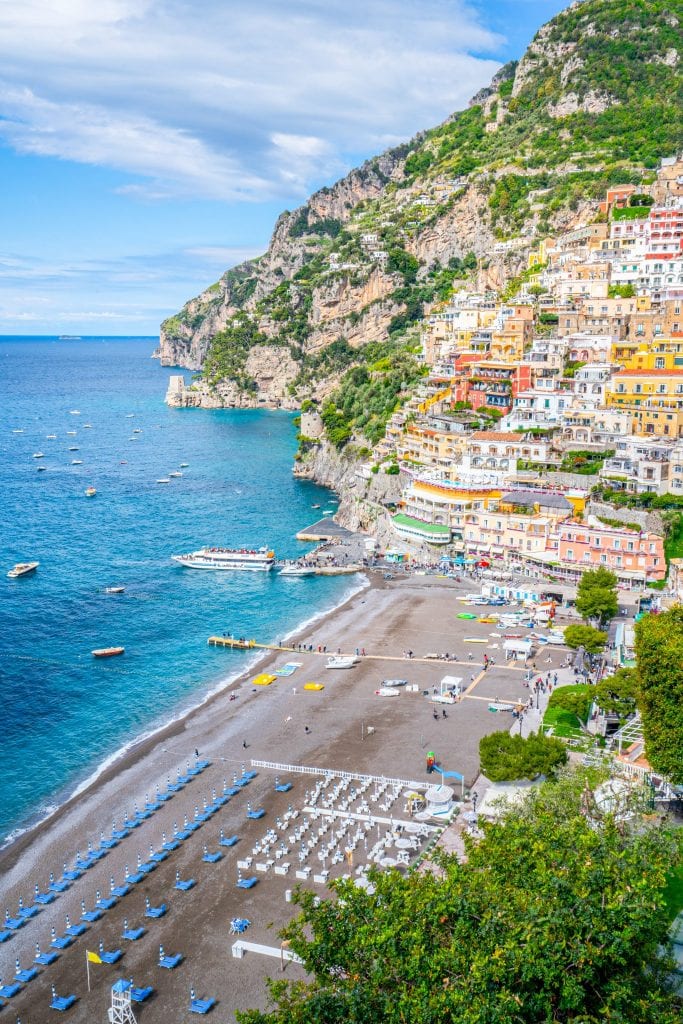
From Rai of A Rai of Light
There are plenty of places to visit in Malta and a road trip sure is one of the best ways of doing so.
The island is perfectly made to get into your car and head for the open roads (as long as you’re confident–the driving on Malta is intense).
However, Malta is small enough to ensure getting lost is not a regular occurrence, while large enough to hold many distinguished features and scenic routes.
From the start point in Sliema don’t miss a stop at the Birgu Waterfront for great views of Valletta, before moving on to the picturesque fishing village of Marsaxlokk.
This laid-back village will make you feel as if you’ve stepped back in time.
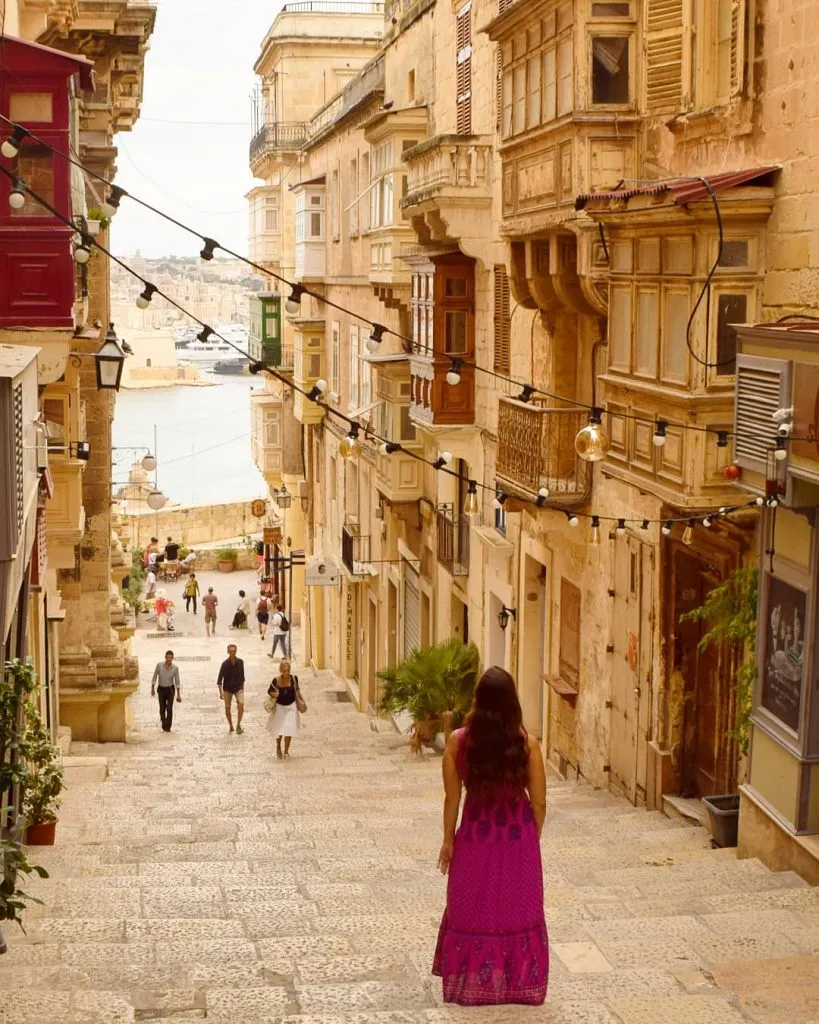
Most of the scenic drives in Malta will have the sea featuring in one way or another.
After a stop in Golden Bay, the drive down from Mellieħa to Għadira comes with many good stops along the way, including Għadira Bay and The Red Tower.
On the way back to Valetta, a stop in St. Julian’s is recommended.
Malta is just so compact that you really can fit in most of the island on a day-long road trip.
However, it is recommended to increase this to two to four days if you’re really keen to take your time and see all that this island has got to offer.
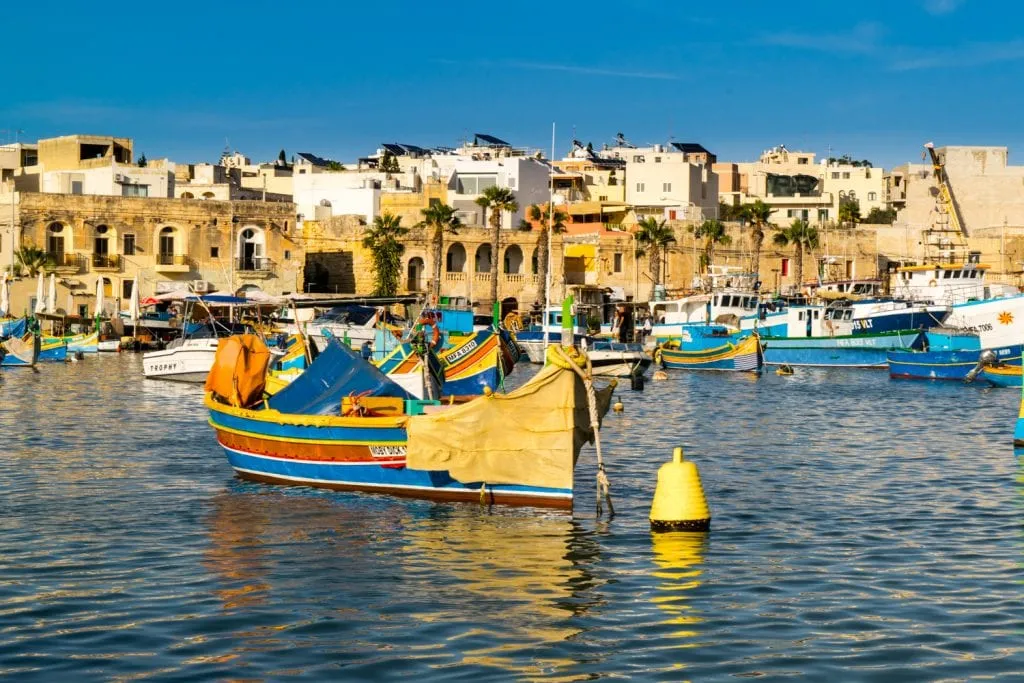
Costa Brava, Spain
From Justine Ancheta of Latitude 41
Translated as “the rugged coast”, the Costa Brava blesses northeastern Spain with sandy beaches, medieval villages, and the eccentricities of artist Salvador Dalí.
From Barcelona , head north to Tossa de Mar, a small town where you can get a view of towering medieval walls while basking on Platja Gran, the main beach.
Then spend a day or two exploring the best thin gs to do in Girona, including the 12th-century Arab baths, the well-preserved Jewish Quarter, and the imposing Girona Cathedral.
From there, visit the charming former fishing village of Cadaqués.
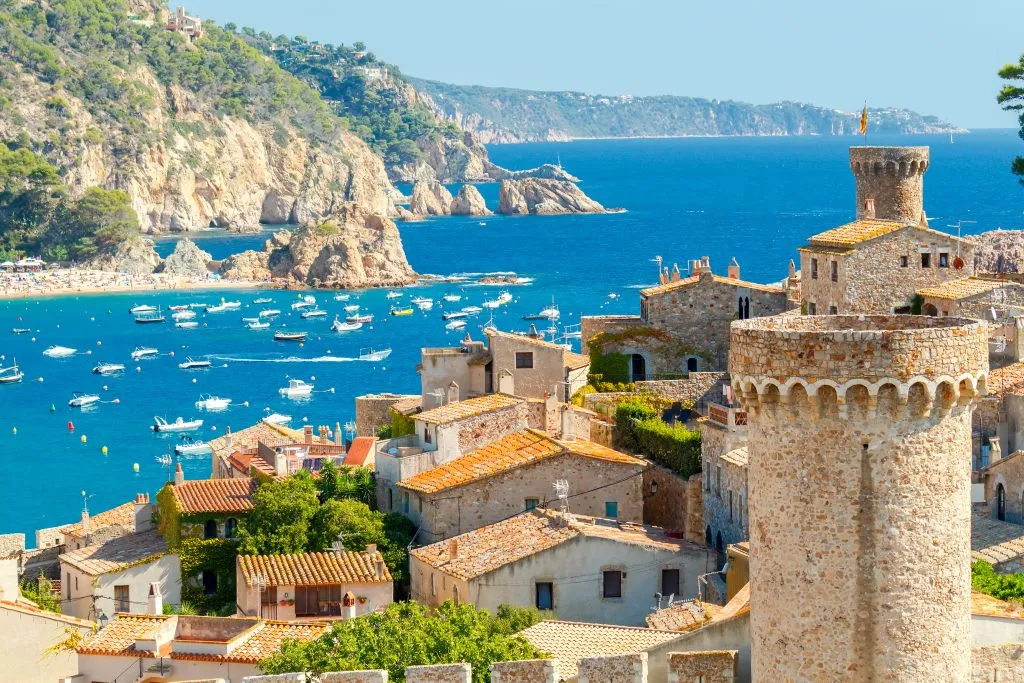
A warning to the driver: the last few kilometers of the road leading up there are narrow and winding, but not dangerous.
However, the journey is worth the scenic beach coves, whitewashed residences, and cobbled streets wrapped up in a sophisticated ambiance.
It’s also where artist Salvador Dalí spent his summers and home to the famous Casa-Museo de Salvador Dali.
Next up is Figueres, the birth town of Dalí and home to the quirky Dali Theatre-Museum.
Some of his avant-garde works lie here like his holographic art, stereographs, and the Mae West installation. Also, the artist himself is buried in the crypt.
This European road trip is ideal if you’re seeking the warm Mediterranean sun while discovering local Catalan and Spanish art and culture.
Carve in at least seven days to see the magnificent Costa Brava!
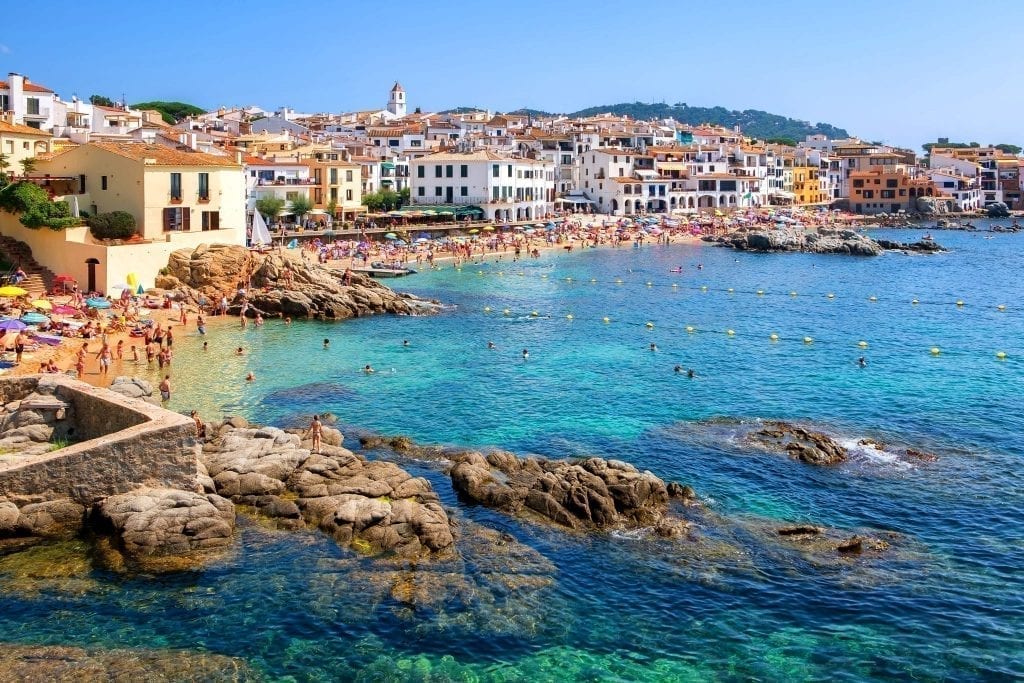
Sardinia, Italy
From Hayley Lewis of A Lovely Planet
The stunning Italian island of Sardinia is a fantastic road trip destination, with stunning beaches, incredible scenery, and delicious Italian food.
Start your Sardinia road trip in Cagliari, the island’s largest city, and head southwest to Isola di Sant’Antioco, accessed by a mile-long causeway.
This is one of the oldest parts of Sardinia, and is not as frequented by tourists.
Next, drive to Bosa on the east coast. The coastline is incredibly scenic along the way, with rugged hills and sandy beaches.
Bosa is a hillside town filled with quaint colorful houses, and a castle at the center – a must-visit – especially for great views of the town.
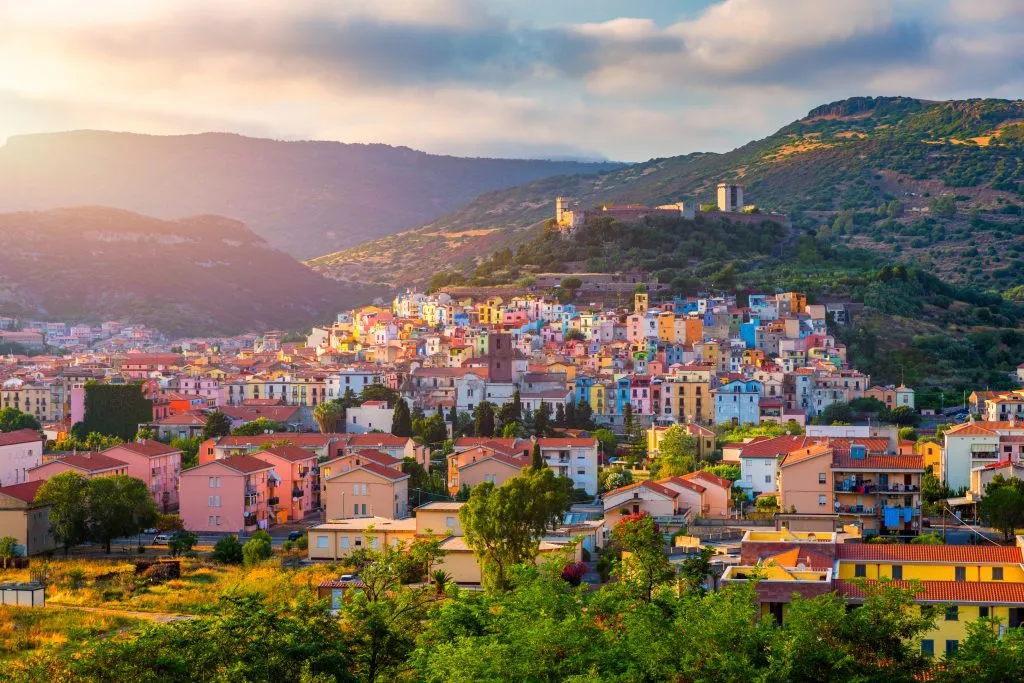
Continue north to Alghero, a town with a strong Spanish influence and striking coastal walls.
North of the town you’ll find some of Sardinia’s most beautiful beaches – perfect for a few days of relaxing.
Make your way across the island to the west coast, and the town of Cala Gonone, the gateway to Golfo di Orosei – a stretch of incredible coastline accessed by boat or by hiking.
The water here is clear and a striking aquamarine color and the coast is dotted with great little beaches including the famed Cala Goloritze – one of Sardinia’s most prized beaches.
There is also an extensive cave network, which you can visit part of, via boat at Bue Marino Grotto, which is filled with striking stalactites and stalagmites.
Before you make your way back to Cagliari for your flight home, be sure to stop at Cala Sinzias, a white sand beach reminiscent of the Caribbean or French Polynesia.
Ideally, it’s best to have at least a week to explore all that a Sardinia road trip has to offer.
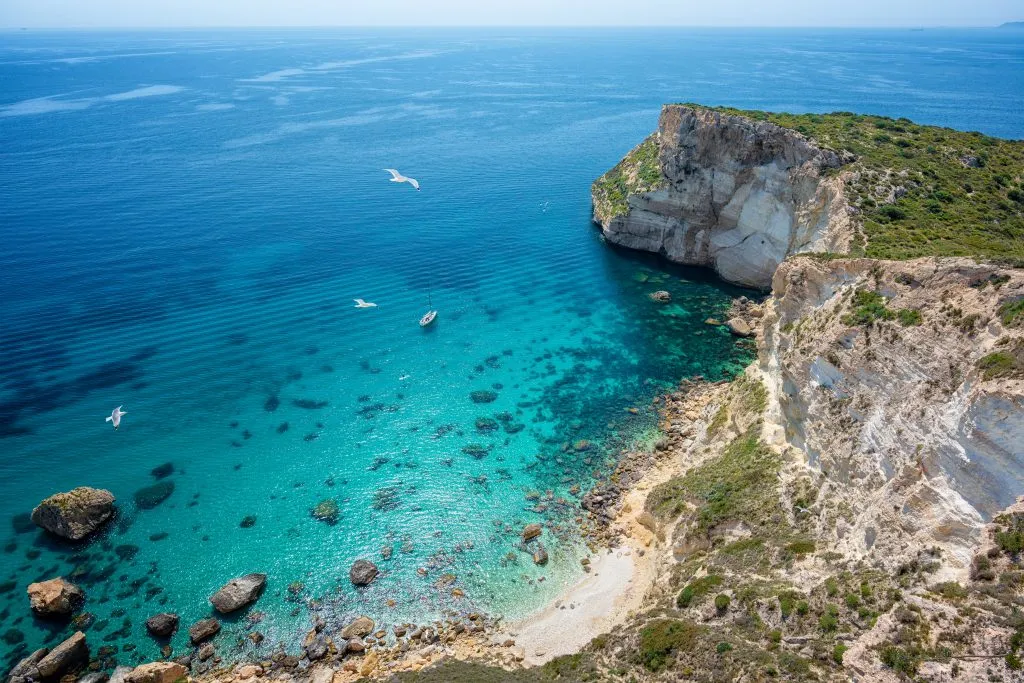
Sao Miguel, Azores, Portugal
From Megan of MeganStarr.com
In the middle of the Atlantic Ocean where the European plates meet the American ones sits the Azorean Archipelago, a group of volcanic islands that are an autonomous region of Portugal.
The largest of the islands is Sao Miguel and you’ll find the main airport there, as well as a copious number of things to do.
Sao Miguel is the perfect place to start your Azores itinerary as there is a network of well-taken care of roads that wind around the island allowing visitors to see all of the viewpoints.
This Azorean island is the perfect place for a road trip, and exploring Sao Miguel in-depth by car should take around 3-4 days.
The best place to embark on this road trip is in the capital city of Ponta Delgada.
After visiting the colonial city brimming with architecture constructed with a touch of black, volcanic stones, you should head west where you will have the opportunity to look down into craters of old volcanoes and lakes that now fill them.
Sete Cidades is the most famous and the landscape will blow one’s mind.
As you cruise around Sao Miguel by car, you’ll have the chance to drive by some attractive black sand beaches and small villages, such as Capelas along the north coast.
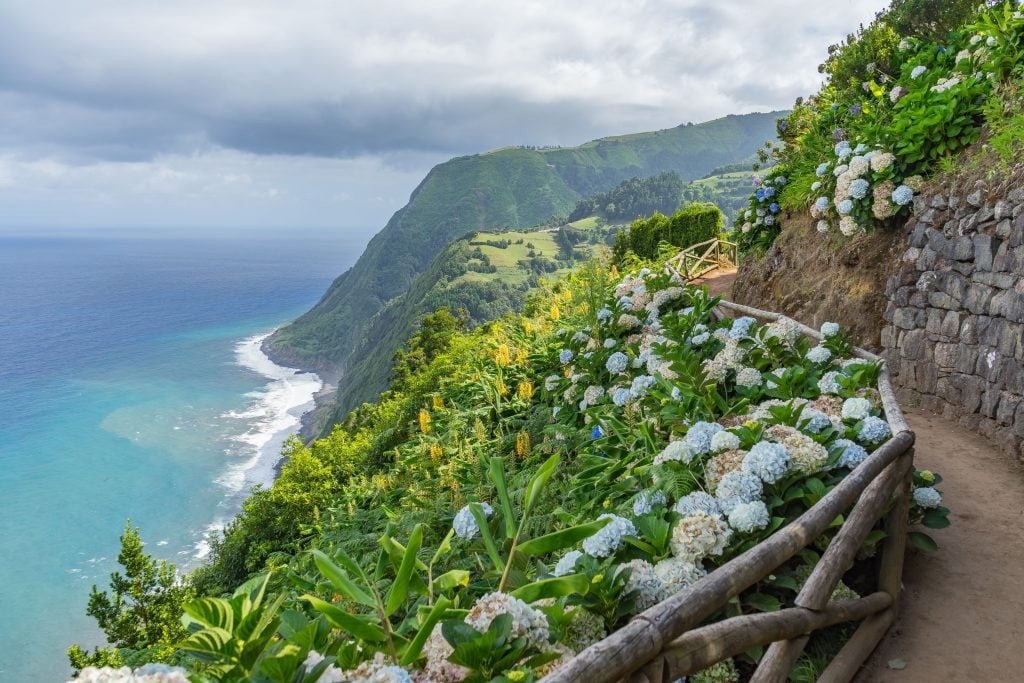
There are several natural pools along this route that you’ll want to be sure to tote along a bathing suit and beach towel.
The next place worth tackling on Sao Miguel is the eastern part of the island, where you’ll find many hot springs, botanical gardens, and relaxing parks such as Terra Nostra where you can spend time rejuvenating yourself in natural pools heated by geothermal energy.
Another can’t-miss thing to do in Sao Miguel is to find a restaurant near Furnas that specializes in ‘Cozido das Furnas’, a famous Azorean dish that has been slowly stewed by the Earth’s underground heat.
There is plenty to do in the Azores and Sao Miguel is an ideal starting point.
Whether you stay there for three or four days, which is the minimum number I recommend, or more, you will definitely be glad you got to experience one of the best road trips in Europe.
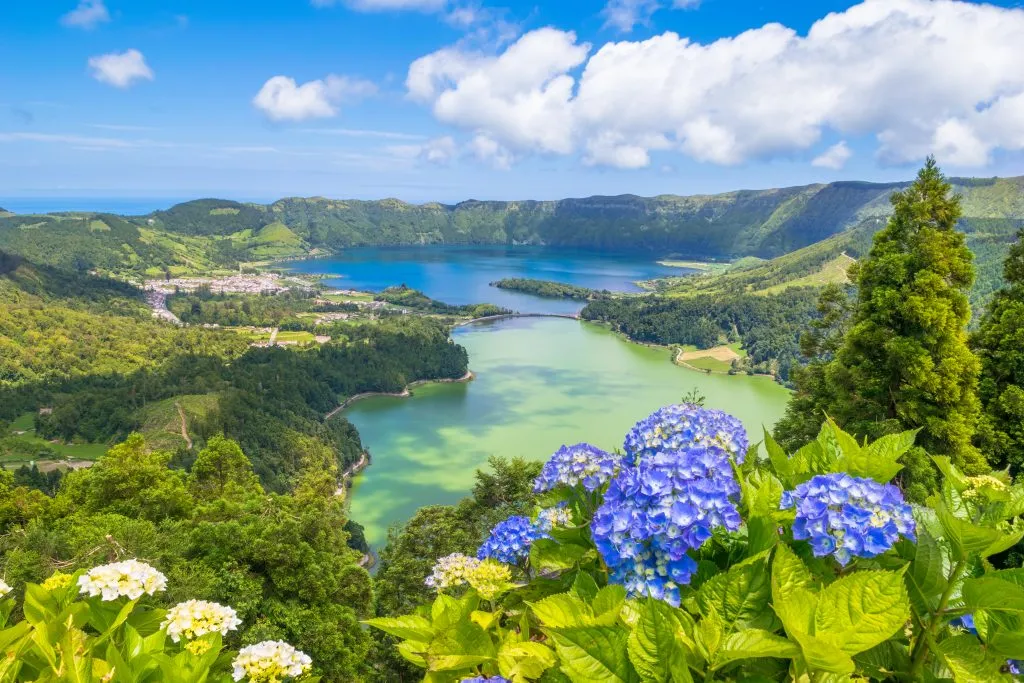
Eastern Sicily, Italy
From Annabel of Smudged Postcard
Sicily is a big island so to do it justice it’s worth concentrating on just part of it. Eastern Sicily lends itself particularly well to a road trip.
Fly into Catania and start your Eastern Sicily road trip, starting with a few days spent exploring the beautiful coastal city of Syracuse with its stunning cathedral and fascinating ancient history.
Next up is the Val di Noto where a huge earthquake resulted in many of the cities being rebuilt in an elaborate Baroque style in the 17th century.
Noto and Ragusa are particularly impressive although fans of chocolate might prefer Modica and its interesting chocolate history.
Drive into Sicily’s interior for a morning exploring Caltagirone with its incredible ceramic staircase before heading on to Enna.
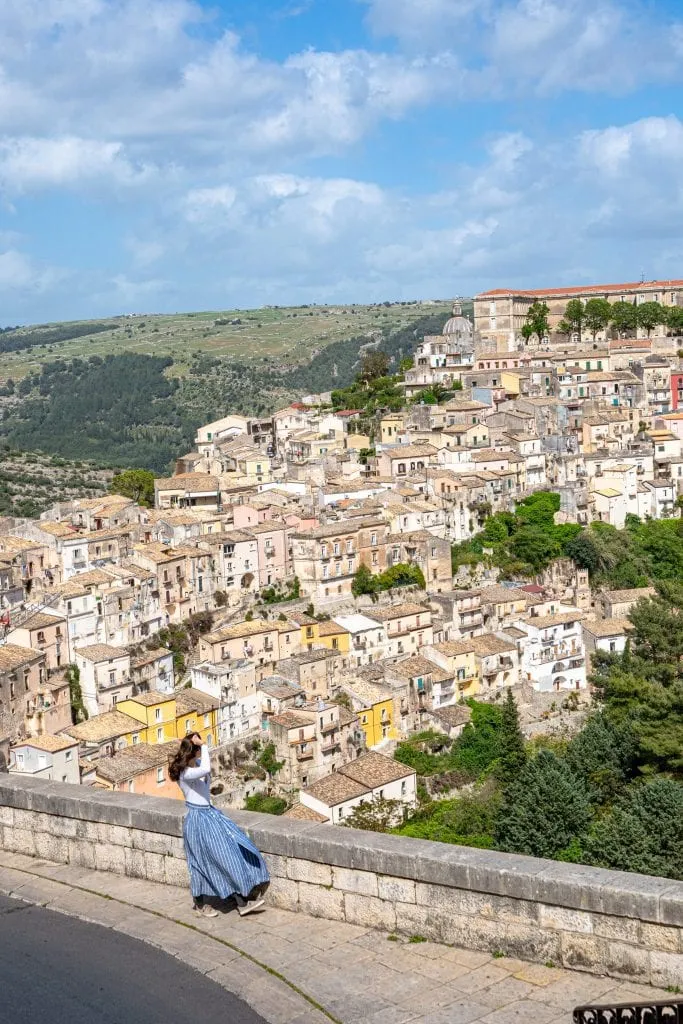
In the center of Sicily, Enna is a hilltop city like none other with awe-inspiring views across the wheat plains.
Also not to be missed near Enna are the Roman mosaics at Piazza Armerina, which are said to be some of the best-preserved in the world.
From Enna, you’ll pass smoldering Mt. Etna before ending the trip in pretty Taormina with its Greek amphitheater and the lovely beaches at Isola Bella below.
This trip will take around 10 to 14 days if you’d like to explore Sicily at a leisurely pace.
The road trip is best undertaken outside of the scorching summer months: the ancient sites are best visited during the milder weather of spring or autumn.

Southern Italy From Puglia to Rome
From Marta Correale of Learning Escapes
The south of Italy is one of the most beautiful areas of the Italian peninsula and a wonderful destination for a European road trip.
Blessed with beautiful weather almost all year round, this is a land of many wonders and rewards the adventurous visitor with stunning coastlines, charming whitewashed villages, and important cultural sites.
This southern Italy itinerary travels from Puglia to Rome, via the little-known region of Basilicata.
Start your trip from the small city of Trani, marvel at its stunning waterside cathedral, and make your first overnight stop in Alberobello.
Famous for its hobbit-like dwellings of UNESCO fame, this is a pretty town with flower-filled alleys and fairy-tale architecture, perfect for slow travelers and photography lovers.
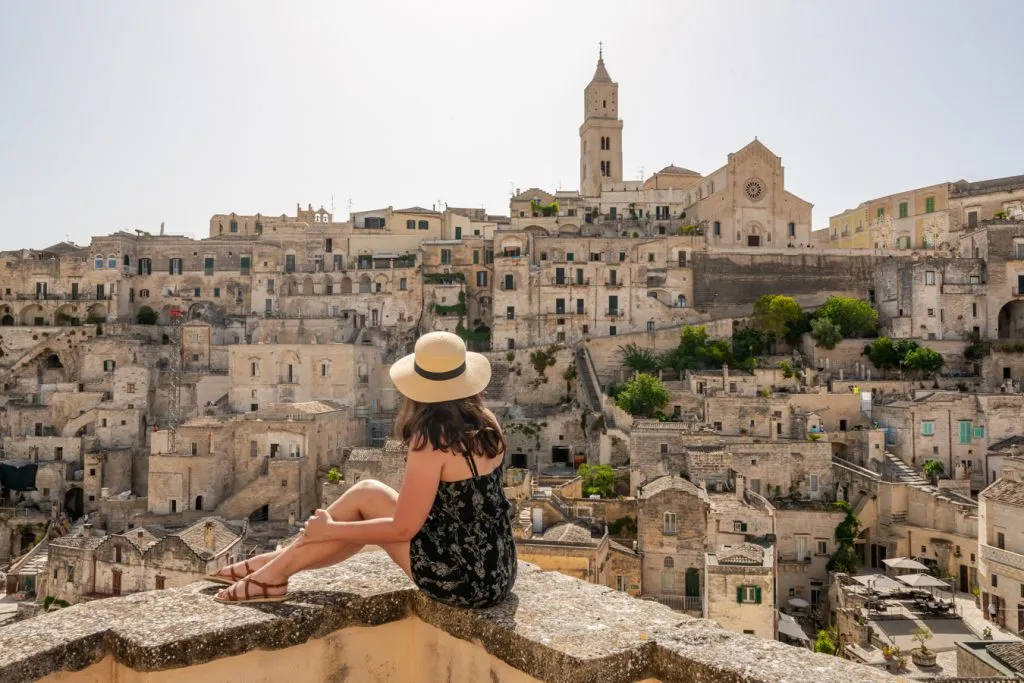
Make unique Matera your second stop and spend a few days taking in the incredible sight that is this city, entirely carved out of rock ( sassi ).
Explore its rupestrian churches and get pleasantly lost among its labyrinthine city center, beautiful views, and restaurants!
If you book in advance, you may also be able to find accommodation in one of the sassi : these have now been restored and are a unique and romantic place to call home for a few days!
From Matera, drive towards Rome but before diving into the dream that is the Eternal City, make sure you visit the archaeological site of Paestum along the way.
Famous for beautiful Greek temples abandoned among vast green fields, it is one of the most scenic Unesco sites in Italy and one not many visitors know about yet!
This road trip is ideally spread over a week to 10 days and it is particularly suited to those travelers who enjoy cultural sites and getting off the beaten track.
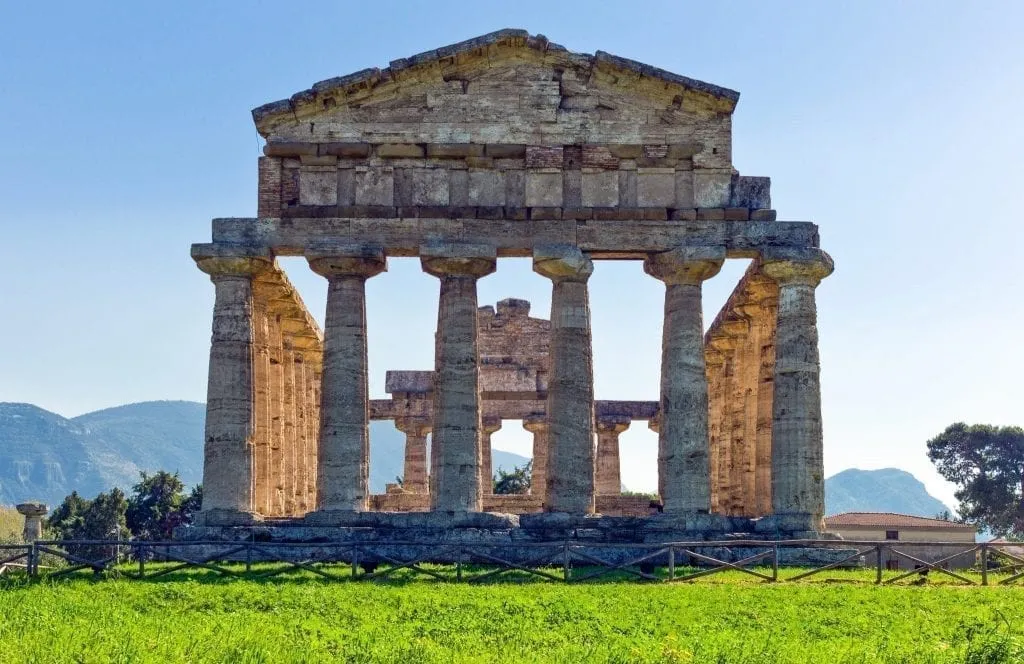
Tenerife, Spain
From Paulina of Paulina on the Road
Some may think of Tenerife as a plain beach and sun destination, but it’s much more than that.
There are plenty of things to see and do on this Spanish gem once you get away from the shore.
The best to explore Tenerife is by going on a road trip, which will help you understand how diverse this island is: rocky volcano mountains in the north and golden, sandy beaches in the south.
I recommend starting in Adeje, one of the best places to stay in Tenerife , from here you can make your way up north to Santa Cruz de Tenerife, famous for its Auditorium and carnival.
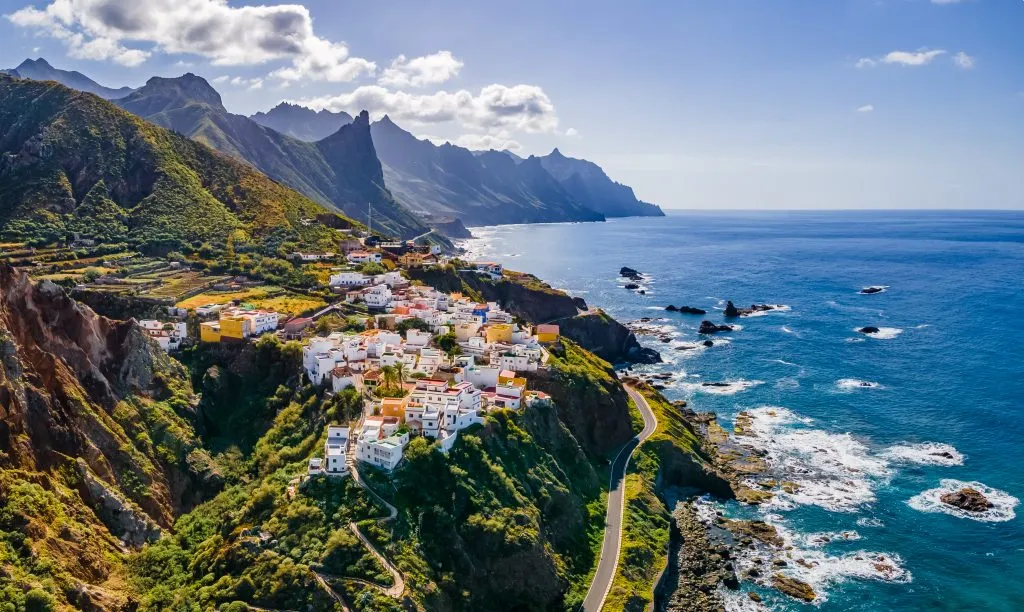
From here, continue to La Laguna, a gem of historic architecture.
This is already the highest point you can get in Tenerife.
From here, drive all the way southwards passing along La Orotava and Los Gigantes.
The island may seem small in size, however, you should at least calculate 2-3 days if you want to explore all its attractions with a road trip.
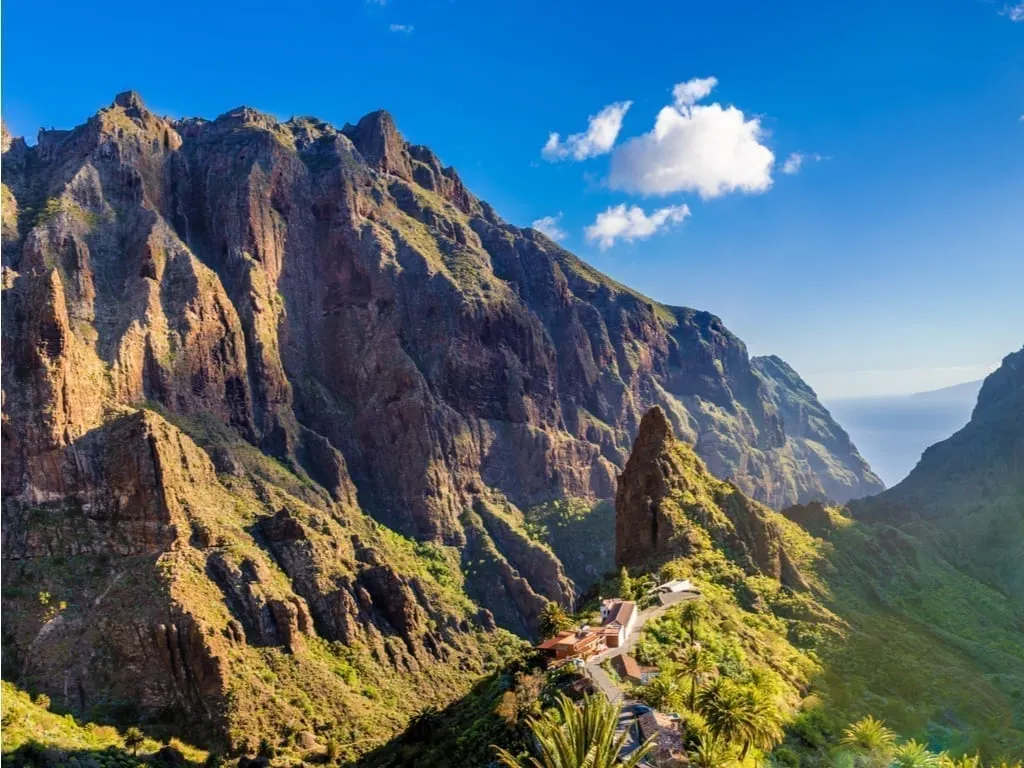
Terceira Island, Azores, Portugal
From Sylvia of Wapiti Travel
Terceira Island is probably the most spectacular island in the Azores archipelago.
It can be visited as part of a broader Azores itinerary . This European road trip is a versatile vacation that is sure to please hikers and nature lovers.
Since none of the islands is really large, most tourists visit multiple islands in one trip. Island hopping, either by boat or by plane, is part of the charm of a trip to the Azores.
The island was the third to be discovered, hence its name, and it is also the third-largest island of the group.
A few hours is all you need to drive the entire loop, but by just driving around the island you would miss the majority of the impressive sights that are located in the center of the island.
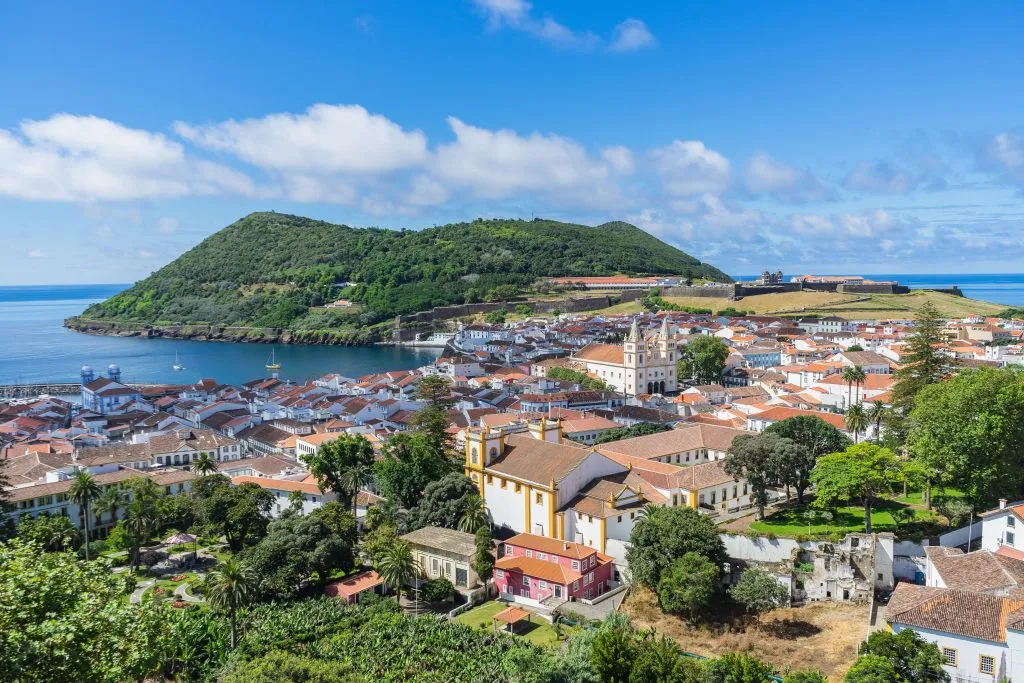
The island is home to two impressive caves. You can visit both in one afternoon leaving ample space to hike the Mistérios Negros trail that starts at the entrance of Gruto do Natal.
The next day you can visit the Furnas do Enxofre, a fairytale-like landscape at the heart of the island.
The island has numerous impressive viewpoints and if you plan your visit in summer you can dive into the countless natural swimming pools to cool off.
Three days is all you need to see all of the highlights of Terceira, which will allow you time to leisurely road trip the island and enjoy all the beauty it has to offer.
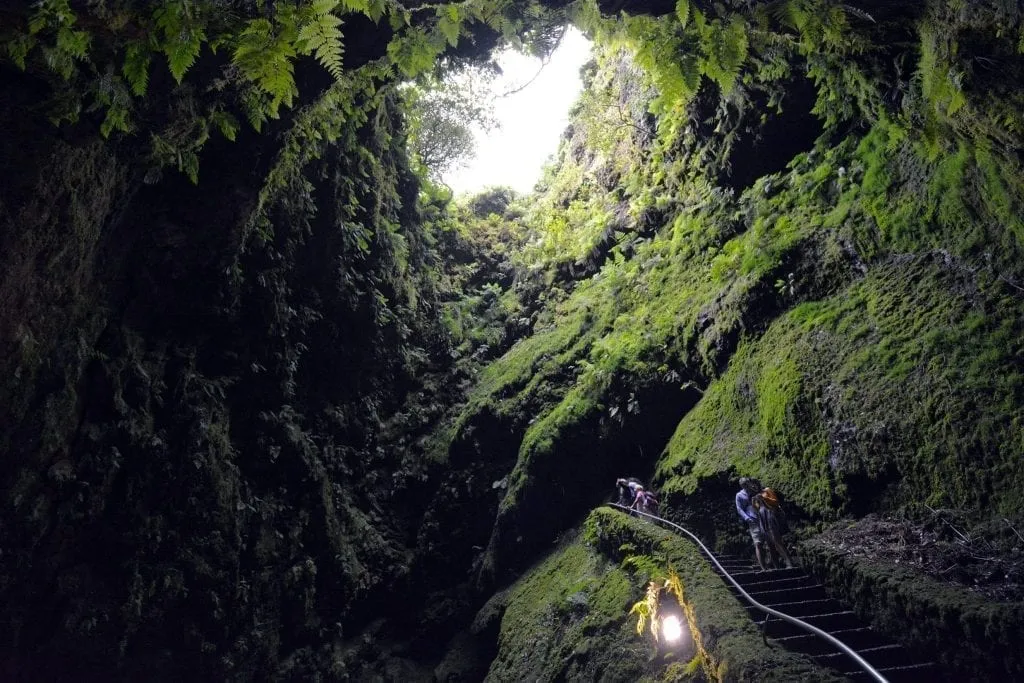
From Linn of Brainy Backpackers
A road trip across the Tramuntana mountain range in Mallorca is a must if you visit the small Spanish island.
Starting in Palma de Mallorca, drive straight to Cap de Formentor for breathtaking cliff views.
You should not miss Cap de Formentor’s viewpoint, but even more spectacular are the views from an old abandoned building and watchtower up the hill next to the viewpoint.
You can either walk for 30 minutes or you can drive up the narrow road.
The reward is the most mesmerizing view of the entirety of Cap Formentor and Menorca in the distance.
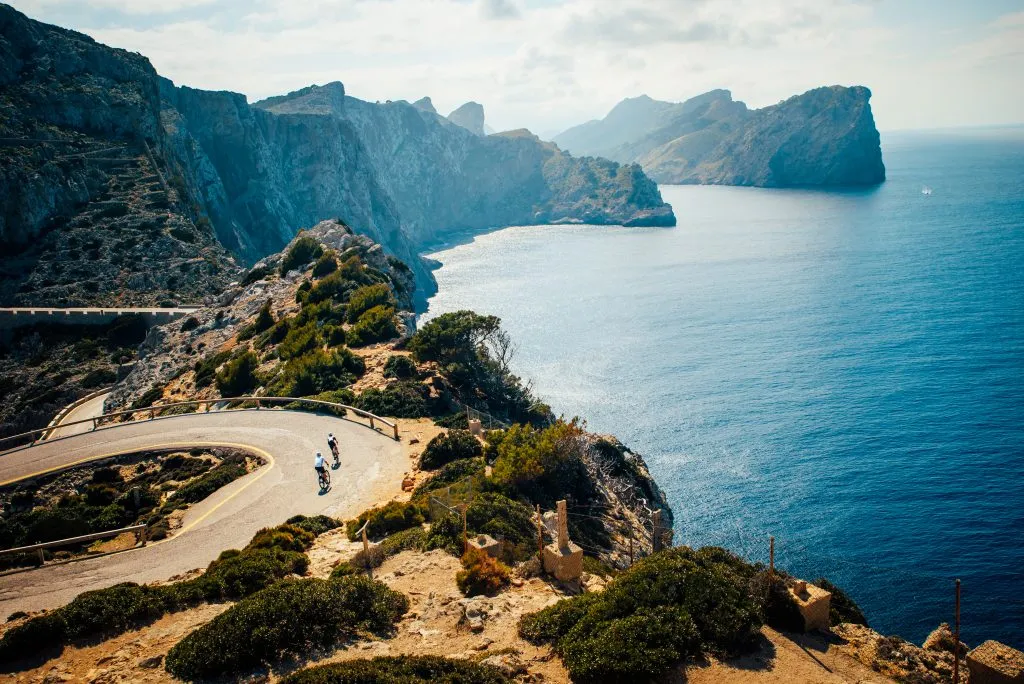
Continue through the picturesque villages of Pollensa, Fortnalutx, Soller, Deia, Valldemossa, and Port Valdemossa.
In Soller, you should leave the car and take the old-fashioned tram down to Port de Soller. This town is a great place to stay the night during your Mallorca road trip.
Recommended Road Trip Route
The route can be done in a day, but it is recommended to spend at least 2-3 days to get the most out of it.
With more time, you can add additional island destinations to sightsee, enjoy the beaches, and go snorkeling in Mallorca !
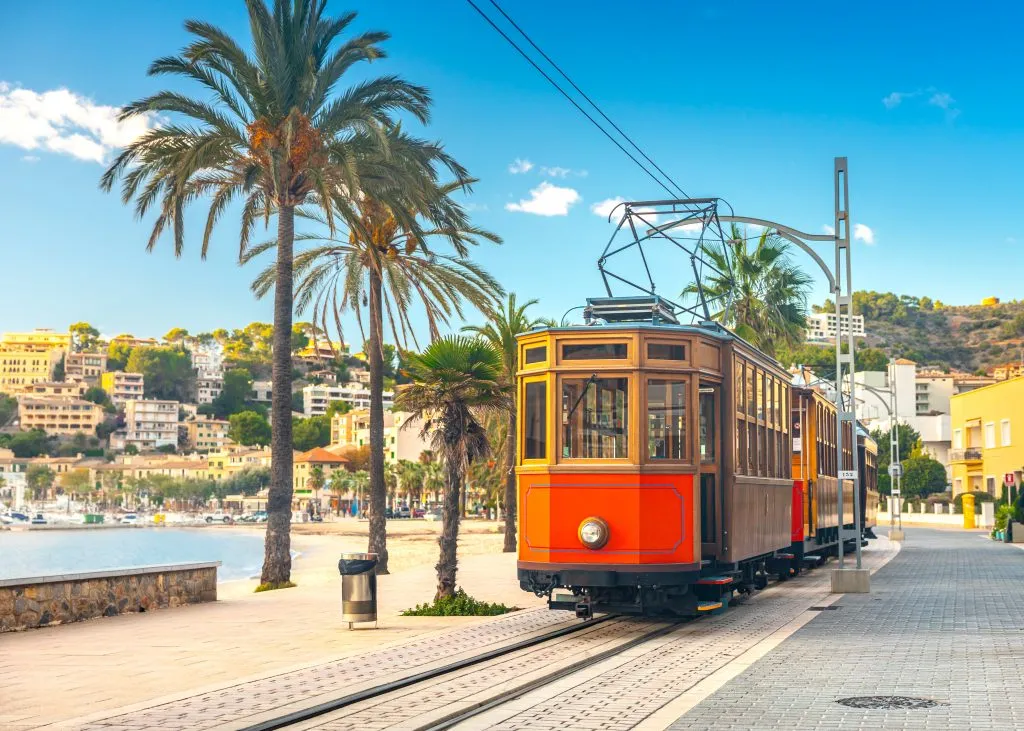
Lisbon to Porto, Portugal
From Or of My Path in the World
Full of incredible stops along the way, a road trip from Lisbon to Porto is a great and easy way to explore multiple regions in Portugal.
This wonderful route includes quite a few unique landmarks, so it should be on any Europe lover’s bucket list.
The first one that shouldn’t be missed is Cabo da Roca, Europe’s westernmost point.
It provides the most scenic views of the Atlantic coast, and it’s the starting point of several hikes alongside it.
There’s also a nice bonus of getting a personalized certificate confirming the visit to this unique place.
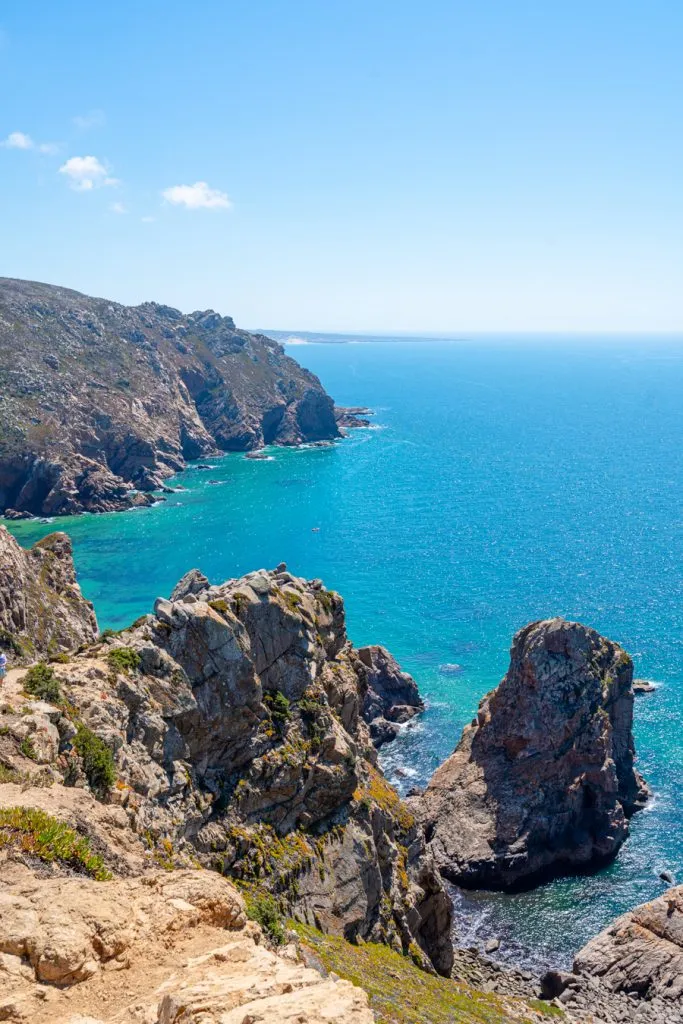
Another must-see on this road trip is Sintra. It’s home to the iconic, colorful, and Insta-famous Pena Palace, but there’s a lot more to this town.
Other historical landmarks to visit here include the Castle of the Moors, the Palace of Sintra, and the palace of Quinta da Regaleira.
The fairytale town of Obidos is also worth a visit: be sure to walk the town walls!
And, Portugal’s incredible UNESCO-recognized monasteries of Alcobaça, Batalha, and Tomar lie between Lisbon and Porto.
Your road trip isn’t complete without a stop at at least one of them!
Not including a few days in Lisbon and Porto, this route can take about 3-4 days.
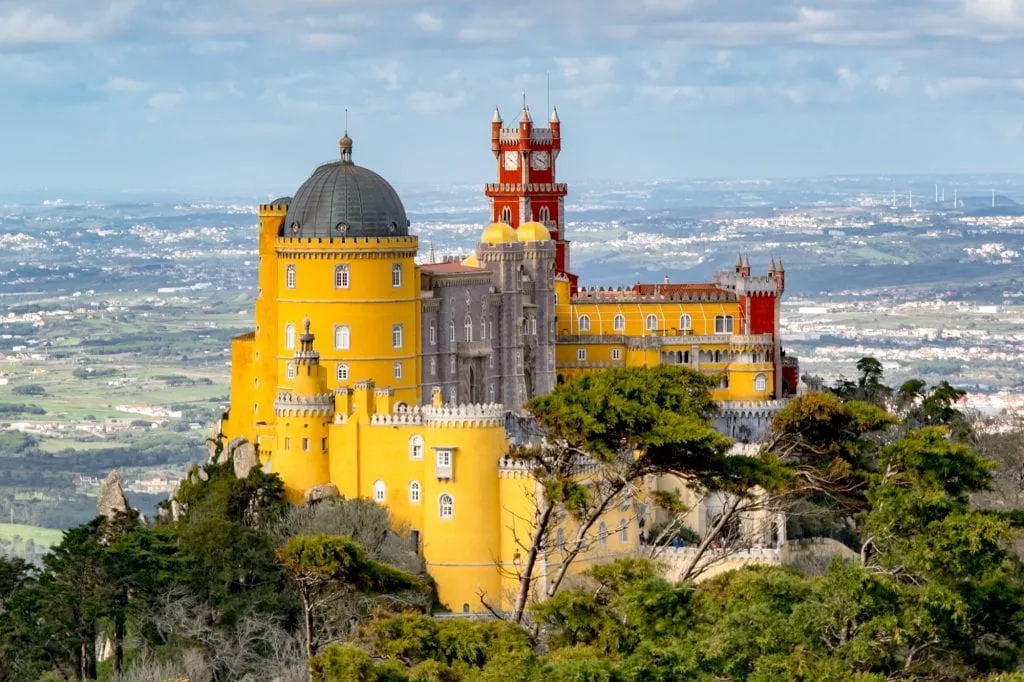
Northern Spain Road Trip (Bilboa to Santiago de Compostela)
From Jessica of My Feet Will Lead Me
One of the most underrated areas of Europe may just be Northern Spain.
The diverse landscape from San Sebastian to Santiago de Compostela makes for multiple mini destinations in one road trip.
From tiny surf towns to mountain villages, to medieval cities, this region of Spain is an absolute gem.
And because it typically gets overshadowed by Barcelona, Madrid , and Andalucia , there won’t be swarms of tourists and prices are very reasonable.
Starting with the autonomous community of Basque Country, this culturally distinct region of Spain is known for its amazing cuisine and especially seafood.
Here, you’ll want to get your fix of “pintxos” or bar finger food.
For a lesser-known but incredible sight, visit the little surf town of Bakio and see the Game of Thrones filming location for the Dragonstone castle, known as Gaztelugatxe.
Continuing west to the Principality of Asturias, the Picos de Europa National Park is a dramatic and stunning area of snowcapped peaks, turquoise rivers, tiny traditional villages, and cliffside roads with views that will make your jaw drop.
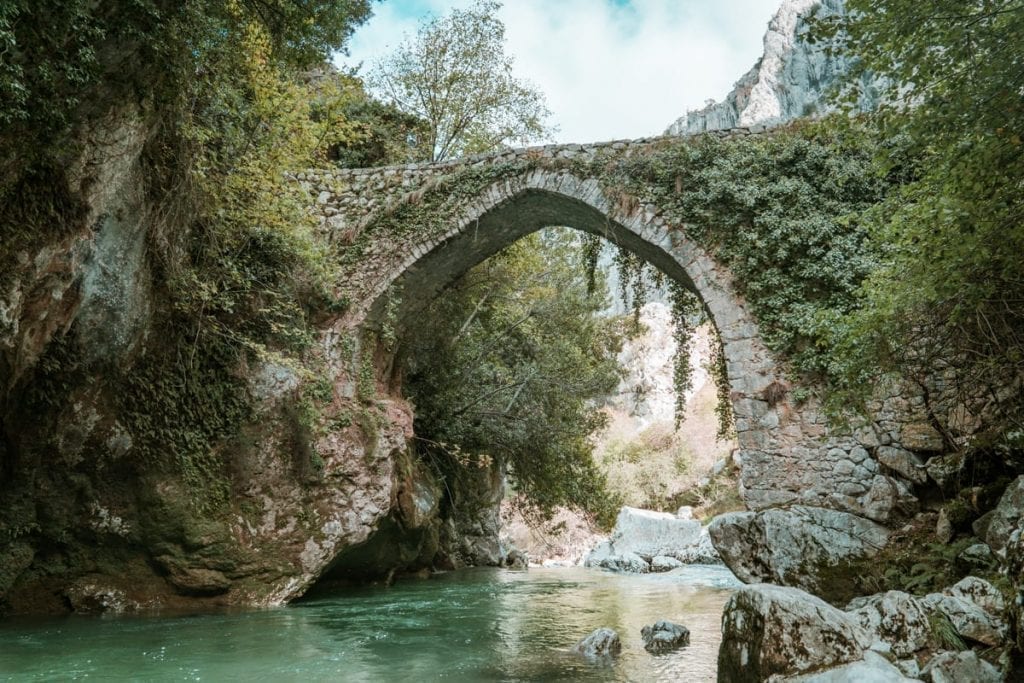
Head back to the ocean in the Asturias region where seaside villages cling to the dramatic coastline.
There are sandy beaches, rocky and rugged beaches, and jade-colored water.
Visit the capital of Oviedo for architecture and history and if small seaside villages intrigue you more, wind your way down the coast stopping for tapas and drinks in towns like Ribadasella, Lastres, and Cudillero.
Finally come to Santiago de Compostela, the capital of Galicia.
It also is the culmination of the iconic Camino de Santiago pilgrimage, so you’ll see many backpackers with trekking gear.
This is a fairly small city with a stunning medieval old town and cathedral. It’s a perfect place to spend a couple of days sampling tapas and sightseeing.
Northern Spain is perfect for mountain and beach-loving adventurers alike.
You’ll need at least a week to adequately cover the small towns, and longer if you want to spend time in the cities of San Sebastian, Bilbao, Santander, Oviedo, or Santiago de Compostela.
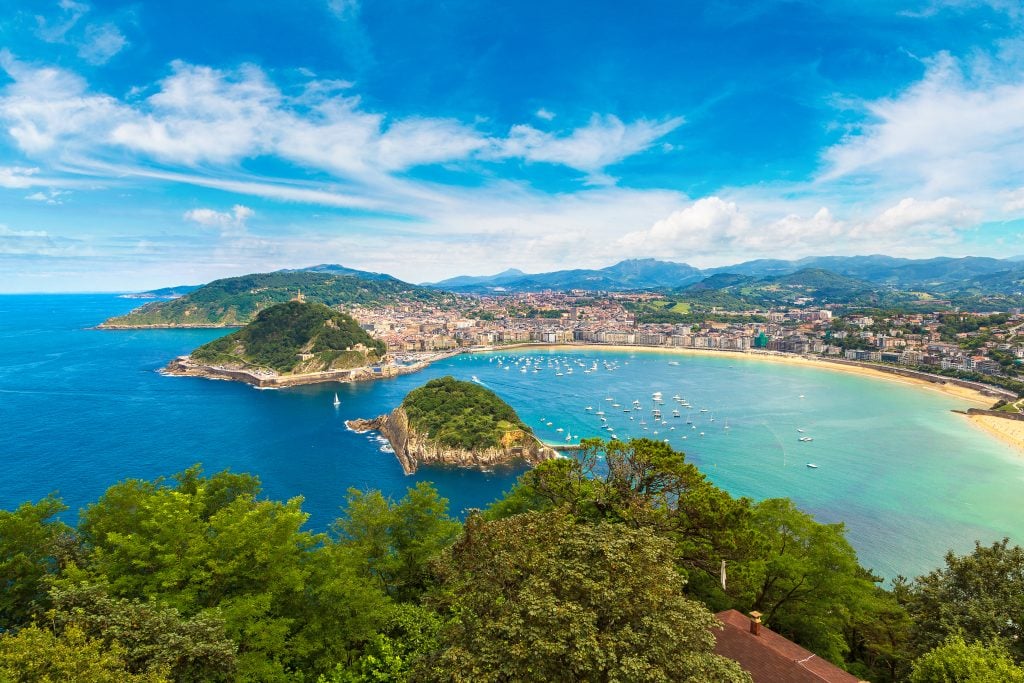
Barcelona to Andorra
From Mar of Once in a Lifetime Journey
Most people drive from Barcelona to Andorra without any stops, arriving at Andorra la Vella in about 2.5 hours.
However, you can also make it a day trip and visit a few of the interesting villages along the way.
Start with a morning stop at Montserrat Mountain. This famous landmark outside of Barcelona is a holy mountain for Catalans and contains the black Virgin of Montserrat.
There is a museum that holds paintings from famous artists such as Caravaggio and Picasso as well as the church which can be visited.
After Montserrat, the next stop should be Manresa. This modern city has a Medieval core that contains a beautiful church, bridges over the River Cardoner and other places worth a visit.
Visit La Seu, the 14th-century basilica that took almost two centuries to build and is a gem of the Catalan Gothic style.
Have lunch in Manresa, the more local a place looks, the better. Most restaurants will have lunch menus for less than 15 Euro, including coffee and usually a glass of wine.
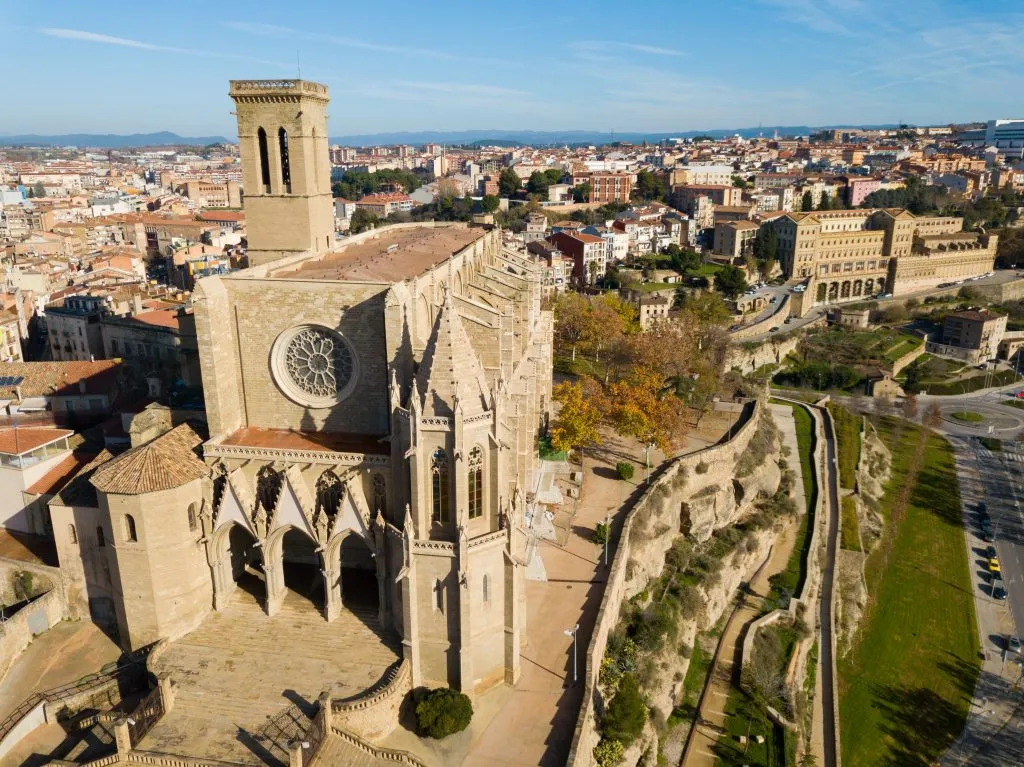
With a full stomach, continue towards Berga, famous for La Patum, a fire festival that takes place every year during mid-June and which sees an explosion of fire, dancing, and drums.
If La Patum is not on, you can learn more at its small museum, and explore this small Medieval village with its entry gate called Portal de la Magdalena.
After Berga, continue to La Seu d’Urgell, the capital of the county of La Cerdanya and the last territory before reaching Andorra.
In la Seu, as the name indicates, you can see a fabulous Romanesque Catedral de Santa Maria, which is one of the most important in Catalonia and has been well preserved.
There is an adjacent museum with Romanesque art pieces and a cloister.
You can comfortably complete this short European road trip in a day.
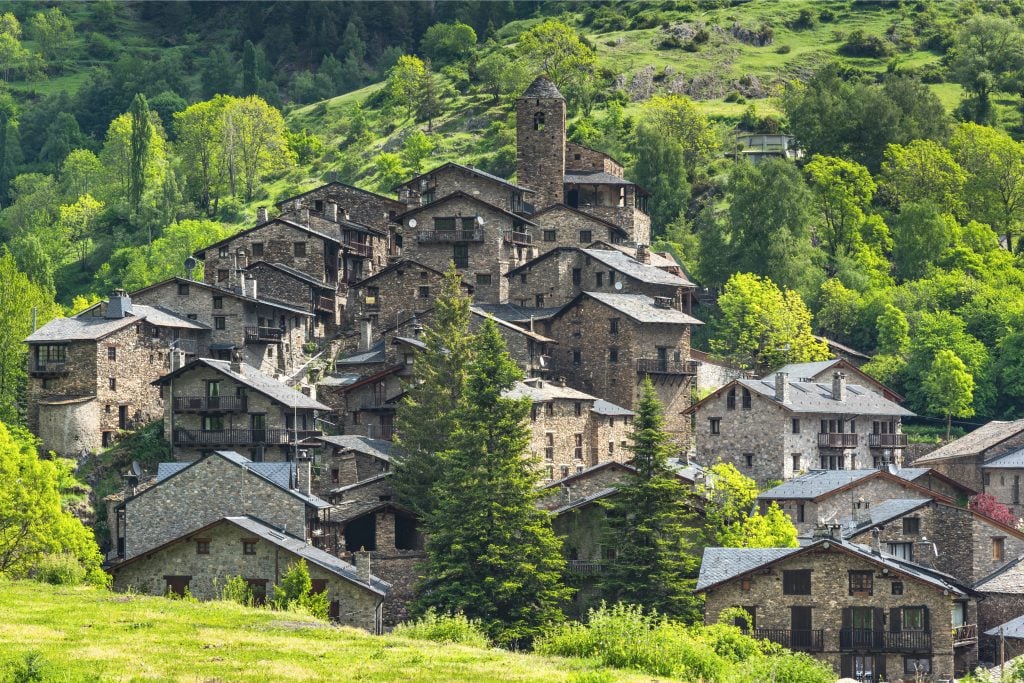
From Stephanie of Sofia Adventures
Slovenia is a stunning country, and some of the best places to visit in Slovenia are best reached by car.
While many tourists know to see Ljubljana and Lake Bled, gems like the UNESCO World Heritage site of Idrija, Lake Jansa, and Triglav National Park are can’t-miss spots that are slightly more remote.
Start with a day or two in Ljubljana before you pick up a rental since Ljubljana is famously walkable and compact. When you’re ready to hit the road, you truly can go in any direction!
Head southwest to Predjama Castle, Skogjan Caves, and the seaside town of Piran , or you can head west to Idrija and the Julian Alps.
Or go northwest to the waterfall-laden paradise of Triglav National Park.
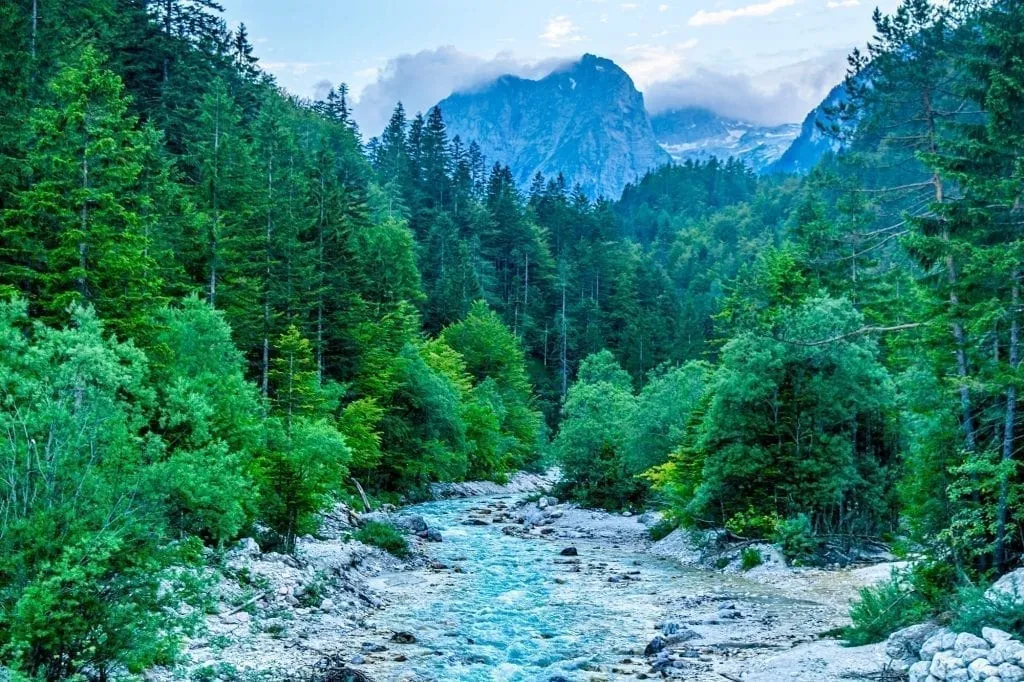
If you’re itching to go east, set your GPS to Maribor and enjoy this gorgeous and quiet Slovenian city that too many tourists skip over.
If you’re going to be in the country in the wintertime and intend to drive through the mountains or do any skiing, make sure you pick a rental car that can handle the driving terrain!
The mountain roads in the west can be a bit tricky.
You can cover a lot of the country in one week, but give yourself two weeks to enjoy a lazy circuit around this tiny but packed country.
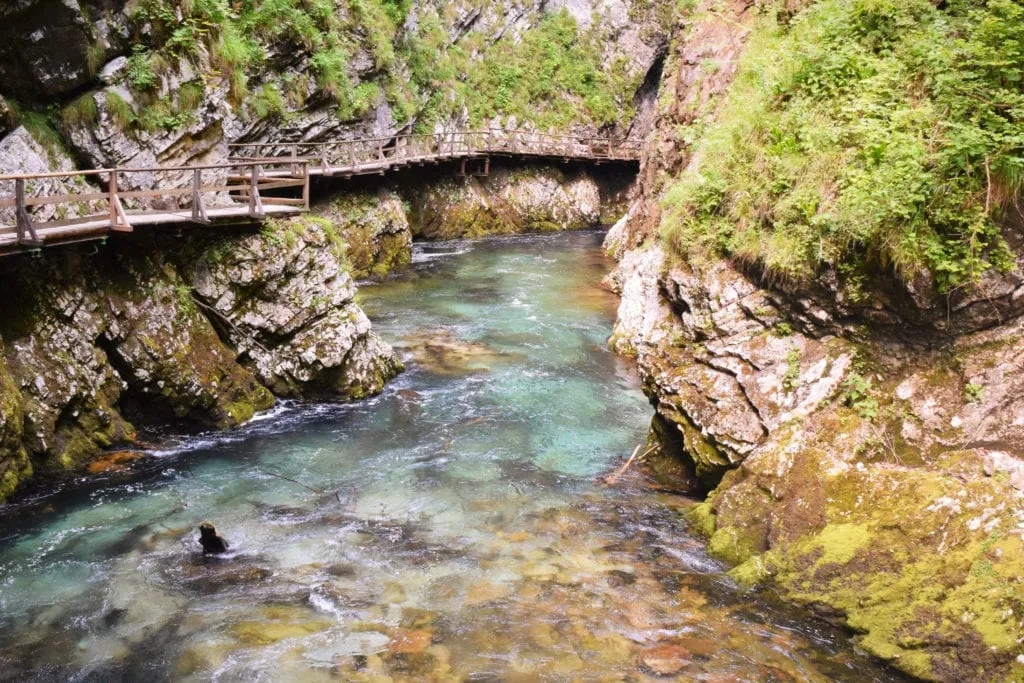
Bay of Kotor
From Emily of Wander-Lush
Petite, affordable, and with only one toll road to its name, Montenegro is a terrific place for a European road trip.
While you can reasonably cover the entire country from mountains to sea in 7 to 10 days, for a slower-paced road trip around Montenegro , I highly recommend honing in on the Bay of Kotor.
Montenegro’s crowning jewel, the Boka winds its way along the northern part of the country’s Adriatic coast, carving deep coves into its stony mountains.
Eighty kilometers of well-maintained highway hug the shoreline, meaning it takes just over 2 hours to drive around the entire bay.
Along the way, there are plenty of small towns and national parks to stop off at.
Highlights include the town of Kotor , with its UNESCO-listed Old Town, Budva, Sveti Stefan, and Herceg Novi, and Perast, a tiny Venetian town sandwiched between a pretty blue-water bay and towering hills.
One of the best things about this road trip is that because of the short distance, you’ll never have to do more than an hour or so worth of driving in a single day.
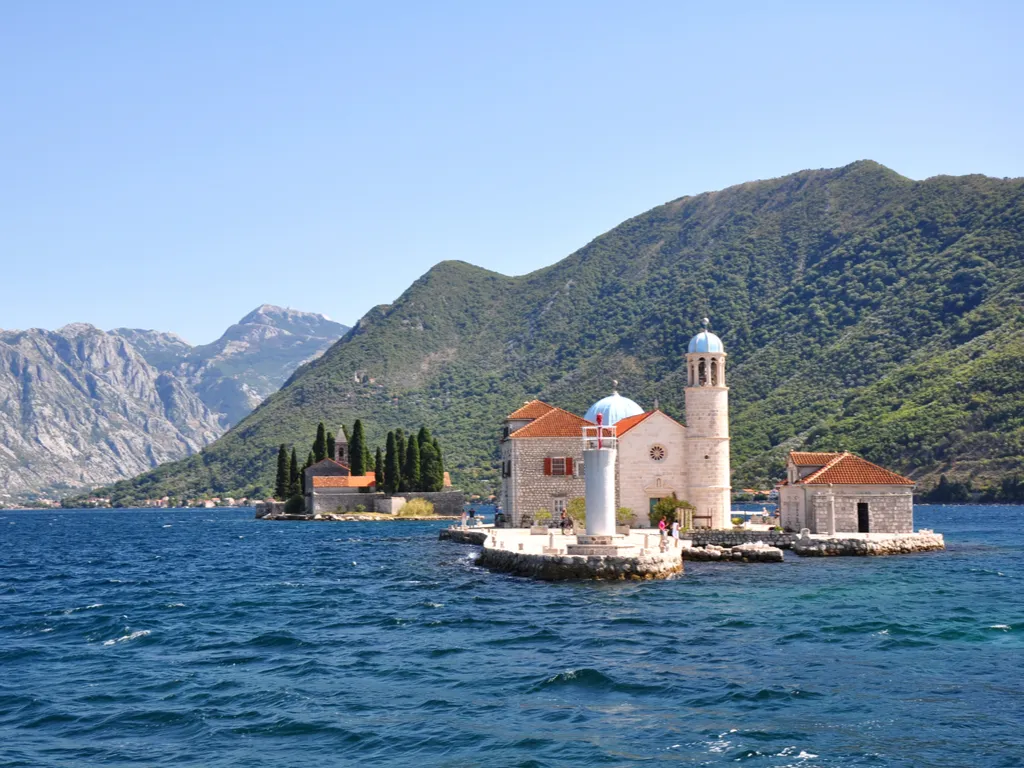
You can easily break up the journey with longer stays in the more laid-back towns (Perast is perfect for this – mainly because it’s free from cruise ships).
If you want a change of scenery, it’s only a quick detour up the steep hills above the bay to reach Lovcen National Park.
If you’re feeling brave, take the Kotor Serpentine, a notorious road that involves 16 hairpin bends.
The views get more and more spectacular with every turn, and there are plenty of places to pull over for a photo once you reach the top.
I recommend setting aside at least 5 full days to do this route, and the towns along the way, justice.
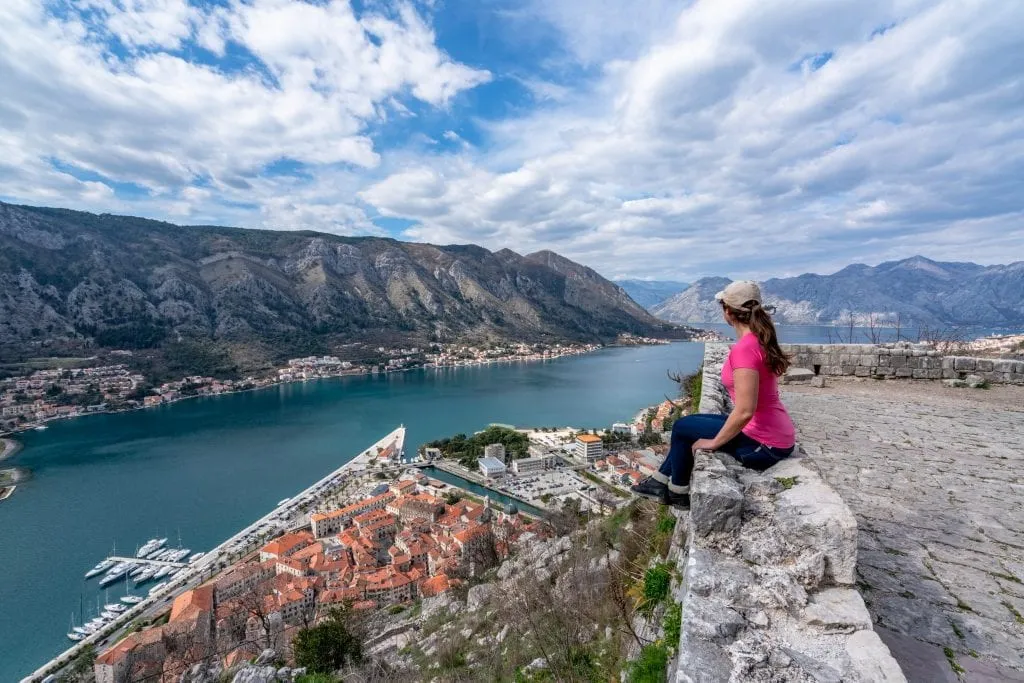
Hvar, Croatia
From Martina of The Global Curious
The island of Hvar, in Croatia, is known for being a stunning, party island lying on the crystal clear depths of the Adriatic Sea.
Some head there to spend a few wild days, and others would visit for a couple of hours as a day trip from Split .
But travelers keen to unwind and truly enjoy Hvar could easily spend from 4 to 7 days road-tripping and discovering some of the island’s gems.
Hvar’s most famous spots can be found in the Old Town and its surroundings, from the cathedral to the Spanish Fortress and a Franciscan Monastery.
If visiting over the summer, the lavender fields up on the hills around Velo Grablje and Brusje are a must, even if you are just passing by!
Camping and off-the-beaten-path enthusiasts can stay in Milna, a tiny villa by the sea with beautiful sunsets and great seafood.
If planning a visit to Croatia’s most famous beach, Zlatni Rat on the island of Brac, Jelsa is also a cute little town with a campsite where you can park and set camp.
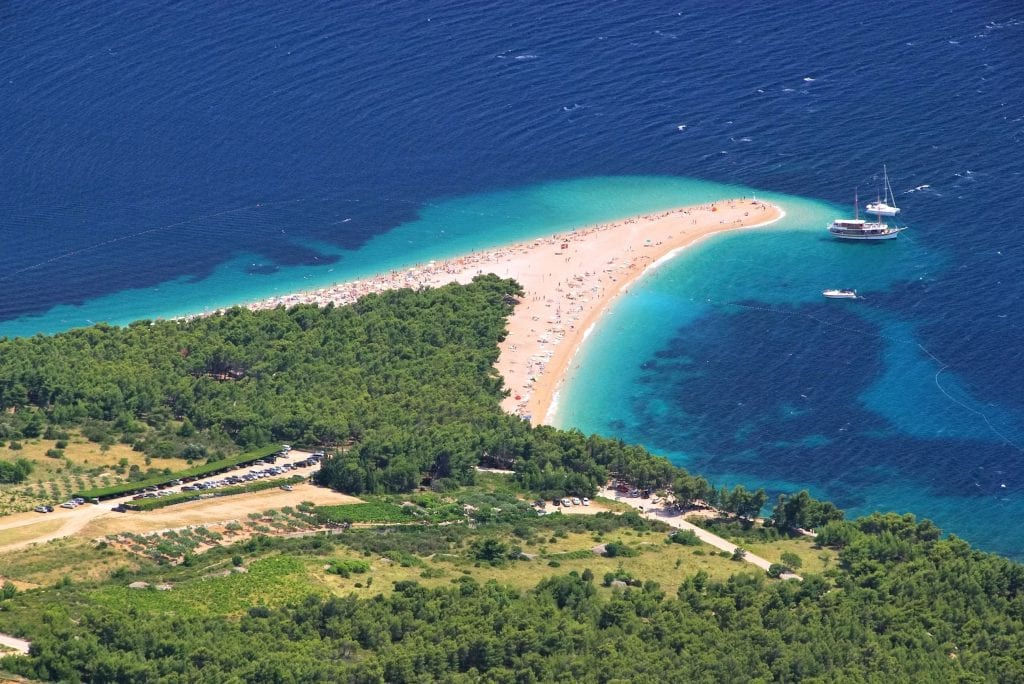
The best of road-tripping is the chance to get to more ‘secret’ places.
Pitve is definitely one of those! It’s a tiny ghost town up in the hills with a population of 69 people.
Getting there is quite fun as you must cross an old narrow tunnel before reaching a settlement full of abandoned stone houses left to nature’s will.
Dubovica is also another very scenic beach in Hvar.
Another great idea is not just touring the island but visiting the Paklinski Islands, especially Marinkovac and Jerolim.
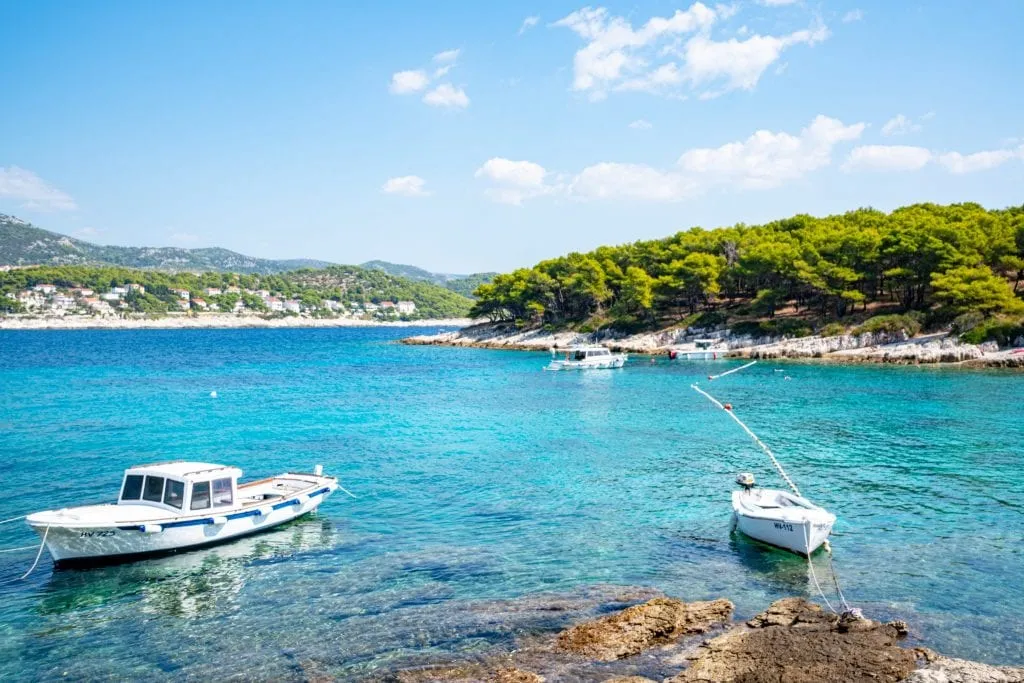
To kick start your road trip, catch the ferry in Split, arrive in Stari Grad, and tour the western half of the island. It’s also possible to rent a car once you arrive there!
To complete the experience, drive across the island to the East and catch the ferry from Sucuraj to Drvenik.
Once in Croatia’s mainland, if you still have time on your hands, drive south for 2 hours and reach Dubrovnik !
Ideally, travelers would spend 5 or 6 nights in Hvar to really explore the island and its surroundings.
The roads are well maintained and although it can get crowded, as soon as you leave the main town, you’ll find peace and quiet.
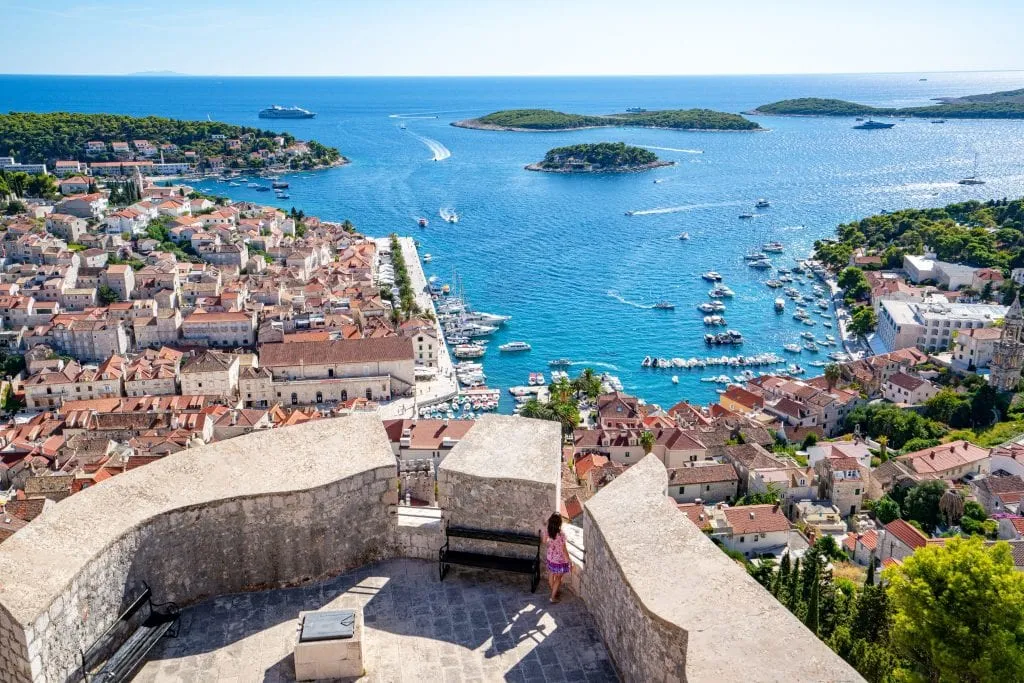
Southern Albania
From Rick of The Road is Life
Albania isn’t the first country that comes to mind when planning a European road trip, but if you give it a chance it will prove to be an amazing adventure.
This is a country with both great natural beauty and interesting history.
Towering mountains plummet precipitously into the crystal clear and stunning Mediterranean waters that span the entire west coast and further inland there is no shortage of beautiful UNESCO-listed sites and old towns to explore.
This southern Albania road trip will start you off in the port city of Saranda before visiting the stunning coastal town of Ksamil, with striking azure waters and nearby UNESCO-listed Roman ruins.
Then, head inland, passing by the beautiful “blue eye” lake before heading to the ancient town of Gjirokaster, with its traditional stone-roofed buildings and market.
Hike up to the ancient hilltop fortress for panoramic views of the surrounding mountains and valleys .
Continuing north you can spend the night in a 13th-century citadel situated high above the UNESCO world heritage town of Berat , eating in beautiful local restaurants as you take in sweeping views of mountains and sunset.
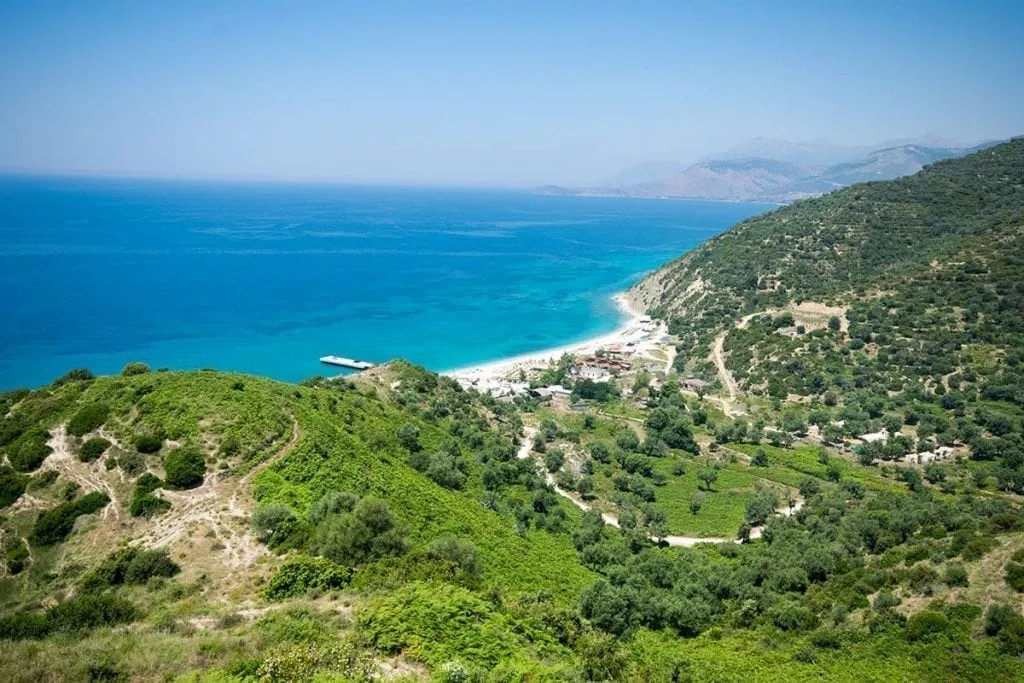
Explore the unique town and architecture before getting back on the road for one of the most stunning drives in the world.
After leaving Berat you’ll head back to the coast via a winding and amazing mountain road, offering jaw-dropping views out across the Albanian riviera; keeping your eyes on the road is no easy task!
You can have lunch at a mountain-top restaurant overlooking the ocean before heading back down to have your choice of beaches to stay on.
Spend as many days on the Albania Riviera as you please, feasting on fresh seafood (at amazing prices) and enjoying the pleasant lack of crowds compared to mainstream European beachside destinations.
There are multiple ferry trips between Corfu, Greece, and Saranda per day so fly into Corfu to save money.
Cars can be rented at Saranda port, consider paying a little extra for a well-known company to avoid scams.
This road trip in Europe can be done comfortably in a week but can be extended for as long as you can handle the sun-drenched beaches, cheap beer, and delicious seafood.

Bosnia and Herzegovina
From Arzo of Arzo Travels
One of the best road trips to take in Europe is through Bosnia-Herzegovina.
This beautiful but definitely underrated country surprises its visitors who venture to enjoy a Bosnia road trip .
Many travelers drive over from Croatia: if so and you come from Dubrovnik or Split , start from Kravica Waterfalls, Pocitelj, and Blagaj.
You can visit all three beautiful places in one day before driving to Mostar which is just a few kilometers from Blagaj.
After spending a day in Mostar it is time to drive to Sarajevo , which makes for a scenic ride .
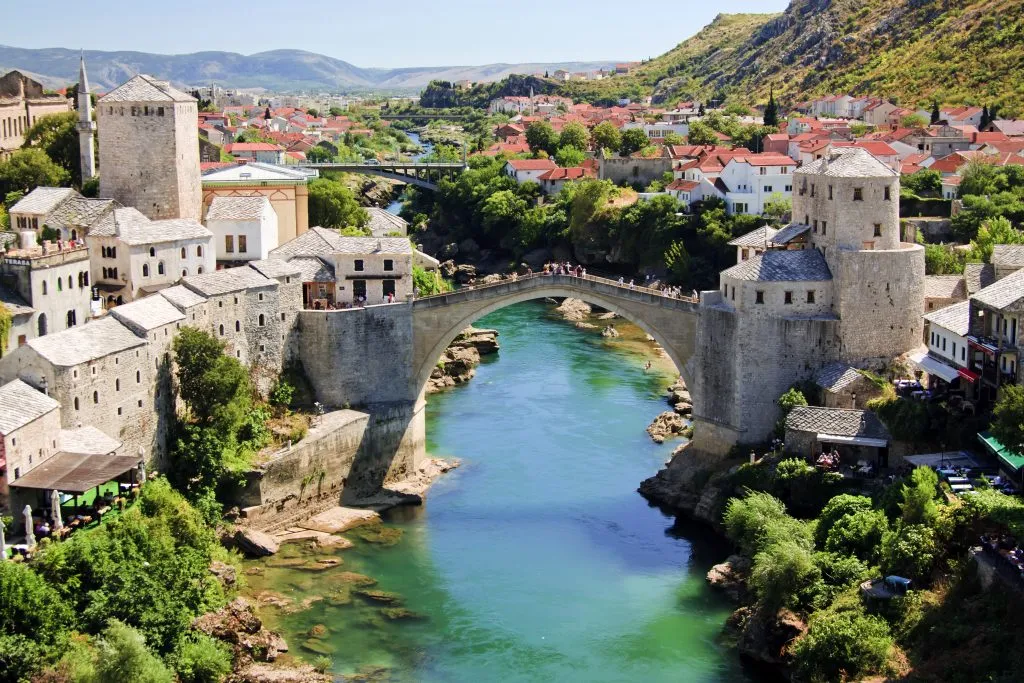
Pass the Neretva River, Lake Jablanica, and Konjic and spend a full day on the road with many breaks.
Sarajevo is a wonderful city where you can spend a day or two before ending your day trip.
For this European road trip itinerary, I would plan in about 5 days.
If you have more time (6 or 7 days), consider driving the M 18 toward Montenegro.
You will get to Bosnia´s longest and deepest canyon – Rakitnica Canyon – where you can do some water sports.
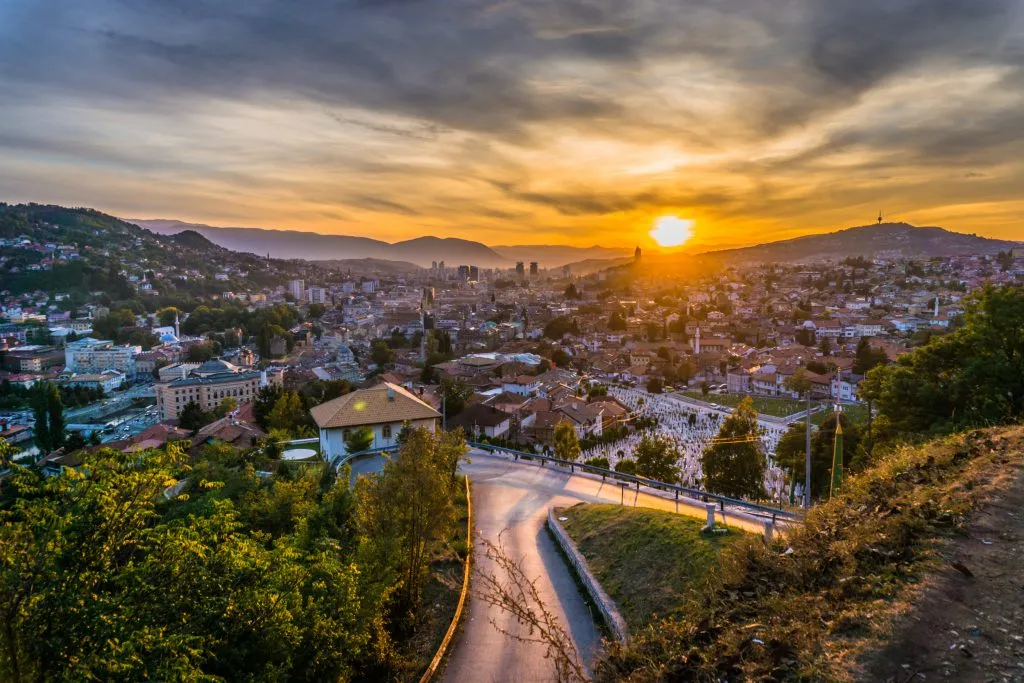
Eastern Crete
From Una of Wandernity
Crete is the largest island in Greece, and it takes several days to visit all of the must-see places on the island.
Renting a car and going on a road trip will make it possible to reach as many points of interest as possible, making Crete a fantastic option when planning a road trip in Europe.
Malia is a great choice for the apartment on the Eastern Crete. It’s known as a party location and has a lot of hotels, beaches, and attractions.
A perfect day-trip from Malia is going to Spinalonga Island, Agios Nikolas town, and Richtis Gorge .
Spinalonga island is uninhabited, and tourists can reach the Venetian fortress and ruins of a former leper colony by boat.
You have to be there early to secure a place on a boat, as during the high season there might be queues.
Agios Nikolas is a coastal town with beautiful houses and streets leading from a hill to the seaside.
There is an old harbor surrounded by charming cafes and very photogenic architecture.
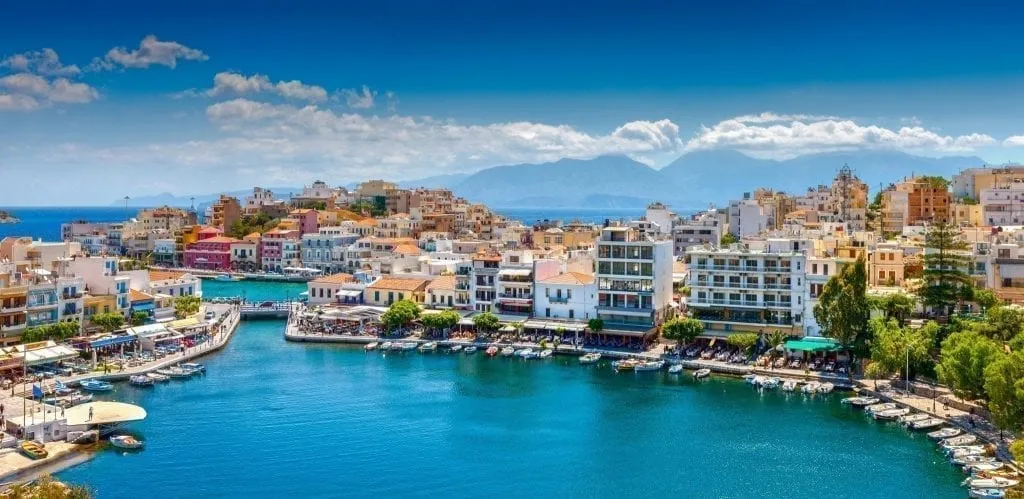
Richtis Gorge is a green and lush hiking path ending at the seaside. The hike is around 4 kilometers long one-way.
It has a waterfall in the middle for a refreshing swim before going back up the gorge.
Another day-trip you can make from Malia is to the cave of Zeus, Knossos, and Heraklion.
Knossos is a place famous due to the well-known myth of the Minotaur. Half-man and half-bull, the Minotaur is said to have lived there in a labyrinth, and the ruins which exist today actually look like the labyrinth.
Knossos is a ceremonial and political center of the Minoan civilization and culture, which might be the oldest city in Europe.
Finally, Heraklion has an impressive Koules Fortress built by Venetians. It’s a perfect place to go for a walk and see the city from a long breakwater.
Try to spend at least a few days dedicated to Eastern Crete if possible!
As the island is quite big, one way to save time on road trips is to rent an apartment on one side of the island for a few days, and then change the base to the other side.
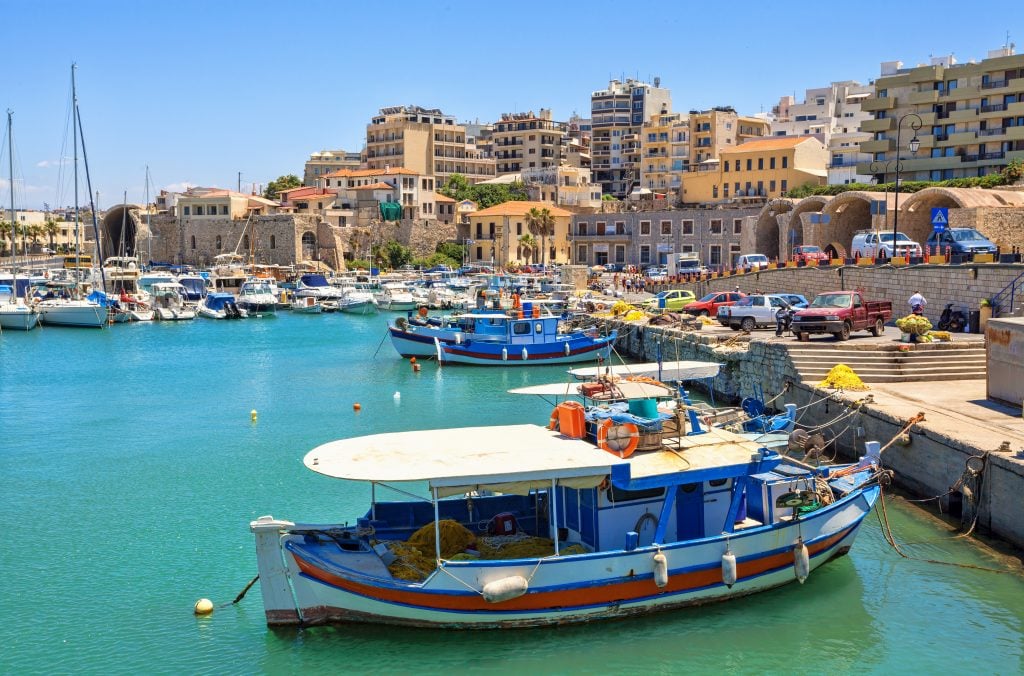
Transylvania, Romania
From Rachelle of Adventure is Never Far Away
With fortress-dotted hills strewn across valleys, quaint medieval towns, and narrow highways slicing through dense forest, road tripping through the countryside of Transylvania is like something out of a fairytale, not a feature that many other corners of the world can boast.
Starting in Brasov, head north towards the vibrantly colorful town of Sighișoara and wander through the maze of cobblestoned streets.
Get lost in the old town city center, which also happens to double as a UNESCO World Heritage site.
Continue northwest to Cluj-Napoca, the unofficial capital of Transylvania, and immerse yourself in the hopping local college nightlife scene.
Travel southwest to the charming town of Hunedoara and visit Corvin Castle, which resembles a real-life version of Hogwarts.
Wander through one of the largest castles in Europe and one of the Seven Wonders of Romania.
Then, start heading east to the city of Sibiu, home to some of the most dramatic houses in all of Europe: the old city center houses have eyes!
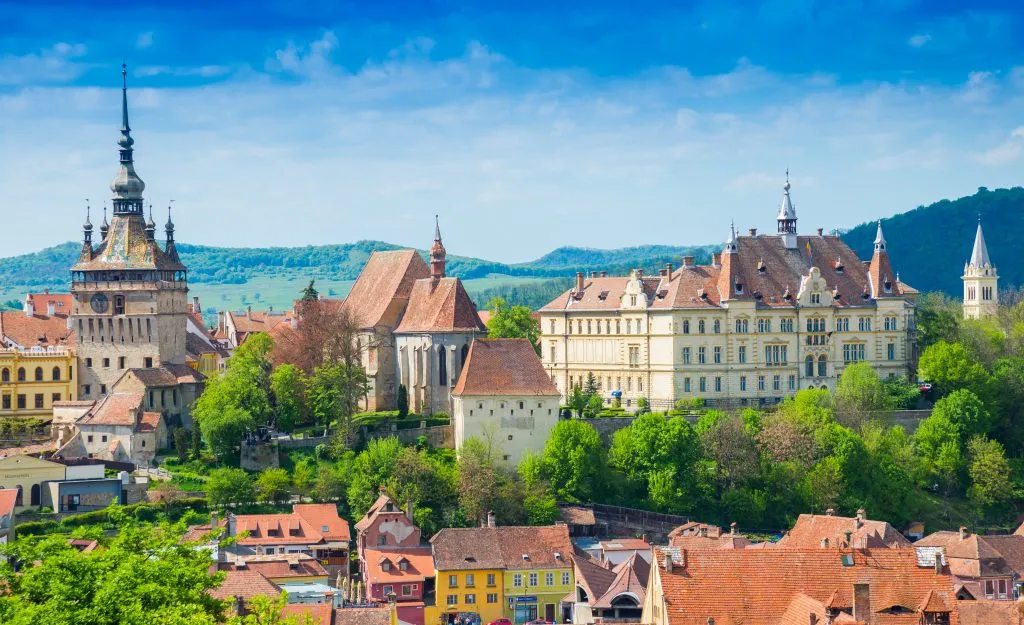
Catch a side-eye stare from the homes as you try your luck walking across the Bridge of Lies.
Finish your road trip through Transylvania by heading east back to Brasov, nestled snugly amongst the mighty Carpathian Mountains.
Transylvania is one of those places that you should visit now before it explodes with tourism.
Prices are cheap, the countryside is beautiful (as you will discover on your road trip through Transylvania!), and it’s fairly easy to navigate!
Road trippers should allow themselves about 5 days to make the journey, as many of Romania’s country roads have slower speed limits and cut through endless villages along the way.
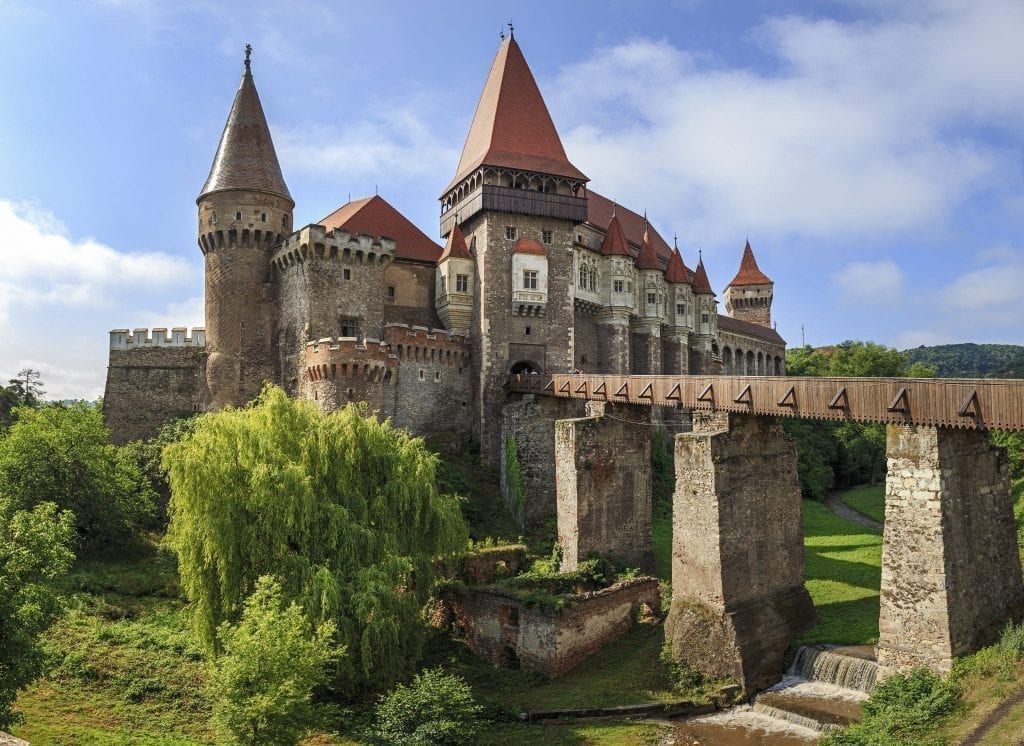
From Julie & Zach of Ruhls of the Road
A road trip through Croatia is basically a gauntlet of adventure and absolutely stunning sites!
Start in bustling Zagreb and head through Plitvice Lakes National Park to Split, and finish in the walled city of Dubrovnik.
This adventure is full of unique sites and experiences that you can’t find in any other country on Earth!
Start your road trip in Zagreb and get your fill of Croatian city life. Head to a local restaurant and pub to get some fuel and prepare yourself for a once-in-a-lifetime Croatian adventure.
The first stop on the road is Plitvice Lakes National Park, which is about as close to the Garden of Eden as you can get.
Explore this paradise for a few days until you are ready to move on. Once you tear yourself away from Plitvice, head to the Croatian coast to Split.

Split is a wonderful coastal town that gives you a truly Croatian experience.
Don’t miss wandering through Diocletian’s Palace, sampling the fresh seafood, or admiring the views from the promenade.
Relax and recharge in Split before making your drive down the coast to Dubrovnik, Croatia’s premier tourist destination.
Dubrovnik’s Old Town, used in Game of Thrones as King’s Landing, is an ancient walled city that makes for a unique adventure.
You can walk the entire wall, experiencing a city that has been home to so much of Europe’s history, and has still never been conquered!
Dubrovnik will be the perfect end to the perfect Croatian road trip.
Plan your trip for one week at least, with a few days in each place, and get ready for the adventure of a lifetime!
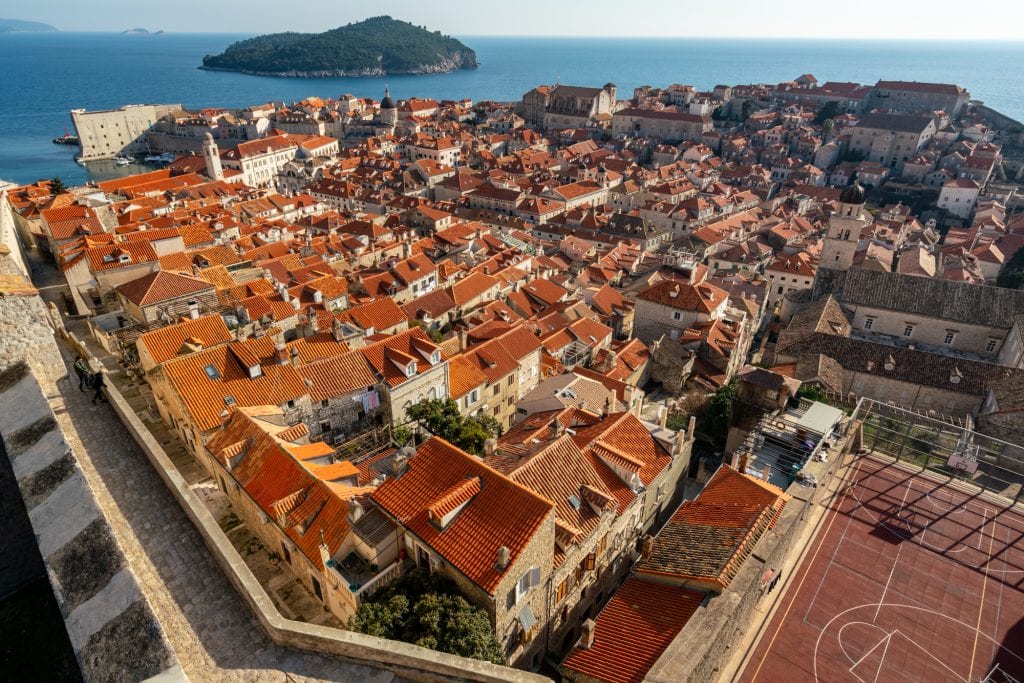
Korçë to Përmet, Albania
From Anita of Travelling Balkans
One of the lesser-known drives within Albania and the Balkans is the road trip from Korçë to Përmet.
Korçë is a lively city with the biggest cathedral in Albania as well as the best beer and Qofte (a sort of meatball). There are many great things to do in Korce , so it makes a great starting point!
The road starting here and leading to Përmet, which is a small town known for its slow food movement and being close to the incredible nature spot Bënjë, is one not to be missed.
It winds through forests, small villages, and natural hot pools, and the road sits parallel to the border of Greece.
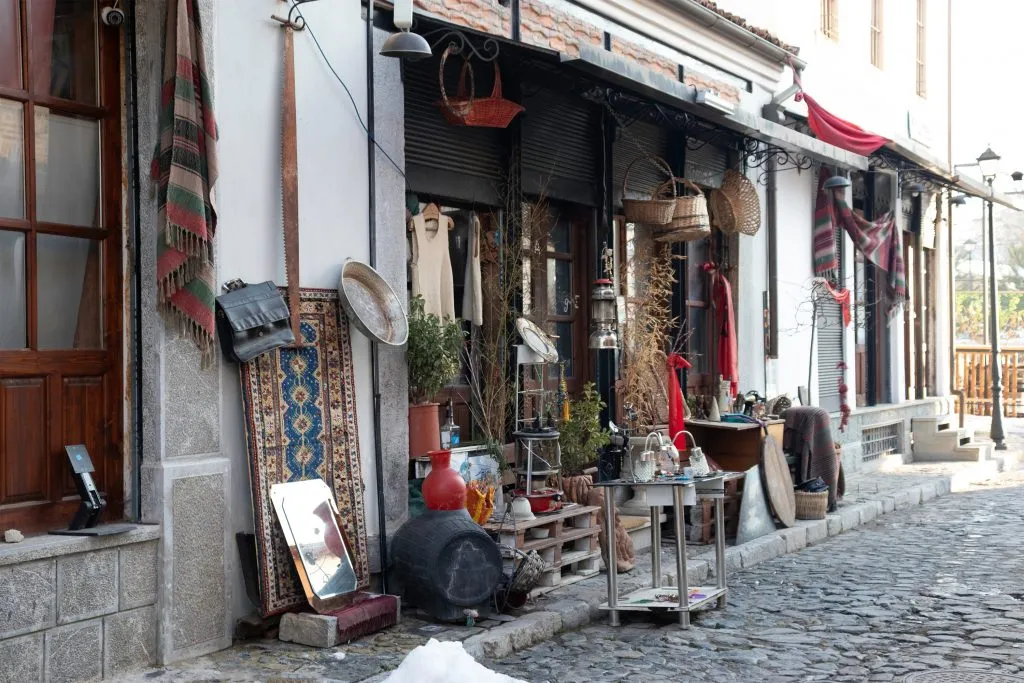
There are also many old bridges along the way which are perfect photo opportunities too. Just beware that you cannot cross safely due to half of the boards missing!
Make sure you stop off at Bënjë which is around 20 minutes from Përmet.
Here you can relax in many hot pools as well as marvel at the Old Ottoman bridge which is a true feature of this area. There is also a canyon and waterfall if you walk directly up the river.
This road trip takes about 4 hours but do allow a couple of hours at Bënjë to relax in the hot pools as well as the various other stops along the way!
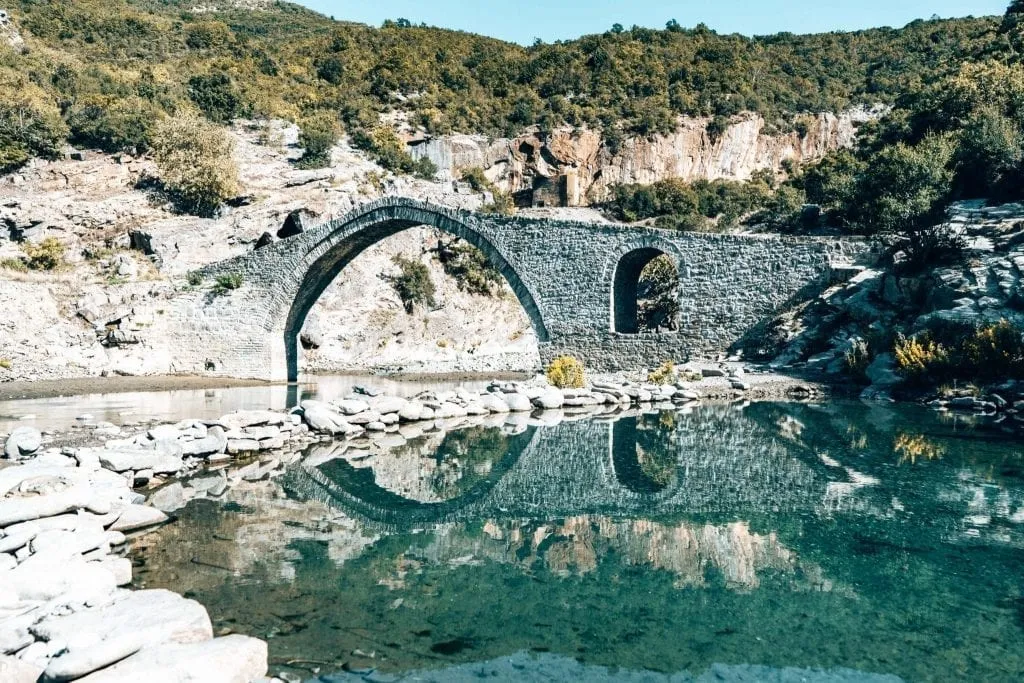
Transfăgărășan Road, Romania
From Dominika of Sunday in Wonderland
If you aim to check all the best European road trips from your bucket list, you should definitely visit Transfăgărășan road in Romania.
This picturesque path among the Transylvanian mountains is one of the two most famous roads in the country (just next to Transalpina).
It was called the absolute best road trip in Europe by the Top Gear team, but even without this honor, it has a lot of stories to tell on its own.
The road was built by the Romanian dictator Nicolae Ceaușescu.
Although there were many easiest ways to travel through the Făgăraș Mountains peaks, he decided to build the Transfăgărășan road to show the power of Romanian technology.
The must-visit place during the Transylvania road trip is the Poenari Citadel.
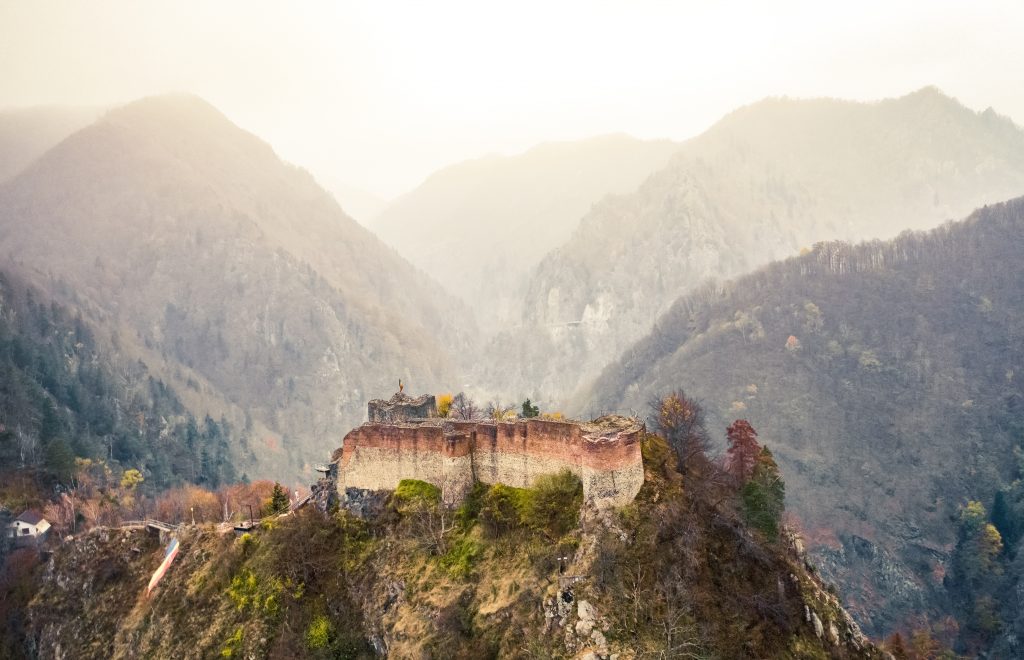
The ruins of the ancient fortress are situated on a high peak which you can reach by climbing ~1500 steps. The castle was the citadel of Vlad The Impaler.
He was the archetype of the famous character of a vampire from Bram Stoker’s “Dracula”.
There are many more interesting facts about the Transfăgărășan road that you should know like Bâlea Lake or Vidraru Dam. But this trip is something you simply must try on your own.
You can drive the Transfăgărășan road in a day, but be prepared! You’ll need to pay extremely good attention when driving, as this is far from the easiest driving in Europe.
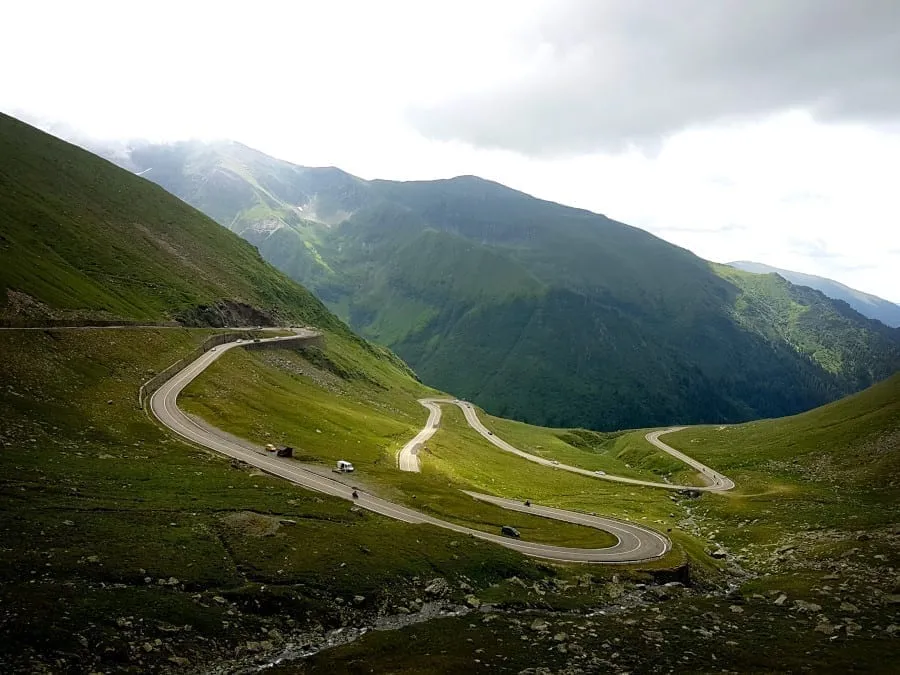
Eastern Scotland
From Gemma of Two Scots Abroad
There’s no denying that Scotland’s most popular road trip is the North Coast 500 but there are other routes which are lesser-known, and have historic castles, cute villages, and fewer midges!
Starting in Scotland’s capital, collect your car from Edinburgh Airport to avoid the stress of city driving or brave the roads and catch the highlights of the city.
Edinburgh Castle and the Royal Mile, Dean Village, Calton Hill, and of course all the Harry Potter attractions should make your list.
Leaving Edinburgh drive over the Queensferry Crossing to the Kingdom of Fife. Park up at North Queensferry for views of the Forth Bridge which is a UNESCO Heritage Site.
Drive to Culross and walk back in time. Outlander fans might recognize Culross Palace.
Next, head to the ancient capital of Scotland, Dunfermline, and spend the afternoon at the Heritage Quarter and the Dunfermline Carnegie Library & Galleries.
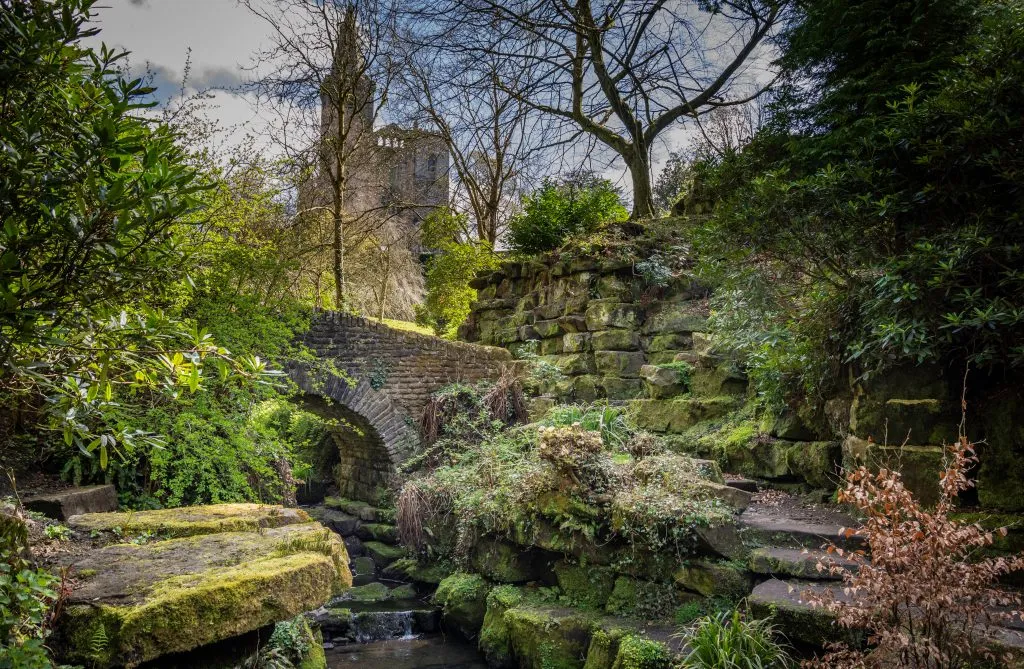
The following morning, enjoy breakfast in Aberdour. Take a stroll along the beach then drive to the East Neuk stopping at Ellie and Anstruther for fishing village feels.
If you like to hike, consider staying in this area of Fife to do part of the Fife Coastal Path or head to St. Andrew’s for the night before moving on to Dundee.
From Dundee, head north to the city of Aberdeen stopping at Braemar and Ballater in the Cairngorms National Park.
At Stonehaven, visit Dunnottar Castle, you can’t miss it, literally! Arrive in Aberdeen and wander the streets discovering the Nuart street art mural trail all over the city.
On the final day, head up to Slains Castle and on to Bullers of Buchan.
From here, you can turn back to Aberdeen for the night or drive to the gateway of the Scottish Highlands, Inverness.
It’s best to set aside a minimum of a week and a half for this road trip, but two weeks is even better.
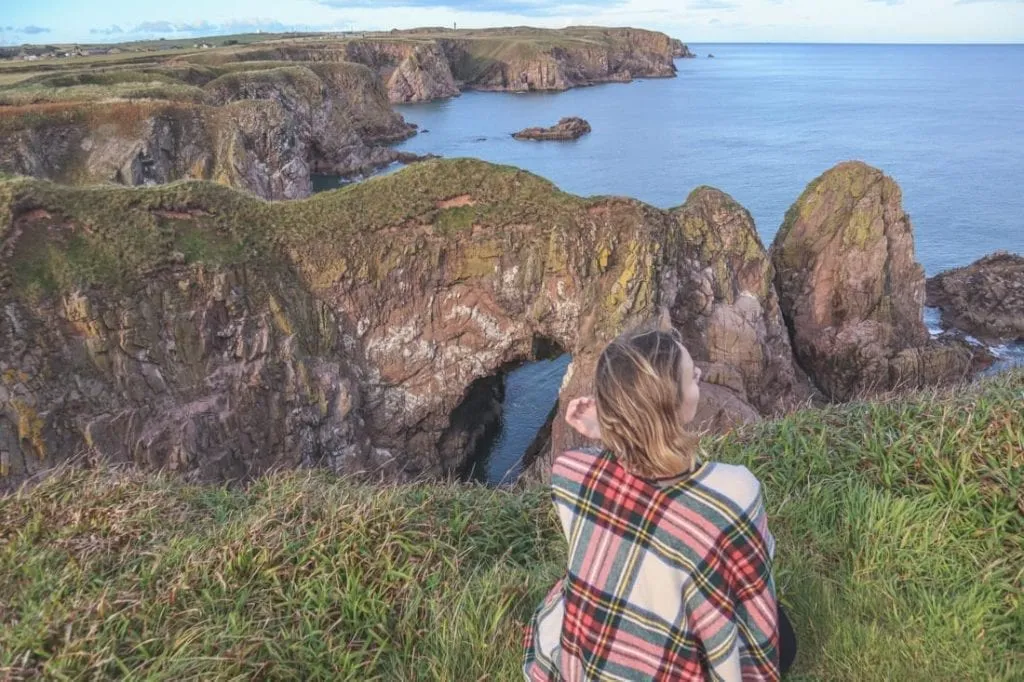
French Riviera
From Victoria of Bridges and Balloons
Experience the glitz and charm of the world-renowned French Riviera on this road trip along one of Europe’s most exciting coastlines.
Though not technically part of France, kick off your French Riviera road trip in Monaco, the fanciest of all the Riviera destinations where you’ll be among mega yachts, Lamborghinis, and diamonds aplenty.
For something more quaint, head to the hills and the village of Saint-Paul-de-Vence, a picturesque enclave famous for its art and the great artists who stayed there in the past.
Cannes is your next stop on this France road trip for some time by the beach and, if you time it right, the famous film festival.
St. Tropez is another popular spot for yachts and as such has the glitz that goes with that, but somehow also retains its charm with pretty streets and a laid-back vibe.
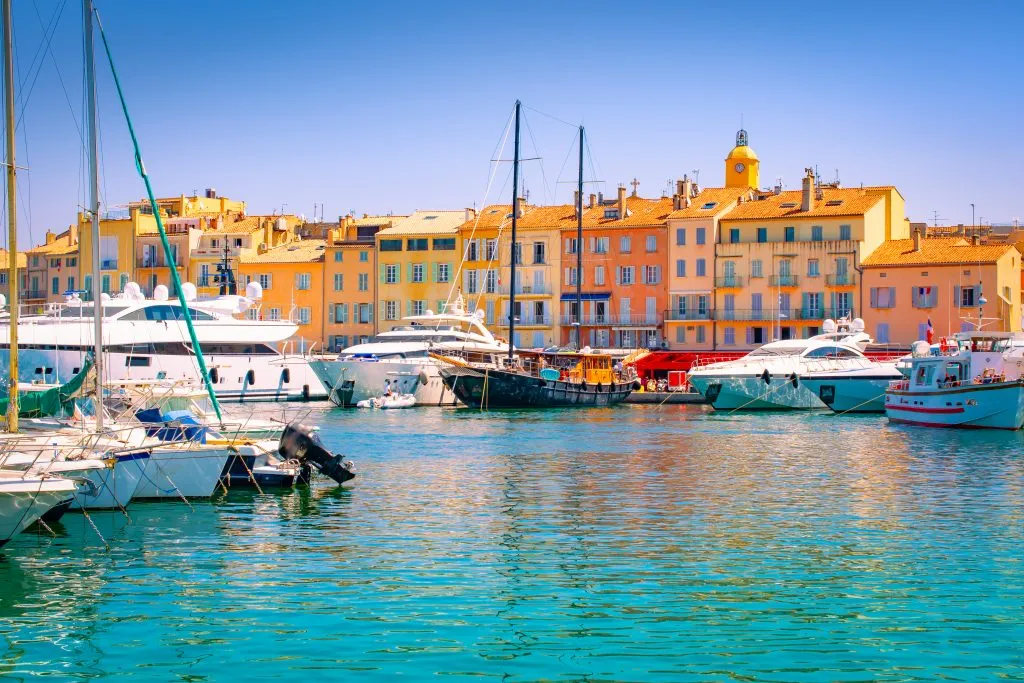
Before your final stop in Marseille, stop at the breathtaking Calanques National Park, one of France’s most stunning sights with turquoise water and hidden coves.
And finally, in Marseille, enjoy the vibrant, multicultural port city with all its gastronomic and cultural delights.
Seven days is ideal for this road trip and I recommend going in the springtime before the crowds hit in the summer.
If you want to extend this road trip into more of the best places to visit in the south of France , consider turning inland to the Luberon Valley after visiting Marseille.
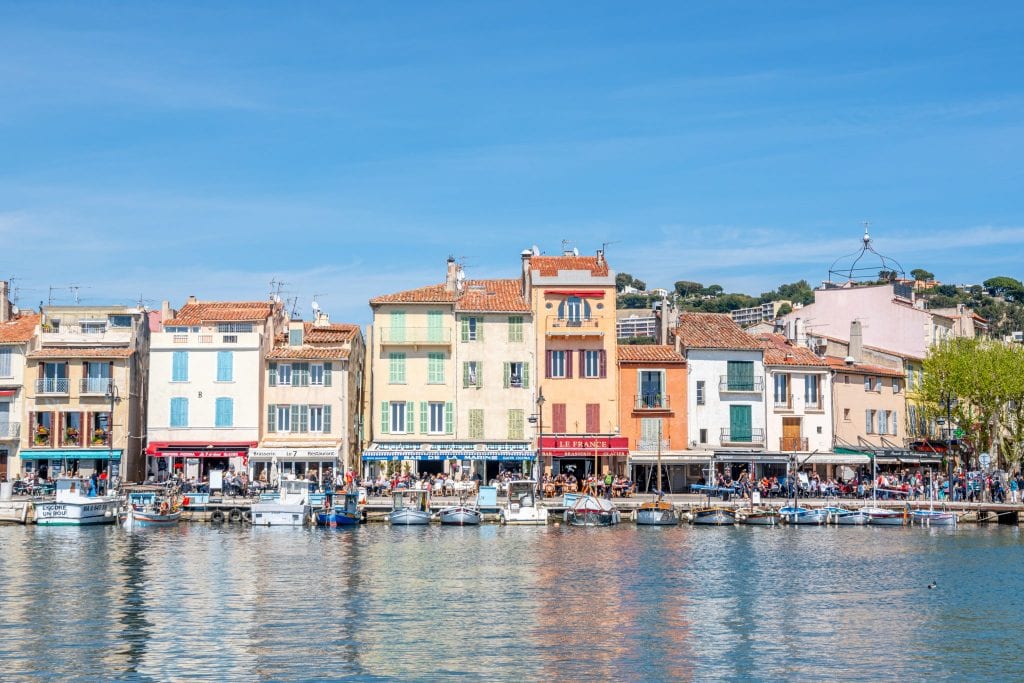
Wild Atlantic Way, Ireland
From Allan of It’s Sometimes Sunny in Bangor
Probably one of the most iconic road trips in Europe is the Wild Atlantic Way, a 1,553-mile coastal road trip following the west coast along the Atlantic Sea.
It is also a route that connects many of Ireland’s more famous tourist attractions which include the Ring of Kerry, the Cliffs of Moher , Connemara, and of course the cobbled streets of Galway.
The route itself can start in either the north in County Donegal or the very south in County Cork which will likely depend on the vantage point of arrival.
For example, from Dublin (2h 50mins) or Shannon Airport (1h 45mins), it may be best to start in the south at Cork, although a more convenient start would be from Belfast in Northern Ireland which is just over an hour from the borders of Donegal.
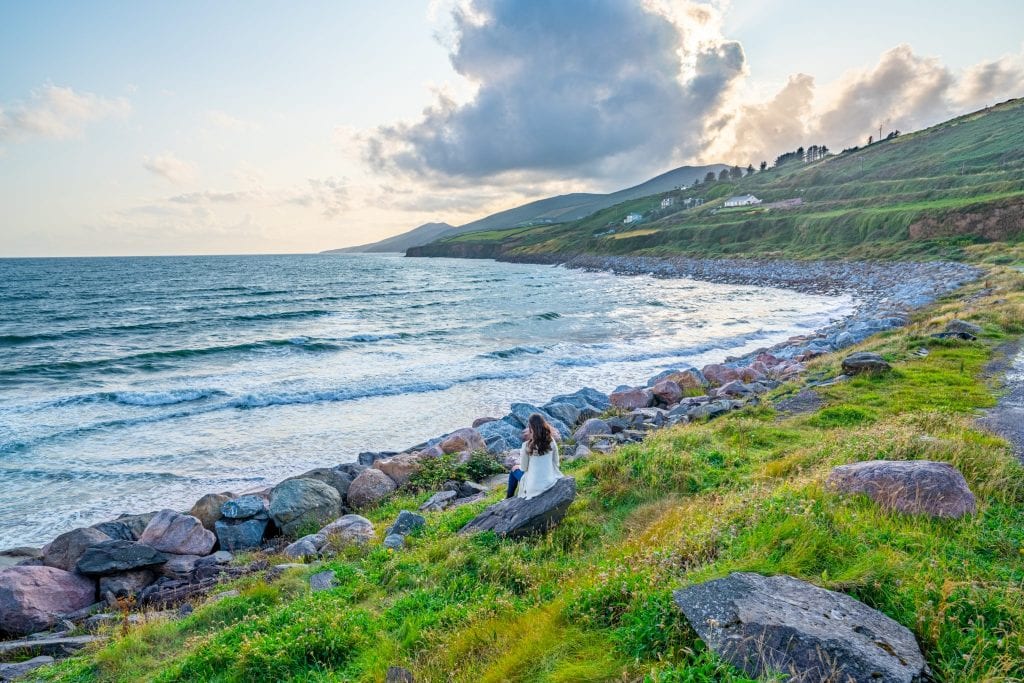
The overall time it then takes really depends on interests along the way!
With enough time, detours to places like the Slieve League Cliffs and Slea Head Drive are well worth your time.
While it is only an 8-9 hour drive direct from the most Northern Point at Malin Head, Donegal to the most Southern point of Mizen Head in Cork, this time would be at least triple when following the scenic coastal routes.
I would give at least 3 full days for any Wild Atlantic Way road trip, and, for a more leisurely drive visiting the various attractions along the way, I would give a week or so.
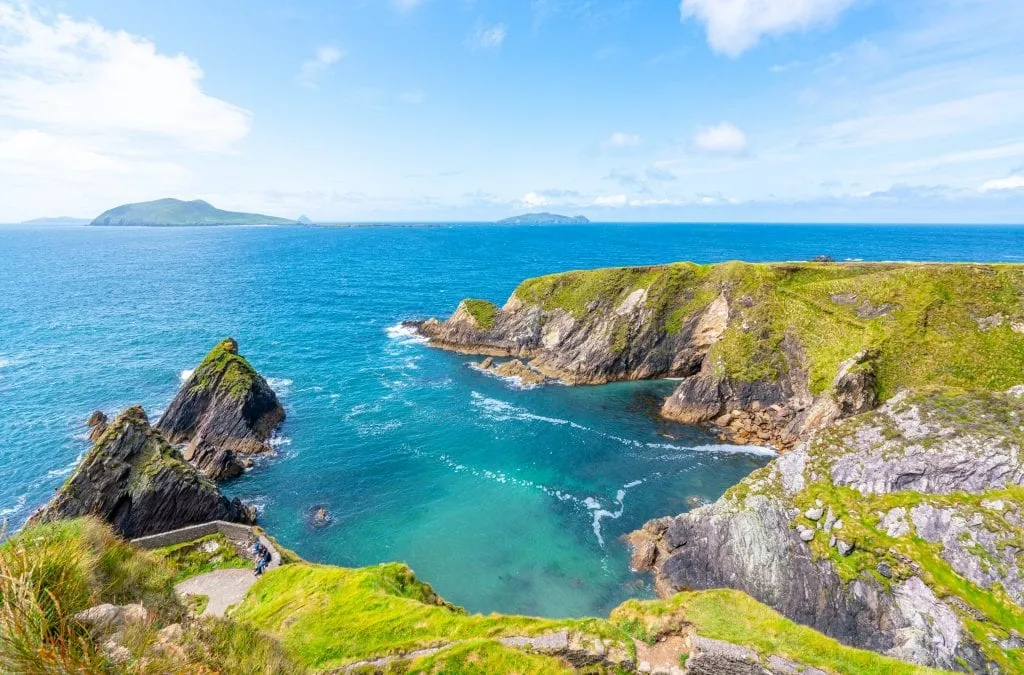
Alsace, France
From Elisa of World in Paris
Alsace is one of the best regions in France and there’s no better way to explore Alsace than on a road trip.
Alsace is best known for Strasbourg, the capital, and its picturesque villages.
It is also one of the most important French wine regions and there are also beautiful natural sites and impressive châteaux to visit.
Start your trip in Strasbourg , Alsace’s capital, to visit Strasbourg’s amazing Gothic cathedral and the streets of La Petite France, in the Old Town, with beautiful architecture surrounded by canals.
Head to the south to visit Colmar , the most famous town in Alsace.
Colmar is a great place to taste some of Alsace’s typical dishes in one of its traditional restaurants (winstubs).
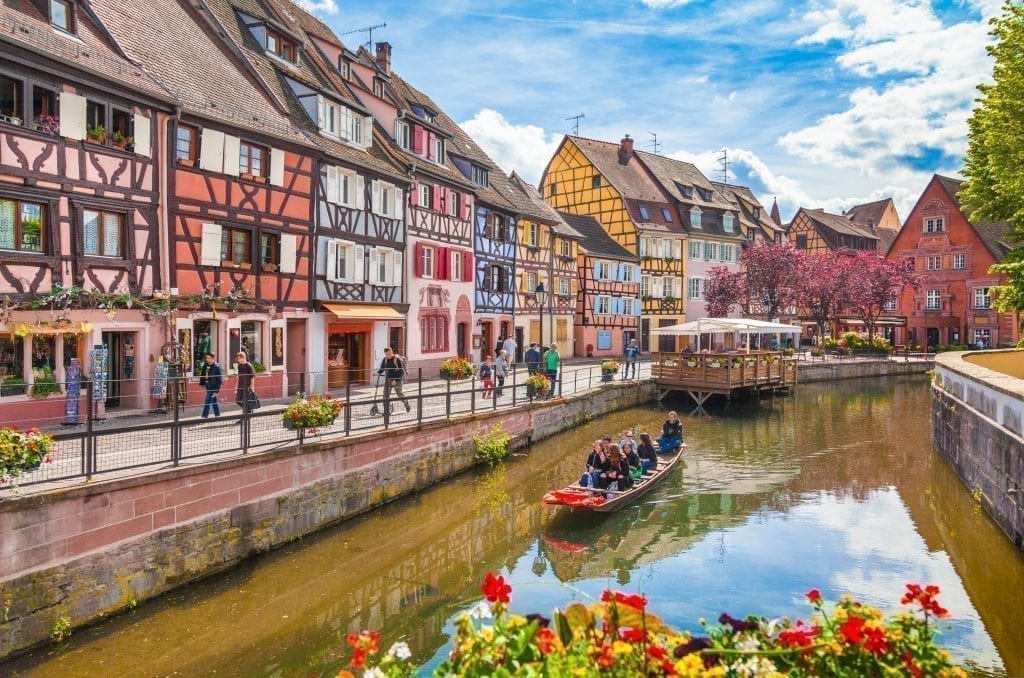
Spend the third day exploring a couple of picturesque towns like Kaysersberg, Riquewihr, or Eguisheim. This may sound like too much but they are really small towns.
Don’t leave Alsace without tasting its wines, especially the whites.
If you don’t know what to choose, let yourself be guided by the winegrowers and you will be fine.
If you want to hit the road to explore Alsace, a minimum of 3 days is recommended.
This will give you time to visit Strasbourg well (we recommend one full day) plus explore some of the region’s picturesque villages and do a couple of wine tastings.
If you are interested in hiking in the Vosges, then a minimum of 4 days will be necessary.
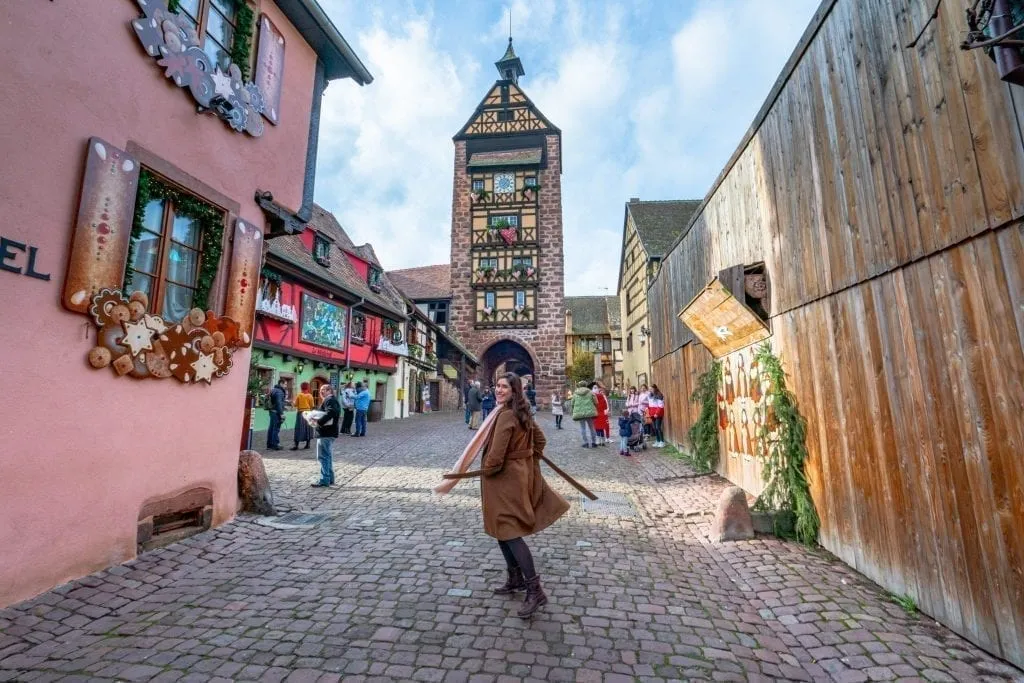
From Ben Holbrook of Driftwood Journals
The open road, cozy country pubs, and wild horses galore… Wales really is made for those who love road trips in Europe.
Many a visitor to the UK makes the mistake of only visiting Cardiff in their bid to “tick Wales off” their bucket list. Needless to say, they’re missing out in a big way.
Instead, what they should really do is hop in a rental car and head straight to the glorious Brecon Beacons National Park.
Located less than an hour away from the English border (via the newly free-to-cross Prince of Wales Bridge), this is a land of endless rolling hills and unspoiled natural beauty.
If you have time then be sure to make a pitstop in the charming town of Abergavenny on your way, aka the Gateway to Wales, followed by a quick stomp up Sugar Loaf Mountain.
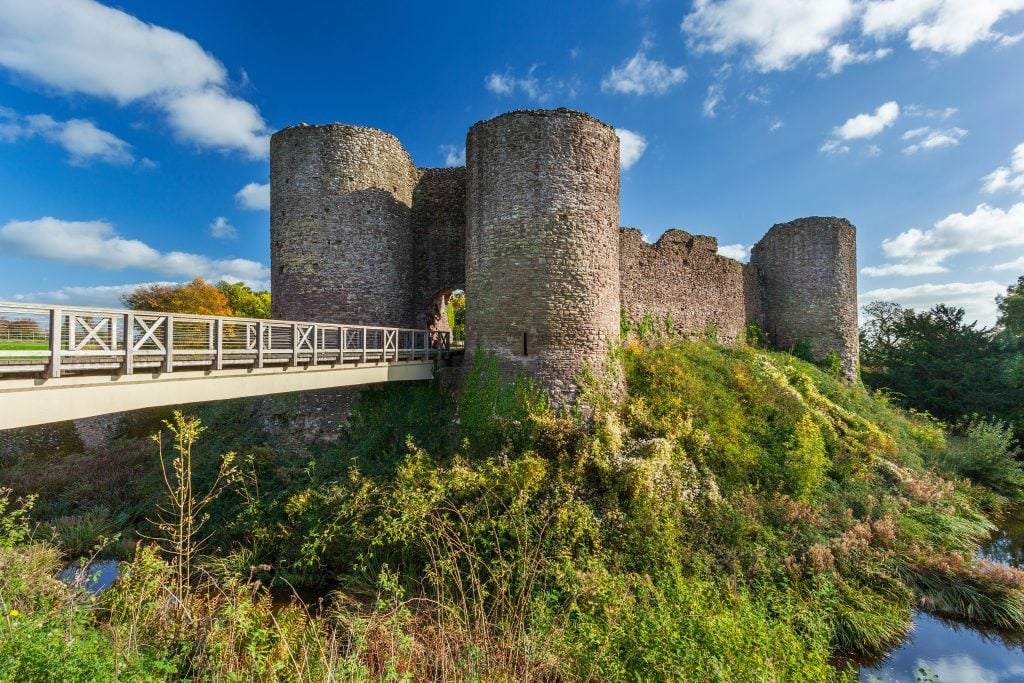
Once in the Brecon Beacons National Park itself, simply let the winding, pine-fringed backroads guide you and stop for photos and picnics at secluded spots along the way, such as the Talybont Reservoir and Usk Reservoir.
Then it’s time to wind the windows down, shift into top gear and cruise the inspiring Black Mountain Pass, named one of the greatest driving roads in the UK (made famous by none other than motoring icon Jeremy Clarkson).
From the Brecon Beacons, you can continue west to the rugged Gower Peninsula and/or Pembrokeshire Coast National Park for some of the best surfing and camping in the UK.
And all of this beauty can be reached within just 2 or 3 hours from the English border!
Ideally, set aside at least a few days to explore all that Brecon Beacons National Park and Wales as a whole have to offer.
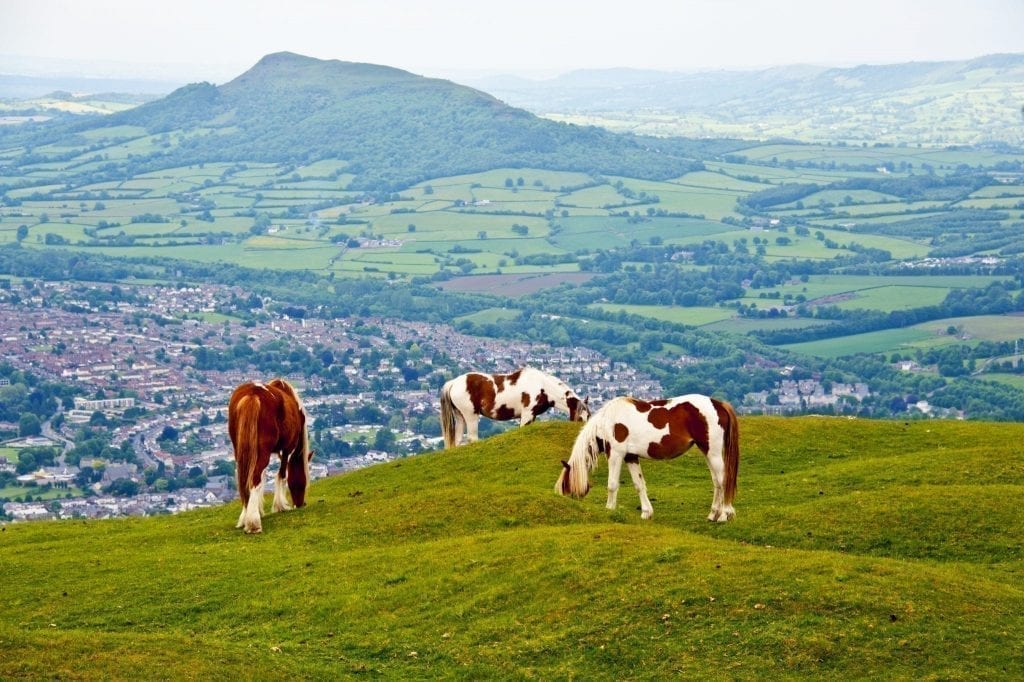
Brittany, France
From Shelley of Lifejourney4two
A Brittany road trip will introduce you to an amazing collection of destinations.
Brittany, located in the northwest corner of France, has a rich Breton culture and a mix of landscapes that makes a road trip here exciting and varied.
Starting in the historic town of Kerhinet, you can wander through romantic thatched cottages, before moving along to the pretty seaside town of Sarzeau and its moated castle, Chateau de Suscinio, built in the middle ages.
The fabulous Bretagne coastline provides ample opportunity for beautiful coastal walks. Make sure to take time to explore the Quiberon Peninsula with its White Port Arch.
Further along, is the Pink Granite Coast and the seaside town of Perros-Guirec. In Plougrescant, you’ll come across an incredible house nestled impossibly between two rocks.
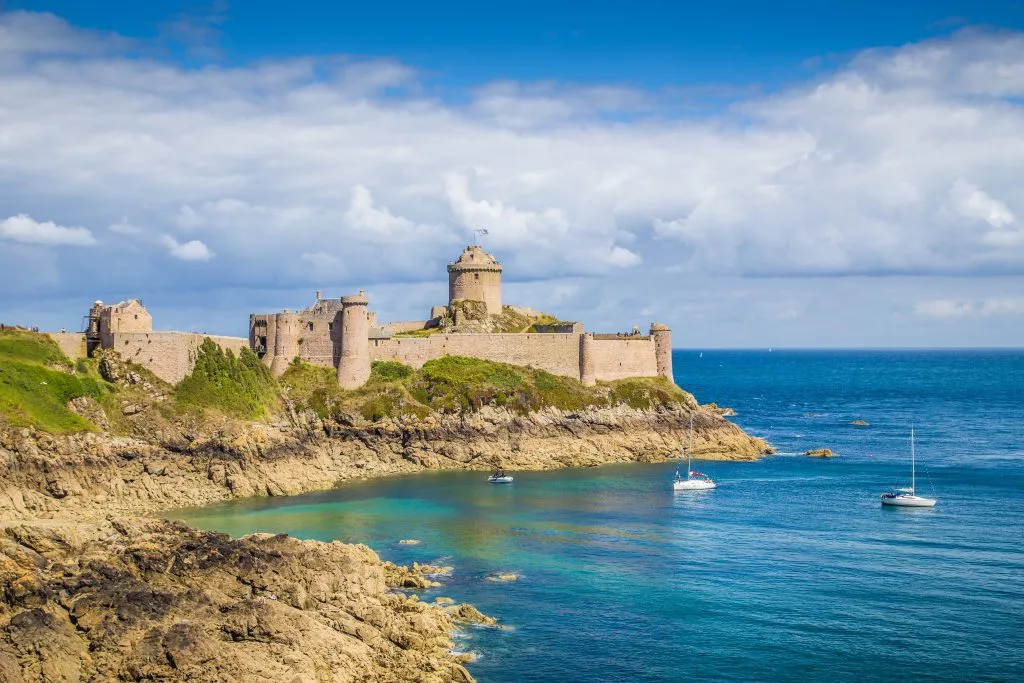
As well as coastal and seaside experiences, this Brittany road trip will have you stepping back in time in the charming medieval town of Dinan.
Set within its old city walls, it is known for its quaint half-timbered houses, cobbled streets, and its array of historical monuments.
Don’t forget to sample the local Brittany delicacies such as sweet crepes, savory galettes, and the butter-rich Bretagne Gateau.
Four days will have you traveling about 500km through Brittany and will give you enough time to experience the variety of flavors Bretagne has to offer.
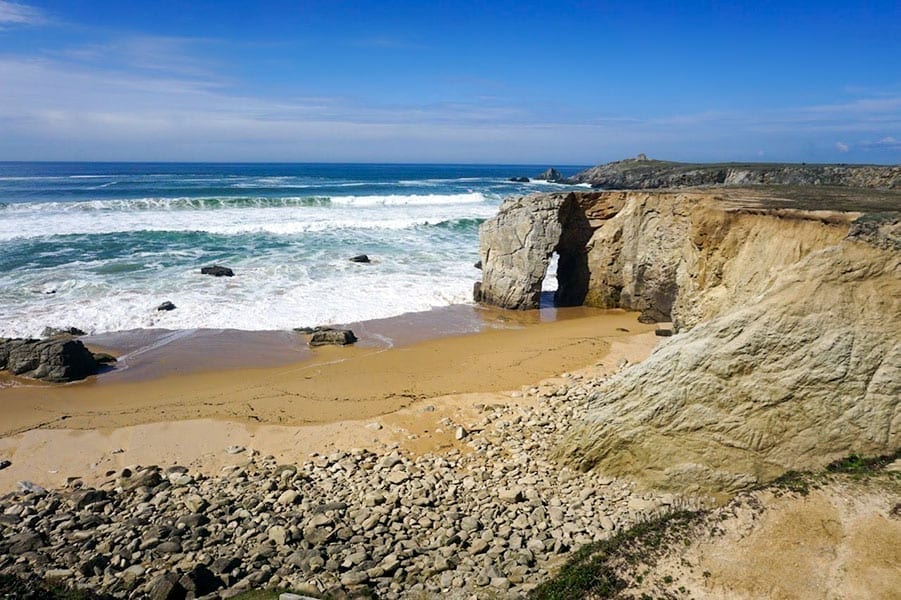
Northern Ireland
From Amanda of Toddling Traveler
Northern Ireland is by far one of the best road trips in Europe.
Between the beautiful scenery and the unique outdoor activities, it’s something that needs to be experienced at least once.
The best area for a 1 week road trip in Northern Ireland is the Causeway Coast and Glens, after spending a couple of days in Belfast.
With towns like Cushendall, Ballycastle, Ballintoy, and Bushmills, there are so many great places to stop along the way.
From Belfast, you can make a stop at Carrickfergus for the castle and seaside restaurants.
Between the views of the ocean on one side and the sheep nestled among the cliffs on the other side, there’s so much to take in.
Cushendall is a quaint little seaside town with the friendliest people, and it’s a great location for sightseeing in Northern Ireland.
From Cushendall, you can drive through the beautiful Glens of Antrim and make a stop at the Dark Hedges for any Game of Thrones fans.

Another famous stop on the Causeway Coastal Route is the Carrick-a-Rede Rope Bridge which takes you a few hundred feet above sea level.
Ballintoy Harbour and Fullerton Arms are two additional stops that are popular with Game of Thrones fans.
From Cushendall, you can change your home base to Bushmills for a change of scenery.
Bushmills Distillery and the Giants Causeway are two sites that shouldn’t be missed in that area. For golf fans, Portrush is a popular seaside town that also boasts a world-famous golf course.
If your Northern Ireland road trip allows for more time, spending more time in Portrush or Portstewart is definitely recommended as well.
7-10 days is ideal for a road trip through Northern Ireland, but you can easily spend more time if you’re exploring beyond Antrim County.
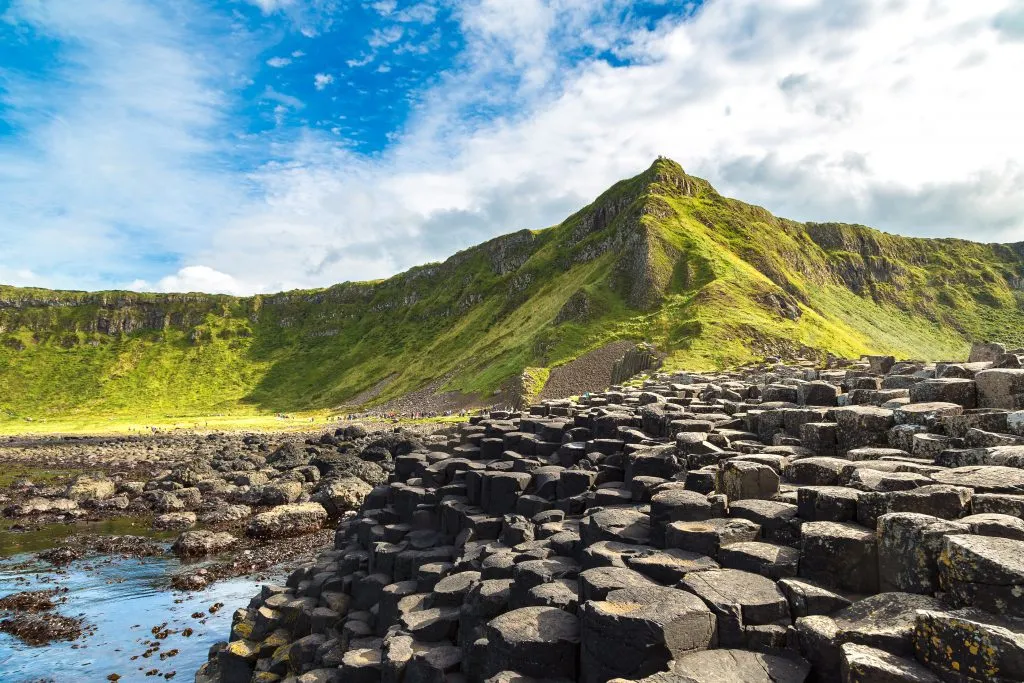
Loire Valley + Normandy, France
From Brianna of Curious Travel Bug
The Loire Valley and Normandy are two of France’s most beautiful areas and combined, they make for a fantastic road trip from Paris.
This European road trip is perfect for those who enjoy the countryside, castles, and adorable villages.
Start your trip by driving to Amboise from Paris.
Amboise is small enough to be walkable and has a scenic chateau that overlooks the town, and a great base for visiting the Loire Valley.
From Amboise, you can visit famous chateaux like Chateau Chenonceau, Chambord, Villandry, and Usse.
After exploring the Loire Valley head towards Normandy and the coast.
A great halfway point to break up the driving is Chateau d’Angers, a massive castle with huge towers.
Stay in the village of Pontorson to visit nearby Brittany, towns like Dinan and Saint-Malo are both worth a visit.
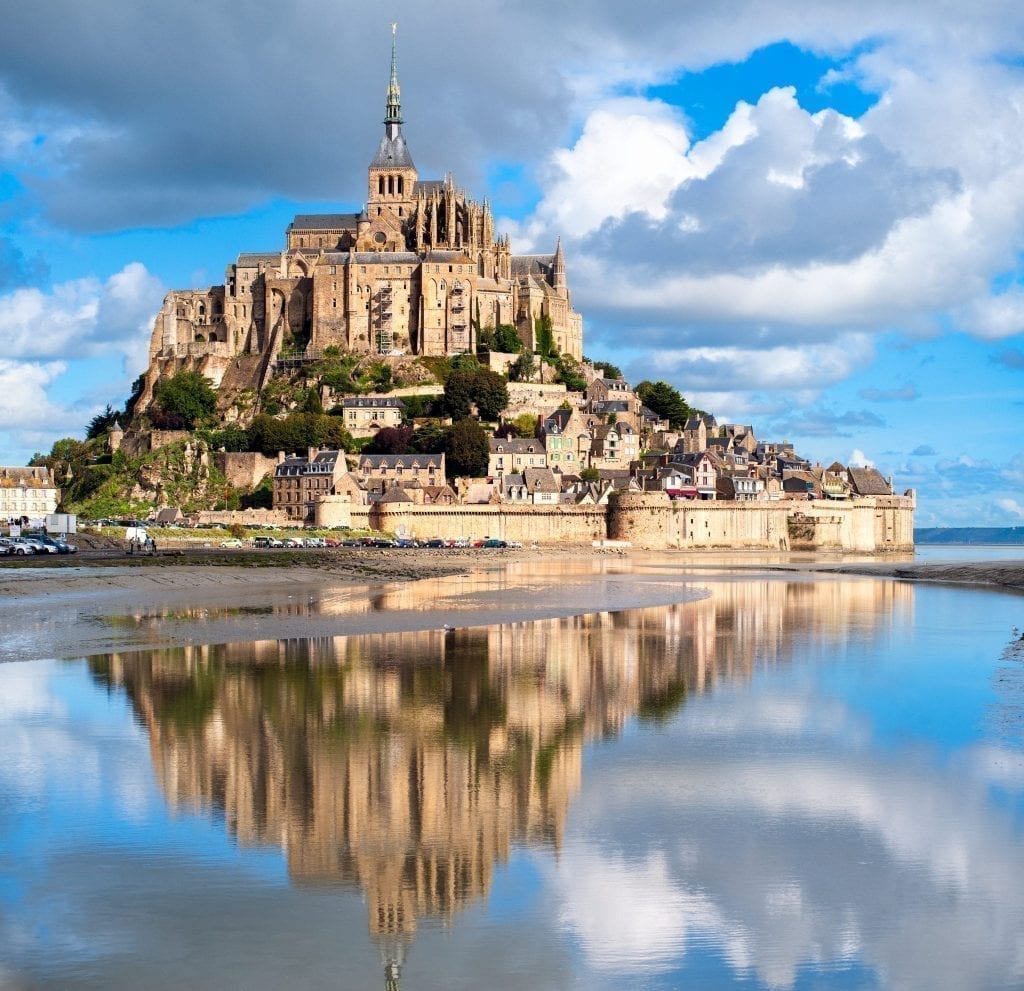
From Pontorson you will be only 20 minutes from the incredible Mont Saint Michel.
Mont Saint Michel is what brings most people to Normandy and it is certainly impressive.
If you can, try to visit both at high and low tides as the contrast between the two is interesting to witness.
Drive further into Normandy and stay in the town of Bayeux. Bayeux is a cute medieval town made famous by both the Bayeux Tapestry and its proximity to the D-Day Beaches.
The D-Day sites are worth spending at least a day exploring.
Finish up your road trip by stopping in the port town of Honfleur to see its cute harbor.
Head back to Paris, stopping en route in Giverny to see Monet’s gardens.
Other places to include on your itinerary if you have more time are the city of Rouen and the cliffs at Etretat.
This route requires at least 6 days but you can easily spend much longer exploring both the Loire Valley and Normandy as these areas are rich with history, charming villages, and castles to explore.
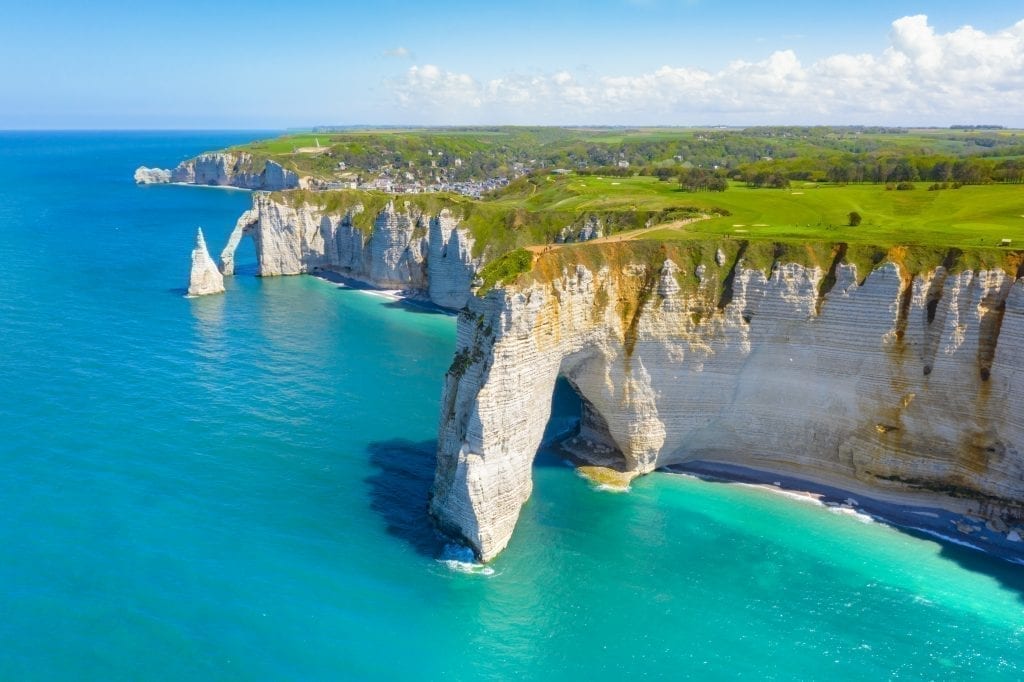
Cotswolds Road Trip
From Laura of Travelers Universe
If you have more than 3 days in London and are ready for a quick European road trip, then a visit to the Cotswolds is a must. No other area in the UK compares to the old-fashioned charm and heritage of the Cotswolds.
When planning your road trip route I recommend you start with the 4 must-see villages in the Cotswolds: Bourton-on-the-Water, Upper Slaughter, Lower Slaughter, and Bibury.
Bourton-on-the-Water has a unique appeal to everyone. It is regularly voted as one of the prettiest villages in England and is famous for its honey-colored stone architecture and idyllic scenes.
The village is known as the Venice of the Cotswolds and it’s the perfect place for you to enjoy some relaxing time by the River Windrush.
Upper and Lower Slaughter share an interesting name that could be translated as a ‘miry place’.
Lower Slaughter has been very well conserved and walking alongside the stream seems like a trip into the past.
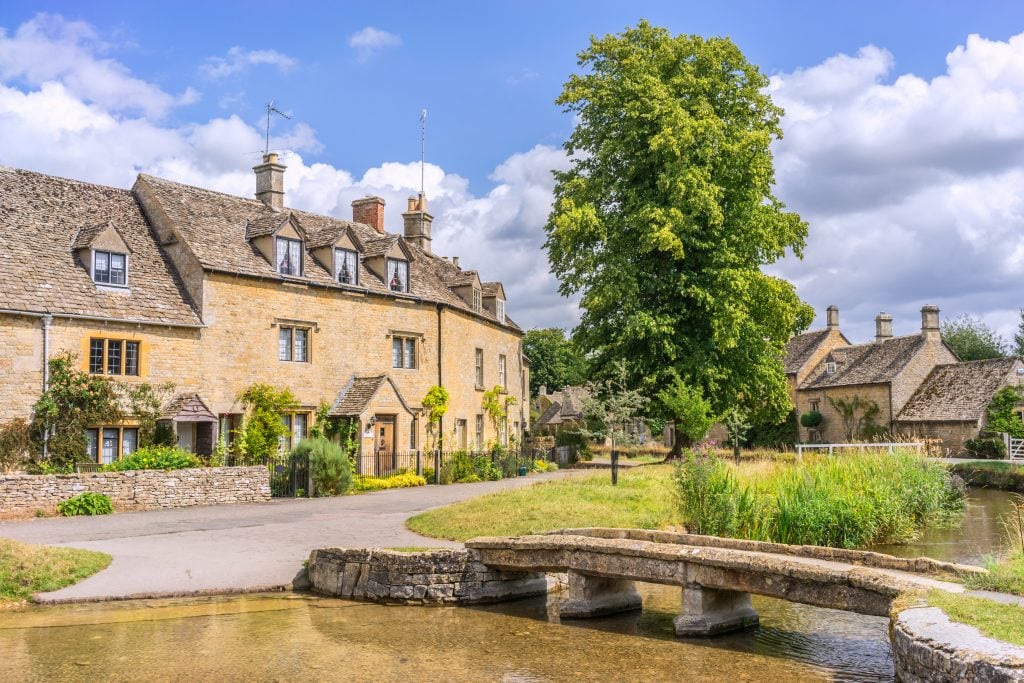
There is no wonder the village has been used for filming productions on several occasions.
Upper Slaughter is equally as charming. Interesting fact – it lost nobody in the First World War and that’s why these days it is considered to be a sainted village.
If you are by car, I recommend parking in Bourton-on-the-Water and walking from there, as there is limited parking in the Slaughters.
When it comes to Bibury, everybody will quote William Morris as he famously said that Bibury is ‘the most beautiful village in England’.
Well, this should be convincing enough to check it out for yourself.
Don’t miss the picturesque Arlington Row cottages, dating back to 1380. Arlington Row is one of the most photographed places in Cotswold.
Recommended Road Trip Route
Try to set aside at least a couple of days to enjoy road-tripping the main villages of the Cotswolds.
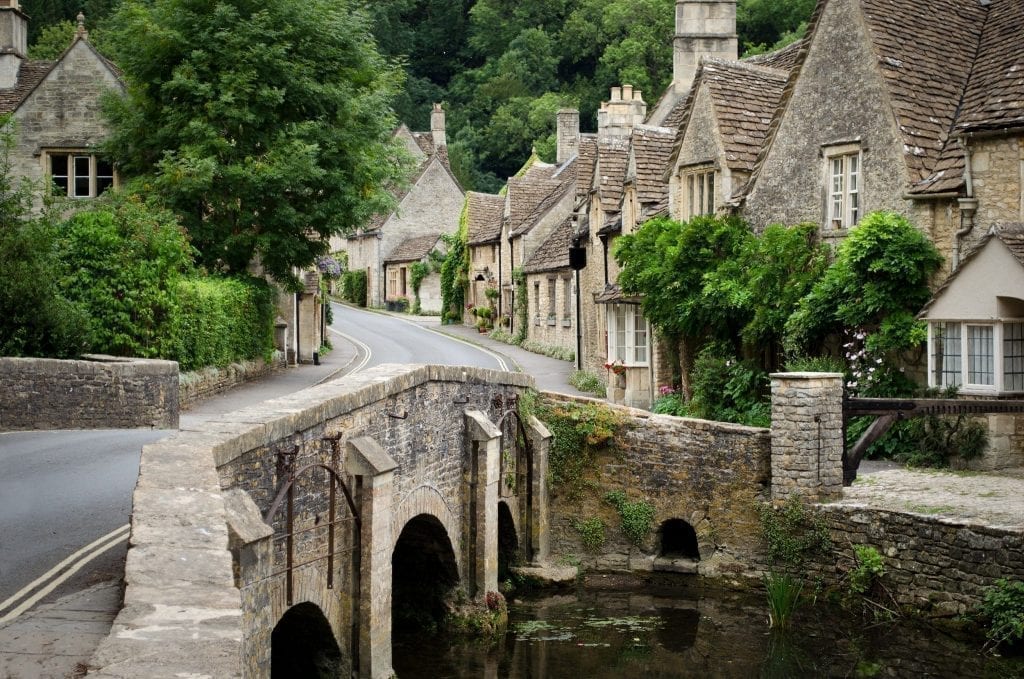
Route des Grand Alpes, France
From Kat of Wandering Bird Adventures
One of the best road trips in Europe is the Route des Grandes Alpes, in the southeast corner of France.
It’s possible to drive this route by car and stop along the way at one of the many beautiful towns, but a better option is to travel the Alps by motorhome and stop up a mountain in the middle of nowhere.
Technically, the Route des Grande Alpes starts in Lake Geneva and goes south over the highest mountain passes until you reach the French Riviera, but you can easily drive it in reverse if you wish.
Highlights include breathtaking mountain views; the Milky Way at night; going up Mont Blanc in a cable car; exploring picturesque Lake Annecy and the awe-inspiring Gorge du Fier.
Of all the places to enjoy a road trip in Europe, the French Alps are definitely one of the most awe-inspiring!
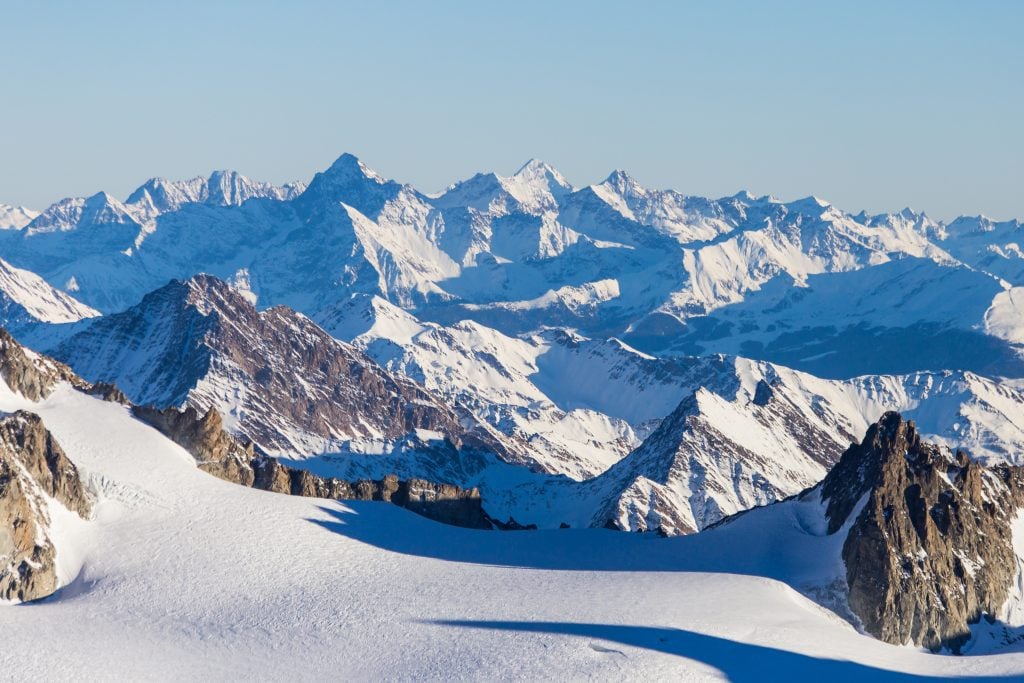
This road trip can take anywhere from 3-5 days and the best time to go is late spring or early autumn, (May/ June or September/ October.)
The reason for this is the weather (winter snow means road closures in the mountains) and also cyclists- you will not believe the number of cyclists who ride up and down these crazy roads!
And that’s not including the Tour de France which regularly passes through this route- another reason to avoid July!
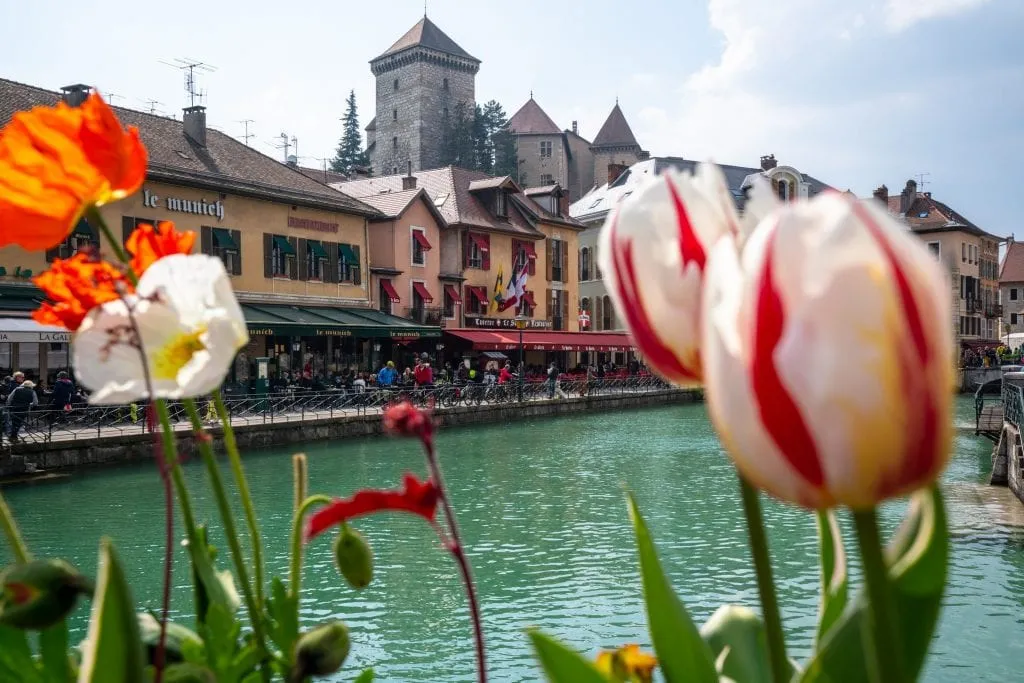
Dublin to Dingle (Cross-Country Ireland Road Trip)
By Jennifer P. (aka Dr. J) of Sidewalk Safari
A road trip from Dublin to Dingle is one of the longest you can undertake in Ireland.
Dingle is one of the most picturesque places in Ireland and is well-worthy of a road trip in itself. However, sometimes getting there is more than half the fun.
Take a road trip to Dingle and use the 5-hour drive to explore lesser-known parts of Ireland on the way.
Start at Birr Castle, a 19th-century house and gardens that was home to the world’s largest telescope for nearly 75 years.
Next up, drive to Adare, which is best known for quaint thatched cottages and for being one of the most beautiful small towns in Ireland .
Adare is an ideal road trip pitstop; there are cool things to see and do but not so many things that one is tempted to linger (budget 30-60 minutes).
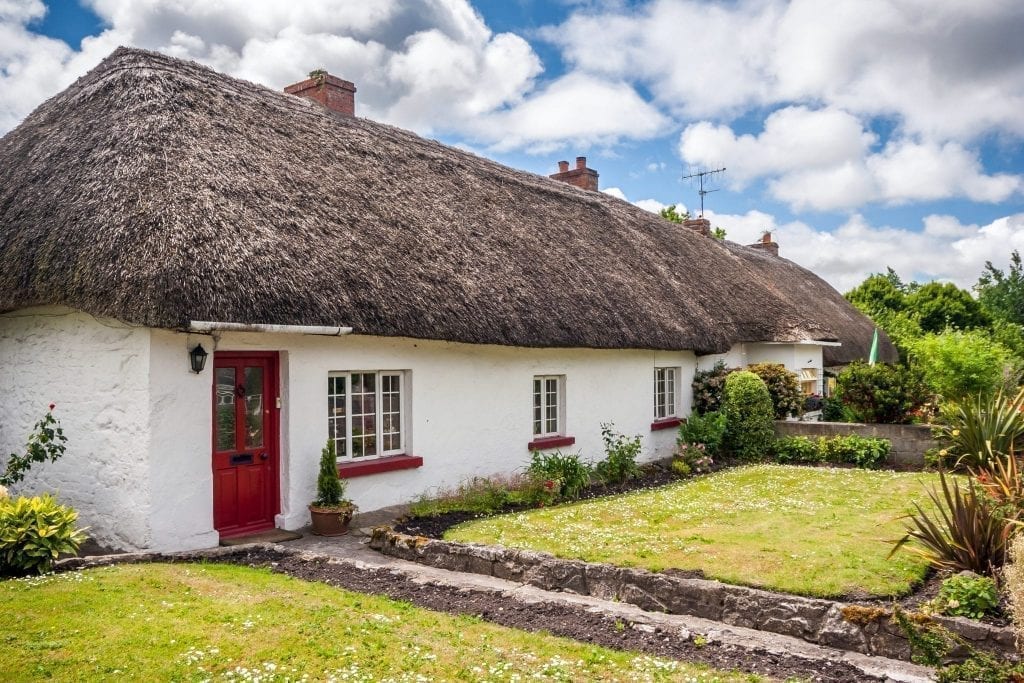
Listowel is known as the literary capital of Ireland because writers like Bryan MacMahon and John B. Keane once lived there.
Grab a coffee on the colorful square and follow in the footsteps of some of Ireland’s best-known writers.
Do not miss Foynes and the Flying Boat Museum! Fun fact: Irish coffee is believed to have been invented in Foynes.
Finally, stop at Belvedere House in Mullingar for its follies.
Follies are large-scale structures that look ancient but are actually modern.
Belvedere House also has a Jealous Wall erected in a feud between two brothers centered around alleged adultery.
Recommended length: 2 days. Take one day en route to Dingle and a second day on the way back to Dublin to cover all the stops referenced.
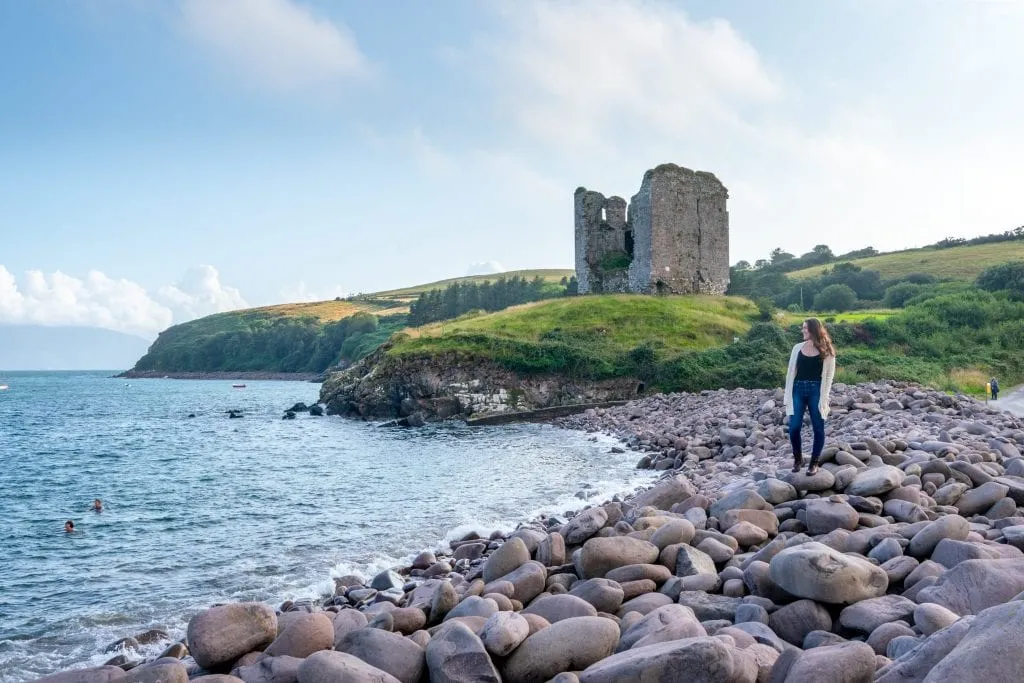
Montpellier to Toulouse, France
From Maura of Travel Kiwis
The region of Occitanie in southern France has spectacular scenery and diverse history.
Start in the pedestrian-friendly and vibrant city of Montpellier for shopping and French cuisine.
From Montpellier, allow an hour to travel the coastline dotted with pink flamingos to the fishing village of Sete, a perfect place for lunch and fabulous seafood.
One-hour inland is Beziers, one of the oldest cities in France where high above the river Orb sits the Bezier Cathedral.
Bezier is famous for the Orb Aqueduct, which carries the Canal du Midi over the river, and the Fonserannes Locks, a staircase of nine water levels, which traverses the canal.
Half an hour from Beziers is the old Roman town of Narbonne.
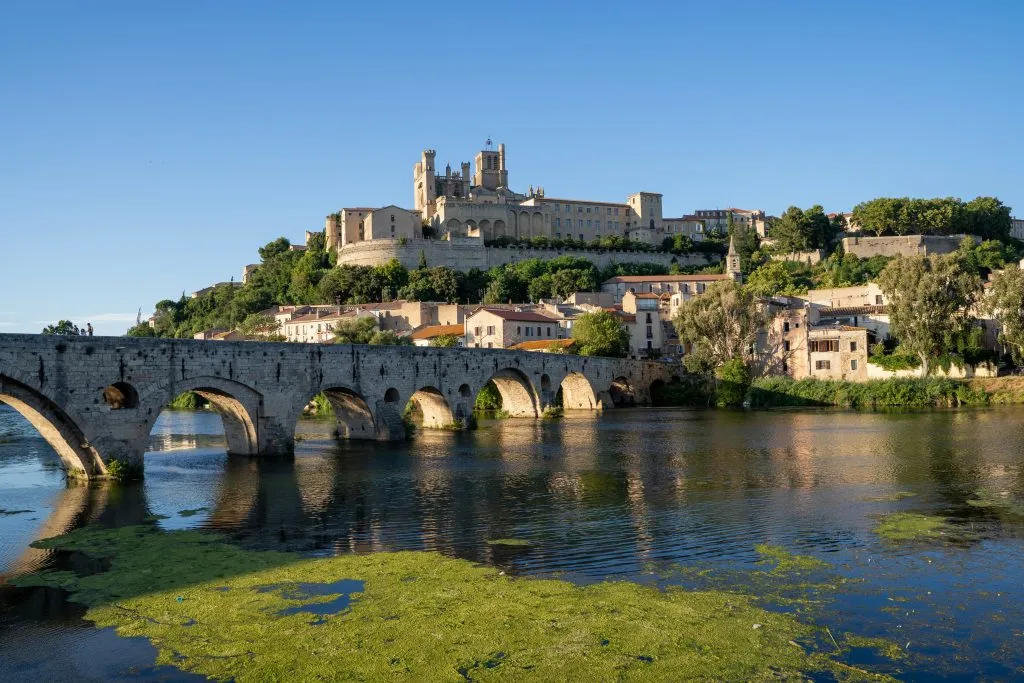
You can explore the Hordeum, a labyrinth of underground warehouses when Narbonne was a Roman port, and view part of the first Roman road in France, Via Domitia.
An hour from Narbonne, overlooking the Aude river, is Carcassonne.
The spectacular UNESCO heritage site Chateau Comtal de Carcassonne is perfect for a short stay. Make sure to try the local dish Cassoulet.
The final stop is Toulouse, the capital city of Occitanie, referred to as the La Ville Rose with its pink terracotta brick buildings.
Visit the Aeroscopia museum to learn more about the Airbus A380, built-in Toulouse; it is the largest airliner in the world.
This route is 276kms taking four hours with no stops. So, take your time and plan a night or two along the way.
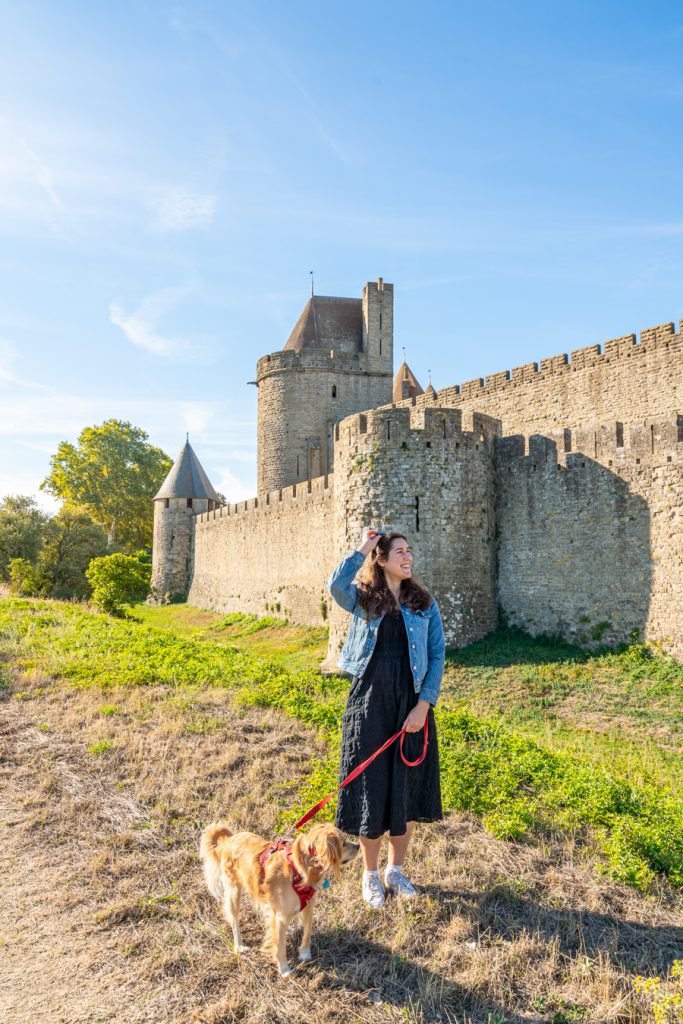
Scottish Highlands & Islands
From Jessica of One Girl, Whole World
Exploring deep into the Scottish Highlands and islands with one of the most stunning European road trips you can take.
A 10-day road trip itinerary has gorgeous landscapes, interesting history, hiking options, boat trips and ferries, and few crowds.
There are infinite route combinations, but here is one that’s a great combination of landscapes, history, and activity, and avoids long stretches of driving. You can start from anywhere, but Edinburgh or Glasgow is the most common.
Head toward the upper Highlands, covering Glen Torridon, Applecross, and (weather-permitting) driving the famous and slightly nerve-wracking Bealach na Ba pass.
Then spend a few days on the Isle of Skye, possibly hiking the stunning Quiraing and taking a boat trip from Elgol to the misty Black Cuillin mountains.
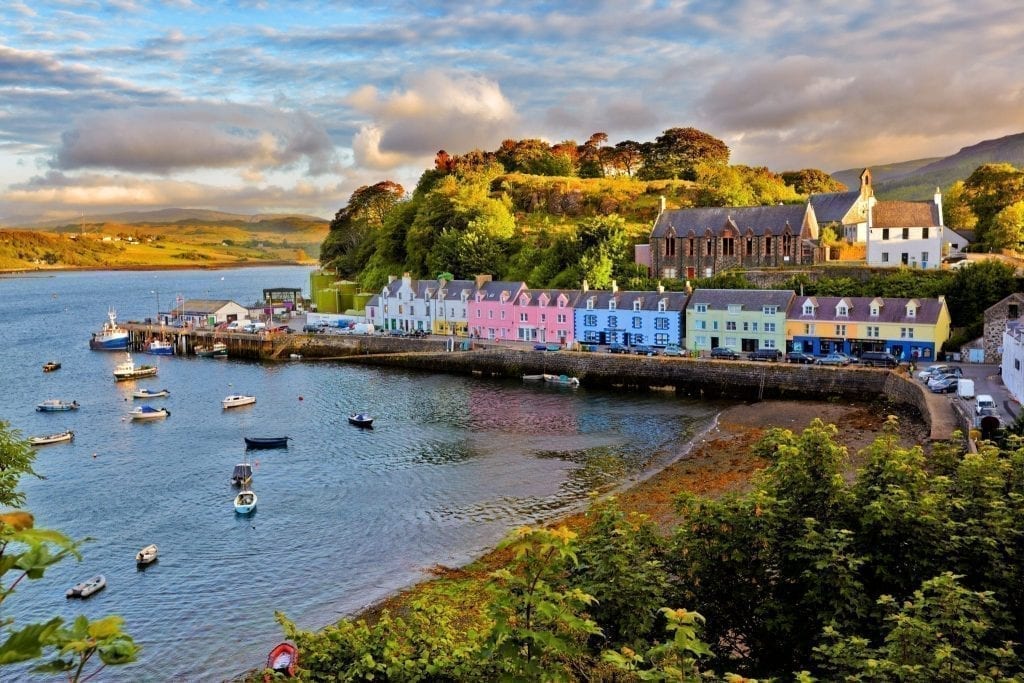
Then get further out to islands that most tourists rarely visit.
You can take a 90-minute ferry north to the Isle of Harris & Lewis and spend a day or two driving the island and experiencing the turquoise beaches and ancient standing stones.
Once you’re back on the mainland, consider hitting beautiful Glen Coe and the Glenfinnan Viaduct (the Hogwarts Express!) in the Highlands on your way west to the tiny Isle of Iona.
Iona has both beauty and some of the earliest Christian history in Scotland, and also a perfect base to take a boat trip to the almost-mythical Isle of Staffa.
Finally, spend a day or two exploring charming Edinburgh at either the beginning or end of your trip.
The length of your visit is flexible, but to cover everything above you should plan for at least 10 days–if you can set aside two weeks, that would be even better!
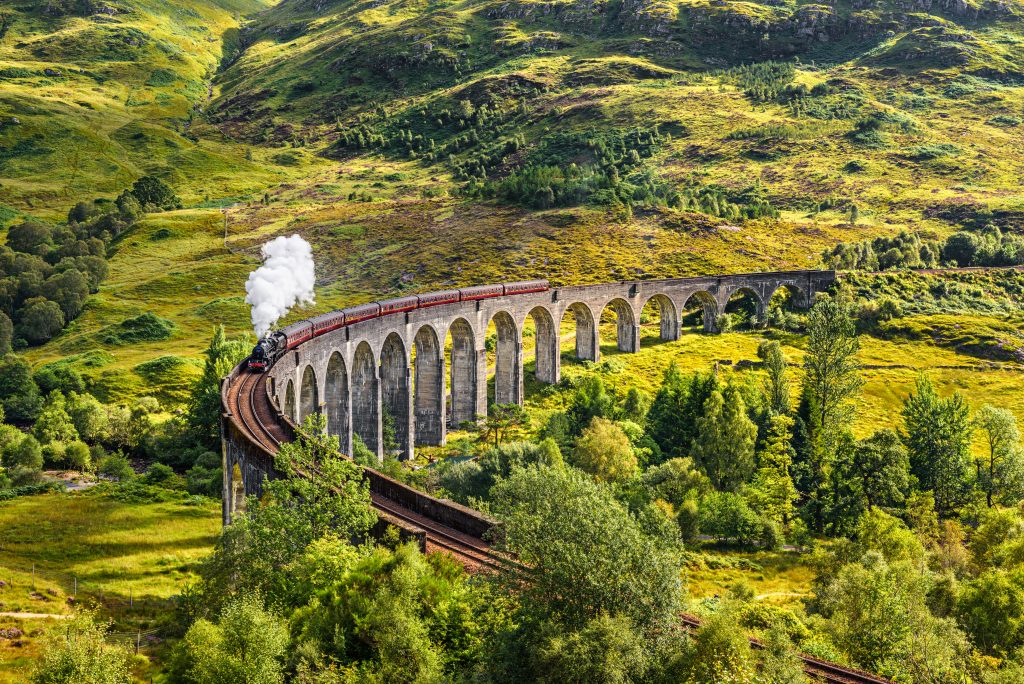
Northumberland Coastal Route, England
From Stuart Forster of Go Eat Do
The Northumberland Coastal Route is a scenic driving route that runs for 48 miles between Blyth and Berwick-upon-Tweed.
The marked route meanders past broad beaches and castles built when this region saw regular raids by cattle rustlers, known as border reivers, and Scottish armies.
If you choose to drive on the most direct route, the A1, the journey between Berwick and Newcastle takes just 75 minutes.
Plan at least a couple of days to pause along the way and take walks to view the castles at Bamburgh and Dunstanburgh.
It’s also worth taking a reflective stroll on the golden sand of Alnmouth Beach after popping into nearby Alnwick to shop at Barter Books, England’s biggest second-hand bookstore, and see the castle where Harry Potter movies were filmed.
Following the Northumberland coastal route offers opportunities to pause for locally landed seafood at the Fish Shack in Amble or The Jolly Fisherman pub in Craster.
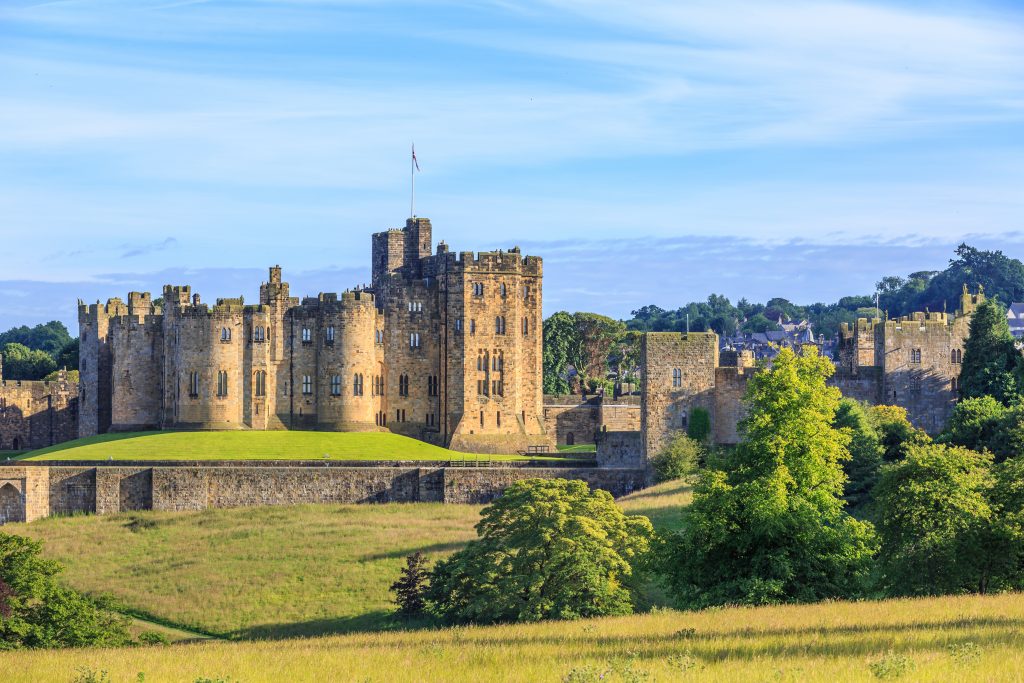
The fishing village of Craster gives its name to traditionally smoked kippers, a local delicacy. Craster kippers pair well with Earl Grey tea, which was first mixed for consumption at Howick Hall, the 19th-century British prime minister’s estate in England’s most northerly county .
Check the tidal table before driving to or from Lindisfarne, otherwise known as Holy Island.
Many a driver has had to abandon their vehicle in the face of rapidly advancing waters.
We suggest completing this trip in about two days.
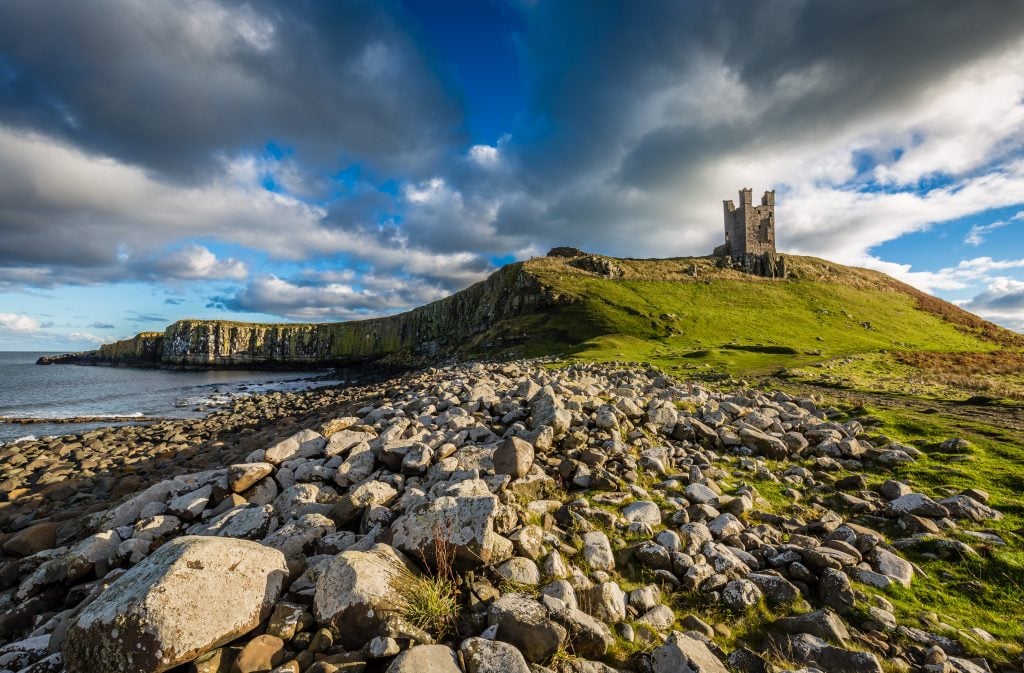
Ring of Kerry, Ireland
From Cath of Travel Around Ireland
One of the best road trips to take in Europe is one in which you visit the Ring of Kerry in Ireland .
Encompassing the Killarney National Park and part of the epic Wild Atlantic Way, this part of Southern Ireland is filled with beauty that will leave you awe-inspired.
This is a popular tourist area of the region and it is best explored by car or motorbike.
Points of interest to stop and explore include the Gap of Dunloe, a beautiful valley snaking through the MacGillycuddy Reeks Mountains.
You cannot drive a car through it, but motorbikes, cyclists, hikers, and joggers can traverse it. There are tourist horses and carts which can take those in cars into the Gap to enjoy its beauty.
At the top of the Gap lies Kate’s Cottage, a historic coaching house, now with a restaurant, bar, and craft shop.
Not far from this is Lady’s View, affording magnificent views across the Killarney National Park.
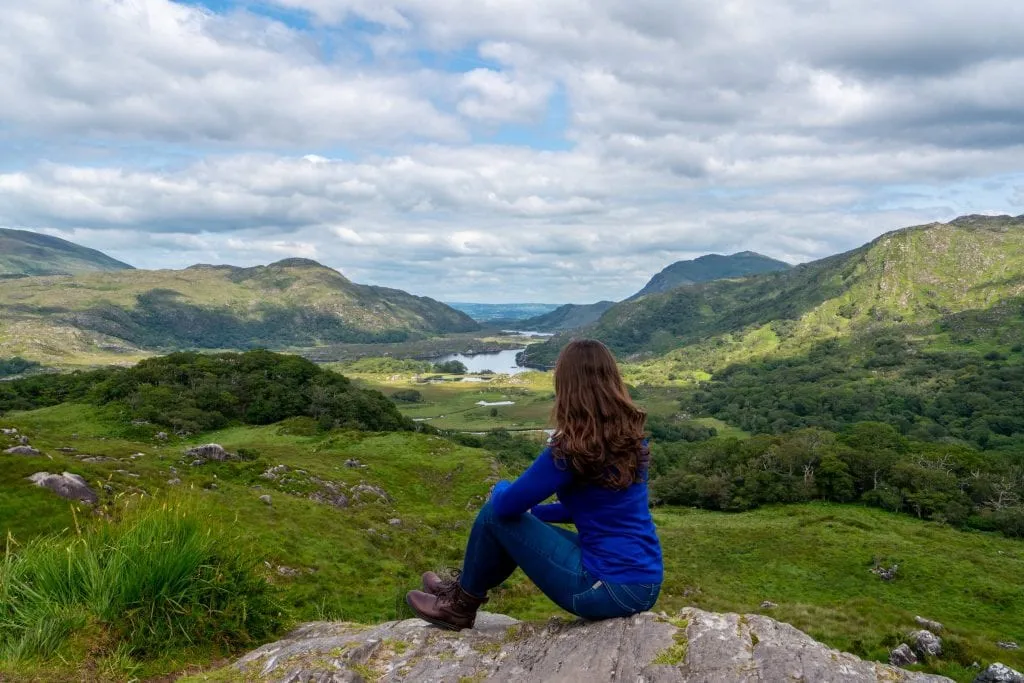
You should also take a day to visit Ross Castle and Muckross House, Gardens, and Farms, both of which are steeped in history.
Got a Star Wars fan on your hands? Then a boat trip from the Ring of Kerry to Skellig Michael is a must. It featured in Star Wars VII – The Force Awakens.
Skellig Michel is famous for its 6th to 8th-century Christian monastery and was designated a UNESCO World Heritage Site in 1996.
Another site to visit during your road trip around the Ring of Kerry is Torc Waterfall.
This lies only 7km from Killarney Town and is a beautiful waterfall with a height of 20 meters and a cascade of 110 meters long.
Many of the towns that you pass through are worth stopping in for a cuppa or a meal including Kenmare, Sneem, and Killorglin.
The town with the most choice when it comes to accommodation and eating options is Killarney and should be your starting point when traveling around this stunning part of Ireland.
Killarney, the town at which you should start your visit to the Ring of Kerry, lies 300km southwest of Dublin and it will take you approximately four hours by car to reach this quaint little town.
Although you could drive the outer circuit of the Ring of Kerry in one day, you will need more than a day to visit the many places to stop around this 179km-long circular route in County Kerry.
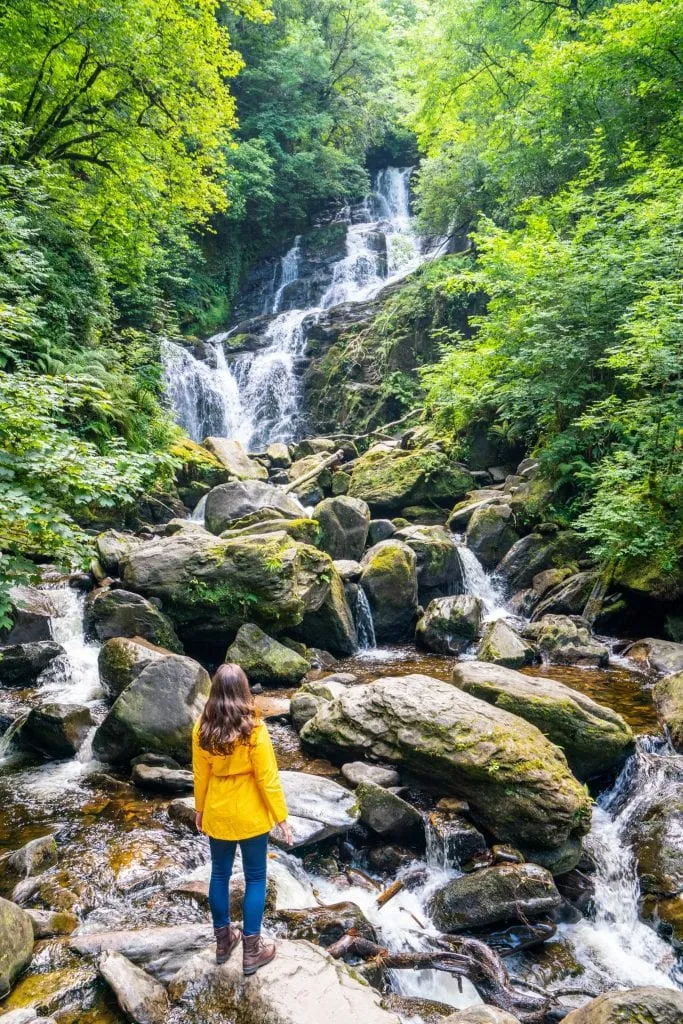
Germany’s Romantic Road
From Hannah & Adam Lukaszewicz of Getting Stamped
Southern Germany is home to the Romantic Road, a journey from Wurzberg to Fussen that captures both the scenic beauty and beautiful, fairytale castles Germany has to offer.
Start out by stopping at the Wurzburg Residence, a stunning palace with extensive gardens.
Next up is the Neuschwanstein Castle which has many great viewpoints, like Mary’s Bridge. Another castle in the vicinity that’s worth a stop is the Hohenschwangau Castle.
Those are the most popular stops on this European road trip, but also make sure to stop at some of the charming Bavarian villages along the way, such as Rothenburg ob de Tauber and Würzburg.
For the average tourist, it is suggested to have a three-day itinerary for the Romantic Road .
It’s just enough time to see all the highlights on the route.
However, it is up to you to extend the trip by a few extra days if you’d like to explore more villages on the way.
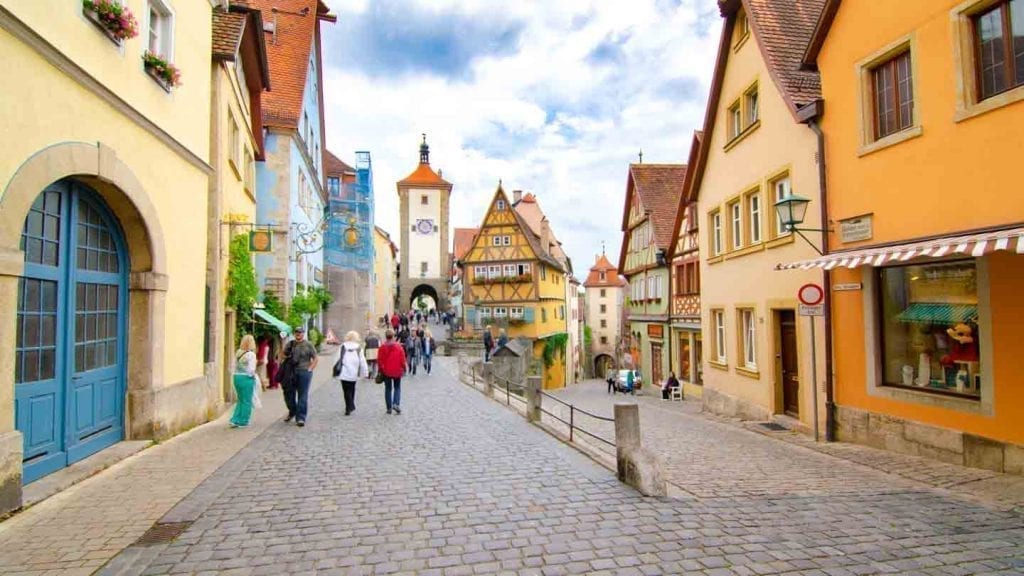
Austrian Alps
From Kati Walzl of Moon & Honey Travel
Austria is synonymous with the Alps. While Austria’s cities are easily accessible by transit, its mountains are best explored on a road trip.
If you love hiking and scenic alpine roads, follow this Vienna to Innsbruck road trip anytime between June and October.
Start in Vienna, the capital city of Austria before driving directly to Filzmoos, a small alpine town in the Dachstein mountains.
Here, you can hike to scenic alp huts and explore the Gosaukamm, a subrange of the Dachstein.
After hiking in the Northern Limestone Alps of Salzburg, your road trip continues to the heart of Hohe Tauern National Park, which encompasses Austria’s highest mountains.
Drive the celebrated Grossglockner High Alpine Road to East Tyrol. If you want to experience the glaciers of the Vendiger Group, explore the lesser-known Virgental and Gschlösstal valleys.
Next, head west to Mayrhofen, which is the perfect base for exploring the Zillertal mountains.
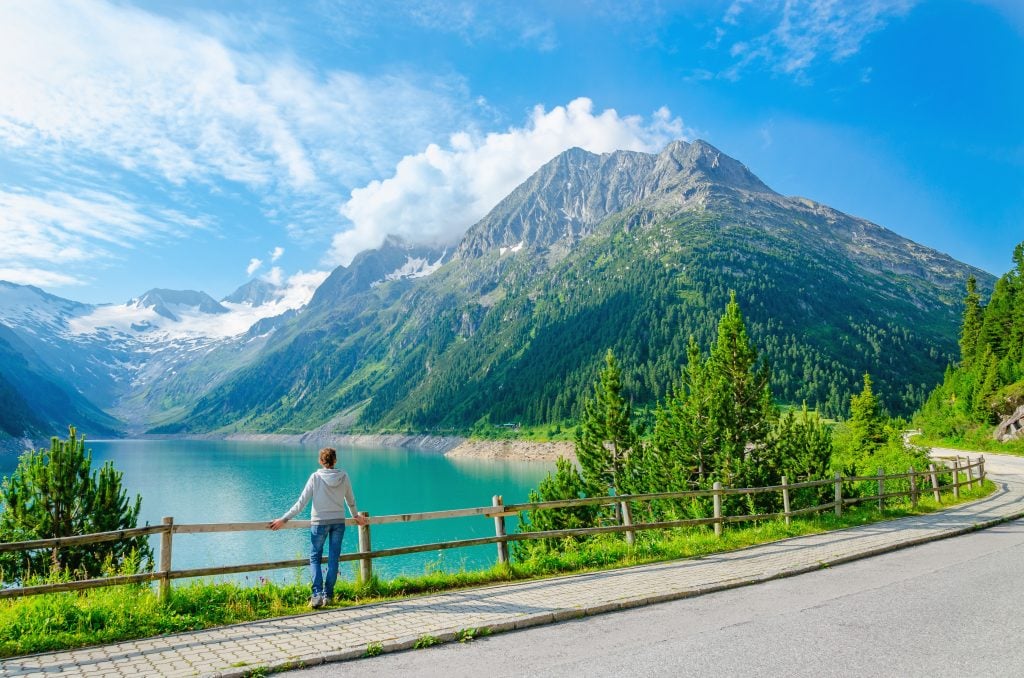
If there’s one range that epitomizes “the Alps” this is it.
After a few days in Zillertal, continue your drive to Innsbruck.
If you have more time, drive to Vorarlberg to explore the Rätikon Alps for a few days.
Tip: If you rent a car in another country, don’t forget to purchase a “Vignette” before driving on the Austrian “Autobahn” (highway).
You’ll need 10 – 16 days to complete this route.
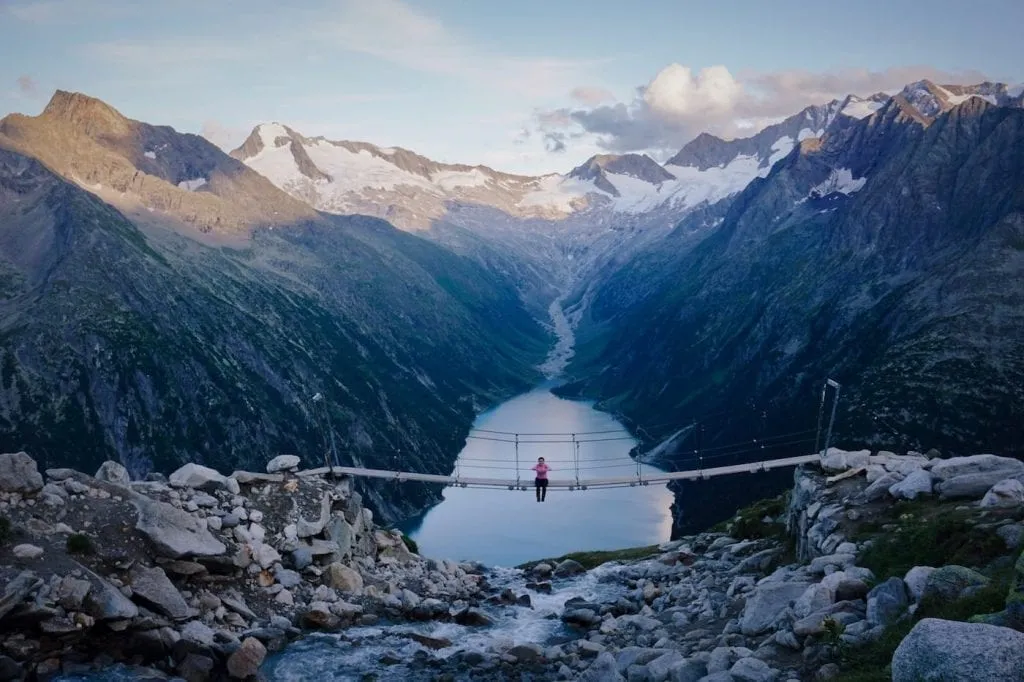
Czech Republic
From Celine of Family Can Travel
While Prague is certainly worth the visit, there’s so much more to see in the Czech Republic, and the best way to see it is by planning a Central European road trip.
Plan to make four major stops along the way: Cesky Krumlov , Karlovy Vary, Bohemian Switzerland National Park, and Bohemian Paradise.
The real charm of having a car is not only getting to each of these places but visiting some incredible sights near each of them.
Near Cesky Krumlov, explore the ruins of Hrad Divi.
After visiting the multitude of colonnades around Karlovy Vary, stretch your legs with a hike from Karlovy Vary to the charming town of Loket.
Next, leave the cities behind to enjoy the more natural side of the Czech Republic.
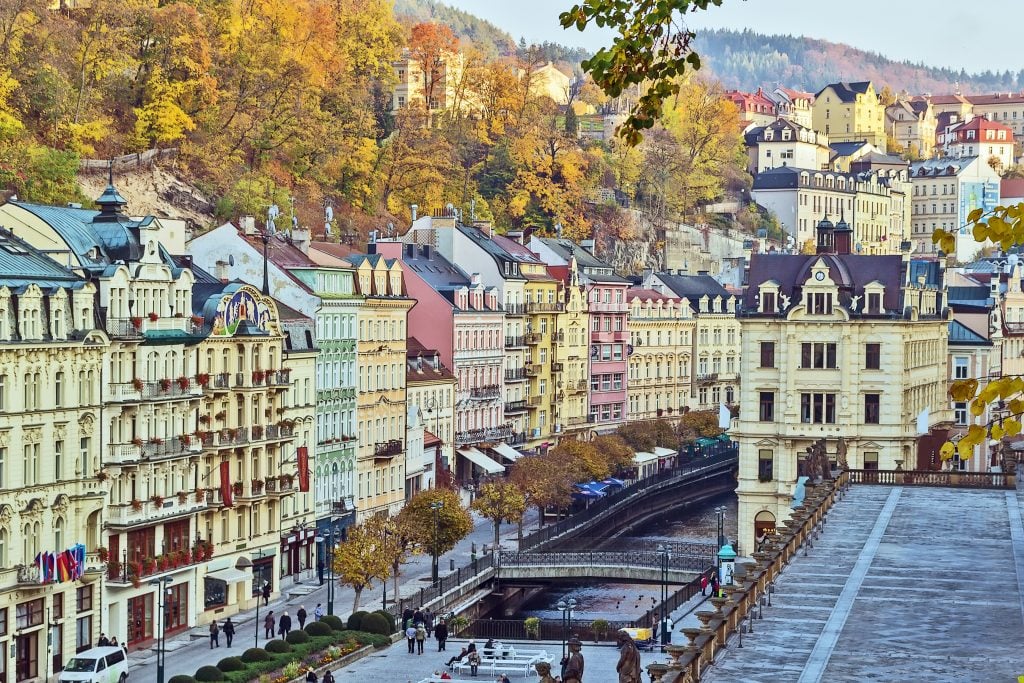
Hiking in Bohemian Switzerla nd National Park to see the Pravcicka Brana (the largest natural stone bridge in Europe) and then continuing on to the Wild Gorge Loop will give you a real sense of the varying landscapes you can find in the Czech Republic.
If you find yourself with some extra time in Bohemian Switzerland, the Bastei Bridge in Saxon Switzerland National Park (Germany) is only a short drive away.
The Tisa Walls are also worth a stop.
Before returning to Prague, make one final stop in Bohemian Paradise to see Trotsky Castle and the incredible rock formations on the hike from Hruba Skala to Valdstejn Castle.
This Czech Republic road trip could be done in one week, but 10 days would be better to add in a few extra places to visit along the way and truly enjoy all that the area has to offer.
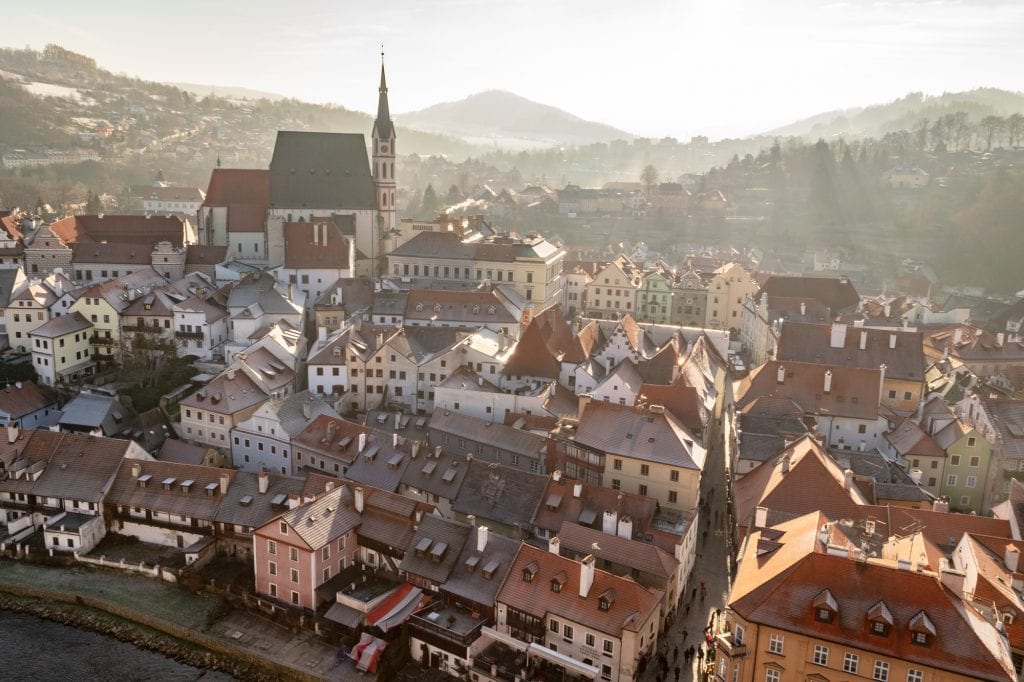
East Germany Castle & Nature Road Trip
From Annemarie Strehl of Germany on the Brain
For an East Germany road trip heavy on castles and natural beauty, start in the gorgeous state capital of Mecklemburg-Vorpommern.
It‘s one hour away from Hamburg by train (90 minutes with a car) and there are plenty of things to see in Schwerin .
Its center is simply gorgeous, with typical Baltic houses and historic buildings, and from here, it’s a short walk to the fairy tale castle of Schwerin.
It was modeled after French chateaus and has even been featured in Hollywood productions.
From Schwerin, you can easily reach Berlin, where you can stroll around Charlottenburg Palace or Friedrichsfelde Palace.
Those beautiful baroque buildings can make you almost forget you are in a big and busy metropolis.
Complete your visit in the North with a trip down to Potsdam’s extensive Sanssouci Castle estate.
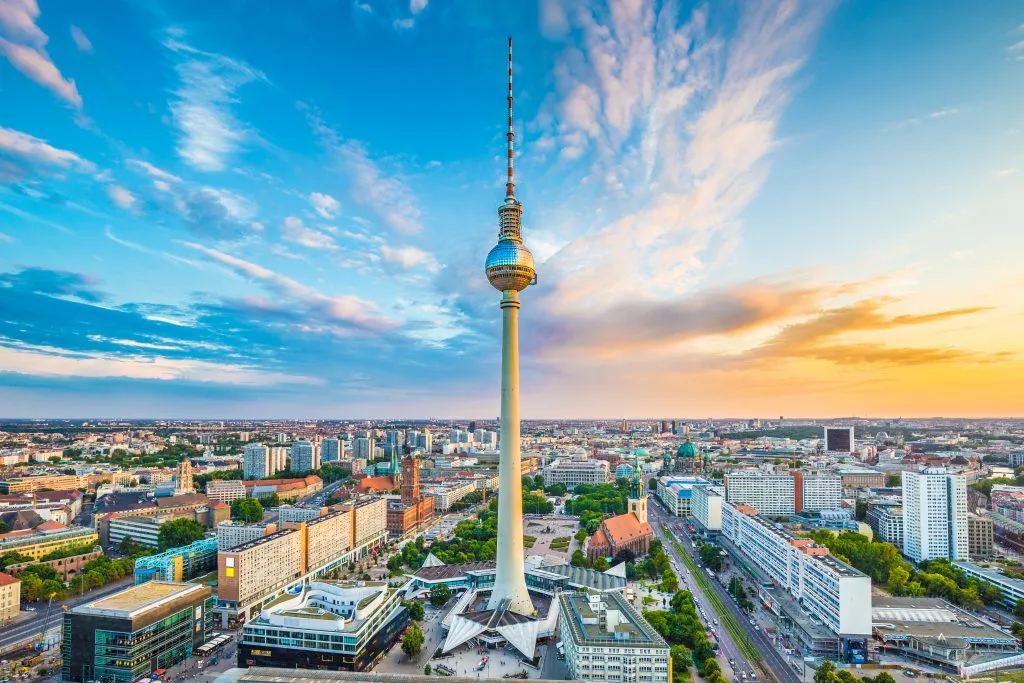
For Dresden alone, you can easily fill a week exploring castles inside and around the city.
Your starting point should be at the Zwinger and move on to the famous Frauenkirche, to name just two iconic attractions. For more castles, check out Pillnitz or Moritzburg.
Complete your journey in the neighboring state of Thuringia and visit charming Jena, Weimar, and Erfurt.
Weimar especially looks straight out of a history book in the best of ways.
In total, such a trip should be no shorter than seven days so you don’t have to rush through your destinations.
Driving times are between one to three hours from one place to the next, so it’s definitely doable to do one city per day.
However, for places like Berlin or Dresden you can easily schedule in multiple days.
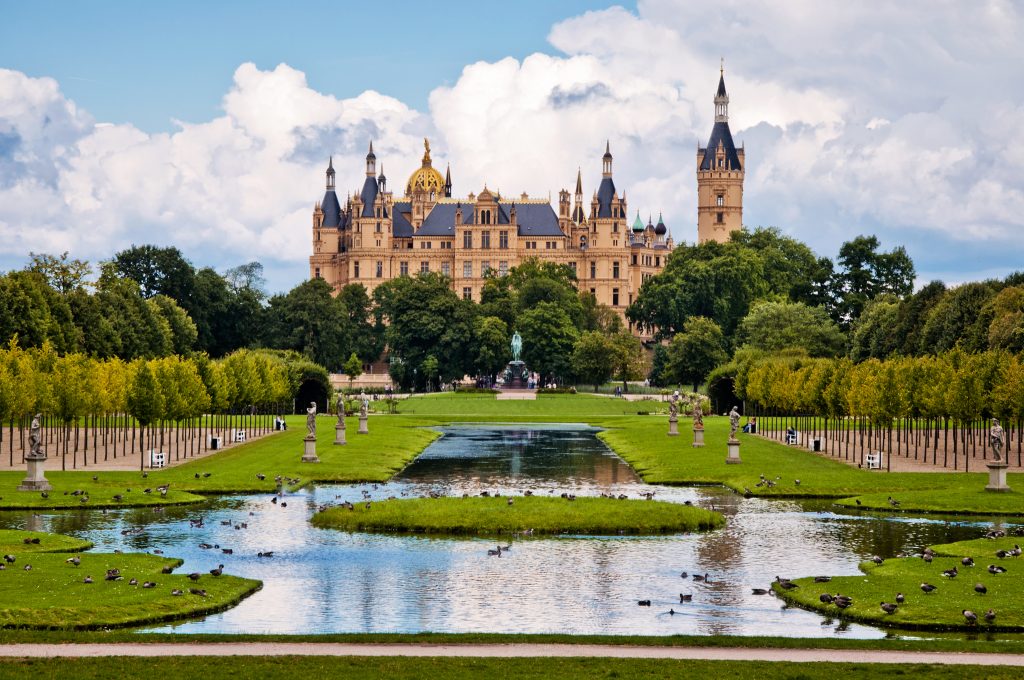
The Italian Dolomites
From Kristen & Jeff Miller of Our Passion for Travel
Fans of jagged mountains, windy roads, and stunning landscapes will rejoice in a Dolomites road trip .
Picking up a car in Verona and heading north, make your first stop in the hillside town of Trento. This stunning town is perfectly wedged in a valley with dramatic cliffs surrounding you.
Choose to spend a night here or head further north to the cute town of Ortisei.
Here, you can excite yourself with some of the winding passes that will take you from blazing sunshine in the middle of summer, up to near-freezing temperatures.
Admire the snow falling off the mountains in the Gardena and Sella Pass.
Later, mix it up with the majestic Lago di Carezza, one of the greenest alpine lakes you’ll ever lay your eyes on.
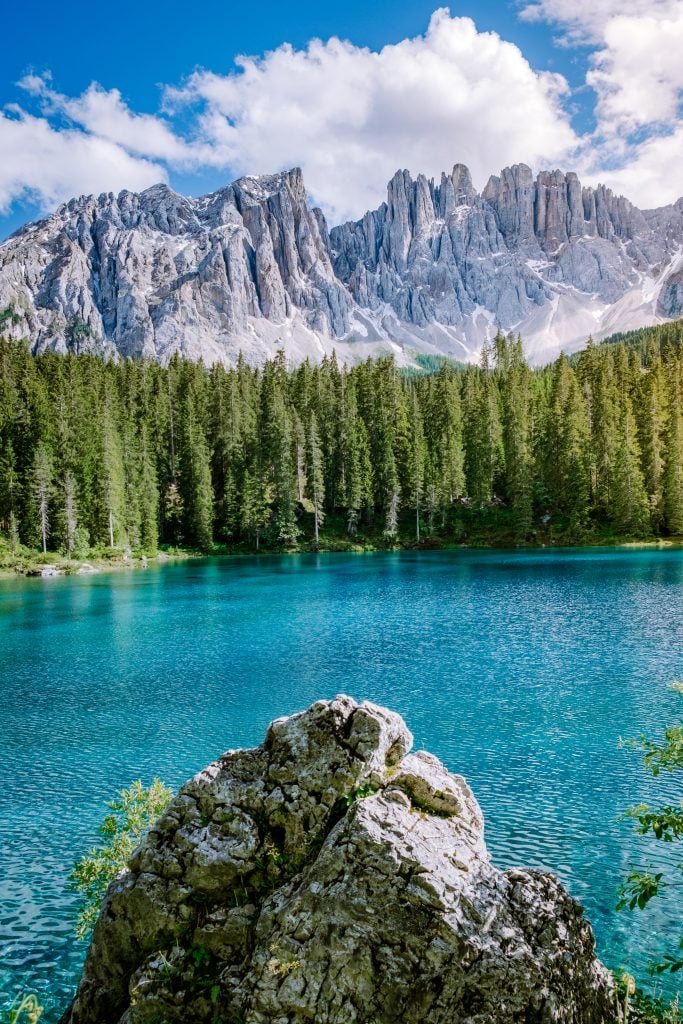
Ortisei is also home to the highest alpine meadow, Alpe di Siusi. Spend a day up top wandering in awe as the lush green grass meets the jagged peaks and rich blue skies.
Leaving Ortisei behind, consider Cortina d’Ampezzo as your next overnight destination.
Not only is Cortina d’Ampezzo home to the future 2026 winter Olympics, but it’s well located to explore the surrounding areas.
Lago di Braies is the insta-famous lake, complete with rowboats to fill your feed with.
A short drive from Cortina, you’ll find Tre Cime di Lavaredo.
The entry of €30 to the national park may seem steep, but it’s about as picturesque as you’ll find in this region.
Those jagged peaks you’ve been admiring are so much closer here, and rip into the sky like daggers.
This road trip through the Dolomites can be done comfortably in as little as 4 days.
It is easily stretched to 2 weeks depending on your pace and how much hiking you’re contemplating. Also, be sure to allow time for good weather (it can be temperamental like all alpine regions).
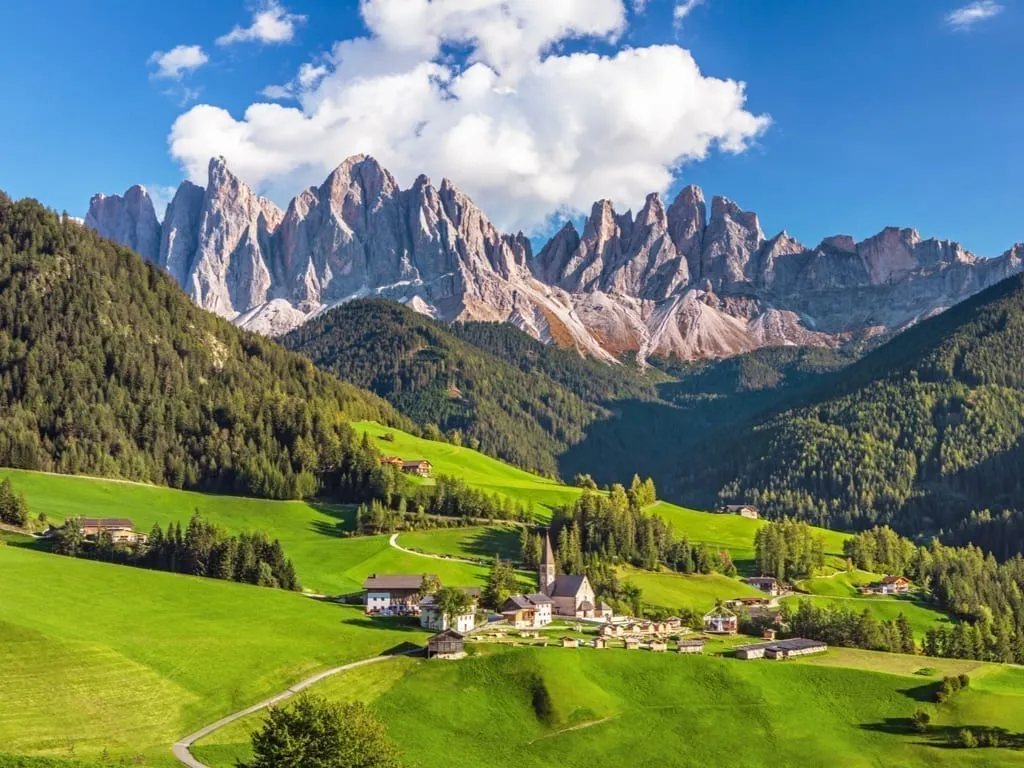
Vienna to Budapest Road Trip
From Pashmina of The Gone Goat
Imagine traversing through stunning countryside covering charming and beautiful towns and some very obscure ones, while crossing the capitals of these three countries Vienna, Bratislava, and Budapest .
Whether you want to start your road trip in Vienna and end it with a weekend in Budapest , or vice versa, a road trip in these places is often brimming with exciting stories, culture, and unique landscapes.
Although the entire trip is approximately 243km and may only take you 3 hours to drive, this trip is best done with a detour spending time in Lake Neusield, Austria, followed by Sopron, Gyor, and Esztergom in Hungary.
If you’re feeling adventurous, you can take the other route and pass through Slovakia and see firsthand what it is like to see a new generation of Slovakians who are eager to bring modern elements and street culture to their lives.
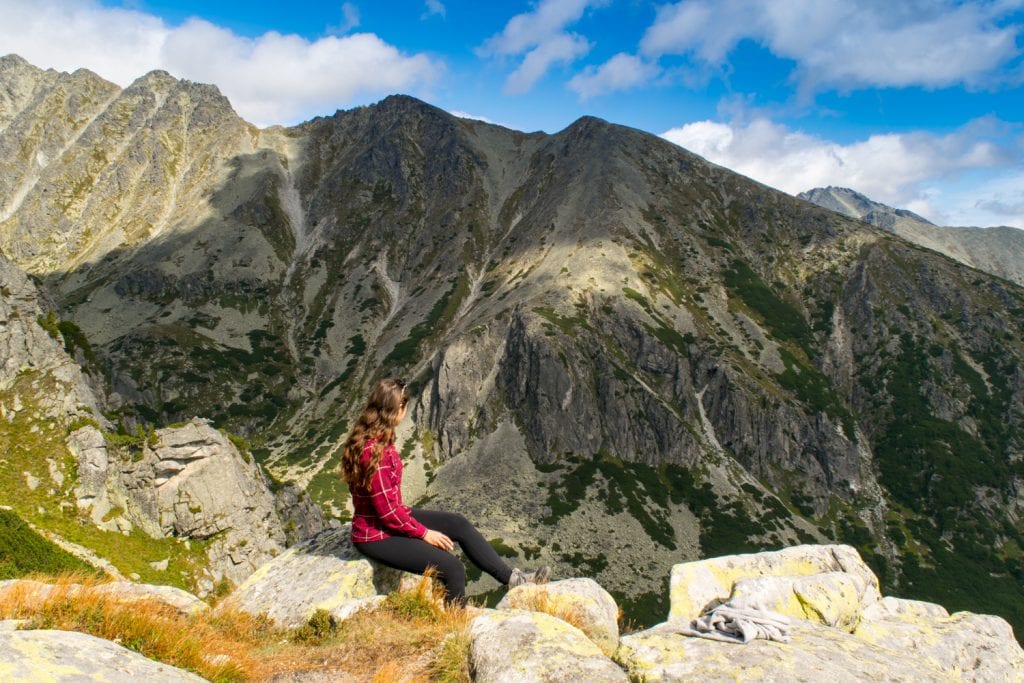
You can also stop in Bratislava and casually stroll through the old town while taking in the picturesque views of the architecture.
Compared to its neighboring cities, Bratislava is unhurried and feels small and quiet, and deserves that extra time to slow down, people watch and take in what you can.
The recommended time to spend on this Central European road trip is about 4 to 5 days.
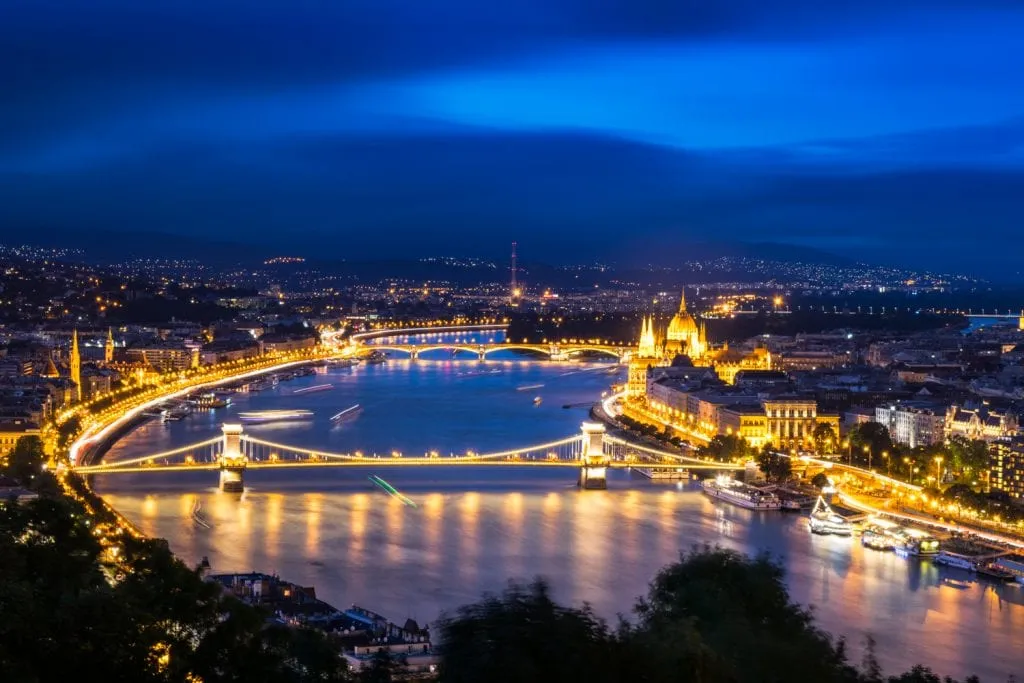
From Kate of I Live 4 Travel
The small country of Luxembourg is a great place for a European road trip.
It is a country dominated by castles and old towns that you can walk around and some beautiful countryside to hike in.
If you fly into Luxembourg then it is very easy to rent a car .
A trip to Luxembourg would not be complete without a visit to Luxembourg City and here you need to spend a day exploring the old town and visiting the Bock Casemates, walk the Chemin de la Corniche and visit Fort Thungen.
After visiting Luxembourg City head north to visit the beautiful castle of Vianden, the town is worth a walk around and you can always get the chairlift slightly higher up the mountain to get a view of the town and the castle before walking down to visit the impressive castle.
It is worth stopping here for lunch in one of the many cafes in the town.
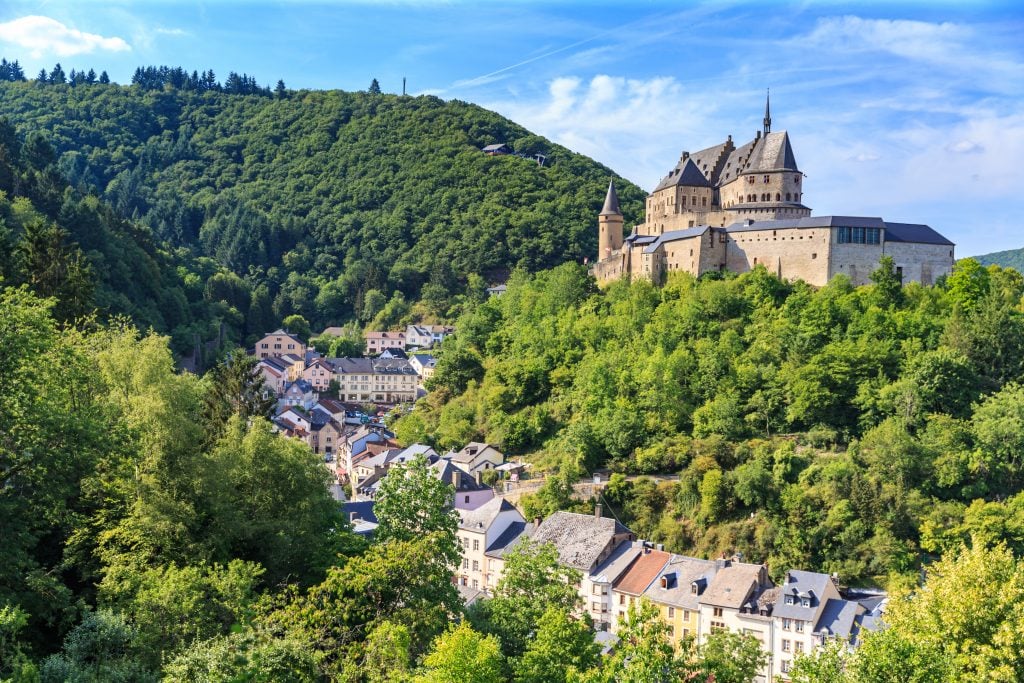
Next drive to Bourscheid Castle, which is only partially restored but has amazing views down the valley.
After visiting Bourscheid head across to the little town of Esch-Sur-Sure, it is in a horseshoe shape and surrounded by a river running along the outside, it is a beautiful town and it’s worth a walk up to the ruins of the castle located on the top of the hill in the middle of the town.
If you have a third day then head across to Echternach and hike part of the Mullerthal Trail.
If you do not want a long hike, you can just drive the route and explore the highlights.
The drive through the countryside to these places is stunning and it’s recommended you take 2 or 3 days to explore the country of Luxembourg.
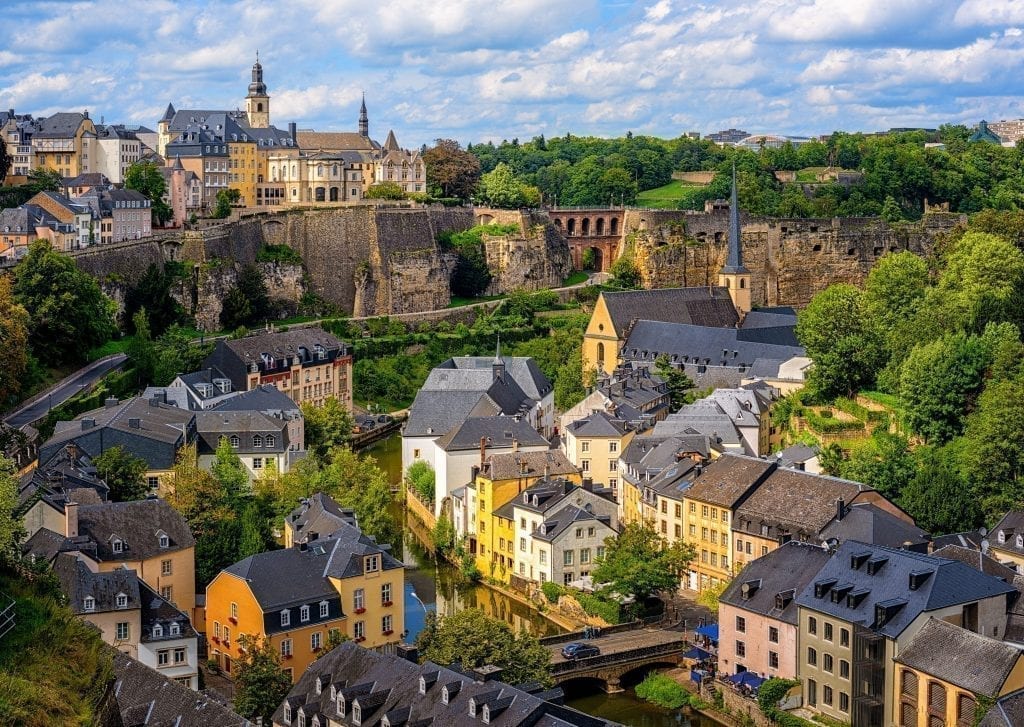
From Dhara of It’s Not About the Miles
Looking to complete one of the best road trips in Europe? Consider Poland!
In about 10 days, you can see the best of this northern European country.
Begin your trip in Warsaw, the capital of Poland. Warsaw’s Old Town is a UNESCO World Heritage Site.
World War II bombing destroyed quite a bit of the city, but it has been reconstructed.
Apart from Old Town, Powazki Cemetery, the monument to the heroes of the Warsaw Ghetto, and the Presidential Palace are must-visits.
From Warsaw, drive to Krakow where you can visit Market Square, St. Mary’s Church, and the famous Wawel Castle.
Old Town Krakow is gorgeous so plan on a walking tour to admire the architecture.
From Krakow, drive to Auschwitz to tour the former concentration camp. It is a UNESCO World Heritage Site.
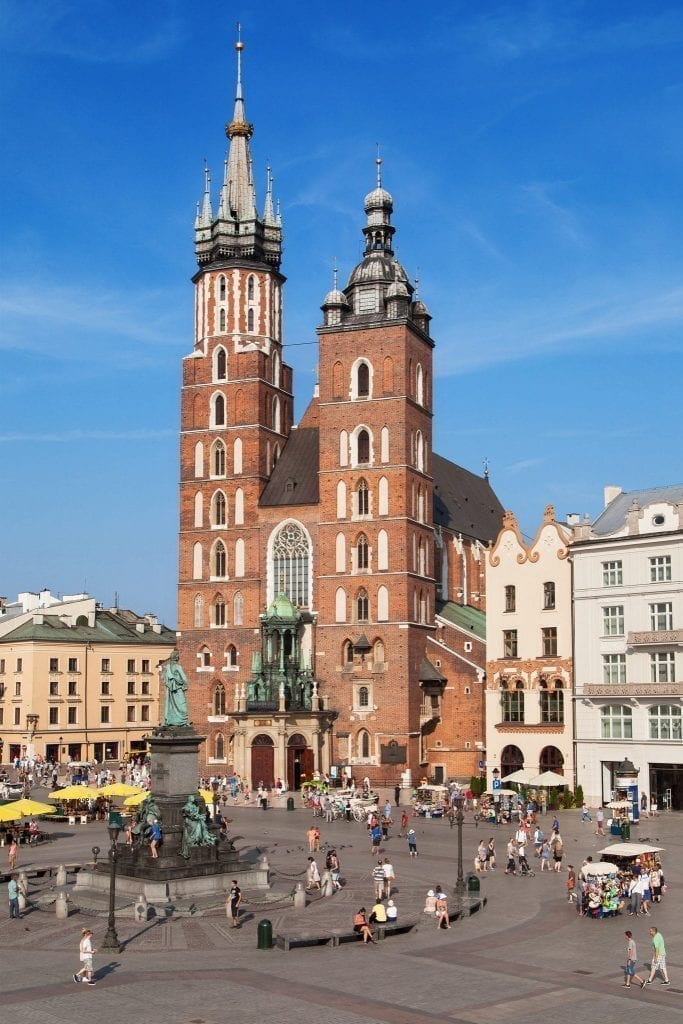
Next, travel to Wroclaw, with its beautiful Old Town. Market Square has stunning architecture.
From Wroclaw, drive to Torun, one of the best-preserved medieval towns in Europe. Torun is a UNESCO World Heritage Site and the birthplace of Nicolas Copernicus.
Next, drive to the port city of Gdansk, the birthplace of Lech Walesa’s Solidarity Movement.
Gdansk has a beautiful Old Town as well. A walking tour of Gdansk Old Town is the best way to experience the sights.
Also do not forget a stop at Westerplatte, where the first shots of WWII were fired.
Return to Warsaw to complete your road trip through Poland. On the way, you can stop at Malbork Castle, the largest castle in the world!
This Poland road trip is best completed in about 10 days.
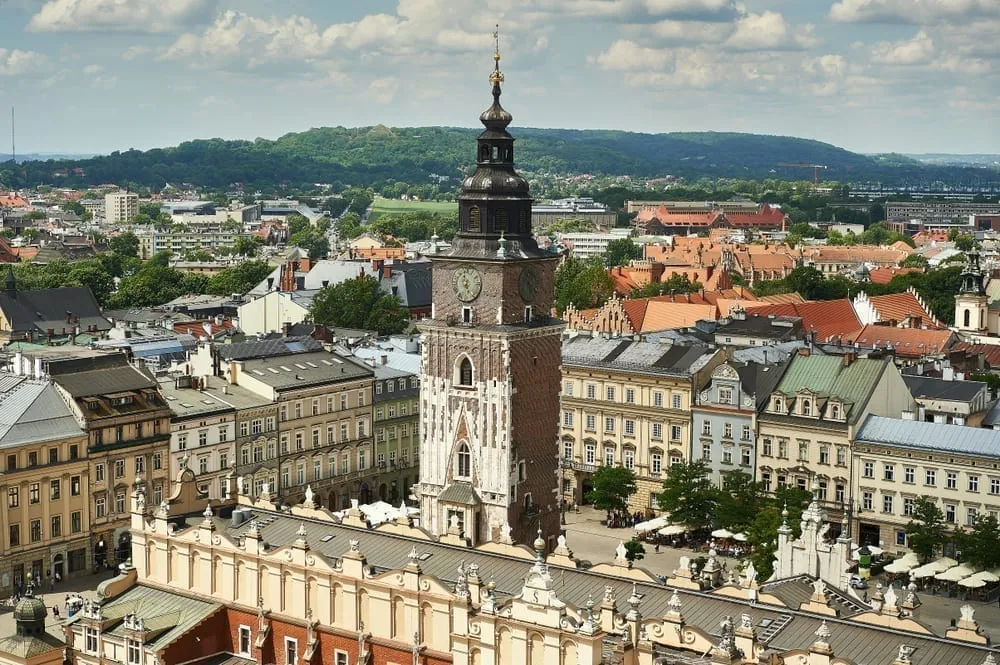
South Styria Wine Road, Austria
From Lori of Travlin Mad
The South Styria Wine Road in southern Austria is the perfect European road trip for food and wine lovers.
This 44-mile-long patchwork of woodlands, lush rolling hills, and verdant vineyards just an hour from Graz is the southern part of Styria, known as the Green Heart of Austria, and looks more Tuscan than Alpine.
This part of Austria also borders northern Slovenia so combining both as part of a multi-country road trip in Europe is a great idea.
Fall is an especially good time to visit when autumn colors begin to appear in the vineyards and the first wine is being pressed.
People gather outdoors at local wineries along Wine Road drinking stürm wine and roasting chestnuts around a crackling fire.
Through the breeze, you’ll hear the unusual clacking sound of the klapotetz windmills spinning slowly through the countryside, designed to ward off birds and other pests who tend to gobble up the grapes.
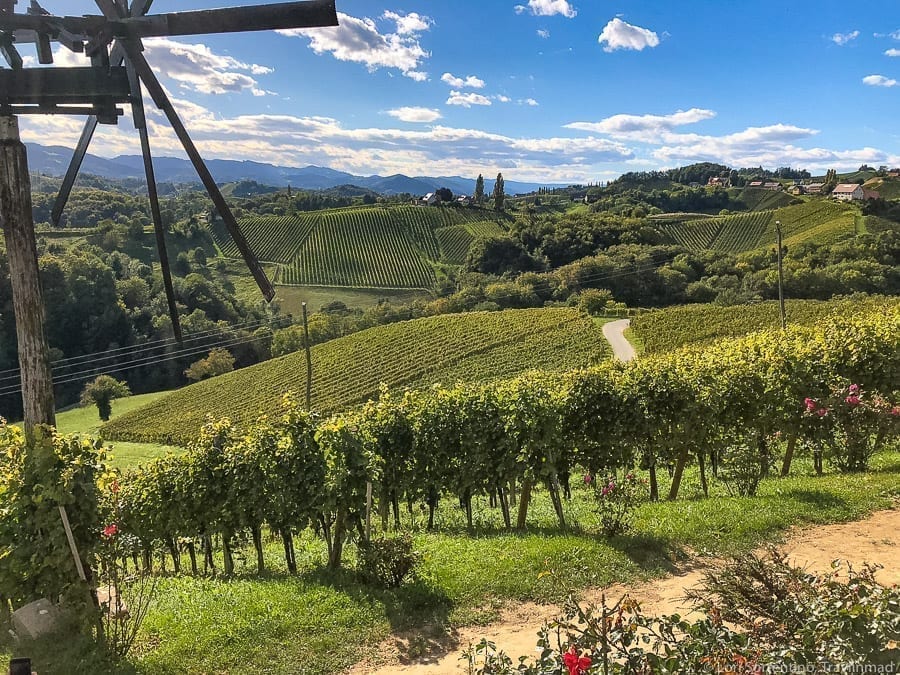
Food lovers should start their tour with a visit to Vinofaktur Genussregal, the largest store in Styria featuring over 2,500 Styrian wine and culinary products from over 250 regional producers.
For lunch or dinner, local winery-owned buschenshanks are the place to go for platters of local smoked meats and cheeses.
It’s all so quintessential Styria and the perfect destination for a fall road trip through Europe.
Though you can complete this European road trip in a day, it’s best to set aside at least a couple of days if you’d like to leisurely explore what the wine route has to offer (and allow your designated driver some chances to sample the wine).
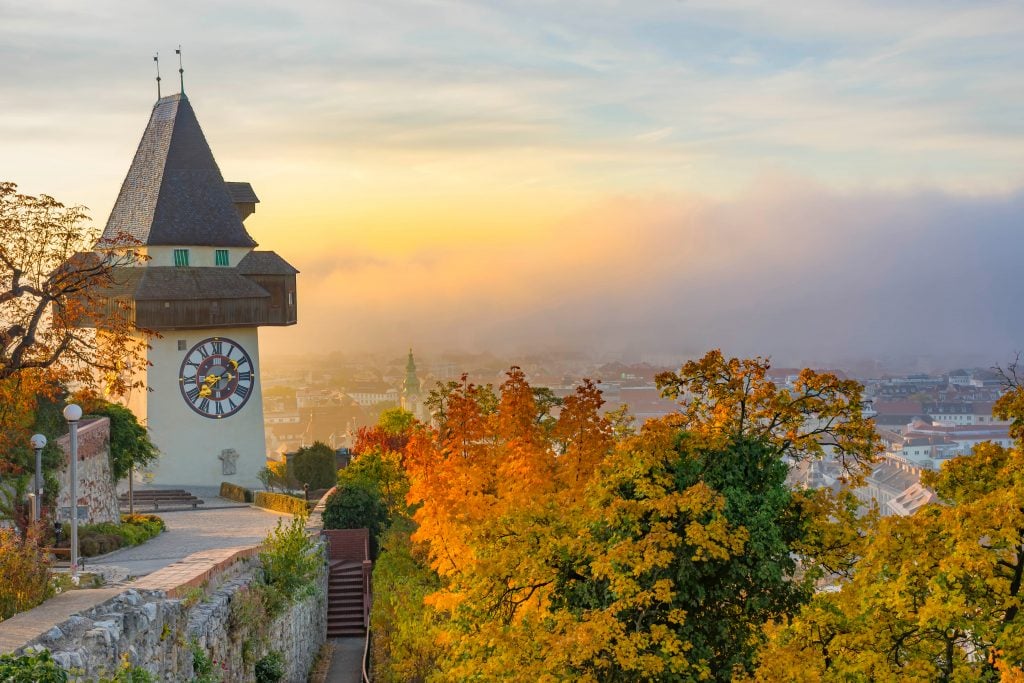
From Inma of A World to Travel
There are a surprising number of things to do in Latvia , the beautiful Baltic Republic located in northeast Europe–and it’s possible to cross the entire country in six hours!
The road trip itinerary suggested here covers 6 of the wonders of this country, from west to east, starting in the immediate vicinity of the Lithuanian border.
From exceptional natural landscapes to charming villages and large cities, this European road trip itinerary has something for everyone!
Stop first in Liepaja, known for its beaches with dunes and its constant wind, before moving on to Kuldiga, a picturesque village in the Western part of the country.
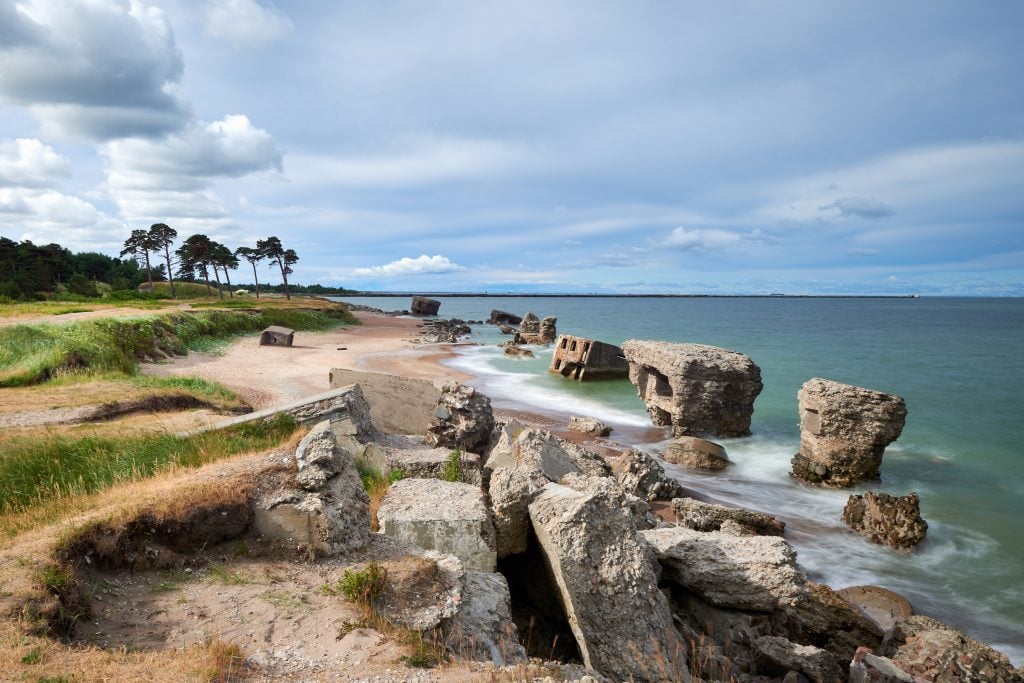
Be sure to make time for the unique Kemeri National Park, where it is possible to practice bog-walking with the right equipment and a guide!
Riga, the capital of Latvia and your next stop on this Europe road trip, needs no introduction. Neither does its historic center, central market, and lively nightlife.
From there, move on to visit Sigulda, a historical village that has lots to offer to lovers of active tourism.
Finally, pay a visit to Gauja National Park, located near the border with Estonia. There is no other place like this in the whole country to go hiking on its many trails.
If possible, set aside about a week to explore this European road trip route through Latvia.
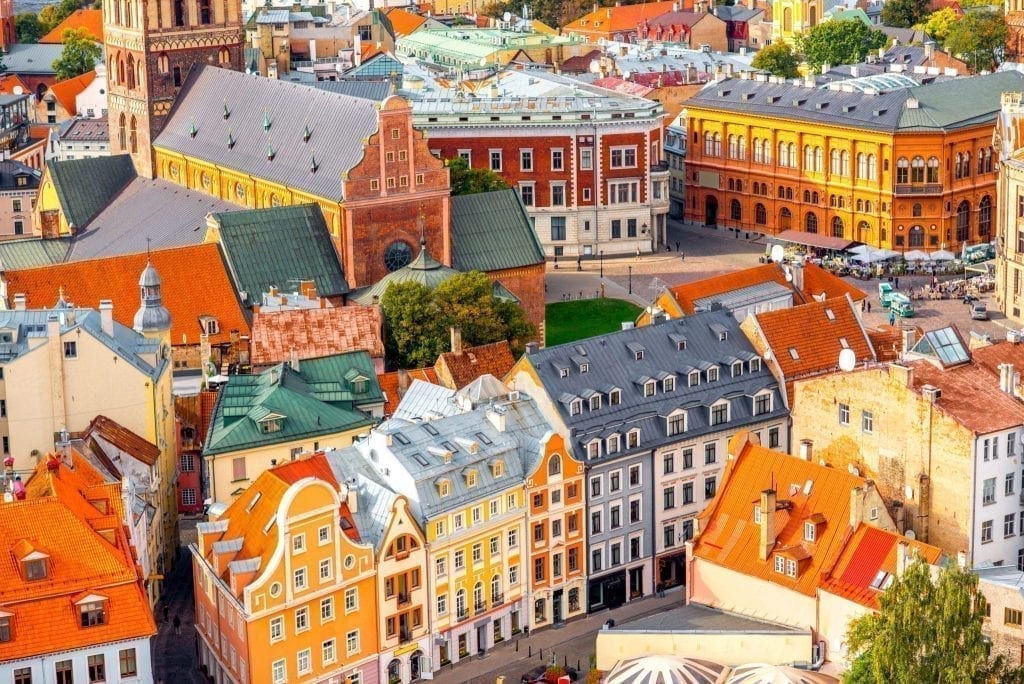
From Jo of Lost Wanders
There’s plenty to see in Lithuania other than the trendy capital Vilnius and it’s well worth having your own transportation for a road trip in this beautiful Baltic country .
The first stop is the Hill of Crosses near Siauliai to see a unique memorial dedicated to the many unknown deaths of the Lithuanian uprising against Russian rule.
The hill now holds over 100,000 crosses memorializing people from around the globe with more being added daily.
A two-hour drive west uncovers an old nuclear missile silo, one of only three left in the world, that’s been turned into a Cold War Museum.
It’s located deep within Žemaitijos National Park, down bumpy gravel roads, where you can also get a chance to spot wild animals such as Lynx.
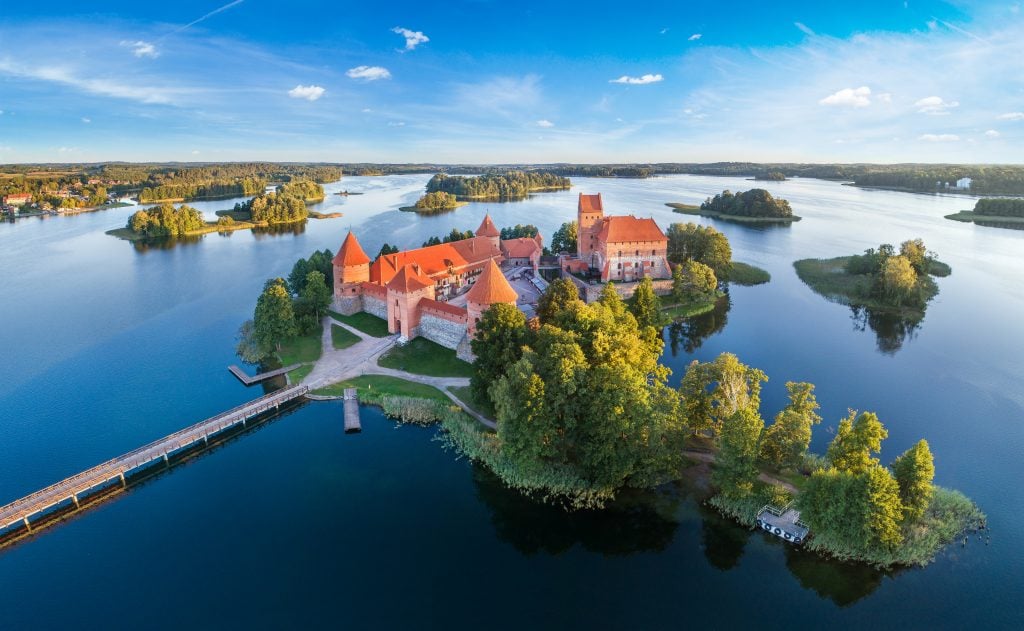
Another hour’s drive towards the Baltic Sea, Klaipeda is the base for heading out to the Curonian spit, a large sandbar covering Lithuania’s coastline.
The town is famous for its spas and long open beaches.
Back down towards Vilnius, Trakai Castle is a must-see.
If you do just one castle on this trip make it this one. It sits on an island out on a lake where you can pedal and paddleboard in the summer months.
You can do this trip in a week but allow 10 days to 2 weeks to fully see everything and don’t miss a couple of days in the capital.
Summer is by far the most favorable time to do this trip, crowds aren’t as big as in Central Europe and winters can get very cold for taking northern European road trips!
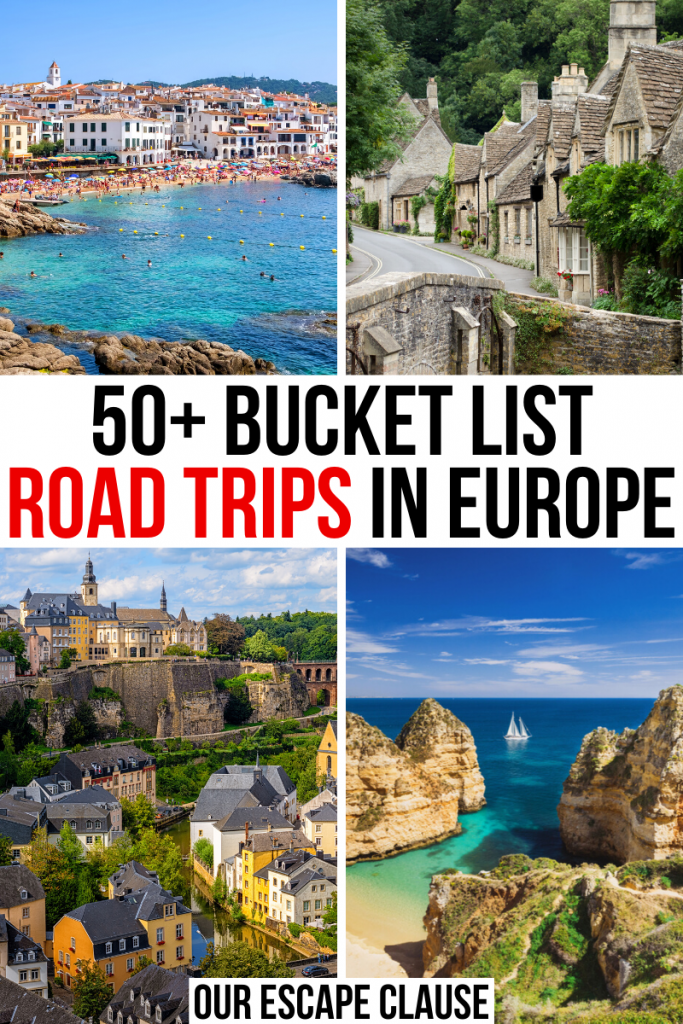
About Kate Storm

In May 2016, I left my suburban life in the USA and became a full-time traveler. Since then, I have visited 50+ countries on 5 continents and lived in Portugal, developing a special love of traveling in Europe (especially Italy) along the way. Today, along with my husband Jeremy and dog Ranger, I’m working toward my eventual goal of splitting my life between Europe and the USA.
2 thoughts on “55 Epic Road Trips in Europe (Itinerary Ideas + Tips!)”
These road trip ideas are fantastic. I’d love to do the Dublin to Dingle trip someday.
We’ve done that one ourselves, and can absolutely endorse it! It’s phenomenal.
Leave a Comment Cancel reply

How To Road Trip Around Europe
by Jason Moore
Note from Jason: This is a post by Joanna Moore .
Last May my girlfriend and I packed up our house in Nottingham, England, piled our belongings into our car, and headed south to Harwich ferry terminal.
We’d given up our rental contract, gotten rid of most of our possessions, and moved into our car. The plan? To road trip around Europe for a few months.
As we were driving through the pouring rain to the port, I turned to my girlfriend and said, “what on earth are we doing?” Since she doesn’t have a driving licence, and despite the fact that I’m a terrible driver, it was me who was going to have to drive us through the Netherlands and Germany the next day.
Apart from getting to Berlin for a conference and visiting a few friends in various parts of the continent, we had no plan for the trip. We were clueless about how to road trip around Europe.
But of course we learned quickly. We made a ton of mistakes. We were grateful for some belongings and wished we hadn’t bothered bringing others. We got into a routine and figured out how to live on the road quite comfortably.
Now it’s time to pass on everything we learned, so that you too can travel around Europe while living in your car, perhaps without making quite as many mistakes as we did!
What This Guide Will Cover
This guide covers all the basics on how to road trip around Europe. While it is focused on Europe, it will be useful for anyone planning to live in their car or go on an extended road trip.
- Choosing your car
- Packing and preparing the car
- Checking the rules of the road
- Planning your route
- Finding places to sleep
- Keeping clean
- Traveling on a budget
Choosing Your Car
Size And Model
If you don’t already have a car, the first thing you’ll want to do is ask yourself whether comfort or budget travel is more important to you. My girlfriend and I had slept in a tiny Toyota Yaris before and, while we had no trouble sleeping, we had no desire to be that cooped up for longer than a few nights at a time.
If you’re traveling alone or you don’t have a ton of cash to spend on gas, I’d recommend looking at estates, as they’re quite long. If comfort and space are important to you, I’d suggest getting a people carrier like our Ford Galaxy. Make sure the seats are removable, so that you can lie down.
What you look for in a car will depend on you, your driving experience, and the type of trip you’re going on.
Whereas in the UK, most cars are manual, and that’s all I’d ever driven, we decided to go for an automatic, because we wanted to make the driving as simple as possible. Driving on the other side of the road and understanding unfamiliar road signs was going to be tricky enough, without having to switch gears at the same time.
Look for a car with tinted windows, so that you can sleep and keep your stuff in the car without anyone noticing. The car we ended up with didn’t have tinted windows, so we bought tinting paper from the internet and stuck it in ourselves. It looked a bit scrappy but it did the trick.
You could also hang up black curtains or material (and we did use some of those too, because we never actually finished putting the tinting up!), but know that they might make people peer into your car in the daytime, wondering what’s behind them.

You can see how bad our tinting was, but it did the trick!
Age And Reliability
While we did want a car that didn’t have too many miles on it, this wasn’t a huge deal to us because our plan, should our car die, was to abandon ship and come up with an alternative way to travel. That said, we were lucky and got one with just under 80,000 miles on it.
If your car is going to be your only option, make sure it’s the most reliable car you can afford. We bought a beaten up family car, but we liked that it was scratched and scruffy, because we figured no one would look twice at it, let alone consider stealing it.
Of course, you should follow the normal instructions for buying a car, especially if it’s second hand. If you’re not confident examining it yourself, get a friend to do it or pay an expert to do it.
You could buy your car abroad, and we did consider this because, driving a British car in Europe, our controls were going to be on the wrong side. However, we decided that we’d rather deal with the buying in our own language and bought our car from a guy down the road!
It’s also a good idea to get your car serviced by a garage before you leave, to give yourself some peace of mind. Our car needed a new door lock, new tyres, and new internal fittings, so plan to spend some money on this.
Packing And Preparing The Car
We had lots of plans to do up our car and turn it into the ultimate mobile home, but life happened and we never got round to it. By all means, go all out and convert your car into a fully fledged living space, but you’ll manage perfectly fine by just following the advice below.
Get Used To The Car
I literally could not drive our car when we first got it, so I was glad that we bought it a few months before we need it. Get plenty of practice of driving your car and getting to know how it works.
It would have been good to have known, when we got a flat tyre on the highway on the border between Austria and Germany, that our car did have a spare tyre. It would also have been useful to have known how to change a tyre. We were completely fine, but this information would have saved us a bit of time and worry. Get to know your car before you go.
What To Take
I’m not going to provide a full list of the items you should take with you, as this will differ for everyone. But I will give you a list of the things that made our lives much, much easier.
We actually took an exercise bench with us to serve as a shelf. It essentially doubled the amount of space we had for our belongings. We had it pushed up against the back of the two font seats and we put boxes of stuff both below and on top of it. Genius!
Try to split your belongings into categories and have a box per category. I referred to one of our boxes as “the bathroom” and another as “the kitchen.”
By keeping everything in its place, you’ll keep the car tidy and you’ll never struggle to find anything.
Likewise, I’d recommend having an easily accessible “important documents folder.”
We wanted one simple rug to cover the whole of the floor of the car, just to keep things nice in there. But we found that normal rugs were pretty expensive and the wrong size.
The perfect solution turned out to be one of those play rugs for children with a town mapped out onto it. It was the perfect size and it wasn’t too thick, so it didn’t make us too warm at night.
We used a yoga mat each as a bed. The first night was a bit uncomfortable but after that it was fine. That’s all you need.
Quilt And Pillows
You could use sleeping bags, but having a regular duvet made us feel more at home in the car.
Obviously, you’ll want regular adapters, so you can plug your electronics in while you’re abroad, but make sure to pack a cigarette lighter to USB adapter too, particularly if you’ve got an iPhone. These are great because they allow you to charge your phone while you’re driving.
If you’re lucky, you’ll have a sat nav that comes with one of these.
Choosing between a map and a sat nav is personal preference, but we took a sat nav with us. We felt like we should take a map with us to be on the safe side but in the end we didn’t.
Although we came to hate our TomTom (called Thomas when it was misbehaving), it did get us round Europe, so we can’t really complain.
One thing we discovered early on was that there’s not much you can do in a car.
Our Kindles made the whole trip much more enjoyable, because reading was pretty much the only thing we could do to relax, and it would have been a pain to have taken a whole stack of books.
Card With Free Cash Withdrawals Abroad
Before you go, work out how you’re going to withdraw money abroad. Your options will depend on where you live and where you’re going, but if you’re from the UK and you’re going to Europe, I’d recommend opening an account with Metro. Their debit card was a great little find and allowed us to take out money for free.
Rain Deflectors
Rain deflectors are basically strips of plastic that serve as mini roofs to stop the rain from getting in when you’ve got the windows open.
We bought these so that we could keep the windows slightly open at night (so they wouldn’t steam up and give us away to passersby) without anyone seeing that they were open.

Rain deflectors from inside the car
Few Clothes
We didn’t take many clothes at all but we still had too many. When you’re living in the car, you don’t end up changing your clothes every single day. We tended to sleep in our clothes too, so we didn’t get through very many of them.
If you’re super concerned about being clean, go ahead and take more clothes, but most people won’t need more than a couple of pairs of shorts/pants/skirts, one jacket, and about three t-shirts.
Our best buy of the trip was our rucksacks. We were able to fit everything into them that we needed to take with us whenever we left the car (laptops, phone leads, water, food, camera, Kindles, spare jackets, purses, passports, etc.), and we kept them packed, so we could grab ‘n’ go.
There’s no need to get fancy here at all. Our rucksacks are relatively small, with external pouches for drinks, a front zipped pocket, and two compartments inside. Find one that suits your needs.
We also bought gym bags and kept everything we needed for the gym in those too.
Light Laptops With Long Battery Life
Before we set off, I had a huge Dell that was slow and heavy. Buying a used Macbook was the best thing I could have done. It meant I could carry my laptop in my rucksack and use it without a problem when wall sockets were in short supply.
Europe-wide Guide Book
Over the years I’ve had so many country-specific guidebooks but my well-worn Europe on a shoestring by Lonely Planet has always beaten them all.
This was the second Europe-wide trip I’d done, and having one book that covers everywhere you want to go saved us so much space.
Protein Powder
My girlfriend and I both lift, so getting enough protein to keep us growing without access to a kitchen was going to be difficult. We took huge bags of protein powder with us and drank them with (generally warm) water. It was gross but we both put on muscle while traveling.
If you’re not into lifting, you won’t need as much as we did, but one shake a day could be a good way to get some protein into your diet. Likewise, you might want to look into taking supplements.
Tinned food will be your friend, so make sure you can get into it by taking a tin opener with you.
Take a set of cutlery (whether plastic or metal) each. You might want a plastic plate and a few other bits and bobs, but we managed without.
Make sure you know where you’re going. Driving around Slovenia, desperately trying to recognise something that would lead me to the farm I used to live on because I hadn’t brought the address with me wasn’t my finest moment.
Just to be prepared. We didn’t take these with us, so when I managed to leave the car lights on overnight and drain the battery, I had to walk to a gas station and shell out quite a bit for some leads to get us back on our way.

The view from inside the car
Checking The Rules Of The Road
Of course, make sure you’re fully insured before you set off. Insurance was our first big hurdle. We’d planned to travel for up to five months, but all the quotes we got were for a few thousand pounds. No way.
Our solution was to get a regular insurance policy that would allow us to go abroad for one month at a time for a total of three months in one year, popping back across the English Channel a few times. In the end, we only did one month in mainland Europe, so this wasn’t an issue.
If you’re from a mainland European country, you might have more options than we did.
Breakdown Cover
Don’t forget to get breakdown cover. Being able to just phone someone and wait for help when we broke down in Austria was the easiest thing ever.
Before you set off, find out what each country requires you to have in your car. This guide gives an overview of what you’ll need. Each European country has different rules, so what you need to get will depend on where you’re going.
We didn’t know where we’d end up going, so we got the most commonly needed things (reflective jacket, GB sticker, warning triangle, first aid kit, fire extinguisher, spare headlight, breathalyser), and planned to look up each country’s rules as and when we needed to. You can get kits with most of these things in.
If you’re from the UK, you’ll need some stickers to make your headlights beam in the opposite direction too.
Sleeping In Your Car
In some countries, it’s illegal to sleep in your car. You could look this up beforehand or stay ignorant and hope that if a police officer notices you, they take pity on you.
Each night we decided what we’d say if we were questioned. Usually the plan was to say that we were driving to whichever friend’s house we were going to next, and that I’d gotten tired and thought it safer to have a nap than continue. If we weren’t going anywhere in particular, we’d say we were sleeping in campsites but had gotten lost.
Some countries and cities require you to have and display special passes and stickers to drive in them.
Particularly in the East, you’ll find that, as you approach the next country, you’ll see signs urging you to pull over and buy a vignette.
This is a sticker that allows you to drive in a particular country for a certain number of days. They’re only about €20 each, but it’s worth factoring them into your budget.
Some European cities have low emission zones that you need a sticker for too. You can order these from your own country before you leave, but we found out about them too late and had to go from gas station to gas station in Germany, trying to find someone to issue us one.
Again, these cost a few Euros, although we got ours for free (no idea why). If you don’t want the cost or hassle of getting one, simply avoid the affected cities.
Planning Your Route
I’m a big planner, so when I did InterRail, my friends and I booked every single hostel for our trip before we even set off.
This time, we decided to do the opposite. Apart from going to a conference in Berlin, we had no plans. The plans we did make changed pretty much on a daily basis.
One day, we were in Klagenfurt, Austria, planning on staying there for a week or so. The next day, we arrived in Germany, having driven through Salzburg, Liechtenstein, and Switzerland, just because.
And while it was fun being so free, it didn’t make any sense, gas-wise. This approach was not at all efficient, so if you’re on a budget, figure out how to squeeze as much out of your route as possible, or just stick to one part of Europe.
The Best Roads
I was very nervous about driving abroad, but I actually ended up preferring it to driving in the UK.
In most of the countries we went to, the motorways only had two lanes and you’d only see another car every minute or so. It was so easy and peaceful.
The busiest roads were the Netherlands and Germany. Along with Vienna, they’re the only places we got stuck in traffic.
For whatever reason, our sat nav failed to tell us when we were approaching a toll road, so we wasted more money this way. If you’re tight on money, look these up before you go or make sure your sat nav will do that for you.

Driving on the Slovenian/Italian border
Finding Places To Sleep
Sometimes finding somewhere to sleep is a nightmare but, after a while, you get pretty good at it.
Residential Areas
Your best bet is to try and blend in on a normal residential road or housing estate with no parking restrictions. Avoid main roads and deserted back alleys.
Street Lights
It’s a good idea to keep your car under a street light, to discourage thieves. That said, the light can stop you from getting to sleep, so experiment with different distances and positions.
We read that sleeping near churches is a great way to deter vandals and to be close to help, should you need it. We never tested this idea out, but feel free to try it!
Affluent Neighbourhoods
Before we drove to a new city, my girlfriend would look up the different neighbourhoods and find a few “good” neighbourhoods that were within walking distance of the city center.
We just felt safer sleeping outside big and well-kept houses than we would have if we’d stayed somewhere shady-looking.
If you end up parking on a slope or hill, make sure you sleep with your head on the highest bit and your feet on the lowest bit. You don’t want all your blood ending up in your head!
Switch It Up
We tended to stay in the same spot for one or two nights. In Edinburgh, we ended up staying outside some random guy’s house for about a week and I think he got suspicious of us towards the end, so we simply moved a bit further up his road.
Be quiet, keep lights off once you get into your car at night, and try not to draw attention to yourself.
Keeping Clean
Sometimes you’ll find a parking spot close to an alleyway or somewhere private where you can relieve yourself, but don’t count on this. Park near to a McDonald’s or other cafe and go to the toilet as soon as you wake up and just before you go to sleep.
Try not to drink anything in the last hour before you go to bed. One skill you’ll develop while living in your car is the ability to sleep even when you need a wee!
If you’re a guy, you’ll probably be fine. Girls, we tried Shewees and I’m just going to say “no comment.” We also tried Peebols, which are essentially resealable bags. We only used them when we were desperate because we didn’t particularly like keeping bags of pee in the car overnight, but these were great. Stock up!
Washing Yourself
We used gyms and showered in them every other day or so. Look for gyms with free trial passes and cheap rates for one day passes.
McFit is a great option because they have gyms across Europe. Either join this gym or take advantage of its free trial.
The first time we went to a McFit, we were just let in without providing any details about ourselves, so we went again in our next city. This time they took a few details. We went again somewhere else and they took quite even more details, but they didn’t seem to notice that we’d had free passes before. Finally, in Münster, Germany, they did notice that we’d been to more than one gym, but they didn’t mind.
If they question you, tell them you’re considering moving to a few European cities and you’re checking them all out. I felt a bit bad about this but it saved us a lot of money!
Otherwise, we took hand sanitizer with us and used sinks.
Washing Your Clothes
The obvious way to wash your clothes as you travel in the car is to visit laundromats. Unfortunately, whenever we wanted one, we couldn’t find any. So we washed our clothes when we visited friends and one night when we stayed in a hostel.
If you’re desperate, you could wash your clothes in the sinks of cafe bathrooms, but I’d recommend holding out for a hostel, friend’s house, or laundrette if you can.

There’s no need to resort to washing in lakes!
You’re probably not going to be able to eat the best diet while you’re living in your car, unless you’ve got a lot of money to spend on eating out. We accepted that we probably wouldn’t be able to drink enough water each day and that we’d have to do the best we could with what we could find.
When I did InterRail in 2008, my friends and I lived on bread and Nutella. Tasty but very unhealthy.
This time, we ate tinned tuna and vegetables, bread, cereal, protein shakes, and peanut butter. Again, not great, but it is possible to sneak some veggies and protein into your diet if you make a conscious effort to do so.
Despite the fact that we went to McDonald’s every day to use the internet, we didn’t really eat fast food. If you’re using fast food restaurants for their wifi, buy drinks instead.
Drinks actually turned out to be quite problematic for us. We figured we’d be able to top up our water bottles from sinks but we were rarely sure that the water was drinkable. Instead, we had to buy bottles of water from supermarkets, which was expensive.
Traveling On A Budget
While we worked out rough costs before we started our trip, we weren’t very careful or thorough about this at all. We also haven’t worked out how much we did spend, simply because we would probably be horrified!
But don’t let that put you off. Knowing the mistakes we made, you should be able to save yourself a lot of money and do the trip much cheaper than we did.
Work As You Go
Your best option for funding your trip is to get paid to travel . Our trip was only possible because I work online.
The easiest way to work online is to freelance on somewhere like Elance or to become a virtual assistant. This is relatively easy to do. In fact, my girlfriend picked up an editing job a few weeks into our trip, entirely by accident. Simply head to Elance or contact your favorite bloggers to see if they’re hiring.

Working by a lake with my laptop and rucksack
Plan For Problems
By far the biggest expense for us was our car. Aside from actually buying and preparing it, we had to shell out for quite a few mishaps.
- Insurance (£800)
- Breakdown cover (£100)
- Full service, new tyres, new door lock, internal fittings
- New tyre in Austria/Germany
- Air con fix in Slovenia
Reducing Costs
You could avoid and reduce a lot of these costs by buying a smaller and newer car than ours (ours was a 1999 car) and by planning ahead.
A great way to save money is by staying in the same place for longer, since it’s mostly the actual travel (the gas) that costs you once you’ve got your car.
Keep your food costs down by finding the items and brands with the lowest cost per 100g and by buying from supermarkets like Aldi and Lidl.
Besides keeping the car going, our biggest unforeseen expense was water. Take lots of empty bottles with you and fill up on free water whenever you can find it, whether that’s at a gym, from a water fountain, at a friend’s house, or from a bathroom sink with drinkable water.
It goes without saying that if you’re really tight on money, you should try not to spend money on attractions and in tourist areas. Aim to get a feel for the places you’re visiting by wandering around them rather than by going to museums, etc.
If you’re there more for the experience than to see particular places, visit towns and the countryside rather than cities.
We’d only been to Berlin, Prague, and Vienna when we decided to stop visiting tourist hotspots and to just see what we came across. It’s amazing the events and places you come across when you’re not looking for anything in particular.
Be Flexible
Your trip is about having a good time and seeing Europe. If you find yourself getting stressed, remind yourself why you’re there. There’s no point cutting your expenses right down if doing so is making you miserable.
We planned to spend three to five months road tripping around Europe. By the end of our first month abroad, when it was time to pop home because of our 30-day insurance policy quirk, we were running low on both money and energy. We liked the idea of continuing our trip but we also couldn’t really be bothered anymore.
Rather than pushing on, we decided to road trip around the UK instead. After a few weeks of that, we suddenly decided we wanted to settle down somewhere. That same day, we went home.
Don’t let yourself feel restricted by your plans. Do what you want to do.
Take Your Shoes Off
Take your shoes off whenever you get into your car. If possible, keep them in a particular place too. That way, you’ll keep all your stuff clean and you’ll feel comfier in your portable home.
Plan Your Escape
Know what you’d do if someone tried to get in during the night.
We decided that we’d stay quiet and try to peer out if we weren’t sure what was going on, and hope whoever was bothering us went away. If we thought someone was trying to break in and we had time, I’d jump into the front and start driving. If it were too late, we’d grab our rucksacks and run away.
I kept the car keys in the pocket of the door I slept next to, so that, if someone were to try and break into the car while we were sleeping, I’d be able to grab them, hop into the front, and drive away.
It probably won’t happen but it’s good to have a plan.
Know Yourself
Know what you need to function properly. If you’re grouchy when you eat poorly, prioritize your nutrition. If being spontaneous freaks you out, plan a little. If you can’t stand the idea of being a little smelly, book into a hotel every couple of days.
My girlfriend and I are both introverts, and we both found it hard to feel like we could properly relax in our car, because we were always in public. Reading was a nice escape, but we could have done with more sheets to cover the windows with at times.
If you’re traveling with someone else, do your best to understand them and their needs. My girlfriend and I don’t argue much but we definitely argued a fair bit on our road trip! Try to see their point of view, compromise, and talk.

Reading in the shade in Slovenia
Appreciate It
A day or two after we moved back into our parents’ houses, my girlfriend and I set off again. Being back in a house felt like too much. There was too much time, too much space, too much food to eat, too many options. It was boring and we hated it!
We stayed in the car again while we looked for somewhere to live and then moved into a shared house. After the freedom of living out of our car, living with other people and with so much of their stuff everywhere was really stressful.
We only lasted three months in that house before we left again and moved into a small, unfurnished apartment. Finally, we’ve got very little in the way of belongings, furniture, and space again!
Living in a car has changed the way I live in a house or apartment, and I’m glad for that.
But every now and then I long for the days when we’d wake up, hop into the front seats, and just drive. Whenever I look out of the window and see our car sitting there, I miss the simplicity and freedom of our road trip.
It’s a cliché, but road tripping around Europe in your car probably will change you.
While you’re out there, you’ll get sick of lukewarm protein shakes and your lack of opportunities to pee, but appreciate it.
It’s an awesome way to get to know yourself, your traveling companion, and the world. I’d do it again in a heartbeat.
Want more? Listen to this podcast about how to travel Europe on the cheap .
Subscribe to the Zero To Travel Podcast on iTunes

You're almost there!

Drop your email below so we can send your FREE course!
Success! Now check your email to confirm your subscription.
There was an error submitting your subscription. Please try again.
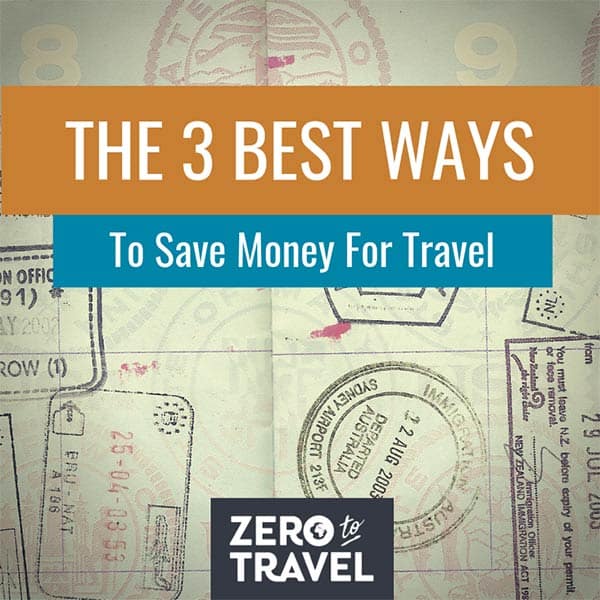

Want to Travel More?
You need a plan. Sign up to access this mini-course, get exclusive content and join our amazing community of travelers. It’s all FREE!
You're in! Check your email for your free guide!
10 comments.
Such a nice article. Loved reading it. This increased my desire to do a road trip in Europe and UK. All the best for your upcoming trips and adventures. Cheers… Pradeep
Thanks for checking it out Pradeep, and glad to hear the article helped!
Jason, amazing article, thank you so much for your detailed writing.
Any information on non-european residents buying a car to travel around Europe in?
This is something I’m looking into – hope to have more for you soon!
Interesting Article Jason and very nicely written.
I was wondering if you can recommend a road trip guide for Sweden–>Denmark–>Germany–>Netherlands–>Belgium–>France–>Switzerland–>Germany–Denmark–>Sweden.
I am interested in driving to above countries while starting and ending in Sweden as I live there. The trip can stretch up to 1 month max! But the main thing is I need to know the must see roads / sceneris / cities on the way!
Build it around the activities you love!
What a great read! got ys excited now,hopefully be setting off to start our trip from St Malo in a few months with no plans apart from surfing and getting into adventures!
Thanks All the best Guy&Iza
Sounds like an awesome trip! Thanks for checking out the site.
Fantastic, and useful post. Thank you. Its very inspiring, and comforting to read about your experience. The tips are worth their weight in gold – so practical and honest.
I plan on going on a month long drive through Europe, too, but it’ll be with out four children, so it’ll be quite the different road trip!
Your post will make things a little easier, I think.
Recent Posts
- Greatest Hits: Adventure and Conservation – A 6,000 km Tuk-Tuk Journey Through Africa
- Bicycling Across the USA Without Money in Search of Human Connection With Daniel Troia
- Greatest Hits: Sustainable Travel 101 (How to Be A Better Traveler) With Richard Hammond
- New Zealand: Top 10 Hidden Gems, Campervan Lifestyle (Tips and Tricks), and Doing Life Differently With Lisa Jansen
- Greatest Hits: Biking the World for Climate Change With Devi Lockwood
Recent Comments
- nck crack without box on Road Tripping Europe To India : Daily Life On A Land Rover Overland Adventure
- Nora on Turn Travel Into A Lifestyle With Goats On The Road
- Jason Law on Top 10 Road Trip Albums
- Svanna Clariot on Atlas Obscura: Curious World Wonders
- Kylie on Hitchhiking: Myths, Facts and Beyond
- February 2024
- January 2024
- December 2023
- November 2023
- October 2023
- September 2023
- August 2023
- February 2023
- January 2023
- December 2022
- November 2022
- October 2022
- September 2022
- August 2022
- February 2022
- January 2022
- December 2021
- November 2021
- October 2021
- September 2021
- August 2021
- February 2021
- January 2021
- December 2020
- November 2020
- October 2020
- September 2020
- August 2020
- February 2020
- January 2020
- December 2019
- November 2019
- October 2019
- September 2019
- August 2019
- February 2019
- January 2019
- December 2018
- November 2018
- October 2018
- September 2018
- August 2018
- February 2018
- January 2018
- December 2017
- November 2017
- October 2017
- September 2017
- August 2017
- February 2017
- January 2017
- December 2016
- November 2016
- October 2016
- September 2016
- August 2016
- February 2016
- January 2016
- December 2015
- November 2015
- October 2015
- September 2015
- August 2015
- February 2015
- January 2015
- December 2014
- November 2014
- October 2014
- September 2014
- August 2014
- February 2014
- January 2014
- December 2013
- November 2013
- October 2013
- September 2013
- Destinations & Culture
- Digital Nomad
- Inspiration
- Is It Worth It?
- Travel Hacking
- Travel Jobs
- Travelosophy
- Uncategorized
- Entries feed
- Comments feed
- WordPress.org

You need a plan. Sign up to access this mini-course The 3 Best Ways To Save Money For Travel , get exclusive content and join our amazing community of travelers. It’s all FREE!
You're signed up! Check your email to access the mini-course!

9 of the best road trips in Europe
Book your individual trip , stress-free with local travel experts
- roughguides.com
- best-road-trips-europe
Plan your tailor-made trip with a local expert
Book securely with money-back guarantee
Travel stress-free with local assistance and 24/7 support
written by Rough Guides Editors
updated 13.03.2024
If you've got wheels, wanderlust and a spot of time, a road trip in Europe offers the chance to see the continent at a relaxed pace. From the sunny shores of Portugal to the dungeons of Dracula's castle in Transylvania in Romania , the following itineraries can be easily combined, shortened or altered to suit your wayfaring tastes. Here are 9 of the best road trips in Europe.
1. From the glamour of Paris to the glorious grit of Berlin (France to Germany)
2. surf and sun in the basque country and beyond, 3. the arctic fjords from bergen to trondheim (norway), 4. the unexplored east: bucharest to vienna (romania to austria), 5. to portugal and beyond.
- 6. High-altitude adventure on Germany's Alpine Road
7. Godly beaches and ancient highways in Greece
8. london to edinburgh and the highlands, 9. the secret shores of sicily and calabria, planning your european road trip.
Leaving Paris , cruise through the gentle hills of Champagne and Reims to the quaint capital of Luxembourg City, and explore the small country’s many fairy-tale castles.
Trier , Germany’s oldest city, is less than an hour’s drive north-east, where ancient Roman baths and basilicas stand marvellously intact.
Spend a night in the medieval village of Bacharach in Riesling wine country, before wandering the riverside streets of Heidelberg . Onward to Nuremberg , and then to Leipzig for a strong dose of hot caffeine with your Cold War history, classical music and cake. Make sure to check out the complete guide to the UNESCO world heritage sites in Germany to visit some of the palaces and gardens , industrial heritage sites or historic town centres along the way.
Detour to Dresden , restored after the ruinous bombing in WWII, before ending in one of Europe’s coolest cities: the creative paradise of Berlin .
For a longer trip, start in London and take the ferry or channel tunnel to France , transforming this road trip into a pilgrimage between Europe’s holy trinity of artistic hubs.
- Best for: Culture vultures looking for bragging rights.
- How long: 1–2 weeks.
- Insider tip: If you’re driving in France, you’ll legally need to keep safety equipment in your car (a reflective vest and hazard signal). Additionally, be prepared with a cash or credit card to pay the French road tolls on the way.

Panoramic aerial view of Trier featuring the famous Trierer Dom © S-F/Shutterstock
Begin in Bilbao , where the surrounding beaches boast world-class surf, then drive along the Atlantic to San Sebastian : watersports wonderland and foodie heaven. From there venture south through the rugged wilderness of the Pyrenees to Pamplona . Climb the Roncesvalles Pass before looping back to the coast. Or continue along the Bay of Biscay to the attractive seaside resort of St-Jean-de-Luz.
Travellers with a little extra money lining their pockets will be happy to spend days lingering on boho beaches in Biarritz, while those looking for gargantuan swell can do no better than the surfer hangouts in Hossegor.
Finish the trip northward in Bordeaux – the Pearl of the Aquitaine – where café-strewn boulevards and world-class wines are your trophies at the finish line.
Bilbao to Bordeaux
- Best for: Sun-seeking surfers and foodies.
- How long: 1 week.
- Insider tip: Check seasonal surf forecasts before you go, and look into coastal campsites if you're on a budget.The Basque roads beg for a convertible – or a colourful camper van with surfboards strapped to the roof.

Biarritz City and its famous beach © Boris Stroujko/Shutterstock
Kick off in the city of Bergen , on Norway’s southwest coast, and make way past mighty fjords to Voss and the colossal Tvindefossen waterfall. Then check the world's longest road tunnel off your to-do list, a cavernous 24.5km route under the mountains.
Catch a quick ferry across the Sognefjord and carry on to the Fjaler valleys, a land of glaciers and snowy mountain peaks, to the waterside towns of Stryn or the mountain village Videster.
Work your way northward to the well-touristed towns of Geiranger, down the death-defying hairpin turns of Trollstigen (literally “The Troll Path”).
After the descent, ferry across the Eresfjord to Molde and Kristiansund. For the final stretch, drive the iconic Atlantic Road with its roller-coaster-style bridges, and conclude with some well-deserved downtime upon the still waters and stilted homes of Trondheim .
Bergen to Trondheim
- Best for: Thrill seekers and landscape junkies.
- How long : 5–7 days.
- Insider tip : This route is best tackled from late spring to early autumn. If you plan on road tripping during Norway’s winter months, be sure to check online ahead of time for road closures due to snow and ice.

The idyllic surroundings of Stryn in Norway © Mikolajn/Shutterstock
Start from Bucharest , travelling northward through the Carpathian mountains to Transylvania, and make a mandatory stop at Bran Castle (claimed to be the old stomping grounds of Dracula himself).
Take the Transfagarasan mountain road, one of the most scenic routes in the world, towards the age-old cities and countless castles of Sibu, Brasov and Sighisoara. Then set course to the unexplored architectural gems of Timisoara.
Carry on towards the tranquil hot springs and hip ruin pubs of bustling Budapest, and be prepared to stay at least a few days. Depart for Bratislava – a capital full of surprises – from where it's only an hour further to the coffeehouses and eclectic architecture of Vienna .
- Best for: Anyone looking for a break from the conventional tourism of western Europe.
- How long: 7–12 days.
- Insider tip: Exercise caution when driving through tunnels. Though the weather outside may be fine, tunnels are often slippery.

Bran (Dracula) castle in Transylvania, Romania © Kanuman/Shutterstock
Start in Braga , before driving south to the medieval town of Guimarães , a UNESCO World Heritage site. Then it’s onward to the breathtaking "second-city" of Porto , though it's nothing less than first-rate. Check here for the best places to stay in Porto .
Drive east to the vineyards and steep valleys of Penafiel and Amarante before hitting the coastal road to the vast white beaches of Figueira da Foz - among the best beaches in Portugal . From here it’s on to Peniche, Ericeira and then Lisbon : the country's vibrant capital that's on course to beat out Berlin for Europe’s coolest city. Check out the best areas to stay in Lisbon as well as the best places to eat to match your taste.
Drive south to Sagres , Arrifana and Carrapateira. After soaking up the sun on the picturesque shores of the Algarve, wrap this road trip up in the Mediterranean dreamland otherwise known as Faro .
If you’ve still got itchy feet when you reach Faro, take the ferry from nearby Algeciras in Spain to Morocco . Imagine the satisfaction of parking your ride in the desert village of Merzouga, before exploring the Sahara – that's right, it would feel awesome.
- Best for: Beach bums and oenophiles.
- How long: At least 10–14 days.
- Insider tip: As Portugal is among the more affordable destinations in Western Europe, this can be an especially great trip for travellers on a budget .

Oliveira Square, Guimarães © Patricia Henriques Barros/Shutterstock
6. High-altitude adventure on Germany's Alpine Road
The Alpenstrasse, or Alpine Road, is your ticket to a bonafide Bavarian odyssey: a safe route through the unforgettable vistas of Germany 's high-altitude meadows, mountains, crystal-clear lakes and cosy village restaurants. Start lakeside at Lindau on the Bodensee and head to Oberstaufen for a therapeutic beauty treatment in the country’s “Capital of Wellness”.
Venture eastwards to the Breitachklamm gorge, where the river Breitach cuts through verdant cliffs and colossal boulders. Carry on to the town of Füssen – famous for its violin makers – stopping along the way at any quaint Alpine villages you please. The iconic Neuschwanstein Castle , the same structure that inspired Walt Disney to build his own version for Cinderella, isn’t far off either - one of those places even more beautiful in winter.
Speaking of winter, hit the slopes of Garmisch-Partenkirchen for some serious skiing if the season’s right. Stop at Benediktbeuern on your way to the medieval town of Bad Tölz, then up through the stunning wilderness scenes of the Chiemgau Alps before ending in the regional capital of Munich . If you’re missing the mountain roads already, carry on to Salzburg in Austria and stop in the ice caves of Werfen on the way.
Lindau to Oberstaufen
- Best for: Outdoorsy types.
- How long: 5–8 days.
- Insider tip: Give your road trip an extra purpose and pack your skis or snowboard. Garmisch-Partenkirchen ski season starts early December and ends early May. In the summer months, you can go hiking or climbing instead.

Church in Benediktbeuern © FooTToo/Shutterstock
Start in Athens and take the coastal roads south through the Athenian Riviera to Sounion, situated at the tip the Attic peninsula. Watch a sunset at the Temple of Poseidon, then drive northward through mythic mountains to the fortress of Kórinthos before posting up in the legendary city of Mycenae (home of Homeric heroes).
If you’re craving a luxurious seaside stay, look no further than the resort town of Nafplio. If not, carry onwards through the unforgiving landscapes to Mystra, the cultural and political capital of Byzantium.
Want more? Then it’s on to Olympia, sporting grounds of the ancients, and the mystic ruins of Delphi. Loop back towards Athens, approaching the city from the north.
- Best for: Sun-worshippers,and anyone who’s ever read Homer or watched overly action-packed flicks such as Troy and 300 .
- How long: 5–10 days, though it’s easy to trim a version of this road trip down to a long weekend.
- Insider tip: If you’re parking in central Athens keep an eye out for coloured parking spaces – these are reserved for locals, so if you park here you’ll get a ticket.

Aerial view of Nafplio city in the summer © Olga Kot Photo/Shutterstock
Leave the hectic pace of England ’s capital London behind. Make for Oxford, home of the world’s oldest English-language university, and a place of storied pubs where the likes of J.R.R Tolkien and Lewis Carrol regularly wet their whistles.
If you’ve got the time, it’s a quick drive to the cottages of the Cotswolds - check our guide to the prettiest villages to visit . If not, cruise up to Stratford-Upon-Avon, birthplace of Shakespeare.
Take the two-and-a-half-hour drive north to Manchester for a city fix and watch a football match. Carry on north to the Lake District National Park, one of the most beautiful places in England . Drink in the scenery that inspired England’s finest romantics, then head across the Yorkshire dales to the quirky medieval lanes of York, founded by the Romans nearly 2000 years ago.
From there it's north again past tiny villages to the majestic wonders of Edinburgh . If you’re craving the rugged comforts of the highlands go to Stirling, Inverness, or the Western Isles – worth the drive indeed. And if you are going by electric car, check out this great guide to plan your electric car road trip in Britain .
London to Inverness
- Best for: Locals that want to feel like foreigners, and foreigners that want to feel like locals.
- How long: 5–10 days.
- Insider tip: Destinations like Stratford-Upon-Avon and York (not to mention London) are true tourist hotspots in the summer. Plan your road trip for spring or autumn and you’ll enjoy the beautiful scenery along with fewer crowds.

Catbells in The Lake District © Michael Conrad/Shutterstock
Hit the gas in the Sicilian capital of Palermo, the biggest historic centre in Italy after Rome and arguably the country’s most chaotic metropolis.
Adventure onwards along the Tyrrhenian coast to the golden sands of Cefalù – a great holiday spot for families, with a mellow medieval town centre to boot.
Get to the island’s heartland and the ancient city of Enna. Surrounded by cliffs on all sides, and built atop a massive hill, you'll feel as though you've walked on the set of Game of Thrones . Head southeast to the shores of the Ionian Sea and dock in Siracusa, once the most important in the western world while under ancient Greek rule with much of its historic architecture intact.
Then it’s up to Catania for a trip to molten Mount Etna, the tallest active volcano on the entire European continent.
Finish the trip in Messina, or ferry across into the Italian province of Calabria where rustic mountain villages, friendly locals and the idyllic sands of Tropea and Pizzo await – refreshingly devoid of foreigners.
Sicily to Pizzo
- Best for: Anyone looking for a truly authentic Italian experience, and of course, hardcore foodies.
- How long : 6–12 days.
- Insider tip: Remember that southern Italy can get very hot in July and August. Avoid the heat of the day with a leisurely lunch (go easy on the wine if you’re driving!) and travel in the early morning or evening instead.

Cefalù on a beautiful day with clear skies © Cezary Wojtkowski/Shutterstock
Planning for the perfect trip to Europe can take hours of research. Why not allow us to take can of the planning and booking, allowing you to make the most of your trip? Our tailor made trips are created by local travel experts and are completely customised to your preferences.
- Nature & Wildlife
- Coasts & Islands
- National Parks & Reserves
- Off the Beaten Track
- History Culture Heritage
- Architecture
- Inspiration
- Travel Tips
Planning your own trip? Prepare for your trip
Use Rough Guides' trusted partners for great rates
Find even more inspiration here

Ready to travel and discover Spain?
Get support from our local experts for stress-free planning & worry-free travels.

01 Dec Travelling Europe by car: tips and things to consider
In the last three months, we’ve travelled over 5,000 miles across nine countries in Europe by car. The journey has taken us from the canal-lined streets of Amsterdam and the beaches of the Algarve to Bavarian castles, Slovenian lakes and finally, to Prague. Here’s a look at our experience of travelling Europe by car, including the benefits, tips and some key things to consider if you’re planning your own Europe road trip.
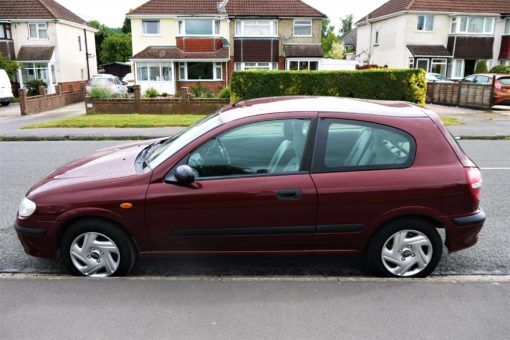
Our Europe road trip steed
Our Europe by car itinerary
To start with, here’s a look at what our road trip around Europe from UK looked like:
- Dover to Calais, France
- Amsterdam, the Netherlands
- Lille and Poitiers, France
- Coimbra, Portugal
- Lagos, Portugal
- Lisbon , Portugal
- Porto, Portugal
- Saint-Pierre-d’Irrube and Saone-et-Loire, France
- Halblech, Germany
- Ljubljana, Slovenia
- Prague , Czech Republic
When we leave Prague in mid-December, we’ll travel to Cologne in Germany for a few days and stop briefly in Bruges, Belgium, before we catch the ferry back to Dover.
Why travel Europe by car?
You can’t beat the flexibility of travelling through Europe by car. Although it was certainly cheaper hopping around Europe by bus last year, we love the independence and flexibility of having our own steed. This has allowed us to tailor our route, detouring to Amsterdam to visit a friend and stopping off at Neuschwanstein Castle on our way through Germany.
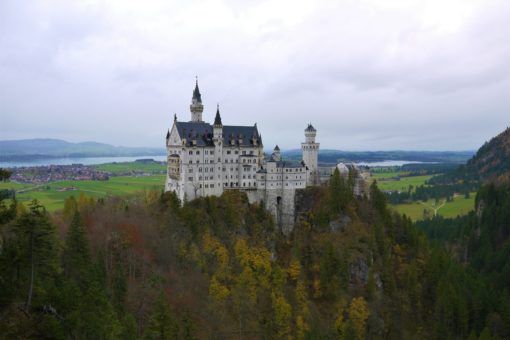
Neuschwanstein Castle
While some of our drives have been epic, nine-hour affairs, at least we have our own space in the car to listen to music, podcasts or chat and we can stop when we like for toilet and food breaks, unlike some of the torturous bus trips we’ve taken in Asia . Even when we’re based in one place, we can easily take day trips such as to Lake Bled in Slovenia and the Passadicos do Paiva in Portugal.
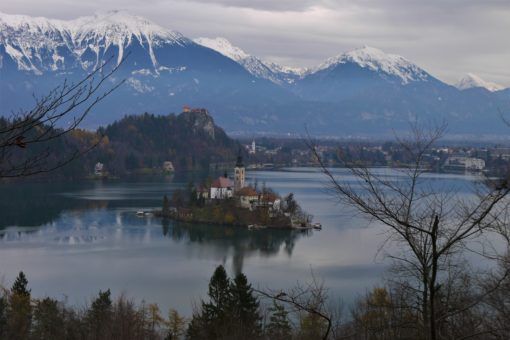
A car also makes things easier for stocking up at the supermarket and we’ve been able to curb our accommodation costs by staying outside of expensive areas such as big cities on our journey. For instance, we paid as little as £20 per night while travelling across France by staying in rural farmhouses and suburban areas.
Driving around Europe, tips and things to consider
Our epic journey has taught us plenty about road-tripping in Europe. If you’re thinking of taking a similar trip, here are some things to consider.
Ferry crossings – since our road trip begins and ends in the UK, we booked ferry crossings between Dover and Calais. Booking as far in advance as possible will give you cheaper rates, so take a look at various ferry sites to compare prices and plan your route, companies like Ok Ferry operate across Europe and the Mediterranean, even as far as Morocco! Try to book as soon as you have your travel dates.
Car insurance for driving abroad and breakdown cover – don’t go anywhere without arranging car insurance and make sure you add EU breakdown cover. We shopped around and got an annual insurance policy from Admiral for £573 and 90-day breakdown cover from Driver Guardian for £79. Be aware that many UK car insurance companies only allow you to travel abroad for 90 days (which is why we timed our trip to this exact length), a policy with a longer allowance will cost substantially more.
Travel insurance – even if you’re an EU resident with a European Health Insurance Card, it’s still essential that you take out travel insurance too. In the past, we’ve used companies like Globelink, Explorer and World Nomads , but for this trip we found a cheap three-month policy from OUL Direct for £51.98 for both of us.
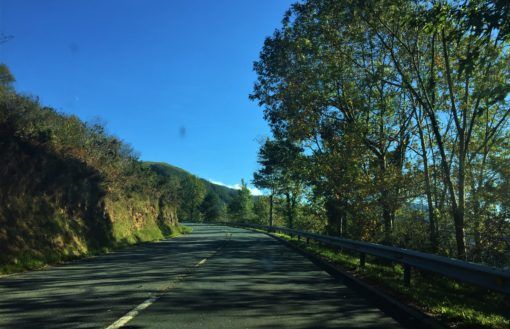
On the road in Portugal
European driving regulations – make sure to research what kind of driving rules and regulations there are for the countries you plan to travel through in Europe. For example, we had to buy a warning triangle and reflective vest, as well as a breathalyser kit and even a fire extinguisher to comply with regulations. The AA is useful for researching this information.
European vignettes – some countries require you to buy a vignette for driving through Europe. We have three vignette stickers on the car at the moment for the Czech Republic, Austria and Slovenia and we had to buy one online for Portugal. These last varying amounts of time and have cost us from £7.95 to £15.50. We’re planning a separate post to about this that’ll break down the European vignette rules and costs.
Driving UK car in Europe: tolls – in addition to vignettes, you’ll also have to pay tolls along the way, which can really bump up your road trip expenses. We try to avoid toll roads, which can sometimes add hours onto our journey, but there are times when we suck up the costs to get to our destination faster. For example, on a drive from Porto across to Biarritz, we must have spent £50 on tolls, making it our most expensive day of driving yet.
Fuel costs – don’t forget about all the fuel you’ll need to buy too. We’re lucky that our car is pretty economical, but we’ve still spent around £500 on fuel so far. Try to fill up as much as possible in cheaper countries, we found Spain was super-cheap while petrol prices in Portugal were up to £1.40 per litre.
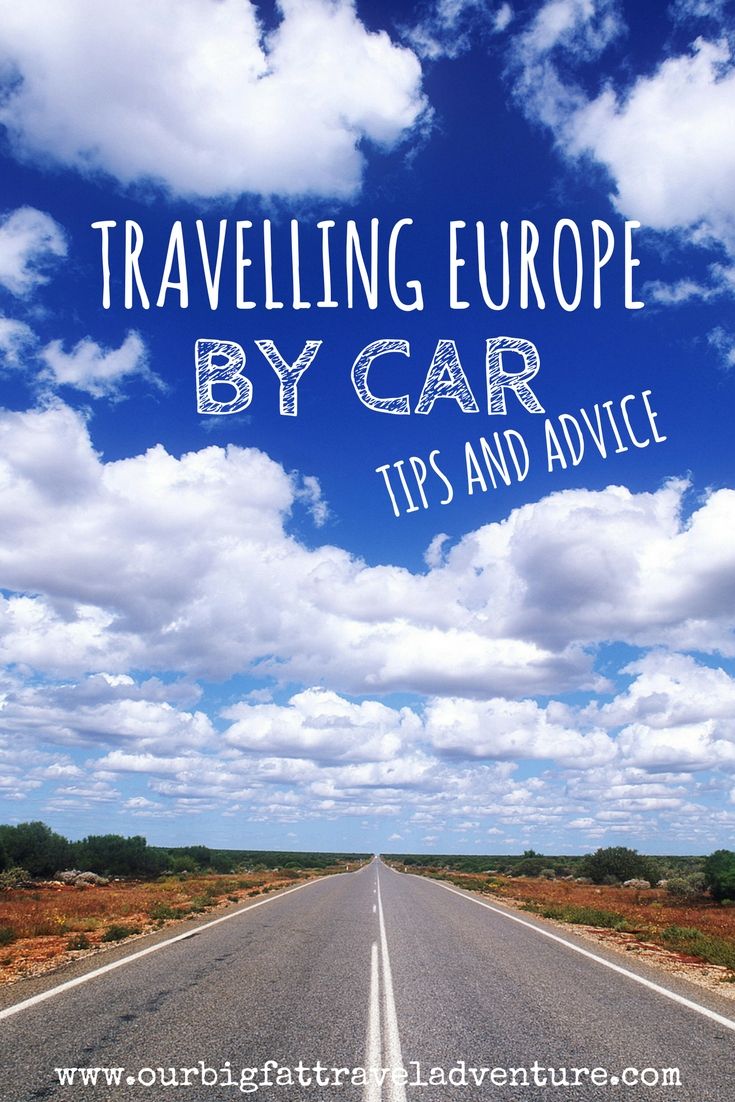
Pin Me For Later!
Pla nning a route – we used Google Maps to plan European road trip routes, avoid tolls and estimate journey times. We don’t have a sat nav but used the maps app on our iPhone for directions. Also, try using a Google Maps radius tool so you can easily estimate the distance of your destination and plan some stops along the way.
Staying sane on long journeys – we’ve had 10-hour days and I’m not a very confident behind the wheel, so Andrew ends up doing the lion’s share of the driving. We’ve learnt that it’s essential to make sure you have snacks, drinks and wet wipes to hand, as well as change for toll booths and your passport in case of border checks. We try to stop for short breaks every couple of hours, create music playlists (including an awesome three-hour Christmas mix!) and download plenty of podcasts to keep us entertained along the way.
What are your top tips for traveling Europe by car or road tripping elsewhere in the world?
12 Comments
Ah! The car! We didn’t get to see it while you were in Porto so now I know. Very cute little steed indeed. Traveling by car makes a lot of sense and when we’re at home in the USA road trips are my favorite way to travel. You can see and do so much more when you’re in a car.
But, to date, we haven’t taken on traveling by car while here in Europe. There’s just too many details we don’t know about, or I suppose even want to take on learning about. And, of the course, the language barrier when it comes to road signs.
I admire your courage to take it on. There are definitely perks to traveling by car.
Hi Patti, yep, the car has been really handy. To be honest, if I had to drive on my own I wouldn’t do it, but Andrew’s a really confident driver so it works fine 🙂
We did this when we travelled from Frankfurt all the way to Brussels! It was definitely a different experience but really cool! We also appreciated the fact that big cities were within hours of each other unlike in Canada 😛
Andrew Wyatt
Thanks Derek, sounds like a great road trip!
Your tips very useful for Europe traveler. Europe is awesome place for roam. I love the Europe. I read your blog and really happy with your information on Europe travelling. Thanks for such post and please keep it up.
Thanks for reading – we love road-tripping in Europe 🙂
Wonderful Post.
Thanks for sharing such an amazing post with us. These tips are really beneficial for every traveler.
Keep sharing…!!!
No worries, thanks for reading 🙂
Kanika Bakshi
Thanks for sharing your tips, Europe is such a wonderful place one can visit I love Europe and I like to visit Europe with my family I will surely share this article with my friends keep posting thanks.
Amanda Gregory
Great info and tips thank you. We are driving to zante greece over December with van and trailer. Looking forward to it esp the scenery. Drive safe x
Thanks Amanda, hope you have (or are having) a great journey! 🙂
Save my name, email, and website in this browser for the next time I comment.
This site uses Akismet to reduce spam. Learn how your comment data is processed .

Driving in Europe – Everything You Need to Know
This post may contain affiliate links, from which we earn an income.
Road tripping in Europe is by far the best way to see this diverse and historic continent. You get to travel at your own pace and see incredible landscapes and breathtaking sights that you would miss if travelling by train or plane.
Whether you’re planning on taking your own car, or you’re flying in and renting a car, driving on the continent may not be quite the same as it is at home. European driving regulations and driving standards can vary greatly across Europe and you should be prepared before you take to the wheel for the first time.
We’ve been driving through Europe for over 20 years so have a lot of practical real-world advice and travel tips to help you drive safely with confidence. You can find all of our tips for driving in Europe here.
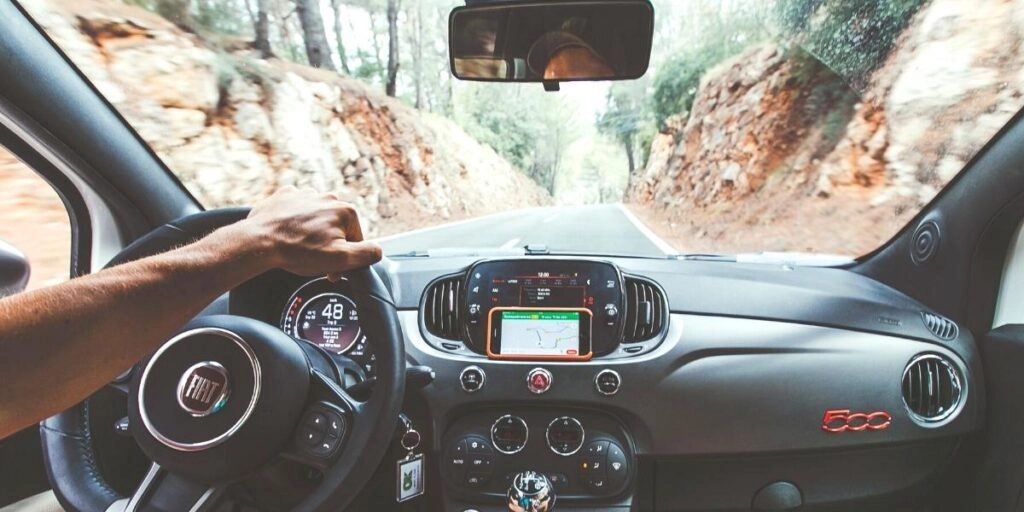
Where is Europe?
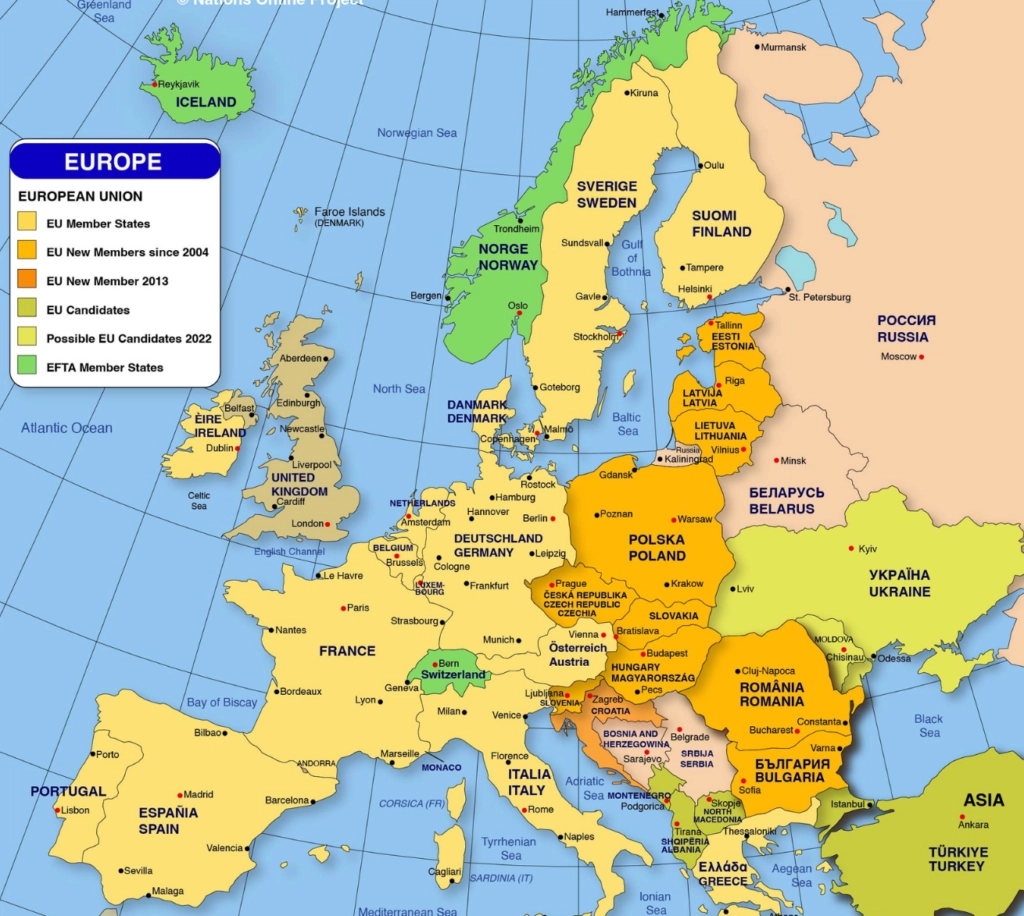
There is the continent of Europe and then there is the European Union , or EU, and the European Free Trade Area or EFTA. Together, the EU and EFTA make up the European Economic Area , or EEA.
Member states of the EU and EFTA, which are govered by the European Commission, share many common laws and rules about driving.
There are also countries which are geographically in the continent of Europe, but not in the EU or EFTA. If you’re heading to European countries outside of the EU and EFTA, check the driving rules and regulations before you cross the border.
International Driving Permits
Do I need an international drivers permit? Well, you might…
An International Driving Permit is basically an official translation of your driving licence into a number of other languages, enabling authorities in foreign countries to establish your right to drive. The IDP is a not a replacement for your license or a driving licence exchange, but a supplement to be carried alongside your original driving licence.
If you’re a Brit driving abroad on a UK photocard licence , this allows you to drive in all EU countries without an IDP, because an agreement was made between the UK and EU about driving in Europe after Brexit. However, if you only have a paper driving licence or a licence issued in Gibraltar, Guernsey, Jersey or the Isle of Man then you will need an IDP.
If you’re planning to visit non-EU European countries when you drive abroad, you can check whether you need an International Driving Permit here .
Driving in Europe as an American, and for those traveling from elsewhere and planning on hiring a vehicle, you are likely to need an IDP throughout Europe and the United Kingdom, and you’ll definitely need one if your licence is not in the Latin alphabet.
We’ve been driving our own vehicles in Europe, Morocco and the Caucuses for twenty years and have never been asked for an International Driving License. However, it would be totally devastating to arrive at your car rental depot and find you can’t take the car away without an IDP.
Once you’ve left your home country, it can be hard to get an official IDP. The American Automobile Association quote five to seven weeks delivery for an overseas IDP, and Brit’s can only get one in person from the Post Office ! IDP’s are not expensive – it’s far better to go prepared.
RELATED POST: How to Plan a Road Trip – Your Complete Guide
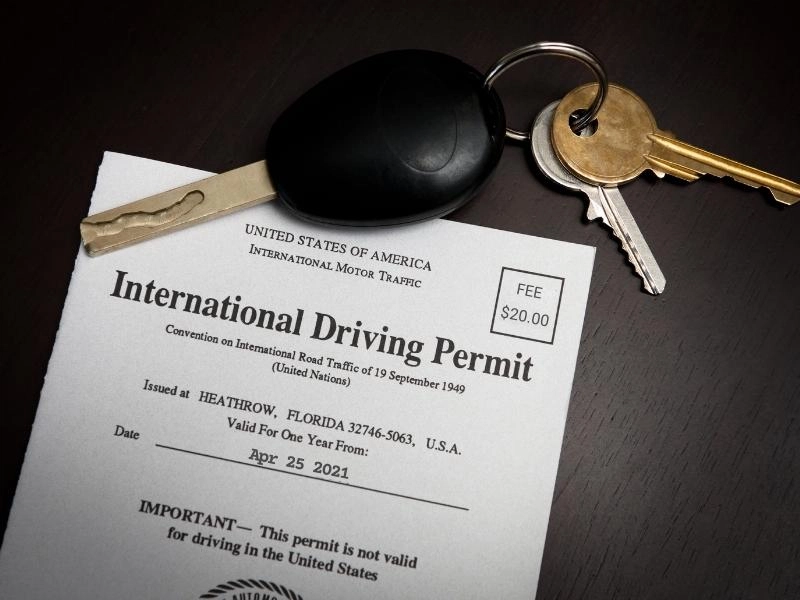
Get a Credit Card
All car rental companies will ask for a credit card (and won’t accept debit cards or cash) for the holding deposit for your vehicle when you collect. This money is taken as security to protect the rental supplier in case of any damage to the vehicle, but the money is not actually debited from your account, just blocked so you can’t spend it.
If you’re a US or Canadian resident , your credit card might provide damage and theft cover for hire cars. If you decide to rely on that cover, you can book a basic or standard package that doesn’t include damage and theft cover.
Even if you already have a credit card, make sure your card is accepted abroad and doesn’t charge foreign transaction fees. We think Wise is one of the best borderless multi-currency debit cards. Use it in 175 countries with the real exchange rate and no markups or sneaky transaction fees.
RELATED POST: Road Trip on a Budget: 36 Tips to Save Money in Europe

Be Aware of Schengen Rules
The Schengen Area is a zone where 26 European countries, through the Schengen Agreement, abolished their internal borders and allow the free and unrestricted movement of people.
If you’re planning a longer road trip, you need to know that most citizens from non-Schengen countries are only able to stay for 90 days in every 180 days in the Schengen Area.
The 90 in 180 day rule works on a rolling basis and it can be difficult to work out whether you are within the rules or not, especially if you have visited the Schengen area on several occasions in the preceding 180 days.
The key is to make your travel plans with flexibility and allow spare days in which you can move from country to country without penalty. Use this calculator to check that you are not going to overstay your welcome.
The UK did not sign up to the Schengen Agreement in 1985, but through its membership of the European Union, UK citizens enjoyed the right to freedom of movement throughout the EU. Sadly, since Brexit this is no more, and Brits must now follow the same restrictions as most citizens from the rest of the world.
From 2024, the EU will introduce the ETIAS (European Travel Information and Authorisation System), which will be an additional entry requirement for visa-exempt travellers and will involve the traveller registering their details online before travelling, mainly for security purposes.
RELATED POST: Motorhoming in Europe After Brexit
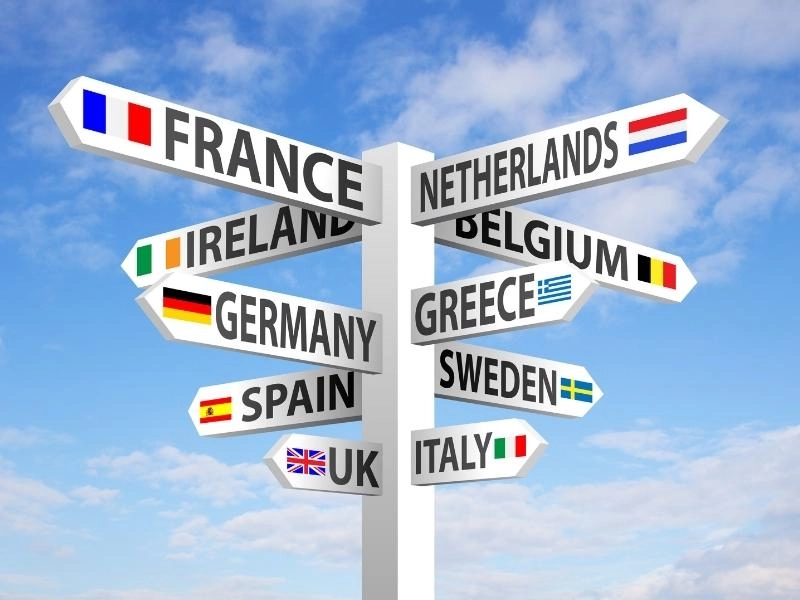
Get to Grips with Car Rentals in Europe
Use a comparison site or car hire aggregator like Rentalcars.com , which has massive purchasing power enabling them to secure the best rental prices in many different countries. Whenever we travel to a country without our own transport, we book with Rentalcars.com because they are always best on price and offer a solid and reliable service.
The minimum age to rent a car in Europe is 18, and renters must have passed a driving test to obtain a full driving licence.
Plan carefully and rent a car for only as long as you need it, to avoid early return penalties. If you’re on a budget, avoid hefty one-way drop-off charges and plan a circular itinerary.
Book as far in advance as possible. The earlier you book, the better the deal . Some comapnies will give you the option to pay on collection, avoiding cancellation fees, although you do pay more for this.
Non-EU residents can take out a short-term lease for driving trips longer than 21 days. If you’re renting your car in Belgium, France , Germany , Italy , Netherlands, Spain or Portugal then a short term lease with Auto Europe may be more cost effective than regular car rental.
Look to rent a small car . Fuel is super expensive in Europe, city streets and country lanes are narrow, and parking can be limited. The smaller the car, the less fuel you’ll need and the easier it will be to get around. Trust me on this!
If you’ve only ever driven an automatic car, then don’t book a stick for your first rental in Europe ! An automatic car will be more expensive to rent than a manual car, but it will save you a world of hurt, I promise!
It is possible to rent a hire car in the EU and drive it to non-EU countries, but do let your hire company know this is your plan so they can ensure you have the correct paperwork. Expect there to be an extra charge for this.
Consider renting a campervan for your trip . It’s a wonderful way to travel around Europe and you won’t need to book a hotel! Our recommended providers are Indie Campers , who have rental depots in sixteen European countries.
RELATED POST: 19 Helpful Long Distance Driving Tips
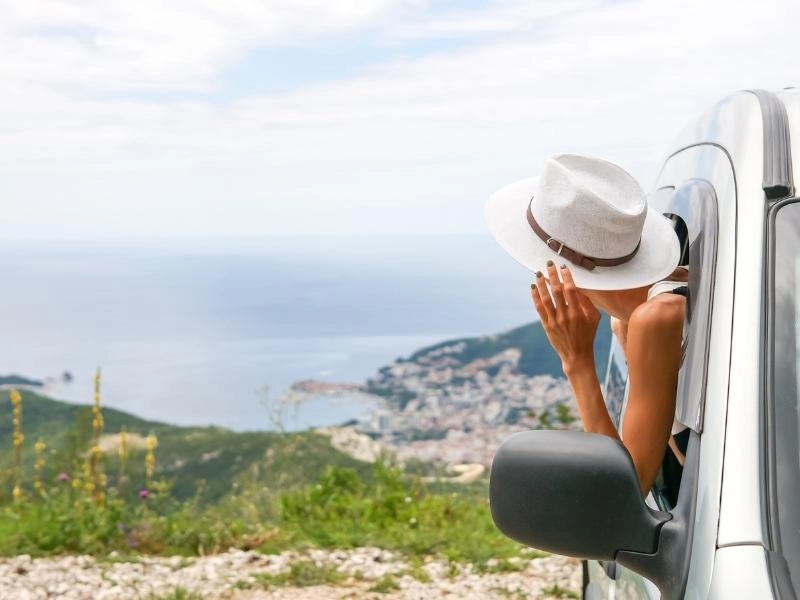
Stick to the Speed Limit
There are general speed limits across Europe , which range from 120 to 130 km/h on motorways, and from 80 to 90 km/h on country roads. You can find a list of the most up to date speed limits here .
If you use a GPS device or sat nav, which you can usually add to your car hire, it will inform you of speed limits, as well as update you with traffic news, and let you know when you’ve crossed a border.
Speed cameras are common in Europe , and may be fixed or mobile. Both types of speed cameras can be visible or hidden, and it’s easy to be caught out, even if you’re over the limit by just a few kilometers an hour.
Your sat nav may be programmed to alert you to speed cameras, and smart navigation apps like Waze also do this. However, this is not legal in all European countiries, so check first. Or maybe just stick to the speed limit 🙂
Don’t think that because you’re from another country you can avoid speeding fines. If your car is registered in the United Kingdom or enywhere in Europe , there is a data sharing protocol in place which means you’ll be tracked down in your home country.
If you’re from anywhere else in the world and hiring a car, any speeding fines will end up back with the car hire company, who will simply deduct the fine from the credit card they hold on file. There really is no escape!
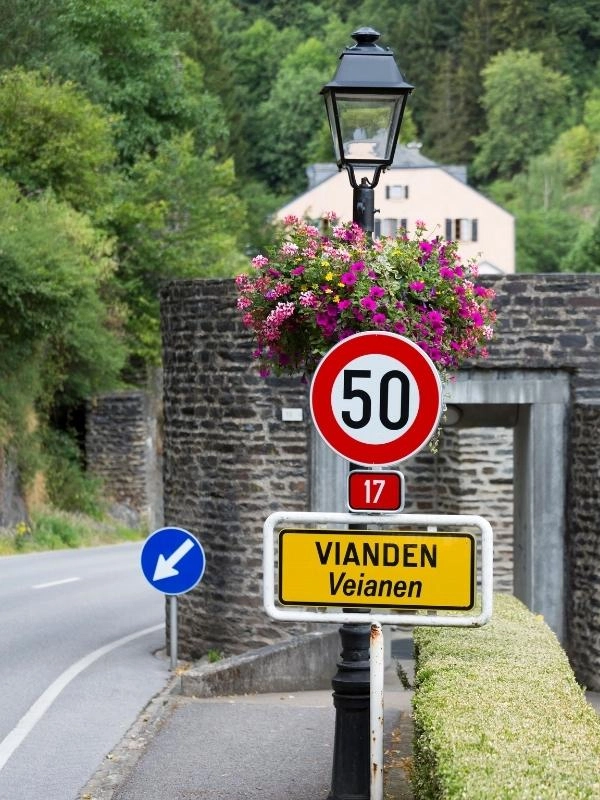
Understand Europe’s Toll Roads
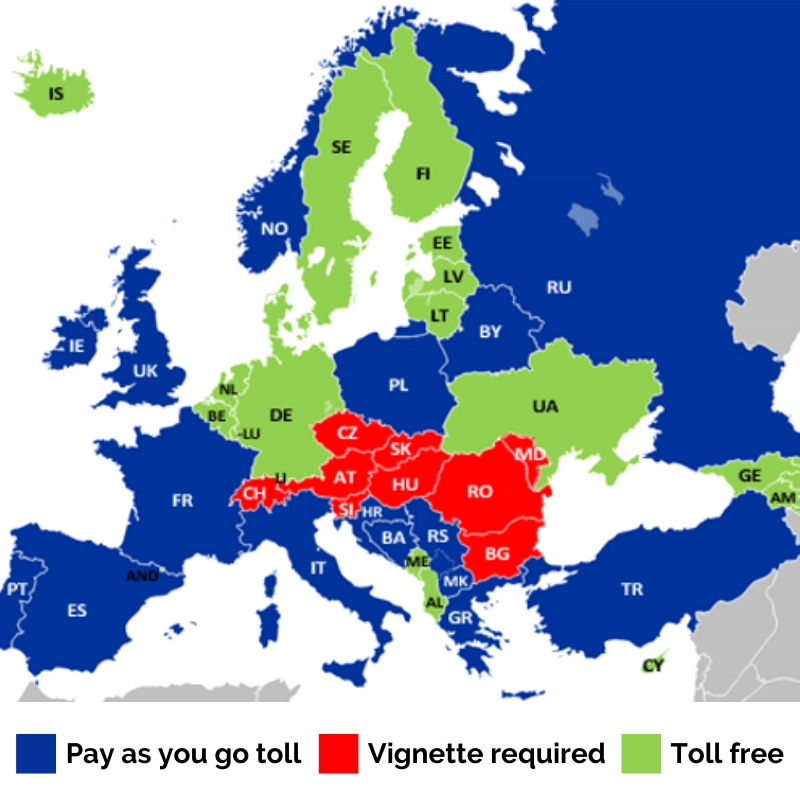
Tolls on motorways are common across Europe , and if you’re looking to get somewhere quickly and easily, taking the toll road is often the most cost effective option.
With pay as you go tolls, you can pay with cash or by card at the toll booth, or opt for an electronic tag like an Emovis Tag , which is linked to your credit card.
Where a vignette (physical sticker) is required, you must order this in advance or stop at the first fuel station on the motorway as soon as you enter the country and buy one there. Vignettes are required in Switzerland , Austria , Slovenia, Montenegro, Romania, Czech Republic, Bulgaria, Slovankia, Hungary, Moldova and Belarus.
In our experience, Norway and Portugal have the most complex toll systems, with different toll road operators requiring different processes. Find information on Norwegian tolls here and Portuguese tolls here .
If you have time, setting your sat nav to avoid toll roads often results in incredibly scenic drives, and trips to places you may have passed by otherwise. But, what you save in tolls, you’ll probably spend in fuel!
Be Aware of Low Emissions Zones
Low Emission Zones (LEZs) are areas, usually in towns and cities, where the most polluting vehicles are regulated and either cannot enter the area or have to pay to enter the low emission zone. Low Emission Zones are also known as:
- Umweltzonen in Germany
- Milieuzones in Netherlands
- ZCR or Zone à Circulation Restreinte in France
- Lage-emissiezone in Belgium
- Miljøzone in Denmark
- Miljözon in Sweden
- Lavutslippssone in Norway
- Alacsony Kibocsátási Övezet in Hungary
- ZTL Ambiente in Italy
- Zona de Bajas Emisiones in Spain
Vehicle emissions are classified in Europe by Euro Standards, which determine and categorise a vehicle’s emmissions to determine it’s pollutant levels. Before you travel into a low emission zone, you first need to find out if your vehicle is affected – this will depend on the vehcile type, age and fuel.
Each county has different regulations . Some require you to pay to enter online, some ask you to buy a physical vignette or sticker, some don’t allow you to enter during specific times of the week and some only allow Euro 6 (the least polluting) vehicles to enter. It’s complicated!
Check the requirements of the country you’re visting here , and if you’re renting a car, ask the car rental company about the classification of the vehicle. Better still, base yourself outside LEZ zones and use public transport.
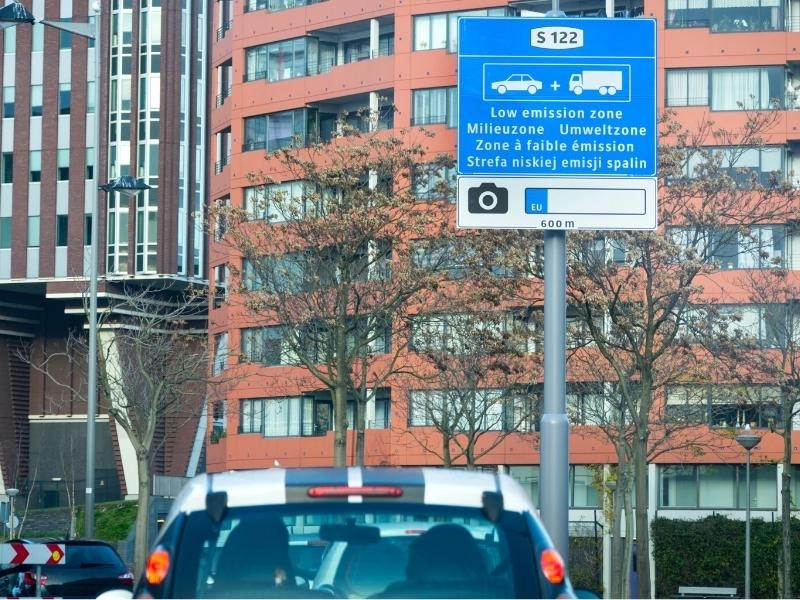
Find out everything you need to know about SIM cards for long-term travel in Europe , including portable WiFi devices, eSIM cards, local SIM cards and monthly contracts which don’t have a data cap!
Work Out Urban Access Regulations
Some cities and towns have regulations or restrictions for vehicles going into all or part of their area to improve issues around congestion or how people experience the city, as well as air quality.
These types of access regulations include charging for access to road space, sometimes called urban road tolls, and by key Access Regulation Schemes, also known as key-ARS. These may include the requirement for a permit to drive into an area, access only being allowed at certain times of the day, or increased restrictions for non-electric vehicles.
These are also known as Traffic Restrictions, Limited Traffic Zones, Access Restrictions, Permit Schemes or in Italy ZTLs (Zona a Traffico Limitato). They can be enforced by cameras, physical barriers, police or local authority officers. Find out more here .
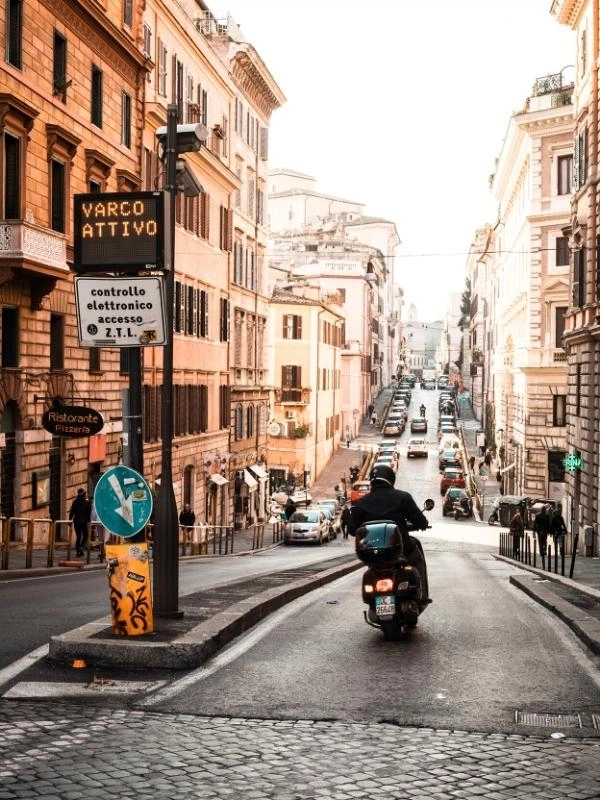
Drive on the Right …Mostly
Almost all of Europe and the EU drive on the right , the same side as the USA, China, Russia and Canada. If you’re wondering how to drive on the right in Europe, it’s just like it is elsewhere, but visitors from over the pond might find the roads a lot narrower!
If you’re visiting the United Kingdom , Republic of Ireland , Malta or Cyprus , then you need to drive on the left! If you hire a car in any of these countries, it will always be right hand drive, meaning the steering wheel is on the right hand side of the car. This makes it easy to navigate and gives good road visibility.
RELATED POST: Podcasts for Road Trips: 26 to Keep You Entertained
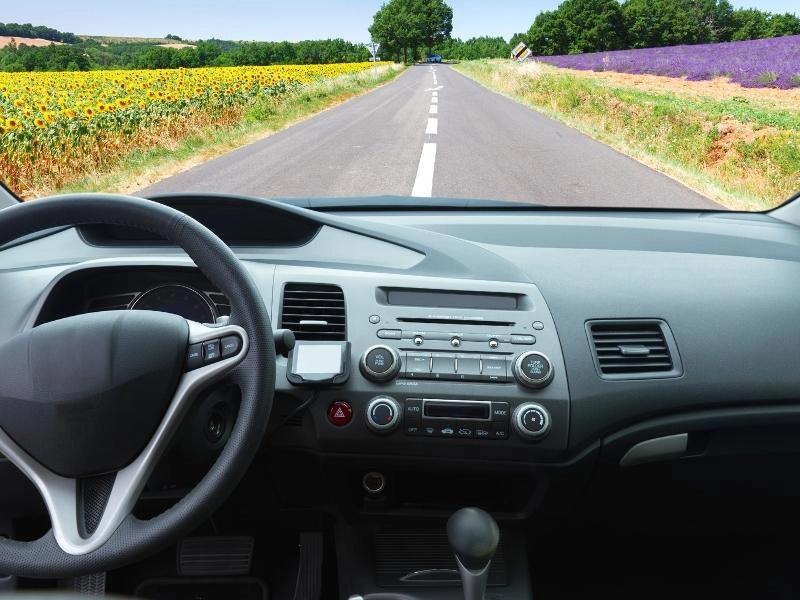
And Talking of Right…
There is no right turn at traffic lights like the is in the United States . While traffic lights have the same colors of green, amber and red, the rules are a little different in Europe, and even if there is no oncoming traffic, you must wait for the light to turn green.
Unless you’re in Germany or Greece ! In Germany you can turn right on a red if there is a seperate green right arrow. In Greece , it’s possible to turn right on a red if there is a seperate flashing orange right turn signal and there is no oncoming traffic.
Some countries also locate their traffic lights at the side of the road, although overhead arrangements are becoming more common. Make sure to stop with enough distance between you and the lights, so you can see them clearly.
RELATED POST: Driving to Italy from UK – Routes & Tips
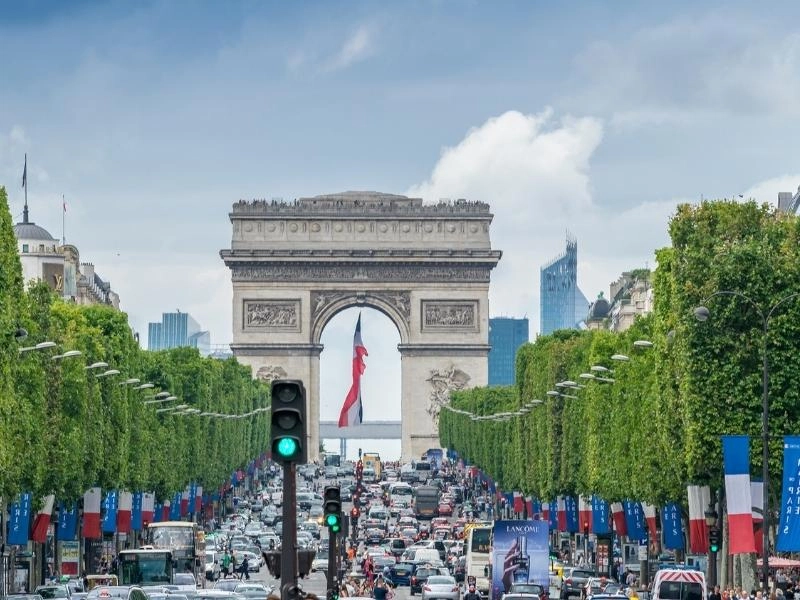
Other European Driving Rules
Under EU law, seat belts must be used in all vehicles . Children over 1.35 m can use an adult seat belt. Those under 1.35m must use equipment appropriate to their size and weight when travelling in a car, like a car seat or booster cushion.
It is illegal to use your phone at the wheel in all EU and European countries and in France and Spain , you may not even use it as a satellite navigation device or with hands-free equipment.
Most EU countries have different alcohol limits set in their drink driving legislation which may be different or lower to your home country. It’s best not to drink any alcohol if you’re planning on driving anywhere afterwards.
Most European countries, especially those with mountains , have rules about snow tyres and snow chains. Make sure you check these rules if you’re taking a road trip of Europe in colder weather.
Member states of the European Union have a standardised set of road signs, but they may differ from your home country. Check what the main EU road signs look like here .
In many European countries, certain discourteous behaviors, such as rude gestures in Germany and honking the horn without cause in residential areas in Spain and Italy are offernces for which you can be fined!
Make sure you’re aware of the specific European driving laws for each country that you intend to visit. You can find more information about country specific rules of the road here .
RELATED POST: Driving from UK to Spain – Routes & Tips
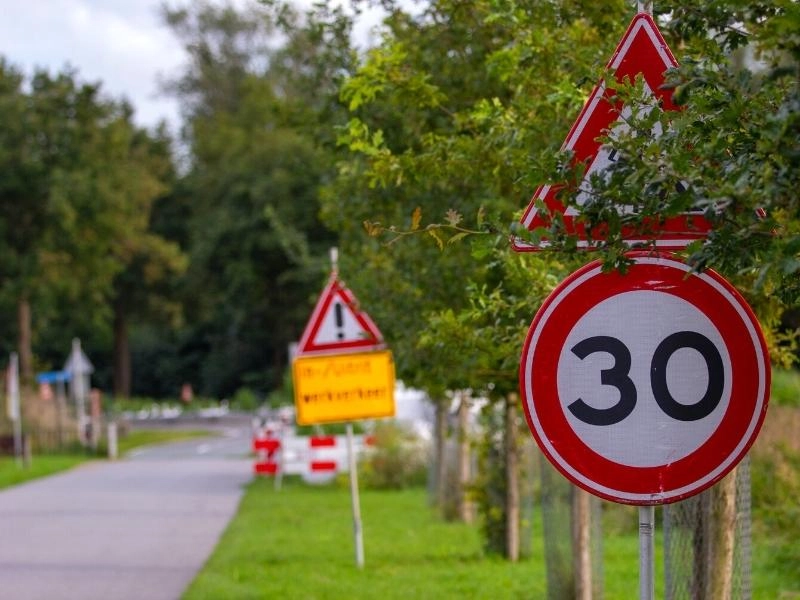
Avoid the Cities
As road trippers, who’ve accidentally driven an overland truck through a few European cities , we would encourage you not to drive into the centre of any city – it can be stressful, may lead to additional costs and is rarely the best way to get to where you’re going. Particular cities to avoid at all costs are Paris , Naples, Rome , Palermo and Athens .
If you want to visit European cities – and why wouldn’t you? – head into the centre and get your city fix before collecting your hire car, or arrange to park and stay outside the city and use public transport, thus avoiding any restricted zones.
All our one day city itineraries include hotels outside any LEZ, and information about how to access the city.
RELATED POST: Driving in Italy – Everything You Need to Know
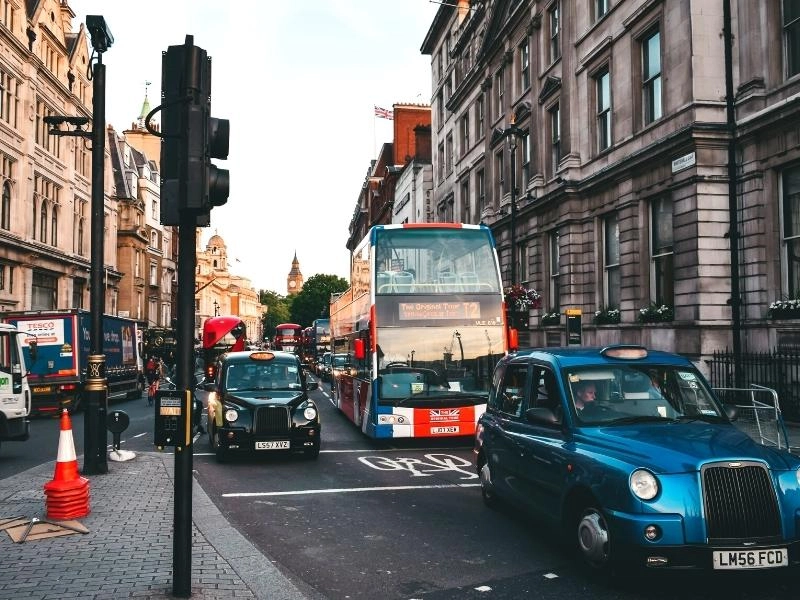
Not All European Roads Are Made Equal
Europe undoubtedly has some of the best driving roads in the world. Long stretches of beautiful tarmac sweeping through dramatic landscapes, and switchback roads topping high mountain passes – think the Grossglockner High Alpine Road in Austria and the Route Napoleon in France , or the infamous Amalfi Coast Road or Vall D’Orcia drive in Italy .
However, some European countries have less money to invest in their roads, and generally the further east you go, the longer the roads have to wait for repair. Large pot holes, badly laid tarmac, lack or road marking, and poor quality of repairs can make driving challenging, even on motorways.
Take it easy until you’ve got the measure of your surroundings, and leave enough room between your car and the vehicle in front, so you can avoid the worst bits!
RELATED POST: Why We Think These Are The Best Driving Roads in Europe
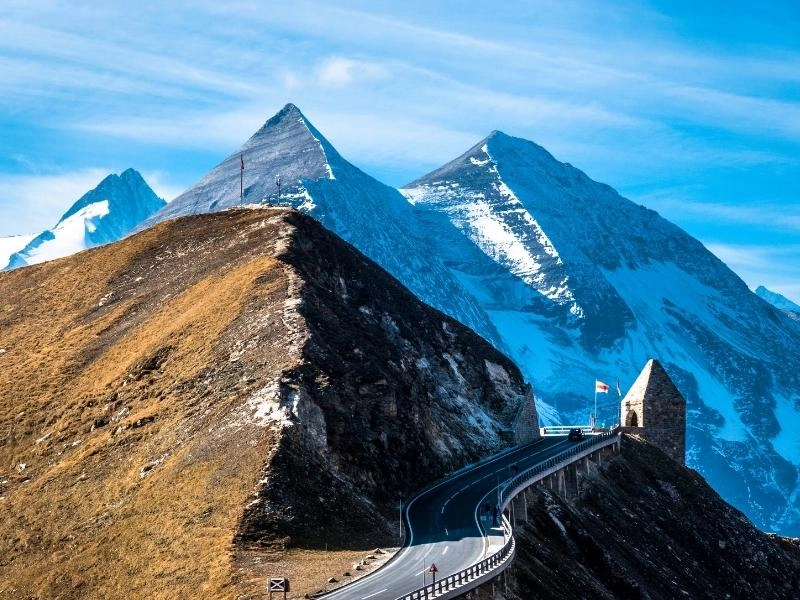
Watch the Locals
One of our top driving in Europe tips! Driving standards across Europe vary, from the considerate and patient Norwegians , to the fast but competent Germans , and the fiesty and loud Italians ! Each country has it’s own distinct bad habits, so watch the locals and take it slowly until you’re comfrotable with what to expect.
In Greece and Italy , overtaking on bends, at the brow of a hill and generally where visibility is poor, is very common. Other drivers tend to slow down to ensure there is room for all the vehicles on the road, but it can be very disconcerting the first few times it happens.
In France , other drivers will sit very close to your bumper waiting for the opportunity to overtake. They will also have their indicator flashing, to let you know they want to get past.
In Italy , the drivers are incredibly impatient and will honk their horns at the drop of a hat. They don’t give an inch if you’re trying to enter the traffic flow, so you have to do as they do, and just go when even the smallest opportunity presents itself.
Even though speed is not limited on 70% of the German autobahn network, the roads are often so full that a de facto speed limit has been established. But if you do get an empty stretch, observe any signage before you put your foot down!
Regardless of the driving laws in each country, you’ll always see locals breaking them. Using phones at the wheel, not wearing helmets on motorbikes and blatently ignoring the speed limits are common. Don’t get sucked in to thinking this is OK – police in foreign countries seem to havea lot less less tolerence for tourists breaking the rules!
RELATED POST: Driving in Norway – All You Need to Know
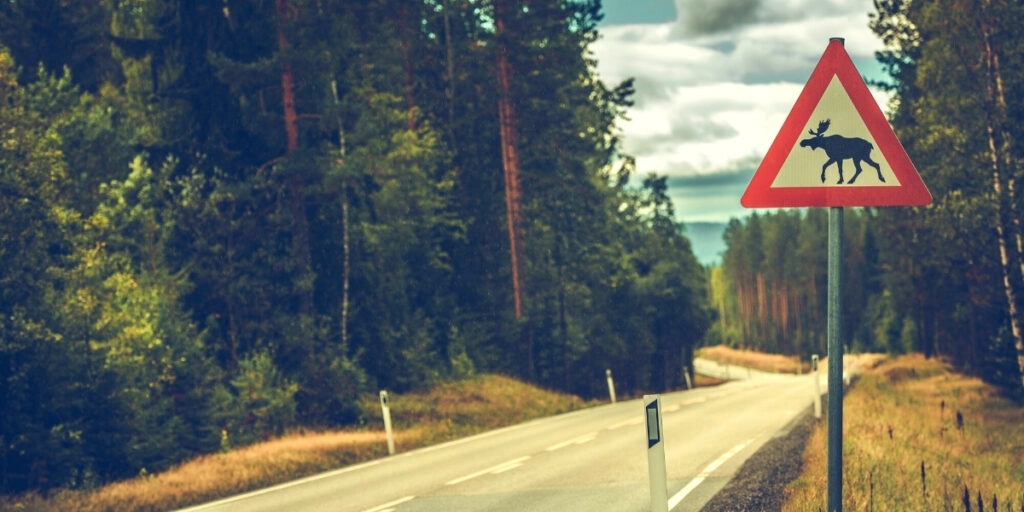
Carry the Right Kit
As a rule you should carry the following driving kit for Europe;
- At least one warning triangle.
- A high visibility vest for the driver and all passengers.
- A first aid kit.
- A spare tyre, the means to repair a flat, or have a run flat system.
- A fire extinguisher.
- A good quality torch.
- Set of jump leads.
- Your vehcile must have a county identifier sticker or number plate. All hire cars will display the Euro symbol on on the number plate. For cars registered in the UK , this must be a UK and not a GB sticker.
- Your vehicle’s headlights must be adapted for driving on the right, unless you’re in the UK , Republic of Ireland , Malta or Cyprus , and then they must be adapted for driving on the left.
Surprisingly, it is not mandatory to carry these items in all countries – you can find a comprehensive list here . If you’re renting a vehicle, it will be equipped with the basics that you need in the event of an accident or emergency.
RELATED POST: The Best Road Trip Gadgets For An Easy Trip
THE ULTIMATE ROAD TRIP CHECKLISTS
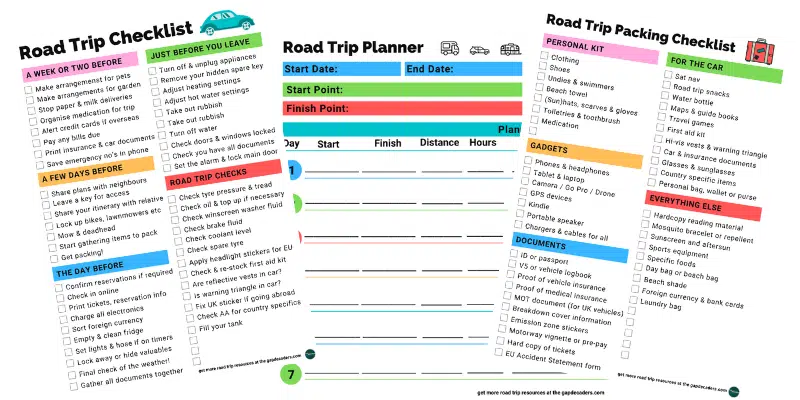
Take the Right Documents
What documents do I need to drive in Europe? The following are mandatory when driving in the EU but if you’re travelling to more far-flung parts of Europe like the Balkans , Turkey , and the Caucuses , you made need additional documentation, and should check specific entry requirements with your country’s government.
- Passport issued less than ten years before the date you enter the country (check the ‘date of issue’) and valid for at least 3 months after the day you plan to leave (check the ‘expiry date’).
- Driving Licences and International Driving Permits if applicable, for all drivers
- Visa if required. You can check whether you need a visa for Europe here .
- If you’re travelling in your own vehicle, the registration documents.
- If you’re travelling in your own vehicle, evidence of roadworthiness, such as an MOT (UK), TUV (Germany) or ITV (Spain), where applicable.
- Car rental documents if you’re hiring.
- Insurance policy documents.
RELATED POST: The Best Printable Driving in Europe Checklists
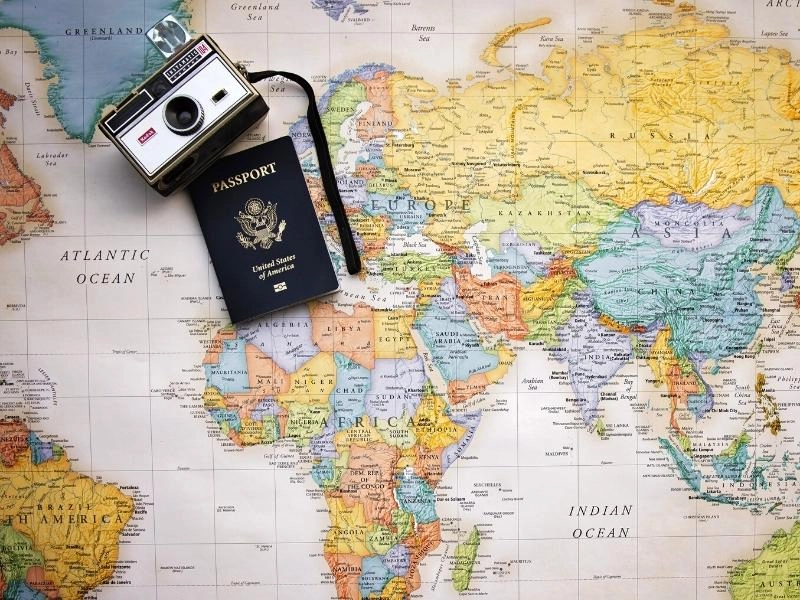
Car Insurance
It is a legal requirement across the EU and Europe to have a minimum of third party insurance for your vehicle . This means that if you are involved in an accident and others are injured or their property damaged, your motor insurance will cover their costs, but not yours.
In some counties on the edges of the continent, such as Morocco , the Balkans , Turkey and the Caucuses , it is difficult to find a provider to cover your own vehicle comprehensively. In this case, you can buy mandatory third party insurance either online from a broker, at the border, or in the country itself, for the period of your visit.
Travelers in UK registered vehicles are automatically covered in Europe on a third party basis, as part of the Brexit deal. If you wish to be covered on a comprehenive basis, you will need to request this from your insurer, usually at extra cost. You no longer need to carry an insurance green card in EU countries as proof of their insurance, but you must carry your regular insurance certificate.
Insurance is automatically included with rental vehciles, but you may wish to specify the levels and add excess cover when you book. Rental cars need three basic types of cover to be on the road – damage cover (collision damage waiver), theft cover (theft protection) and third-party cover (third-party liability). Take a deep breath, this next bit goes on a little….
Collision damage waiver almost always has an excess, which is the part you have to pay towards repairs if the bodywork gets damaged. The excess amount varies depending on where you rent, the rental company you use and the type of car, but it’s usually between €600/$620 and €3,500/$3640.
Theft protection protects you if the car is stolen or someone tries to steal it. Theft protection almost always comes with an excess similar to CDW, which is the part of the bill that you’d pay if the car was stolen, or damaged in an attempted theft.
Third-party liability pays out if you hurt anyone or damage anything with your hire car. It doesn’t cover the hire car itself, and there’s normally a limit to how much this insurance will pay out.
If you’re from Europe and most other parts of the world , damage, theft and third-party cover will usually be included in the price when you book the car. You can also choose to buy extra insurance to cover the excess, meaning you won’t pay anything towards repairs.
These extra insurances can be added at the time of booking, when you collect the car, or by using a third party to independently insure the excess, such as Insurance4CarHire , which is usually a much cheaper option.
Things are a little different for drivers from the US or Canada , because many drivers have credit cards that include rental car cover automatically, so they may be able to choose either a basic or standrad package which doesn’t provide damage or theft protection.
RELATED POST: Driving to France from UK: Absolutely Everything You Need to Know
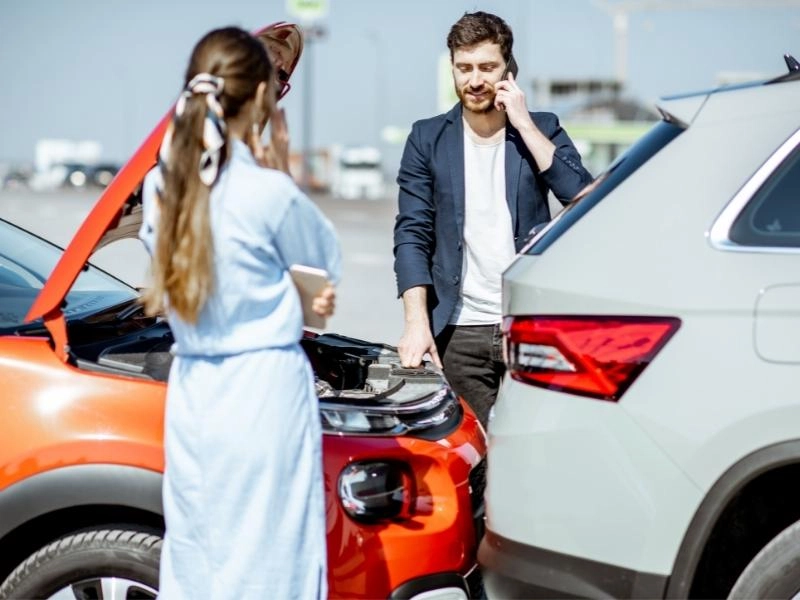
Travel & Medical Insurance
There is no legal requirement to have travel or medical insurance when you’re in Europe or the EU.
However, most EU countries do not provide free health cover , even in the event of an accident, and you could well be left with a large bill to cover any treatment. If you need to be medically evacuated back home, this can cost upward of €50,000/$52,000.
UK travelers can apply for a GHIC card, which covers them on a reciprocal basis within the EU and Switzerland, but not the EEA. The GHIC card is not a substitute for travel insurance and may not cover all health costs, and it never covers repatriation costs. You should make sure you have travel insurance as well as your GHIC card.
We highly recommend our favourite insurer, True Traveller , for UK travellers and travelers from America and the rest of the world . Regulated by Britain’s Financial Conduct Authority, they offer the best levels of Defaqto rated insurance at the keenest cost, and include lots of activities and gadget cover as standard, which is handy if your home insurance doesn’t cover expensive items like cameras and drones.
Both these insurers also cover you against cancellation, curtailment, travel delays, missed departures, lost baggage and personal liability.
RELATED POST: 150+ Road Trip Songs: Your Ultimate Driving Playlist
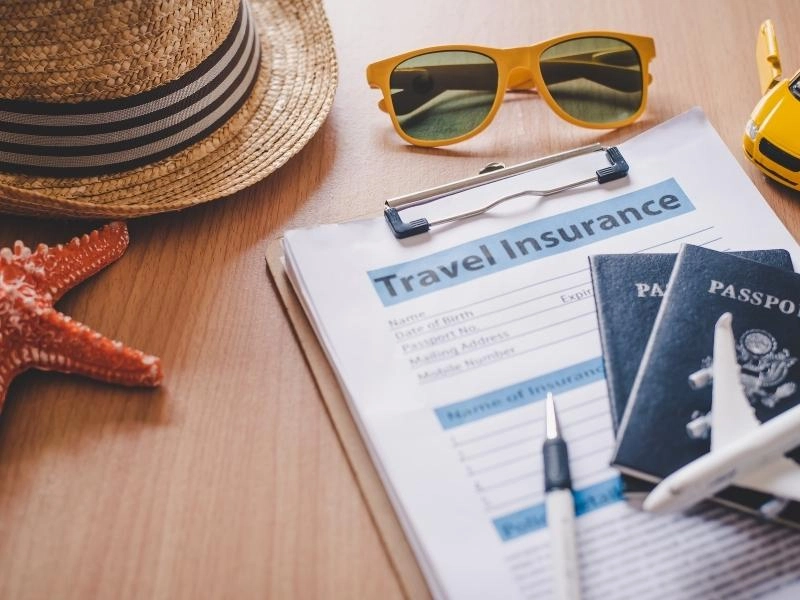
Car Breakdown Cover
Do you need breakdown cover? We all hope that when we hit the road, nothing will go wrong with the car. As veterans of several blowouts, flat tyres and on one memorable occasions, failed brakes, we know that preventative car care and preparation trumps hope every time!
Breaking down in a rental car is unusual , as the cars tend to be quite new and well-maintained. But, if it does happen and you haven’t added breakdown insurance to the rental, then you will have the pay the costs of roadside assistance, recovery and repairs, even though the rental company will make all the arrangements.
If you’re travelling in your own vehicle, we would strongly encourage you to book European breakdown insurance cover , at least for the duration of your trip, and have your vehicle serviced before setting off.
It’s worth knowing that French motorways are privately managed and you’re not allowed to request your own assistance company to attend to you if you break down. If you do break down, you should use the orange emergency telephones that are situated every 2km along French motorways to call the official breakdown service operating in that area.
You will be towed to a safe designated area where you can make onward arrangements for your own European breakdown cover provider to assist you, who should also cover the costs of any roadside recovery you have to pay.
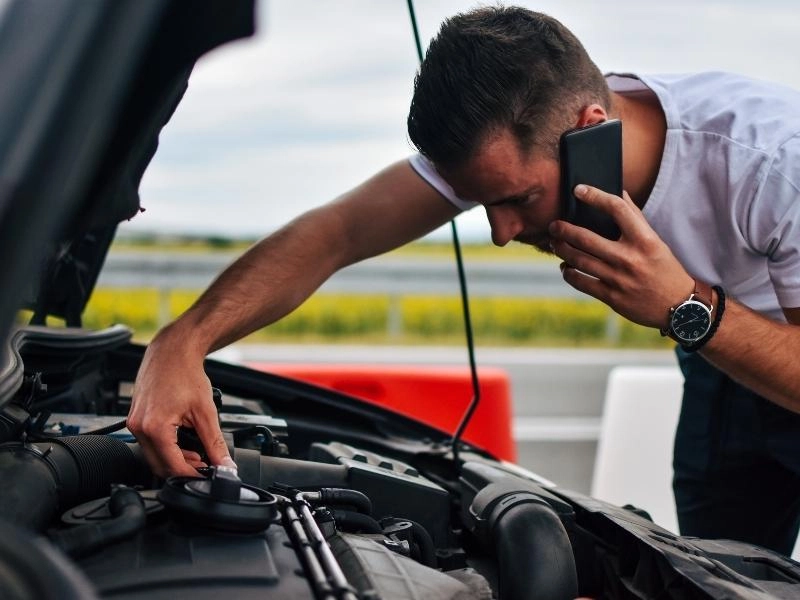
Fuel in Europe
The vast majority of filling stations in Europe are self service, and many are unmanned, meaning you need to use a self pay system on the forecourt.
In some countries, like Italy , there are two prices for fuel – one for self service and one for attendant service and the latter can be up to €0.15 per litre (or 57¢ per gallon) more expensive! Beware Italian garage attendants who usher unsuspecting road trippers to the more expensive pumps…
In Europe, gasoline is generally called benzine or sans plomb and in the UK it’s called unleaded petrol – the pump handle is almost always green .
Diesel is usually called diesel or gasoil , and the pump handle is always black . But, these names can change slightly by country, so if you’re unsure use a translate app to work it out.
Your hire car will have a label on the inside of the petrol cap advising you of the right fuel type, and in many cars you cannot fit an incorrect pump nozzle into the tank.
If you choose to hire an electric car, you can find a full list of charging points in Europe here .
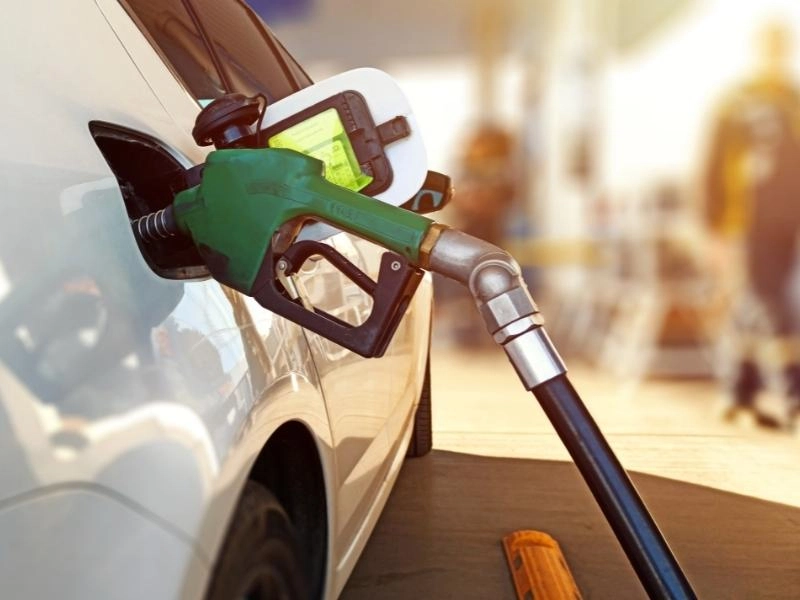
What to Do if an Accident Happens
Firstly, don’t panic . Make sure than no-one is hurt and everyone is safe. Ring the emergency services ( 112 in Europe and 999 in UK ) if you need an ambulance or the police.
Exchange information such as car registration numbers, names, addresses and telephone numbers, with the other party using an EU Accident Form which you can download in English here . Make a note of the following;
- Colour, make and model of the vehicles involved.
- Date and time of the accident.
- Description of the weather conditions, the state of the road and any street lighting.
- Any damage done to any vehicles and property.
- Any injuries sustained by drivers, passengers and pedestrians.
Take photographs if possible, and never admit liability .
If you’re in a rental car, let the rental company know, or your insurance provider if you’re driving your own vehicle.
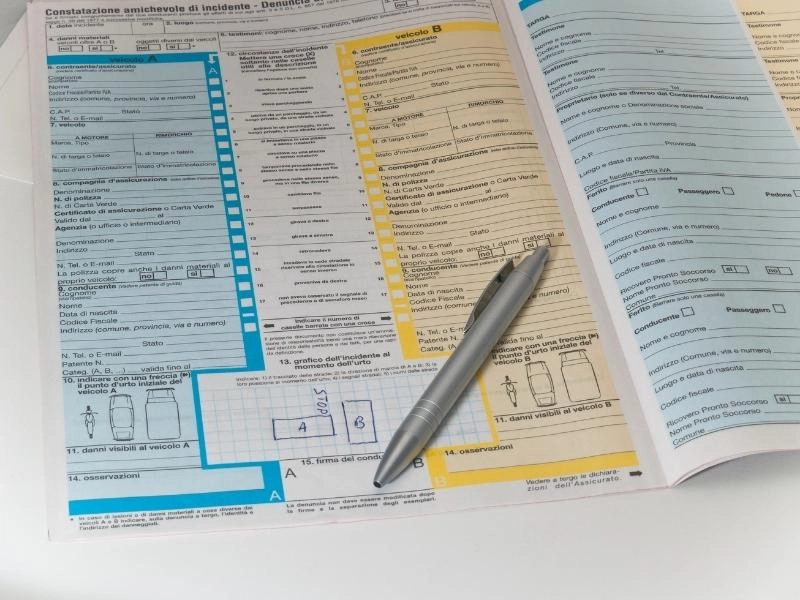
Pick the Right Destination!
Working out where to go when you road trip what is arguably the most amazing continent in the world is tough. If you’ve only got a couple of weeks, you’ll want to pack as much in as possible.
If you’re looking for ideas or inspiration, check out our collection of incredible road trips . From Spain to Greece via Norway , and everything in between, we’ve got the perfect Euro road trip for you.
This round up of our favourite European road trips is a great source for ideas, and will give you a flavour of what to expect in each country. Or check out our UK route planner , with a selection of amazing routes through England, Scotland , Wales and Northern Ireland.
If you love the open road and have wheels, we have the perfect road trip for you!
RELATED POST: 113 Road Trip Quotes to Inspire Your Next Trip
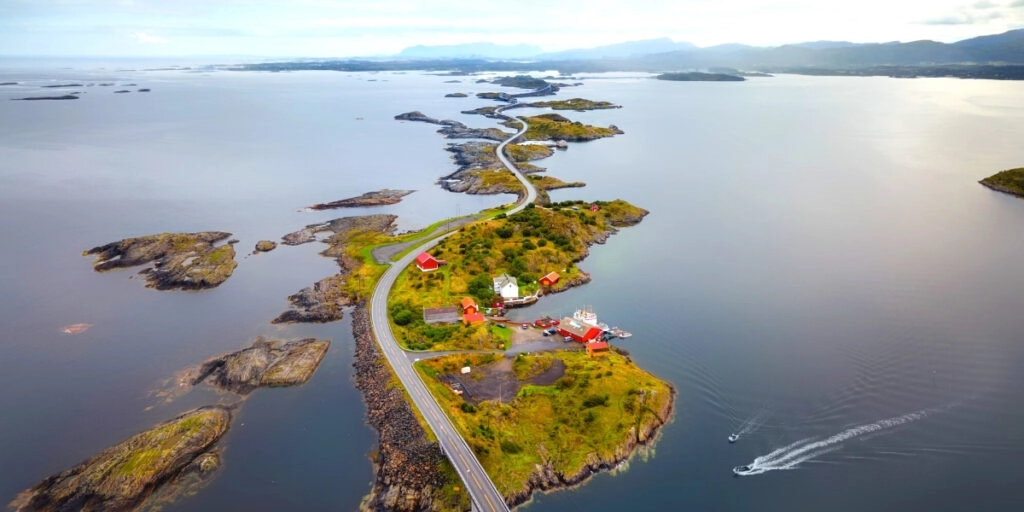
Are you looking for road trip inspiration? Check out these top posts…
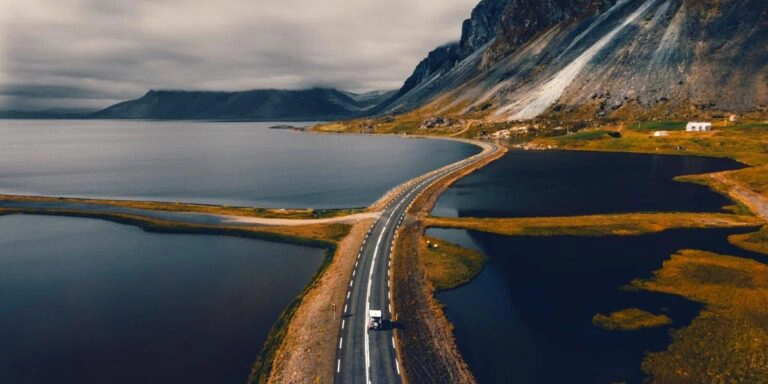
Iceland Road Trip – 26 Epic Things to See & Do
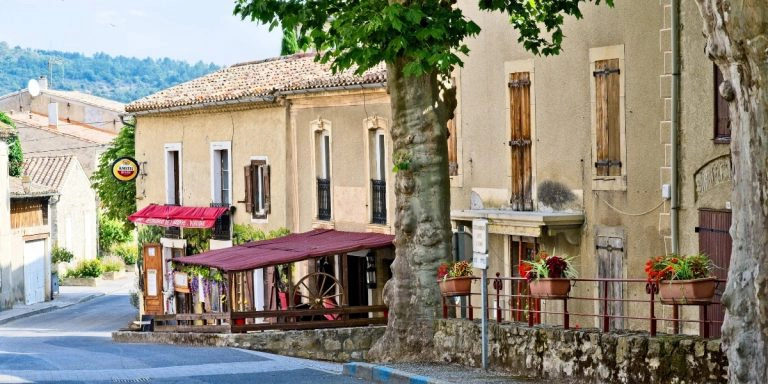
France Road Trip – 13 Amazing Itineraries
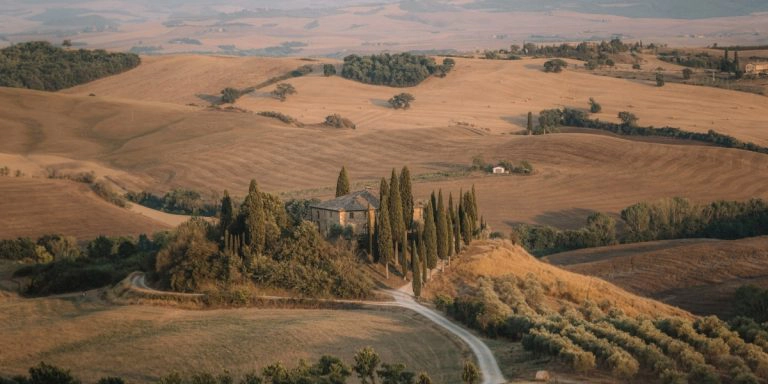
The Ultimate Bucket List Italy Road Trip
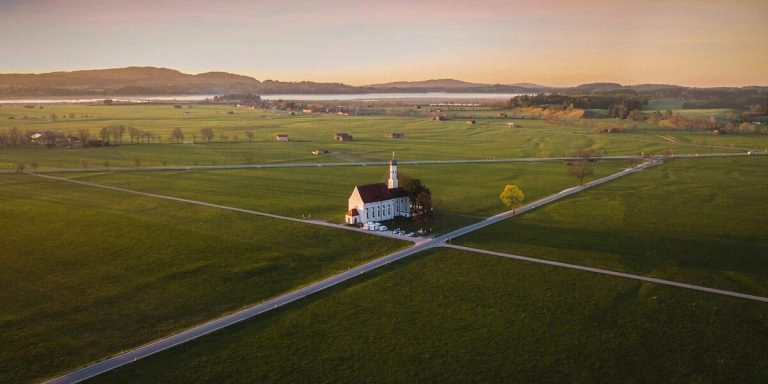
Six Unmissable Germany Road Trip Routes
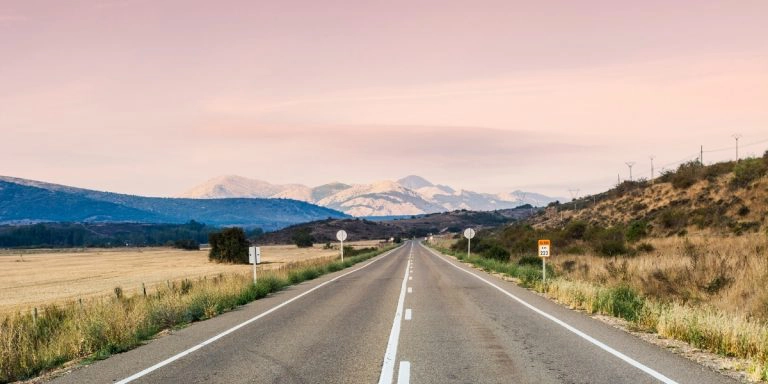
Spain Road Trip: 8 Amazing Routes for an Epic Trip
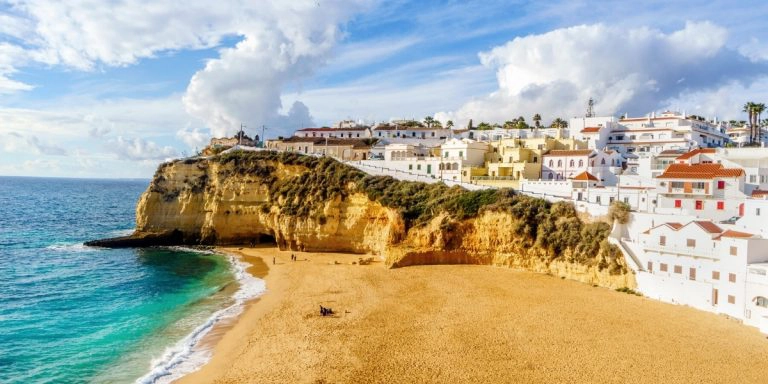
Road Trip Portugal – Two Incredible Itineraries
Love it pin it.
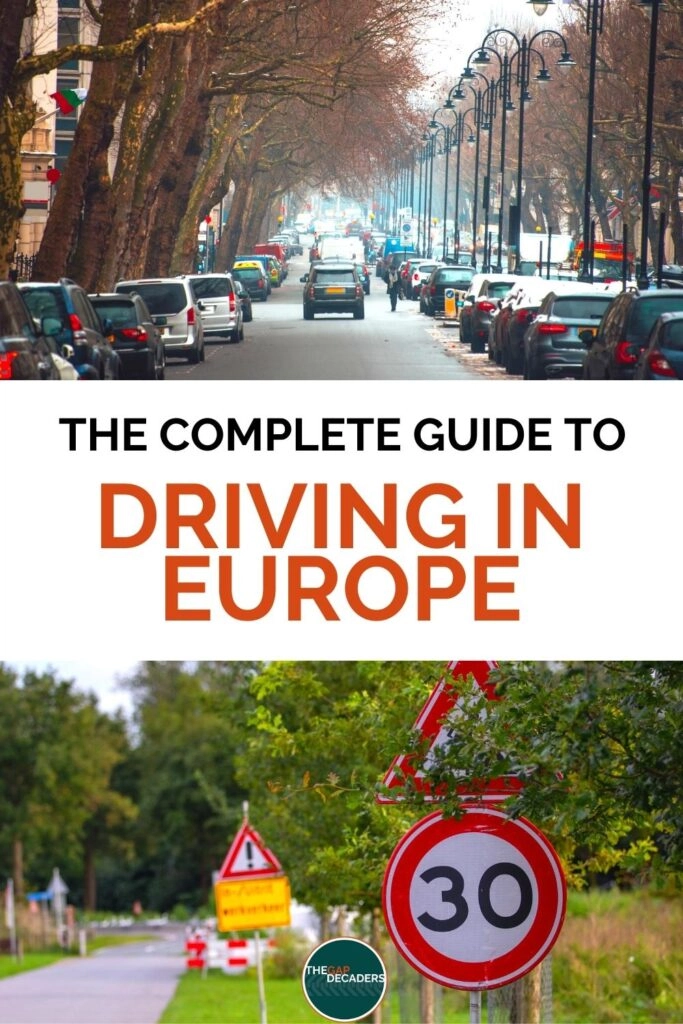
Join our Adventure: Get all my insider tips for motorhoming & road trips

15 essential Europe road trip tips you need to know
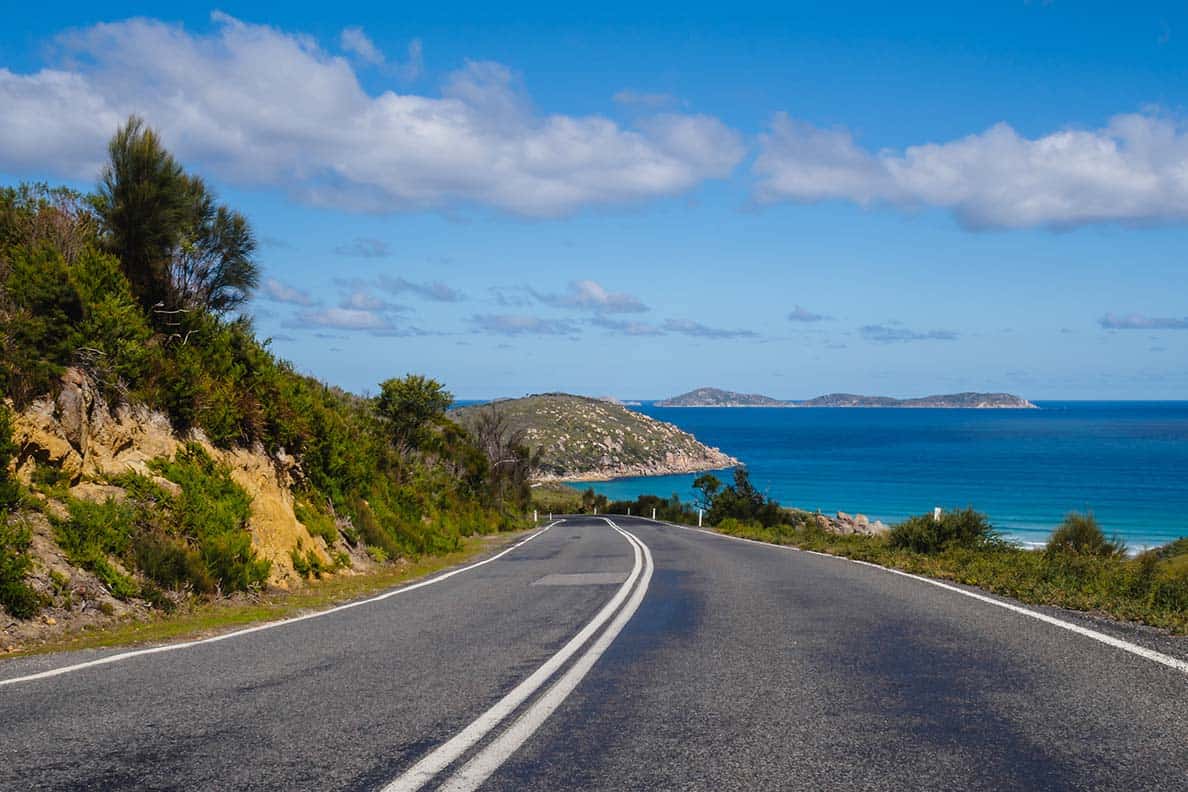
Are you planning a driving holiday in Europe ? Concerned about driving through Europe or wondering where the best locations are?
I get it- European road trips can feel intimidating – especially if you’ve never done it before! I remember the first time we set off from the UK- the list of things we needed seemed never-ending and there was so much confusing information out there.
After two years of travelling around Europe in our motorhome , we’ve become pretty good at figuring out what’s needed and how to find out important information. And today we’re sharing that all with YOU!
Here are 15 essential Europe Road Trip tips you need to know before you go!
NOTE: We love to road trip Europe in our Motorhome, but we’ve also spent some time exploring by motorbike, car (and one memorable occasion on a bus *shudder*.) Most of the tips below apply to ALL vehicles you can road trip with, even if I say motorhome.
JUMP AHEAD TO...
Europe Road Trip Tip ESSENTIALS- Check your paperwork
Before you leave, you MUST check your paperwork is in order. Yes, I know it’s boring… but it will only take you 20 minutes and it’s a lot easier than being turned away at the border!
- Check your passport is in date and has at least 6 months left to run before expiry.
- Check your vehicle insurance covers Europe and for how long. Make sure it is fully comprehensive (some providers only offer 3rd party cover in Europe.)
- Check your breakdown cover covers Europe. If not, consider extending it.
- Health/ Travel insurance for each person travelling, plus EHIC cards if you have them. Repatriation cover is a great idea- it can cost thousands to bring someone back to the UK if you need to.
- You need to carry your REAL vehicle logbook, not a copy. If it is a hire vehicle, you need a signed letter giving permission for it to go to Europe.
- You also need an MOT (in date!) and driving licenses for everyone who will be driving. You only need to carry the pink card part.
- If you are taking a trailer, you need to provide proof of its EU certification.
Driving in Europe – what age do you have to be?
You need to be aged at least 18 to drive in Europe and at least 21 years old if you want to hire a car. And remember to check the weight of the motorhome before you rent it- anything over 3.5 tonnes may require you to have additional categories on your driver licence.
European Road Trip tips after BREXIT
Are you planning to drive in Europe after BREXIT? If so, this post has everything you need to know, including rule changes, potential visa requirements, travelling with pets and more.
You will also probably need an International Driving Permit – here’s everything you need to know.
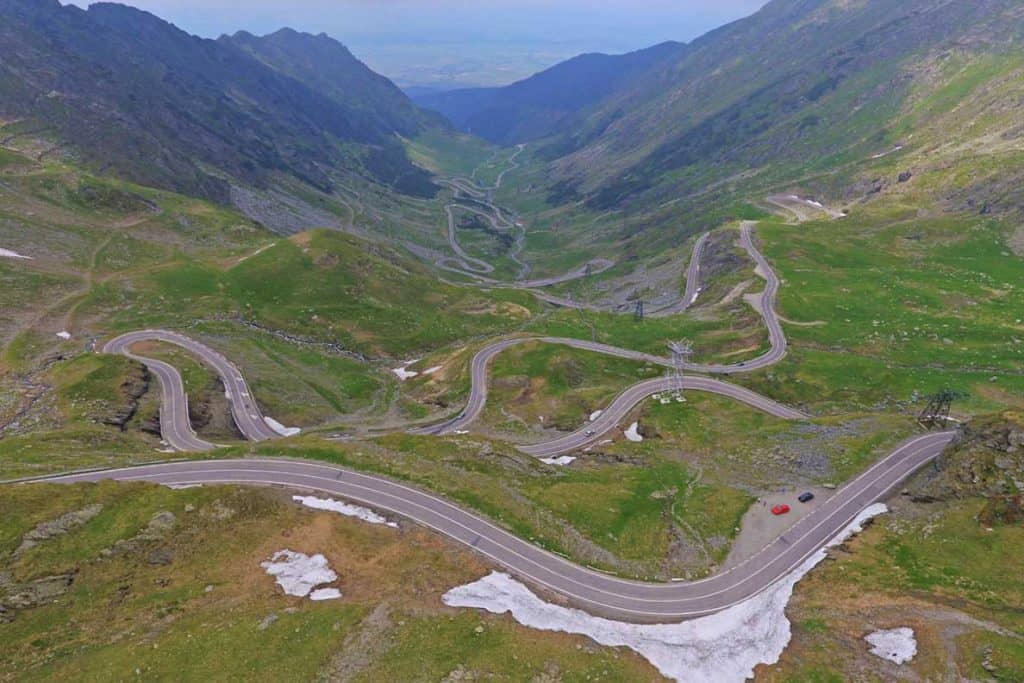
Driving in Europe Requirements
Yep, you need to bring some extra stuff with you when you road trip in Europe, no matter which country you are visiting.
Check here for a full list of all the essential motorhome accessories you need to carry in Europe.
Each country has a list of specific items too, such as a vignette for Switzerland or a low emissions sticker in France.
Do your research carefully in order to avoid large fines. This post will help you find out what you need to carry!
Road Trip to Europe- Is it better to go by Ferry or Tunnel?
This is a personal decision, but consider a couple of factors:
- The tunnel is definitely cheaper, especially if you book in advance and go outside of ‘peak’ times. It’s also considerably quicker.
- HOWEVER, if you are travelling to the west of France, or from the west of the UK, it’s a LONG drive, which can take up a large portion of your holiday. For this reason, if we have only a week to explore France, we often take the ferry.
- Pets are easy to take on the tunnel, but they could be in the car less time if you take the ferry and get a pet cabin (Portsmouth to Le Havre with Brittany Ferries) Again, for this reason, we often take the ferry with our puppy , as it cuts down the time he’s in his travel crate for.
- Think about the weather. In winter, there’s a higher chance of storms; not fun on a boat. In summer the queues through the tunnel are horrendous, so we avoid them if we possibly can.
There really is no right answer, so plan out your journey and do whatever works best for you!
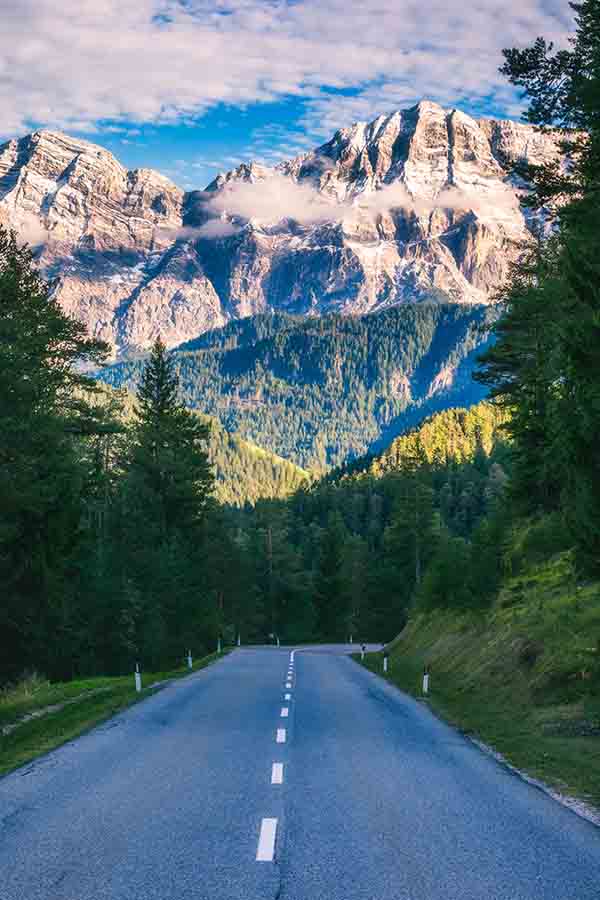
Europe Road Trip tips- where to stay
Where should you stay on your road trip? This depends entirely on what you like to do!
For Motorhomes/ Caravans
- Are you hoping to relax, soak in some sunshine and let the kids play on the beach? You’ll probably find a campsite easier and more relaxing, but they do get pricey (and full!) in high season.
- Do you enjoy moving around every few days and seeing different areas within a country? Look for aires (France) , Sostas (Italy) or Stellplatz (Germany). These are approved Motorhome parking areas , often with facilities for freshwater and waste disposal, which are offered first-come, first served for a small fee (often 5-10€) Most towns and villages have these throughout Europe
- Prefer to be completely away from it all? Consider wild camping- either with a motorhome or a tent. This is one of our favourite ways to travel- we love the freedom. Bear in mind the legalities- you can’t just park wherever you like! You will also need to collect and find somewhere to safely dispose of all your rubbish- that’s a beginner tip for camping which everyone should know. But we’ve met some wonderful people whilst wild camping and stayed in some breath-taking spots.
Here’s how to create a PERFECT road trip itinerary – using Google maps!
For cars/ motorbikes
If you’re not camping, you have plenty of other options. You can rent an AirBnB for a week or a couple of nights before moving on.
You can rent a hotel room or an actual B and B (although this can get expensive once you have older children.)
Before getting our Motorhome, we loved B and B’s, as the owners were generally friendly and could tell you all the best places to visit in the area!
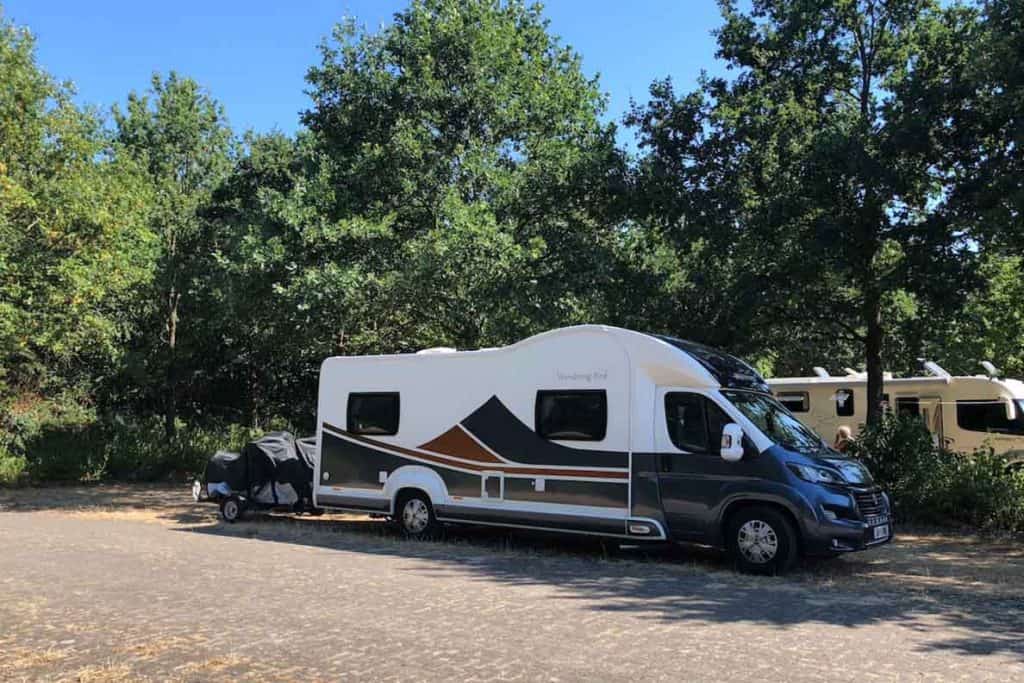
Driving in Europe- Be Sensible about Safety
Nobody likes to think about it, but a little caution can save a lot of heartache. We follow these simple rules when we road trip:
- Keep your passports well hidden and ideally don’t leave them in the vehicle unattended, even in a campsite.
- Don’t bring much jewellery. It’s just one less thing to worry about.
- Don’t advertise when you are going to be leaving the motorhome all day (although this can be tough, especially when we roar off on our motorbikes!)
- Never leave your vehicle unattended in a wild camping spot. If we are going for a bike ride, we park in a campsite. Unless we are in Norway , which is possibly the safest place in the whole of Europe!
- Carry a set of spare keys and keep them separate from your other keys.
- 112 can be dialled from anywhere in Europe in an emergency.
- Also, consider safety while driving- especially while driving in heavy rain.
European Road Trip Tips- Electronics
Phones/ ipad.
Check your mobile contract to ensure you won’t be charged high fees for using your phone abroad. The biggest thing to look at is data- we regularly use the internet to look up places to stay as we travel, so we made sure to get a package which included free data use in Europe with our motorhome wifi .
Also, Motorhome Sat Navs can use a lot of data if you get the settings wrong, so be sure to get one for use in Europe.
TOP TIP- Beware of using your phone on the ferry- the network charges are EXPENSIVE!
Lastly, it is illegal in many European countries to use a headset whilst driving, even with a hands-free kit. It needs to be on speakerphone in your car.
If you rarely use the internet whilst travelling, you might not need additional internet. However, we work from the road, either writing blog posts, uploading videos or communicating with Mr WB’s clients.
We also love to look up things to do in the local area, so we have several ways of getting internet as we travel
Bank charges
This is something we didn’t think about until after our first European road trip- which meant that we paid a fee on every single bank transaction we used in France!
We have now switched to an account which doesn’t charge for foreign payments and if you travel regularly it might be worth looking at.
Your bank might need to know that you’re going abroad, especially if you don’t go regularly. Otherwise, you run the risk of them blocking your transaction.
Many banks accept notice over online banking. I think our bank has just given up and accepts that we travel all over the place without any warning! 🙂

Travelling to Europe with Pets
We travel back and forth to Europe monthly with our puppy, Mac. It’s not complicated, and it doesn’t cost much more than it would without a pet.
Pets (cat, dog or ferret) need:
- a pet passport (read how to get one HERE) – These might end after BREXIT- stay up to date on the latest rule changes here
- rabies vaccination (and a blood test to prove the vaccination has worked post-BREXIT)
- Dogs also need a worming tablet administered by a vet between 1-5 days of your return to England.
Take this into account when you are travelling back with a dog. Most vets near the British border are used to ‘walk-ins’ and will do their best to fit you in, but others may not have an appointment for a day or two so try to book in advance if you can.
Also, make sure your pet is secured in the vehicle- it is no longer ok for them to be sitting in the back untethered. If the police see a ‘loose’ animal in a vehicle they will stop and could fine you.
European Road Trip Tips- Fines
Talking of fines, in most places in Europe, it is perfectly legal for the Police to stop you on the side of the road and demand instant payment if you are caught speeding (or breaking any other rule).
They accept cash (or occasionally cheque- in their currency!), and if you do not have it they will drive you to the nearest cashpoint to extract the correct amount. They also don’t give change- I know someone who was fined 90€, only had 5 x 20€ on them… and had to go get 10€ change!
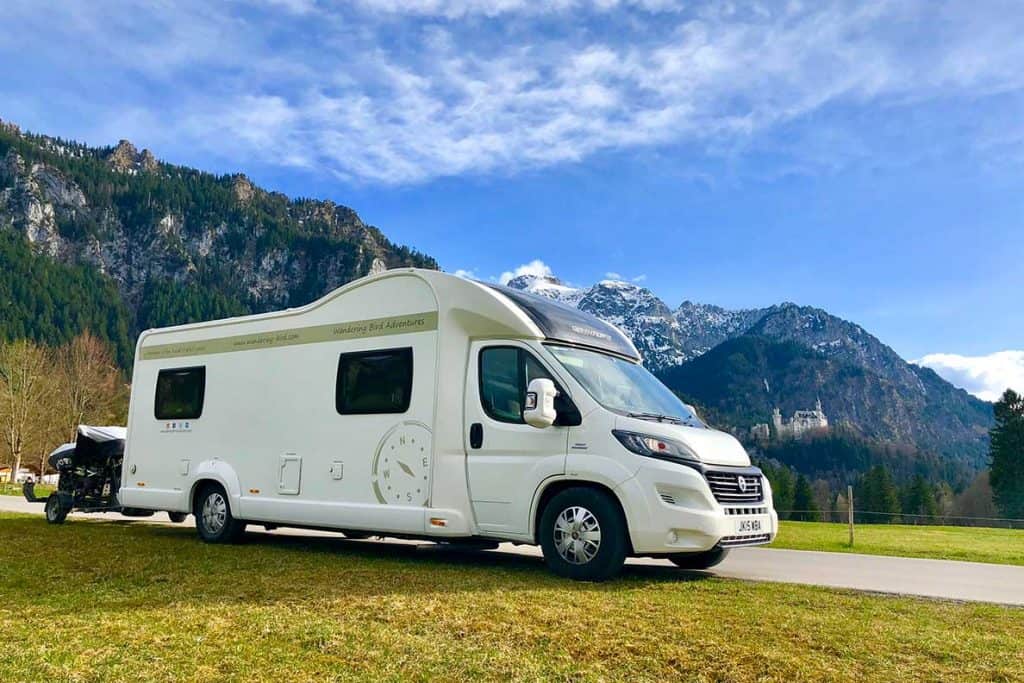
Driving in Europe- Tolls
Tolls are a fact of life whilst travelling in Europe, especially if you want to use major roads. Ideally, you want your motorhome to be under 3m tall (any higher puts you as a Cat 4 commercial vehicle)- this is one of the biggest reasons we downsized our motorhome to a lower profile one.
Carry cash for the tolls, or get a toll pass if you’re planning to travel regularly. We use eMovis, which sends us a bill at the end of the month for whatever you’ve used and allows us to speed through the ‘fast-lane’ at the toll booths- very satisfying in summer when the queues are crazy long!
Europe Road Trip tips- what food to bring?
You don’t need to bring a lot of food with you- people in Europe eat amazing food and trying local delicacies is part of the fun.
However, I always try and bring enough food to last a day or so, so we don’t have to find places to shop en-route if we don’t want to.
Keep things simple- cooking in a small space can be tricky, especially if there’s a few of you. If you have kids (or husbands!), you might want to bring a few things you know they’ll eat on the journey to keep them happy. You can read more about our meal planning & ideas HERE
I hope you know feel much more prepared to deal with your European Road Trip! Let me know where you end up- and if you see us out on the road, be sure to say hi!
Planning a Road Trip?? These posts might help:
– I want to learn how to plan a Road Trip
– HELP! I need to stop rattles in my Motorhome (or Camper!!)
– I want to explore Europe by Road
– Inspire me with INCREDIBLE Road Trip itineraries
Want to save this list for later? Here’s the pin. Enjoyed this post? We’d love it if you shared it on Facebook, Twitter or Pinterest. Thank you!
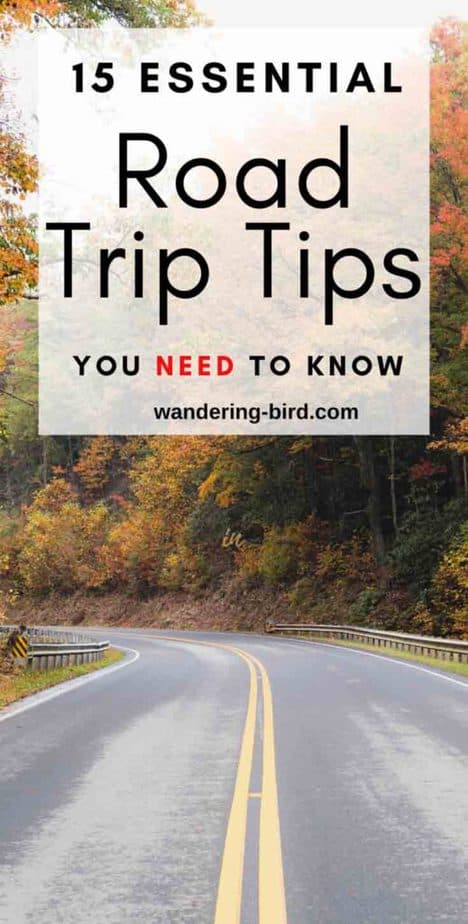
Kat never planned to buy a motorhome. She also never planned to quit her job as an air traffic controller, go touring around Europe in said motorhome, start one of the UK’s largest motorhome travel websites… or get a cocker spaniel.
Find out how she went from stuck in the rat race to being a digital nomad and inspiring thousands of people to have their own epic adventures here.
If you’d like to connect with Kat, send her an email or follow her adventures on social media.
Sharing is caring!
Similar Posts

Motorhoming & Campervanning in Germany- The Ultimate Guide
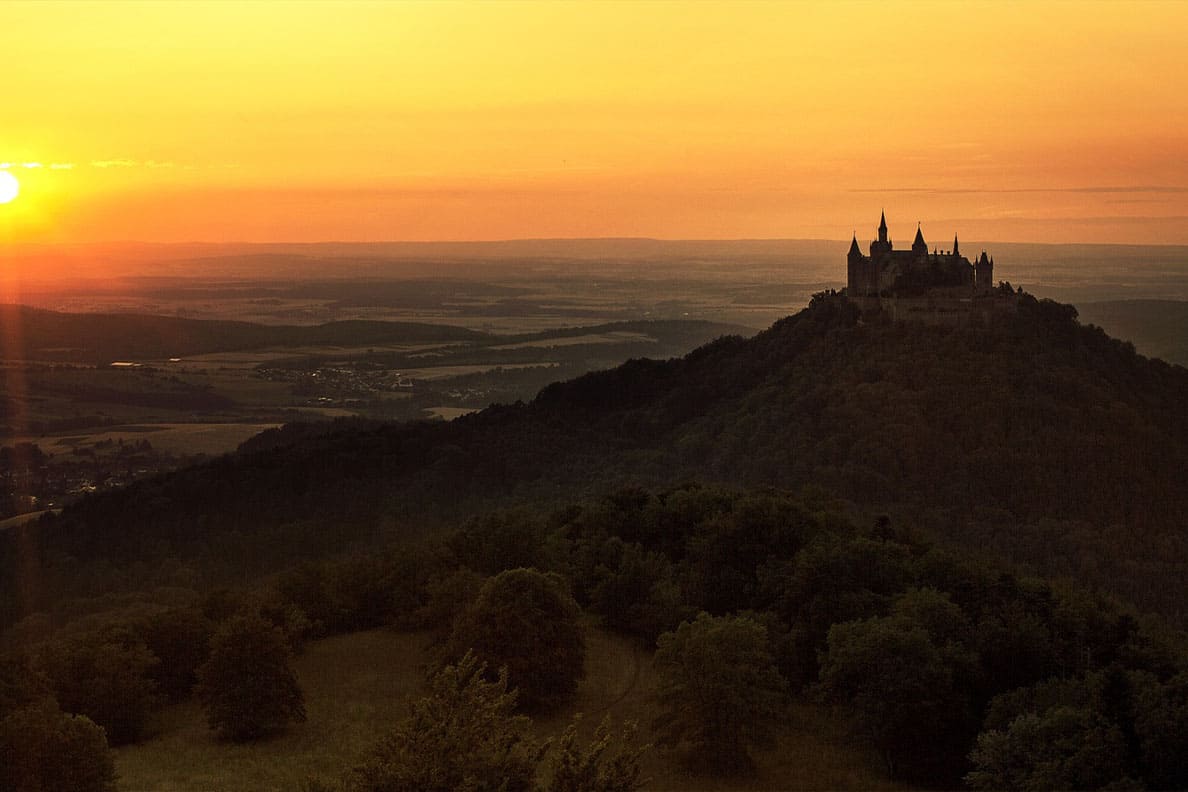
Hohenzollern Castle- 11 essential things to know!
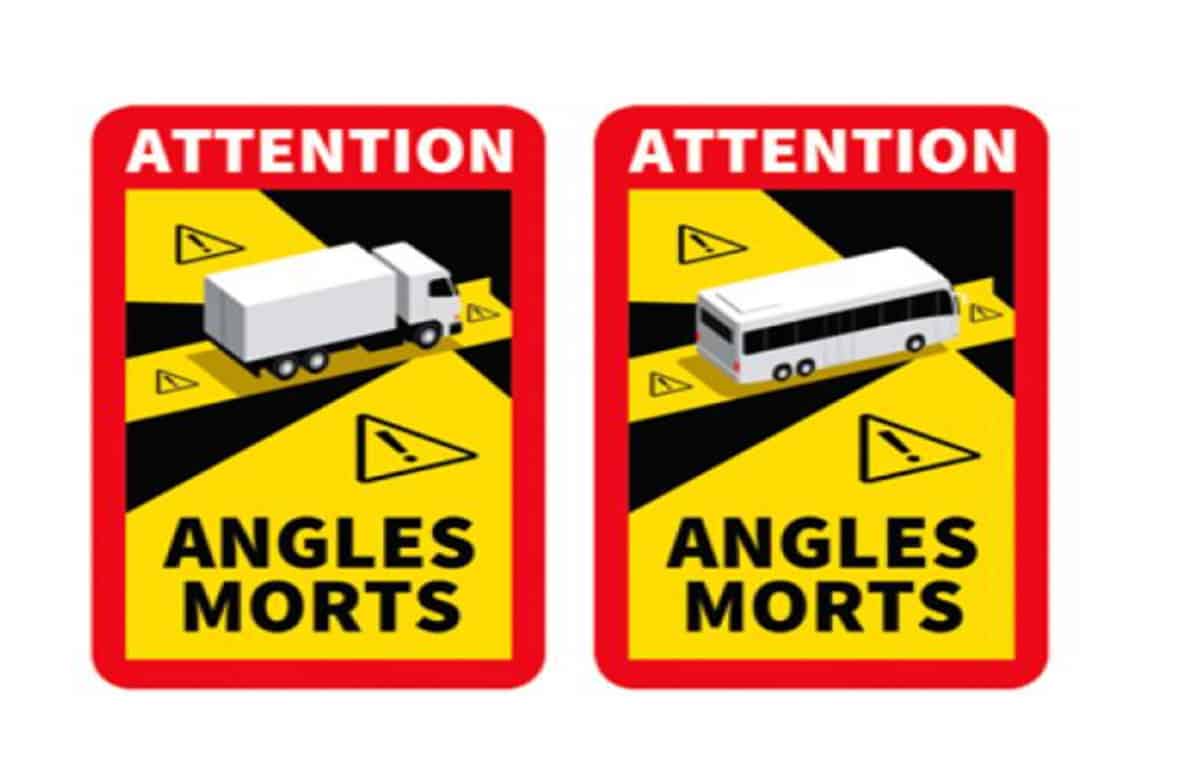
Angles Morts Stickers- Does Your Motorhome or Camper Need one?

7 mistakes NOT to make at Lake Annecy – don’t do these!
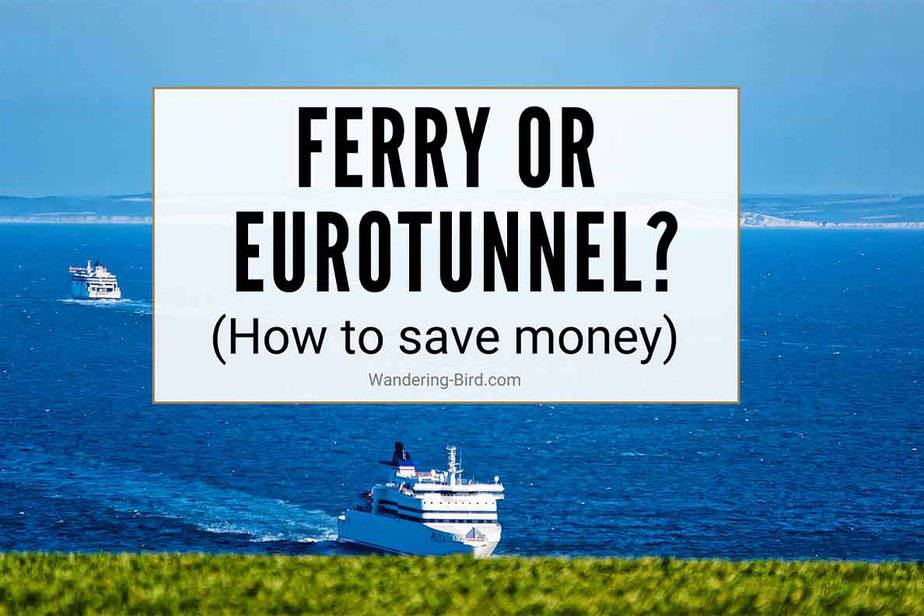
Ferry or Eurotunnel- which is best? (Driving to Europe road trip tips)
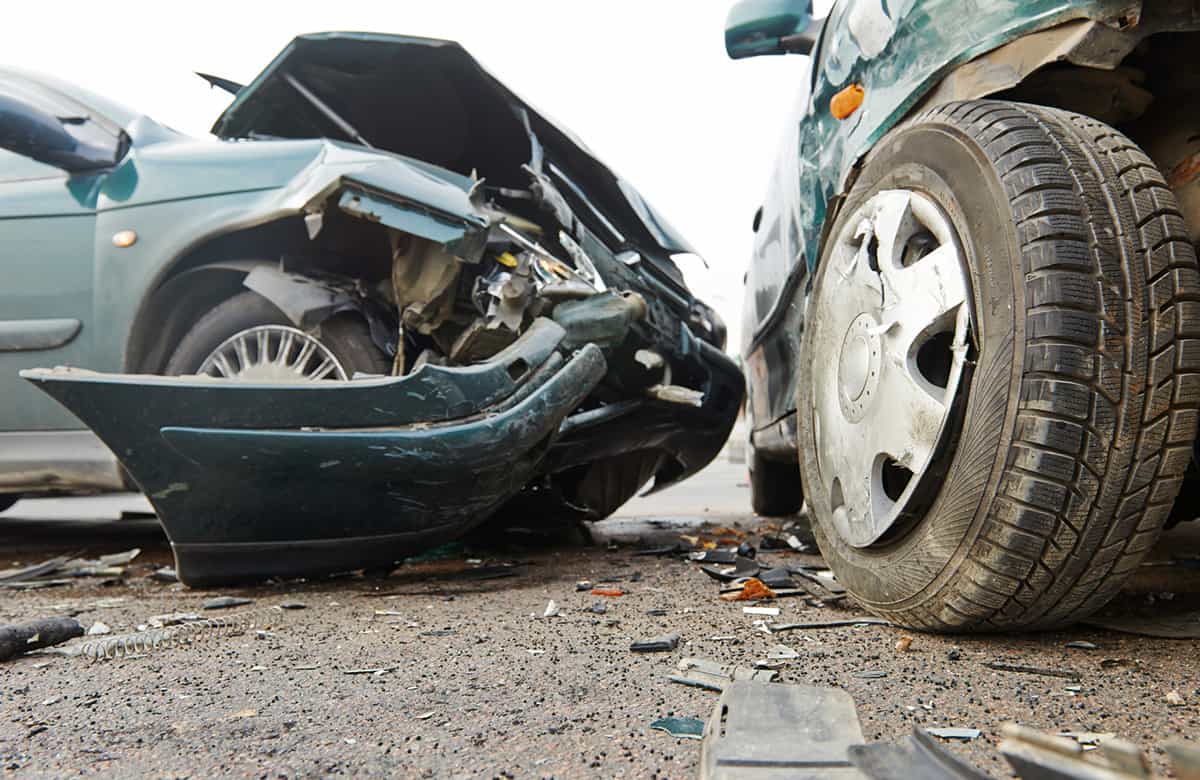
Car crash or road traffic accident in Europe- what to do
A wonderful blog full of useful information. Funny you mention Norway being the ‘safest country in the world’. After traveling to 23 countries around Europe, the only place we had an issue was in Norway. Our credit card got hacked! It could have happened earlier, however it was discovered when in Norway and we’d been traveling through the Scandinavian countries for four months prior to this.
Oh no! That’s rubbish, so sorry to hear that. I hope you got it all back! I guess nowhere is perfect 🙁
Newbies planning our first trip to Europe and finding your website is our go-to for research – thankyou. Tried to download the ‘Tips for Travel’ but didn’t get the e-mail verification links – thought you may want to know, its not a complaint.
Hi Diana, so pleased you find the website useful. Sorry you’re having issues with the PDF- I’ll email it to you now. Let me know if you don’t get an email! 🙂
Same for me – I didn’t receive the email with checklist. Please would you sent it me to?
Hmmm- I think there’s an issue for people already on my mailing list. I’m looking into it but in the meantime if anyone else doesn’t receive it please let me know.
My friends and I are finally planning our long overdue road trip to Europe, been talking about it since high school, seems like finally it’s gonna happen. Your post was very useful, thank you so much for all the tips and tricks, much appreciated! 🙂
Excellent- hope you have a great time.
Leave a Reply Cancel reply
Your email address will not be published. Required fields are marked *
Save my name, email, and website in this browser for the next time I comment.
Travel Europe on a Budget
The Savvy Backpacker
City Guides .\33 a132798-3f3b-4585-954d-7e70cf863447{fill:#231f20}
Cheapest way to travel europe — comparing train, plane, and car travel.
What is the cheapest way to travel Europe — train, plane or car? This guide will help you choose the best transportation for your travel style.
Transportation
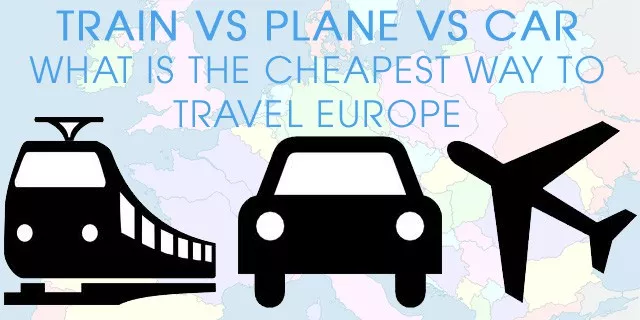
There are multiple methods for traveling around Europe but what is the cheapest option? To help you plan your trip, we’ve compared three of the most popular options — train, automobile, and plane.
We’ve created a sample itinerary that includes some of the most popular European destinations. We’ve also tried to include the hidden costs like gas, tolls, and airport transfers.
Quick Notes About Transportation Options in Europe
Time vs money.
Many budget travelers get caught up on choosing the absolute cheapest transportation option, but you have to remember that your time is also valuable. It may make more sense to spend an extra €30 on a plane ticket if it saves you 10 hours of travel time compared to using the train.
Train Travel in Europe
Europe’s train network is extensive and nearly every town and city is connected by rail. If your train journey is less than six to eight hours, then the train is normally the best choice. There are also many overnight long-distance routes, which can be a good option since you sleep on the train.
Flying in Europe
There are multiple budget airlines in Europe, so it’s pretty easy to find cheap airfare between destinations. If the train journey is going to take more than eight hours, I recommend looking into flying. Flying is often the cheapest option for medium- to long-distance travel. But don’t forget to add in the extra cost and travel time of getting to the airport. This can add an extra 8€-25€ and 2+ hours to the journey.
Driving in Europe
Pricing car travel can be a bit tricky since there are so many variables (and hidden fees). The biggest problem arises if you drop your rental car in a different country from where you picked it up. Car rental companies often charge anywhere from 100€-300€ for this ‘convenience.’ This poses a big problem if you want to make a lot of point-to-point trips to different countries since you will have to pay this large fee each time you drop the car off.
If you’re doing a grand European tour, it might make the most financial sense to rent a single car for your entire trip so you only get charged a single fee for dropping it off in another country (or you can have your trip end in the same country you rented the car in). But keep in mind that parking in European cities is not only difficult, but it can get very expensive. I know in Paris a spot in a garage can easily run 20€-30€ per 24 hours, but you can often save a lot of money by parking just outside the city.
A car is a great option if you want to explore small towns and the European countryside. For example, when we visited the Normandy region of France, we discovered that the only way to visit was via car. Any other option simply wasn’t possible.
Sample Itinerary Comparing Train, Plane, and Car Travel Costs
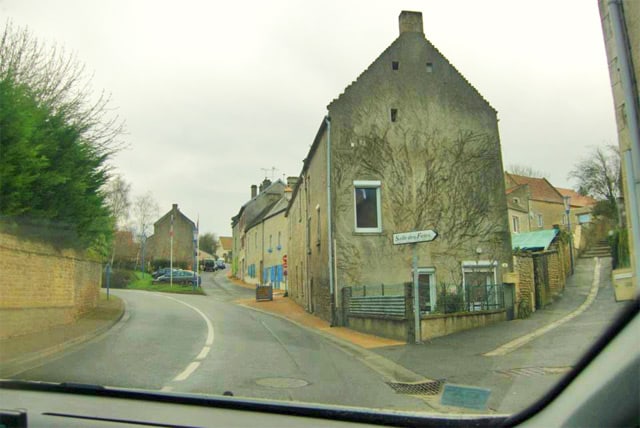
The sample itinerary below starts in Paris and goes through Brussels, Bruges, Amsterdam, Berlin, Prague, Munich, Interlaken, Lyon, and finally ends in Madrid. I started this itinerary on May 29th, 2013 and it ends July 8th, 2013. I found these prices online on May 1st, 2013, so these are typical prices if you booked between 3-13 weeks before the travel dates.
How I found the prices:
Train: For the train, I used each country’s individual rail site to get the price. For more information about train travel, see our guide to using trains in Europe .
Plane: I found airfare through Skyscanner.com. For more information about finding the best airfare, check out our guide to air travel in Europe .
Car: The car pricing was a bit more complicated. Doing point-to-point car rentals for the entire trip will be very expensive since you’ll get charged an extra 100€-300€ each time you drop your car off in a different country. If you were to rent a car from May 29th to July 8th (as per my example below, starting in Paris and ending in Madrid) it would cost about 1100€ — This price does not include gas, tolls, or parking . I included the estimated price for gasoline and tolls for each leg of the journey in the example below. I used ViaMichelin.com to find these costs.
Note : Transportation costs do change based on how early and what time of year you book. Train and plane prices also fluctuate based on their departure time. For example, desirable departure times are often more expensive than the early 6am departures.
The Travel Itinerary
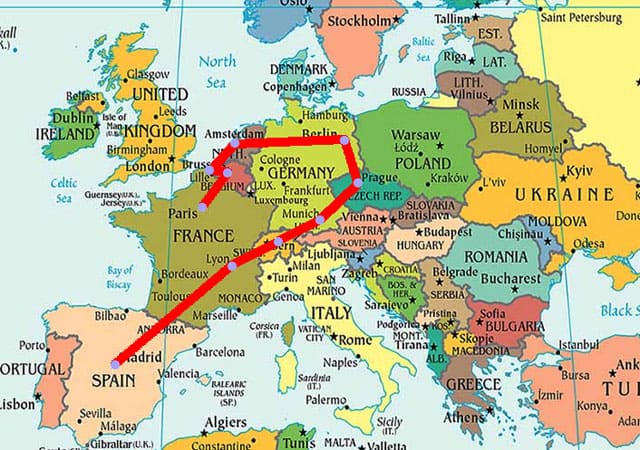
I chose a handful of the popular travel destinations to help make this travel price guide.
Paris to Brussels – May 29
Train = 39€ – 99€ 1h22 Plane = 100€ 55min Car = 50€ in fuel and tolls 3h32
Brussels to Bruges June 2
Plane = No feasible routes Train = 18.80€ 1hr Car = 13€ 1h30
Bruges > Amsterdam June 6
Train = 44€ 4h Plane = 180€ 5hr Car = 37€ 3h24
Amsterdam > Berlin June 12
Train = 49€ – 73€ 6hr-7hr Plane = 55€ 1h30 Car = 77€ 7h22
Berlin > Prague June 18
Train = 30€ 4h45 Plane = 140€ 3h10 Car = 54.22 € 4h19
Prague > Munich June 24
Train = 20€ 6h Plane = 175€ 3h30 Car = 57.16 € 4h29
Munich > Interlaken June 29
Train = 40€-70€ 7hr Plane = 262€+plane ticket 5hr45 Car = 88.28 € 5h16
Interlaken > Lyon July 3
Train = €83-€93 5hr Plane = €1000+ not worth it Car = €86 Toll €15.60 | Petrol €41.19 | Road tax €29.12 4h02
Lyon > Madrid July 8
Train = €150-€200 10h-18h Plane = €105 2h Car = €223.18 Toll €85.60 | Petrol €138 12h33
Conclusion — What is the cheapest transportation option?
It depends… I know, that is a terrible answer. But it’s true.
Generally, if you’re only visiting major cities, a combination of trains for the short distances and planes for long distance will probably be the cheapest option. If you were to choose the cheapest option between the train and flying for each route, the price would come out to around 460€-475€ per traveler (I added a little extra to cover the transport fees to/from the airport).
Driving starts becoming more affordable when you’re traveling with more than two people. For example, if you were to rent a car and keep it for the entire trip, it would cost about 1,100€ for the rental and 700€ for gas and tolls. This is a total of 1800€. If you have four travelers, then the per-person cost is about 450€. (This doesn’t include parking, which can be costly.)
But the trip above is a pretty long journey. What if you want to just travel around France for two weeks? A rental car will cost about 300€ for two weeks — add about 200€ for gas and tolls. If you have four people, then the cost per person is about 125€. A normal one-way ticket between major cities in France will run about 50€-90€, so a car will be a cheaper option if you visit more than a few places.
Plus, a car will give you the freedom to visit small towns and explore the countryside — which is very difficult, if not impossible, when using trains or planes. I recommend getting out of the cities — even if it is just for a day or two. If you do rent a car, make sure it is big enough to carry your group. I’d just check out the make/model that rental car is offering on wikipedia to make sure everyone will be comfortable.
My Recommendation
Use whatever method works best for your travel style. There is no easy answer, and you just need to put the time into researching the cost of each option.
- Recent Posts
- Best Prepaid UK eSIM | Data Plan Buyer’s Guide - April 21, 2024
- How to Avoid Pickpockets in Europe — Tips for Outsmarting the Thieves - April 19, 2024
- Best Prepaid eSIM For Italy | Data Plan Buyer’s Guide - April 18, 2024

No Funny Business
The Savvy Backpacker is reader-supported. That means when you buy products/services through links on the site, I may earn an affiliate commission—it doesn’t cost you anything extra and it helps support the site.
Thanks For Reading! — James
Questions? Learn more about our Strict Advertising Policy and How To Support Us .
Related Reads
How to purchase train tickets for europe | strategies for buying european train tickets.
Tips on the easiest and cheapest ways to buy train tickets in Europe.
Complete Guide To Train Travel In Europe | How To Travel Europe By Train
Our step-by-step guide to traveling Europe by train.
Italy Train Guide — How To Travel Italy By Train
How to travel Italy by train — tips for buying Italian train tickets and advice for navigating Italy by rail.
France Train Guide — How To Travel France By Train
How to travel France by train—tips for buying French train tickets and advice for navigating France by rail.
City Guides
Choosing travel insurance, travel packing lists, budget travel newsletter.
The best budget travel tips sent straight to your inbox.
Join My Journey
Europe travel tips, advertising & privacy policies.
TheSavvyBackpacker.com is a participant in the Amazon Services LLC Associates Program, an affiliate advertising program designed to provide a means for sites to earn advertising fees by advertising and linking to amazon.com.
© 2010 - 2024 The Savvy Backpacker
Website Design by FHOKE
Cookies on GOV.UK
We use some essential cookies to make this website work.
We’d like to set additional cookies to understand how you use GOV.UK, remember your settings and improve government services.
We also use cookies set by other sites to help us deliver content from their services.
You have accepted additional cookies. You can change your cookie settings at any time.
You have rejected additional cookies. You can change your cookie settings at any time.
Driving in the EU
What UK drivers need to do to drive when visiting the EU
If you are a commercial driver, there is additional guidance for:
lorry and goods vehicle drivers
bus and coach drivers
Driving licences and international driving permits
You need to carry your UK driving licence with you.
You do not need an international driving permit ( IDP ) to visit and drive in the EU , Switzerland, Iceland or Liechtenstein.
You might need an IDP to drive in some EU countries and Norway if you have:
- a paper driving licence
- a licence that was issued in Gibraltar, Guernsey, Jersey or the Isle of Man
Check if you need an IDP .
You will not need an IDP to drive when visiting Ireland if you have a UK driving licence.
You can get an IDP in person from certain shops that have PayPoint .
An IDP costs £5.50 and drivers must:
- be a resident of Great Britain or Northern Ireland
- have a full UK driving licence
- be 18 or over
Driving licence exchange
If you live and drive in an EU country, Iceland, Liechtenstein, Norway or Switzerland, you need to exchange your driving licence for a local one.
Check the deadlines and rules for licence exchange in the country you live in .
Insurance for your vehicle, caravan or trailer
All UK vehicle insurance provides the minimum third party cover to drive in the EU (including Ireland).
You do not need to carry a green card when you drive in the EU (including Ireland), Andorra, Bosnia and Herzegovina, Iceland, Liechtenstein, Norway, Serbia, or Switzerland. You still need valid vehicle insurance.
More about vehicle insurance .
Vehicle registration documents
If you’re taking your vehicle to the EU for less than 12 months, carry one of the following documents:
- your vehicle log book ( V5C ), if you have one
- a VE103 to show you’re allowed to use your hired or leased vehicle abroad
Trailer registration
You need to register some commercial and non-commercial trailers before towing them to or through most EU and EEA countries.
Find out more about trailer registration .
UK stickers and number plates
You must display the UK identifier when driving a UK -registered vehicle abroad.
If your number plate includes the UK identifier with the Union flag (also known as the Union Jack), you do not need a UK sticker.
However, you will need to display a UK sticker clearly on the rear of your vehicle if your number plate has any of the following:
- a GB identifier with the Union flag
- a Euro symbol
- a national flag of England, Scotland or Wales
- numbers and letters only – no flag or identifier
If you’re in Spain, Cyprus or Malta, you must display a UK sticker no matter what is on your number plate.
You do not need a UK sticker or identifier to drive in Ireland.
What to do if you’re involved in a road accident
If you’re involved in a road accident in an EU country, you should, in the first instance, contact your insurance provider.
Any legal proceedings against either the responsible driver or the insurance provider of the vehicle will need to be brought in the EU or EEA country where the accident happened. You might have to make your claim in the local language.
You will not get compensation in some countries if the accident is caused by an uninsured driver or if the driver cannot be traced.
Get legal advice if you need more information about this.
Updated to inform customers that they can get an IDP from certain shops that have PayPoint
From 28 September 2021, you need a UK sticker on your vehicle instead of a GB sticker.
From 28 September 2021, you’ll need a UK sticker instead of a GB sticker on your vehicle to drive abroad.
You do not need to carry a green card to drive in the EU (including Ireland), Andorra, Bosnia and Herzegovina, Iceland, Liechtenstein, Norway, Serbia, or Switzerland.
First published.
Part of Drive abroad: step by step
Step 1 : check where you can use your licence.
- Check the rules for using your driving licence abroad
You may need an international driving permit (IDP) to drive outside the UK.
- Check if you need an IDP
Step 2 : Apply for an international driving permit (IDP)
- Get an IDP in person from certain shops that have PayPoint £5.50
Step 3 : Get insurance
- Check if your vehicle insurance covers you for the countries you're driving through
Check this with your car hire company if you’re hiring a vehicle.
Step 4 : Prepare the documents you need to take with you
- Check what documents you need to take a vehicle out of the UK
If you're hiring a car you may need to share your driving licence information with the hire company.
- Get a 'check code' to share your driving licence information
If you got your licence in Northern Ireland, you’ll need to show the rental company your paper counterpart instead.
Step 5 : Check the rules for the country you're travelling to
The rules for driving may be different in the country you're going to. For example, drink-driving rules might be different or you might need to carry extra equipment in your car.
- Check if you need to display a country sticker on your vehicle
- You are currently viewing: Check what you need to do if you’re driving in the EU, Switzerland, Iceland, Liechtenstein or Norway
- Check the travel advice for all countries
When you have your documents, insurance and any extra equipment you need you can drive abroad.
Is this page useful?
- Yes this page is useful
- No this page is not useful
Help us improve GOV.UK
Don’t include personal or financial information like your National Insurance number or credit card details.
To help us improve GOV.UK, we’d like to know more about your visit today. We’ll send you a link to a feedback form. It will take only 2 minutes to fill in. Don’t worry we won’t send you spam or share your email address with anyone.
LATEST DEALS:
- Vauxhall Mokka – Save £4766
- Peugeot 3008 – Save £6062
- BMW 3 Series – Save £2830
- Audi A4 – Save £4753
Back to top
Across Europe in an electric car: conclusion and tips
Is it feasible to go on a good old-fashioned european driving holiday in an electric car we find out – and try to break a world record in the process....

New Porsche Taycan
Porsche taycan cross turismo, porsche taycan sport turismo, what did we learn.

This trip taught us that the concept of the European drive holiday is not going anywhere, even as we transition to an electric future.
However, in order for these cross-continental drives to be truly stress-free it is essential that car manufacturers fit range indicators that are accurate. The Porsche Taycan ’s, for example, was spot on for the entire drive, so gave us the confidence to drive at normal motorway speeds between charge points, but this is often not the case.
It’s also vital that fast chargers are widespread, easy to use and reliable. Using the Porsche Connect app we could see which Ionity chargers were available before we arrived, and aside from a slow charge in France, our average charge rate averaged more than 150kW.
Top tips for driving in Europe

Most European countries require foreign drivers to carry certain documents with them, including their passport, driving licence, the car’s V5 registration document and your travel and car insurance certificates
Apply for an International Driving Permit, which costs £5.50 and can be bought from a Post Office
Make sure you have European breakdown cover
Check if you will be driving though any ecological zones in France. If so you will need to purchase a Crit’Air windscreen sticker to avoid being penalised
Most European countries charge a toll to travel along their most modern motorways, so make sure you factor this cost into your budget
Dial 112 for free from any European country to get help from the emergency services
What were the costs involved?

Ionity pay-as-you-go customers are charged £0.69 per kWh, but Porsche Taycan customers get access to the ‘Porsche Charging Service’ for three years with no subscription fee (subscription thereafter is £179 per annum). This allowed us to charge at just £0.30 per kWh.
As a result, our total charging costs for the trip, including our initial charge in the Netherlands came in at just under £120. However, if you were a regular pay-as-you-go Ionity customer this figure would more than double.
For all the latest reviews, advice and new car deals, sign up to the What Car? newsletter here
<< Previous | Read more: The best and worst electric cars >>
Page 3 of 3

Best electric cars 2024 – the EVs to buy and those to avoid
Sales of electric cars are booming, and no wonder: the best are quiet, cheap to run and smooth to drive. But which are the brightest sparks – and which are the loose connections?

Mercedes EQE long-term test
The Mercedes EQE offers the longest real-world range of any car we've ever tested, theoretically making it the ideal choice for high-mileage drivers

New Renault Megane E-Tech vs used Kia EV6
With a saving of around £14,000 off new, a year-old Kia EV6 looks like great value, but are you better off spending even less on a box-fresh Renault Megane E-Tech?

2024 Porsche Taycan Turbo GT review

2024 Porsche Taycan: faster acceleration and charging for performance EV

2022 Porsche electric SUV – what we know so far
Also consider.

Porsche Macan Electric
Quick search.
- All car reviews
- All new car deals
- Used cars for sale
- All used makes
- Vans and commercial vehicles
- New car awards
- Used car awards
- Classic & Sports Car
- Move Electric
Tools & services
- Car finance
- Car warranty
- Gap insurance
- Sell your car
- Car Leasing
- Car Valuation
- Company car tax calculator
- Van tax calculator
- Terms & conditions
- Cookie policy
- Privacy policy
Information
- About What Car?
- Contact What Car?
- Subscribe to our newsletter
- Subscribe to What Car? magazine

What Car? is part of Haymarket Automotive , a division of Haymarket Media Group © Haymarket Media Group 2024


12 Things That Are Different About Driving In North America Vs. Europe
- In Europe, speed cameras are labeled to warn drivers, unlike in America where they often remain hidden.
- There are more law enforcement officials monitoring roads in the US, increasing the chance of receiving a ticket for reckless driving.
- Getting a driver's license in Europe is more difficult and requires extensive training, while in the US it is relatively easier.
In terms of standards of living and lifestyle, North America and Europe are quite similar to each other. Yet, if you are an American in Europe or vice versa, you may find some differences when getting behind the wheel. The reason for this is the entirely different set of rules for driving in both places. Once you learn the rules and adapt to the changes, driving and exploring other countries can be an incredible experience. There are scenic routes throughout the US and Europe, all of which should be seen by travelers.
RELATED: 10 Of The Most Beautiful Train Journeys In North America
Here are some things that are different about driving in North America Vs. Europe. Make sure to acquaint yourself with the driving rules if you are planning to visit any of these magnificent destinations.
UPDATE: 2023/10/21 17:59 EST BY NOAH STAATS
Two More Ways That The USA Differs From Europe When Driving
This article has been updated with two extra reasons why Europe and the United States are different for those on the road, including enhanced law enforcement in the US and proper signage for speed traps in Europe versus America. Good luck, and drive carefully!
Europe Labels Its Speed Traps; America Doesn't Always
- Speed cameras will be labeled in Europe to warn drivers.
Unlike many American cities, which depend on traffic cameras to surprise rule breakers, Europe tries to focus on warning people to slow down in certain corridors. It's much more common in Europe to see a sign warning of an oncoming camera or 'speed trap,' while only some cities/states regulate this to the point of adding signage.
Some prefer the secret speed traps to punish law-breaking drivers, although the general consensus is that signage should be present in front of one.
There Are State Troopers AND Police Monitoring Roads In The US
- The USA uses state troopers and local police to monitor streets and highways.
Another somewhat surprising thing that's different between European roads and those in the US is that in America, state troopers and local police will monitor roadways. There is essentially double the chance someone can be ticketed for reckless driving or speeding, making tickets much more prevalent in the United States.
Europe also uses local law enforcement to ticket speeding drivers and rule breakers, but not at the level of state troopers. There are more eyes on you and your car in the USA.
And for those who don't want to drive in Europe, these sleeper trains are worth it .
Obtaining A License
- It is often more difficult to get a driver's license in Europe than in the US.
The first and most essential requirement for driving in any part of the world is undeniably the driver’s license. The process to get a license is more difficult in Europe than it is in North America. In Europe, specifically in Germany, it’s mandatory to go through extensive training, including theory and a first aid course, before you start with the practical driver’s training. Unlike some destinations that don't require passports , both Europe and the US require them. That's the same for driver's licenses.
RELATED: 10 Places Around The World That Are Insanely Difficult To Drive Through
The course can take as long as six months to be completed. Taking an arduous written and practical exam is the final step to obtaining the license. If you plan to drive in Europe during your vacation or official trip, you may be required to get an International Driver's Permit.
This post on enhanced driver's licenses versus passports is worth reading for US travelers.
Rules Of Driving
- In the United States, you can turn on red (right), while this is not allowed in Europe.
A notable difference between US and European rules of driving is turning on red lights. In North America, you’re often allowed to turn right on red lights as long as there’s no oncoming traffic. However, in Europe, you are required to stop at the red lights even if there is no traffic in the area. This rule often confuses European drivers in America. Furthermore, the rule to keep rights unless passing is very strictly followed in Europe. Most European countries follow the rules of priority to the right at an intersection. In contrast, in North America, they more commonly yield right away, meaning whoever arrives first goes first. Unlike Europe, in the US, many intersections have four stops with priority to the first vehicle.
Speed Limit
- There are certain areas in Europe (like Germany) with lax speed limits.
- Speed limits are more enforced in the United States.
If you love driving cars really fast, even to the office, then Europe might be the place for you. The autobahn in Germany has no speed limits. The German traffic authorities, however, recommend a speed of no more than 130km/h on the autobahn, and it does require you to be extra cautious while driving. The speed limit in other European countries ranges from 90km/h to 130km/h, which is quite a bit higher than the standard limit in America. There is only a single stretch tollway in Texas where the maximum speed limit allowed is 140km/h. Driving too fast in the US will result in a pricey ticket.
- Larger cars are more common in the USA, while compact vehicles are more popular in European countries.
SUVs are slowly taking over sedans in the United States, including hybrid and electric versions. Even luxury pick-up trucks are a common sight in the US. Europe, on the other hand, is famous for its compact cars on their roads. There has also been an uptick in eco-friendly small electric cars that can be charged in parking lots. These small cars are a convenient mode of transport in Europe as the roads are narrow in comparison to the wide lanes often found in the US. Many Europeans prefer smaller and more compact cars as parking can be a lot tighter, and the smaller cars can help find an elusive spot.
Roundabouts
- There are not nearly as many roundabouts in Europe versus the US.
The Roundabout is a circular intersection designed to permit the flow of traffic to travel smoothly in one direction. It’s a highly effective way to keep traffic moving safely. Having said that, if you are not familiar with driving through roundabouts, it can be a cause of major confusion and likely cause some anxiety.
RELATED: 10 Haunted Highways That Will Make You Want To Drive Faster
While there are roundabouts in the US, they are not as prevalent as in Europe. While vacationing, many US drivers in Europe frequently run into trouble when they encounter roundabouts which have a massive presence throughout the roads of Europe. Driving through the roundabouts takes a little practice, but they are a great way to keep traffic moving.
Sights On The Way
- Much of Europe's roads wind through historical landmarks.
Almost every street in Europe is rife with history. If you are lucky enough to travel to Europe, you are bound to catch a glimpse of historical buildings, and you might even see a castle in your car. Historical sights and architecture will be sure to provide beautiful views. North America, on the other hand, is filled with a vast variety of beautiful landscapes that make the trip just as compelling as the destination. There are many breathtaking scenic drives for whatever suits your mood; mountains, surf, woodlands, or desert. In the fall, there are many states in the US where you can enjoy the colorful changing of the leaves.
These scenic fall drives in New Hampshire are perfect for leaf peeping.
Process Of Fueling Up
- Gas tends to be more expensive in Europe than in North America.
Gas is more expensive in Europe than in North America, and the process of fueling can be different depending on what country you are visiting. European gas stations encourage self-service, and you are required to fill your tank by yourself. The payment can be done at the cash counter, although some stations have automated payment kiosks. Gas stations are similar in the US, although some places may require you to pay before you pump your gas. Although many pumps have credit card readers on the pump for convenience or allow you to pay in the store. Signs are typically posted on the pump to alert patrons of the correct payment procedure.
These cheap airlines flying to Europe can help cut down on costs .
Traffic Lights
- Traffic lights in Europe are located near the side of an intersection, while the US has them in the middle (above) of the road.
A crucial part of every main road is traffic lights. They help to maintain a steady flow of traffic and keep drivers safe. How traffic lights are positioned might not be something you typically notice, but there is a difference between Europe and the US. In Europe, the lights are located on the near side of the intersection, which will require you to bend your neck to see it. Because of this, it is important to stop the car far enough back in order to get a clear view of the lights. On the contrary, the lights are conveniently placed after the intersections in America.
Traffic Fines
- Traffic fines, although a burden everywhere, tend to be much greater in Europe.
Traffic fines are universally loathed by drivers across the globe, but some countries make the experience worse by penalizing rule-breakers with hefty amounts. Norway , in Europe, is ranked as the most expensive place to get a ticket, with a $768 dollar fine for speeding. Several other European countries like Sweden, Italy, and Iceland also make the list of the top 10 most expensive countries for speeding. The US ranks 25th in this list with a fine of $70 . However, it must be noted that the severity of breaking the speed limit also depends on the state that you are driving in.
Traffic Signs
- Traffic signs have a different look in Europe than in the US.
One of the biggest differences between driving in Europe and North America is the traffic signs. Most of the countries in Europe follow the guidelines created by the 1968 Vienna Convention on Road Signs and Signals. In the United States, the road signs follow federally regulated standards, most notably the Manual on Uniform Traffic Control Devices. Although both systems work towards the common goal of ensuring road safety, the signage appearance is quite different... For instance, warning signs in America are represented by a yellow diamond, whereas the same is represented in Europe by triangular signs with a red border.
NEXT: 10 Most Beautiful Springs In America
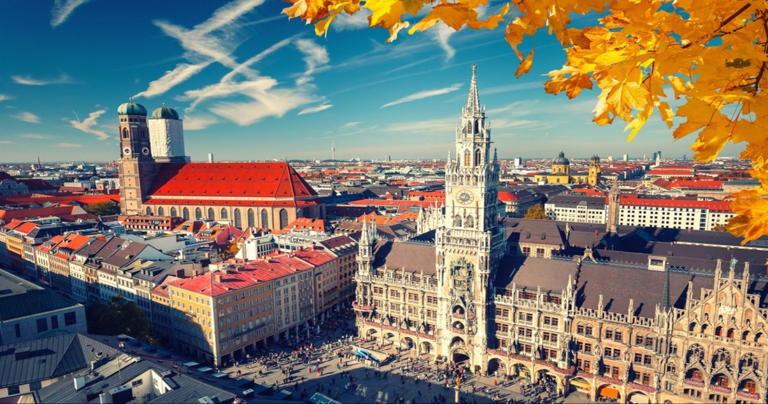
- Newsletters
- Account Activating this button will toggle the display of additional content Account Sign out
My Secret to Weeks of Free Lodging in Europe
I wanted to stay in apartments or houses—but i was a brand-new college grad on a budget.
This is One Thing , a column with tips on how to live.
After I graduated from college, I knew I wanted to travel for a few months, so I secured a part-time job that could be done remotely. I didn’t want to do my work shifts from a hostel bunk bed or random cafés that stayed open late. (I’d be in Europe, thanks to an EU passport, and my gig was based in the states.) Paying for Airbnbs the entire trip would eat up way too much of my paychecks. It was kismet that just as I was starting to plan my travels, my friend sent me a video about a couple traveling the world and dog-sitting along the way, using an app called Trusted Housesitters .
As an avid dog lover, I thought it was perfect. I paid a little over $100 to make an account, then started browsing housesits around the world. I adorned my profile with pictures of me and the various dogs in my life, and applied for opportunities across the ocean. Before I had even left the United States, I had three gigs set up: I’d spend about 10 days in Scotland and Wales, then three weeks in Amsterdam.
Just like when setting up drinks through a dating app, you do have to be vigilant and pay attention for red flags when talking to potential hosts. My stay in Scotland was less than ideal for many reasons—the situation could have been easily avoided if I had listened to my gut and declined that gig. (The app does do background checks, and there’s an opportunity for both sides to leave reviews, meaning you don’t go in completely unaware.) But the other dog-sits were fantastic. One experience went so well that last fall, I returned to Amsterdam to once again to dog-sit Pretzel, a lovely Maltipoo, while her parents got married and went on their honeymoon.
Although I opted for longer sits abroad, there is also the option to just watch a furry friend stateside for a weekend. (If you do go internationally, be mindful that you might potentially need a work or tourist visa.) I just checked the app, and as I’m writing this, there are opportunities available in cities that include Austin, Atlanta, and Boulder.
Of course, you have the responsibility of taking care of someone else’s dog—you need to do some planning and can’t just leave the pet alone all day, and the owners don’t pay you. But the free accommodations feel like a fair exchange to me. I also love that many of the dog-sit locations are in more residential areas, so you’re able to experience local life in whatever city you’re in. Plus, you get to hang with a cute dog. What could be better?
- International edition
- Australia edition
- Europe edition

Autism makes travel a challenge. Here’s how I learned to cope
Busy places and unexpected events used to send me into meltdown on holiday. An autism diagnosis helped me to adapt my plans and rediscover the joy of travelling
W andering hand-in-hand through the medieval streets of Bologna, my boyfriend and I were in awe of the sweeping porticoes and distinctive rust-red brickwork of the city. It was our first holiday together. We’d wanted to find somewhere beyond the obvious that would marry our respective interests in architecture and history. Bologna was the perfect fit.
We admired the Church of Santa Maria della Vita , with its imposing baroque interior, lavishly decorated in colourful frescoes and marble carvings. We caught a little red and blue express train up into the hills to the Santuario della Madonna di San Luca , and climbed the bell tower of the Basilica di San Petronio for panoramic views across the city.
But after one particularly long, hot day on our feet, with our stomachs clamouring to be fed, my mood began to shift. With the setting of the sun came the rising of my rage, as we struggled to agree on where we wanted to eat. In a city nicknamed La Grassa (“the fat one”), we weren’t lacking in options; in fact, it was the sheer number of well-reviewed eateries that was overwhelming.

Eventually we decided on pizza, and my boyfriend anxiously led us through sun-dappled alleyways, seeking out a little hole-in-the-wall spot with stellar reviews on Google. Looking back now, I’m ashamed of my reaction once we arrived. Instead of excitedly tucking into the steaming, cheese-drenched deliciousness before me, I burst into tears, refusing to order. And why?
Because they were slices .
In my mind, getting pizza meant that we’d be presented with a whole pizza. The idea of just grabbing a slice or two felt abhorrently wrong. It truly felt to me, in that moment, like I was being asked to do the impossible. Instead, we had to find a standard bistro and get me the right kind of pizza. Scrolling through photographs from that trip for this article, I find a snapshot of my boyfriend opposite me at the table, looking as if he’d just (barely) survived the fury of the Visigoths during the sacking of Rome.
It wasn’t until three years later – in spring 2020, when I was diagnosed as autistic – that this fragment of my life story, and many others like it, finally began to make sense.
B eing autistic means that life is a challenge, every day, in myriad tiny ways most others cannot see. Autistic people often grapple with sensory, social and communication challenges that manifest differently in each of us. As a toddler, for instance, I couldn’t stand the touch of grass on my skin. My parents could pop me down on a blanket by our tent during camping trips, safe in the knowledge that I wouldn’t stray. The same went for sand – putting me down to build a sandcastle on the beach only led to banshee-esque wailing until someone picked me up. When I got older, I preferred to stay by the tent and read my books than risk the chaotic din of the campsite playground. I’ve also always found it difficult when confronted with the unexpected. That could be anything, from a last-minute change of plans to something simply not turning out the way I’d pictured it in my head.
Relentlessly busy places are a terrifying prospect for those of us predisposed to sensory overwhelm. The best way I can describe how I experience this sensation is to ask you to imagine that the whole world has climbed into your chest. It then sits there, heavy and loud and bright, thrumming with energy, too much energy, more than any one person could hold within themselves. And yet, that’s what’s expected of us, day in, day out.
Fortunately, societal awareness of how autistic people interact with public spaces has grown over the past few years, thanks to the rise of lived experiences shared on platforms such as TikTok and Instagram. The thriving autistic creator communities online were a lifebelt for me when I was first diagnosed, providing both insights into my own behaviour and suggesting coping mechanisms.
Initiatives such as the sunflower lanyard scheme are also having a real impact on how employees in train stations, airports, bus terminals and so on are trained in making these places more accessible to those with hidden disabilities. What I have learned is that many challenges can be overcome with sufficient planning and support from those around me. Through much trial and error over the last four years, I’m making real progress towards learning how to adapt my holiday plans to accommodate my needs. I now have a self-made kit for mitigating sensory overwhelm that I take with me whenever I travel: sunglasses, noise-isolating earplugs, noise-cancelling headphones, a fidget toy or two and a safe food to snack on (a favourite cereal bar, for example). Having avoided meltdowns by using these items in the past, I now can’t imagine travelling without them.
The process of writing my book, The Autistic Guide to Adventure , has provided many useful insights too. Designed to introduce younger readers from the autistic community to a variety of different outdoor activities, the book suggests how to best approach them from sensory, social and communication perspectives.
Take kayaking, for instance, a popular holiday activity in the UK thanks to our miles upon miles of public waterways and easily accessible coastline. I’ve kayaked on family holidays since a young age. Before I knew I was autistic, however, I’d never have thought to give myself extra time to get used to sitting in a new boat in a new location, testing the feel of a buoyancy aid or holding the paddle properly. Yet something as simple as taking the opportunity to do that – on dry land, before the kayak even gets near the water – can make a real difference to how comfortable and confident an autistic person might feel about trying this new activity. Most activity providers are understanding and would be happy to facilitate this, if you let them know in advance.
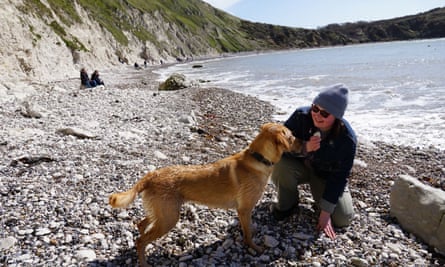
Other simple adaptations to recreational activities include using walking poles for all levels of hiking – not only on mountains – and bringing an inflatable for wild swimming. These help to maintain balance, something that many autistic people find hard because of difficulties regulating their vestibular system.
after newsletter promotion
There will never be one single trip or destination that’s perfect for every autistic person, because our individual strengths, struggles and support needs are so different. But if we each plan ahead and choose what to do or where to go based on our known sensory sensitivities, communication preferences and social battery life, every trip has the potential to be perfect just for us .
M ost recently, my boyfriend and I took a much-anticipated trip to the Arctic Circle, visiting Tromsø. There’s a key difference between this holiday and our stay in Bologna five years earlier: the weather. It’s common for autistic people to have strong preferences when it comes to temperature – in my case, I’ll always choose cold over hot.
That’s why Tromsø in December was a sensory dream for me. Plunged into polar night, the light was never brighter than a muted lilac haze for a few short hours around midday. The temperature was consistently below freezing; the snow lay piled in marshmallow-soft heaps along pavements and roadsides. It was as far a cry from the lively streets and humid air of summer in Bologna as you could get, and it was perfect.
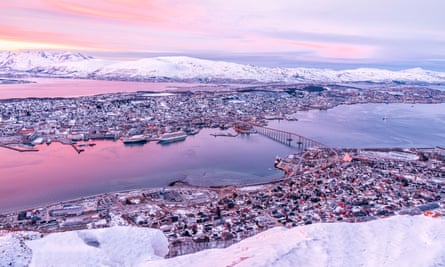
Learning from previous experience, we planned exactly where we wanted to eat during the trip. We spent several cheerful mealtimes huddled by the fire pit at Raketten Bar and enjoyed Pølse , a hotdog stand in a sunshine-yellow kiosk dating back to 1911.
Autistic people often prefer the company of animals to other humans, but it’s not something I’d ever thought to factor into my travel plans before. In Tromsø, we ended up spending three out of our five days on activities involving animals: huskies, whales and reindeer. It was, without a doubt, one of the best decisions we could have made.
The joy of losing myself in a frenzied pack of newfound canine friends radiates from my face in photos from the day we went husky sledding.
Given that travel is something I treasure, it’s a relief to realise that my ability to do it is not limited by being neurodivergent. On the contrary, I truly believe some of my many travel experiences have been – and will continue to be – enhanced by the fact that my brain works on a different wavelength. When I close my eyes, I can still see the play of lavender light on the snow-capped mountains surrounding Tromsø. I’m immediately transported back to a place that felt like home to my soul, soothed without having to take even a step outside.
The Autistic Guide to Adventure by Allie Mason is published by Jessica Kingsley (£14.99 ). To support the Guardian and Observer, buy a copy at guardianbookshop.com . Delivery charges may apply
- Europe holidays
- Travel writing
Most viewed
‘Put off’: Many UK adults unwilling to travel to Europe under new Entry/Exit Scheme
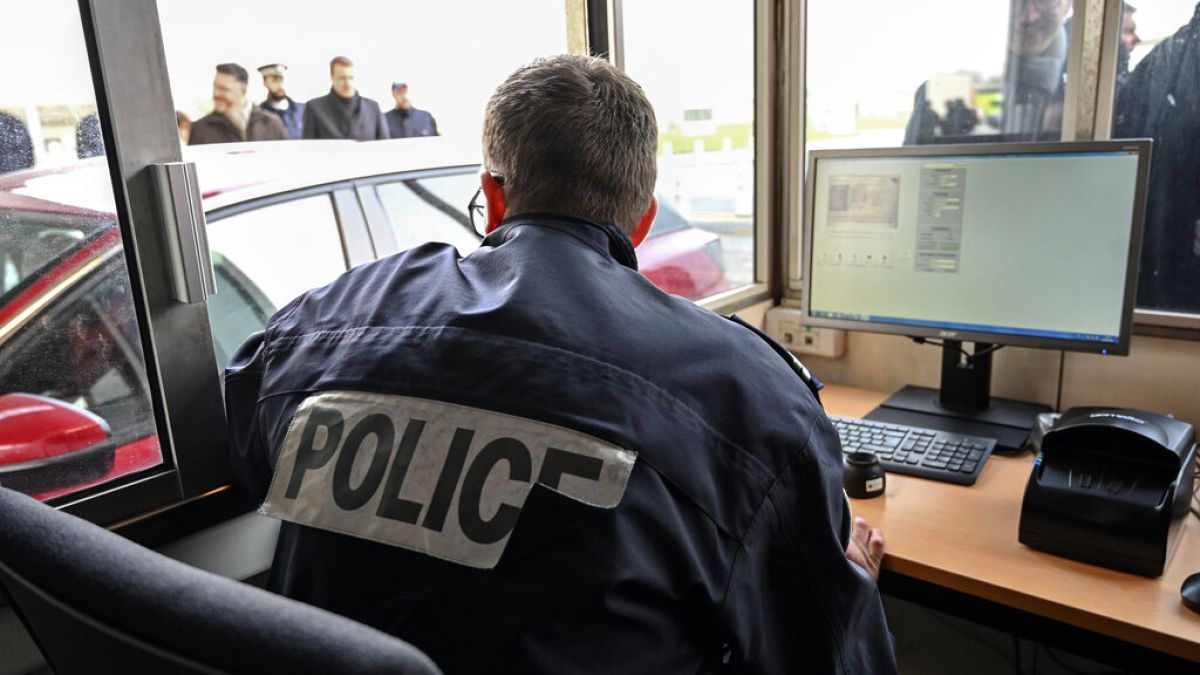
A significant chunk of UK adults say they have no idea about how the EU’s new Entry/Exit System (EES) will work when it kicks off in October.
Almost two thirds of UK adults are unaware of the EU’s new Entry/Exit System (EES) which is scheduled to launch later this year.
That staggering statistic comes from findings by Co-op Insurance. The research has also found that more than one in five UK adults admit they would be ‘put off’ travelling to Europe as a result of the new system.
EES will require fingerprints and facial scans to be taken from UK travellers heading to EU countries.
It’s set to begin in October, just six months away, and 66 per cent of people have no idea about its implementation, while 22 per cent will likely refuse to travel to the continent entirely.
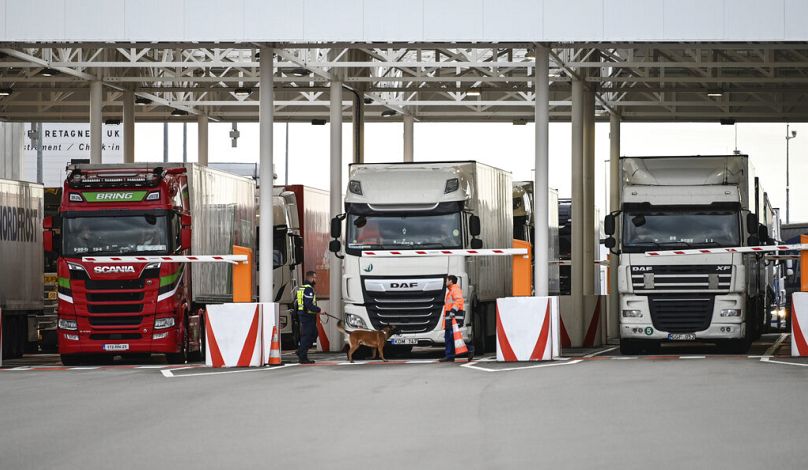
What will the EU’s new Entry/Exit System (EES) look like in practise?
The new system will see what is effectively the introduction of a ‘digital border’ between both EU/Schengen Area countries and those outside.
It’s being brought in to replace the current practice of the Border Force manually stamping passports.
Instead, passengers will have to agree to fingerprint and facial image capture the first time they arrive on the continent following the launch of EES .
After that one off process, holidaymakers will find that subsequent trips will involve quicker processing, with data captured remaining in the system for three years.
When that period comes to an end, data will be erased from the system. Each new visit to mainland Europe will come with the facial and fingerprint image capturing and trigger another three years of validity, until the expiry date of an individual’s passport.
- Long queues and scams: Will the new EU entry system cause border chaos?
- Ranked: Which country has the world's most powerful passport?
Will travellers be put off by the EES?
It’s the image capturing that seems to be putting people off the process.
The Co-op found that just under half (46 per cent) said they didn’t like the idea of their details being captured and remaining in the system for up to three years.
Almost two fifths (38 per cent) said the potential for ‘long delays at border control’ would make them think twice before heading on a trip.
The head of Travel at Co-op Insurance , Graham Ward-Lush, says all travellers must be aware of the changes, regardless of their feelings about the situation.
“Going on holiday is a great way for people to take a break and unwind. However, as our research shows, there can be an added stress that comes with travelling to your destination, as travellers navigate the fast pace that comes with being in an airport and following the various processes in place,” he wrote in a press release.
“From our data, we can see that 2024 is already shaping up to be a big year for travel and so we want to make sure holidaymakers are well prepared so that they can ensure their trips are stress free,” he added.
Where else is the scheme causing problems for the travel industry?
The confusion surrounding the much delayed EES is not an isolated incident.
This week, it’s been revealed that a new app designed to alleviate disruption for British travellers going across the Channel will not be ready in time for the new EU border scheme.
The app was to help passengers - including those using Eurostar - leaving the UK avoid long queues, by allowing passengers to do their image creation remotely - but the train company has warned it won’t be ready in time for October.
Speaking to the BBC, Eurostar boss Gwendoline Cazenave said the rail firm was having to prepare manual checks at stations as the app will not be complete.
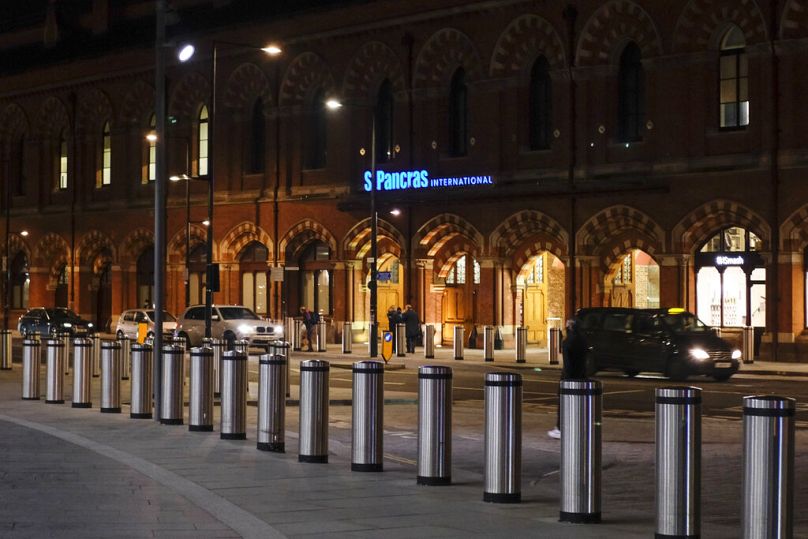
Experts say the process of initial registration will cause long queues at the Port of Dover, Eurotunnel terminals and Eurostar hubs from October.
Under the current system, French border police carry out checks at these places as people leave the UK.
Due to the delay of the EES app, though, Cazenave said Eurostar has begun installing more than 49 kiosks at London St Pancras, the station which the train service runs from.
“It’s all about preparing the customer flow in the station, and to have as many staff as possible, as [much] space for the customers to cross the border in a seamless way,” she told the BBC.
The EU says it has to launch EES as planned in October even though the app will not be up and running.
You might also like
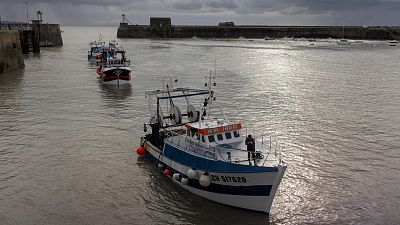
France protests UK’s post-Brexit bottom trawling ban

New post-Brexit border fees could drive up UK food prices
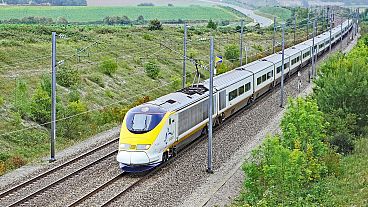
Inside Eurostar’s struggle with Brexit, strikes and competitors

IMAGES
VIDEO
COMMENTS
Europe Road Trip Planner. We have traveled every single one of these European roads in and on a variety of vehicles! Whether you ride a motorbike, drive Europe by car or you're traveling in a motorhome or RV, you'll find some of the best Europe road trip ideas here.. If you're on a flying visit and or want a 3 month Europe road trip, we have the best Europe road trip itineraries for you.
When deciding between rental and personal vehicles, assess the pros and cons of each option. 1. Car rental versus bringing your vehicle. When planning a Europe road trip, one of the first decisions is renting or bringing your vehicle. Both options have pros and cons, so carefully consider what will work best for you.
Below are my top tips for driving safely, and enjoyably, on European roads. (I've collected my tips for navigating Europe by road in a separate article.) Passing. When you pass other drivers, be bold but careful. On winding, narrow roads, the slower car ahead of you may use turn-signal sign language to indicate when it's OK to pass.
Epic Europe road trip to 47 countries. Almost 27,000km of roads. Approximately 364h of driving time without stops. Over $1,600 in fuel spent. 47 countries, including 25 European Union members, Kosovo (which we count as an independent country despite the lack of recognition by the UN), the 3 countries in the Caucasus, Turkey and Russia, both of which are partially in Europe and mostly in Asia.
This travel guide to the best European road trips is already giant, so I'll keep these brief, but here are a few essential tips for planning a European road trip! Shop around for your rental car. The best company to rent a car for your road trip in Europe from will likely vary dramatically depending on where and when you're traveling.
This guide covers all the basics on how to road trip around Europe. While it is focused on Europe, it will be useful for anyone planning to live in their car or go on an extended road trip. Choosing your car. Packing and preparing the car. Checking the rules of the road. Planning your route.
Read Our Taxi vs. Car Rental Comparison. To learn more about our company or request more information about renting a vehicle for your dream European road trip, call toll-free at 1-888-223-5555. Our representatives specialize in finding travelers the perfect vehicle at the guaranteed best rate and are available 24/7 in Portland, Maine.
Car Rentals vs. Leases. Look into leasing a car if you are traveling for more than two weeks. European Value Added Tax is extremely high on a new vehicle but much lower for those that are slightly ...
A European health card isn't a substitute for travel insurance, but it does entitle you to free or reduced-cost emergency care in some instances. To find out more about what they cover, visit the NHS advice page. Also remember, you need to call 112 to contact the emergency services in any EU country. 20. Make sure your car is in good running order
Here are 9 of the best road trips in Europe. 1. From the glamour of Paris to the glorious grit of Berlin (France to Germany) 2. Surf and sun in the Basque Country and beyond. 3. The Arctic fjords from Bergen to Trondheim (Norway) 4. The unexplored east: Bucharest to Vienna (Romania to Austria)
Travelling Europe by car: tips and things to consider. In the last three months, we've travelled over 5,000 miles across nine countries in Europe by car. The journey has taken us from the canal-lined streets of Amsterdam and the beaches of the Algarve to Bavarian castles, Slovenian lakes and finally, to Prague. Here's a look at our ...
The minimum age to rent a car in Europe is 18, and renters must have passed a driving test to obtain a full driving licence. Plan carefully and rent a car for only as long as you need it, to avoid early return penalties. If you're on a budget, avoid hefty one-way drop-off charges and plan a circular itinerary.
Check your passport is in date and has at least 6 months left to run before expiry. Check your vehicle insurance covers Europe and for how long. Make sure it is fully comprehensive (some providers only offer 3rd party cover in Europe.) Check your breakdown cover covers Europe. If not, consider extending it.
Documents you need for a Europe border crossing by car. Firstly, let's confirm all the documentation you should carry with you when driving across borders in Europe. You may also be required to buy a vignette at the border. This covers the cost of using toll roads and is a substitute for pay-as-you-go toll roads.
Whether hiring a car or driving your own, it's likely that you will need an Insurance Green Card and an International Driving Permit. Only drivers with a UK paper licence will need an IDP to drive in Austria, Estonia, Germany, Greece, Latvia, Lithuania, Norway and Poland. You will also have to have at least six months on your passport ...
Find out everything you need to know about driving abroad here. We explain which documents you need to drive in Europe, local laws in different countries and advice for hiring a car abroad.. From 2 August 2021, a Green Card (or International Motor Insurance Card) is no longer required for travel in the European Economic Area, which includes all the European Union countries plus Iceland ...
getting a driving licence in the EU. car insurance cover and validity in the EU. driving abroad with foreign plates. Last checked: 05/10/2023. While travelling by car in the EU, be aware of the different traffic rules and make sure you have a valid driving licence and insurance. Also check your rights when hiring a car.
Check if you need an emissions sticker to avoid a £70+ fine. Depending on where you're planning to drive in Europe, you may need to display an emissions sticker or badge on your windscreen. Several countries on the Continent require you to do this to drive through certain cities at certain times, to curb pollution.
A rental car will cost about 300€ for two weeks — add about 200€ for gas and tolls. If you have four people, then the cost per person is about 125€. A normal one-way ticket between major cities in France will run about 50€-90€, so a car will be a cheaper option if you visit more than a few places.
From 2 August 2021, a Green Card (or International Motor Insurance Card) is no longer required for travel in the European Economic Area, which includes all the European Union countries plus Iceland, Liechtenstein and Norway. You also don't need a Green Card for Andorra, Bosnia and Herzegovina, Serbia and Switzerland.
All UK vehicle insurance provides the minimum third party cover to drive in the EU (including Ireland). You do not need to carry a green card when you drive in the EU (including Ireland), Andorra ...
8. Accident & Breakdown Information. The European Emergency Phone Number is 112 (similar to 911 in the United States). However if your car simply breaks down, and no one is injured, its probably better to call your car rental company's own emergency roadside assistance number located on the rental agreement.
Top tips for driving in Europe. Most European countries require foreign drivers to carry certain documents with them, including their passport, driving licence, the car's V5 registration ...
Larger cars are more common in the USA, while compact vehicles are more popular in European countries. SUVs are slowly taking over sedans in the United States, including hybrid and electric versions.
This is One Thing, a column with tips on how to live.. After I graduated from college, I knew I wanted to travel for a few months, so I secured a part-time job that could be done remotely. I didn ...
Sanctions on individuals consist of travel bans and asset freezes. Sanctions on entities consist of asset freezes. Travel bans prevent listed individuals from entering or transiting through EU territory by land, air or sea. Asset freezes mean that all accounts belonging to the listed persons and entities in EU banks are frozen. It is also ...
An autism diagnosis helped me to adapt my plans and rediscover the joy of travelling Allie Mason Mon 22 Apr 2024 02.00 EDT Last modified on Tue 23 Apr 2024 06.14 EDT
The number of new battery electric cars sold in the European Union rose almost 4% in the first quarter of this year compared with the same period in 2023, according to the European Automobile ...
Almost two thirds of UK adults are unaware of the EU's new Entry/Exit System (EES) which is scheduled to launch later this year. That staggering statistic comes from findings by Co-op Insurance.
On Sheikh Zayed Road, a 16-lane thoroughfare in Dubai lined with gleaming glass skyscrapers, motorists reported near-complete blockage in some areas, with cars going against the traffic to escape ...